Ray Kurzweil
description: American author, scientist, inventor and futurist
247 results
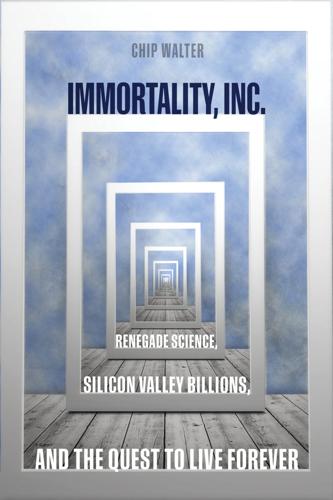
Immortality, Inc.
by
Chip Walter
Published 7 Jan 2020
These successes, together with the inception of Singularity University (created with Ray Kurzweil) in 2008, cemented Diamandis’s reputation as a mover and shaker in Silicon Valley. Unlike Diamandis, Bob Hariri was a newcomer to Silicon Valley, although he had known the XPRIZE founder for a decade. Hariri was also a great lover of aviation and an interesting character: big and burly, yet in no way gruff. There could be a boisterous side to him, but when he was talking business, he grew focused and quiet. He had grown up in Queens, raised with his older brother by a single mother, not far from where Ray Kurzweil had lived and wandered during his youth in Jackson Heights.
…
Finally, thank you to all of the people I harangued and pestered and tracked down for the interviews needed to write this book. These include many hours of meetings, phone calls, and emails with Ray Kurzweil, Arthur Levinson, Craig Venter, Aubrey de Grey, Robert Hariri, as well as long sessions with Bill Maris, David Botstein, Hal Barron, Cynthia Kenyon, Daphne Koller, Amalio Telenti, Riccardo Sabatini, Ken Bloom, Brad Perkins, Heather Kowalski, Max More, Natasha Vita-More, and many others. A special thanks to Aimee Markey at Calico Labs for arranging so many meetings. In the earliest days of this quest, Ray Kurzweil was especially helpful, not only in making himself available, but by providing initial access to Art Levinson and Craig Venter.
…
Housewives and science fiction writers stood chilled in Alcor’s canisters; infants and centenarians, professors, doctors, scientists, dreamers, and hardheaded businesspeople. Kim Suozzi, a 23-year-old suffering from terminal brain cancer, is among them. She had learned about cryonics when she came across the writings of Ray Kurzweil, then raised some of the money needed for her preservation through the website Reddit. She became Alcor member A-2643. Ted Williams, probably the greatest pure hitter baseball has ever seen, is also there, along with his son John Henry Williams (who, before his own death from leukemia in 2004 at age 35, fought to have his father frozen at Alcor).

Our Final Invention: Artificial Intelligence and the End of the Human Era
by
James Barrat
Published 30 Sep 2013
Also onboard at the stealth facility is Andrew Ng, former director of Stanford University’s Artificial Intelligence Lab, and a world-class roboticist. Finally, late in 2012, Google hired esteemed inventor and author Ray Kurzweil to be its director of engineering. As we’ll discuss in chapter 9, Kurzweil has a long track record of achievements in AI, and has promoted brain research as the most direct route to achieving AGI. It doesn’t take Google glasses to see that if Google employs at least two of the world’s preeminent AI scientists, and Ray Kurzweil, AGI likely ranks high among its moon-shot pursuits. Seeking a competitive advantage in the marketplace, Google X and other stealth companies may come up with AGI away from public view
…
At one end of the scale is Peter Norvig, Google’s Director of Research, who as we discussed, doesn’t care to speculate beyond saying AGI is too distant to speculate about. Meanwhile, his colleagues, led by Ray Kurzweil, are proceeding with its development. At the other end, Ben Goertzel, who, as Good did, thinks achieving AGI is merely a question of cash, says that before 2020 isn’t too soon to anticipate it. Ray Kurzweil, who’s probably the best technology prognosticator ever, predicts AGI by 2029, but doesn’t look for ASI until 2045. He acknowledges hazards but devotes his energy to advocating for the likelihood of a long snag-free journey down the digital birth canal.
…
Despite Google’s repeated demurrals through its spokespeople, who doubts that the company is developing AGI? In addition to Ray Kurzweil, Google recently hired former DARPA director Regina Dugan. Maybe researchers will wake up in time and learn to control AGI, as Ben Goertzel asserts. I believe we’ll first have horrendous accidents, and should count ourselves fortunate if we as a species survive them, chastened and reformed. Psychologically and commercially, the stage is set for a disaster. What can we do to prevent it? * * * Ray Kurzweil cites something called the Asilomar Guidelines as a precedent-setting example of how to deal with AGI.

Architects of Intelligence
by
Martin Ford
Published 16 Nov 2018
She was also featured on Fortune Magazine’s 40 under 40 and TechCrunch’s 40 Female founders who crushed it in 2016 lists. Chapter 11. RAY KURZWEIL The scenario that I have is that we will send medical nanorobots into our bloodstream. [...] These robots will also go into the brain and provide virtual and augmented reality from within the nervous system rather than from devices attached to the outside of our bodies. DIRECTOR OF ENGINEERING AT GOOGLE Ray Kurzweil is one of the world’s leading inventors, thinkers, and futurists. He has received 21 honorary doctorates, and honors from three US presidents.
…
Is there anything we should worry about in terms of these developments? RAY KURZWEIL: I’ve written more about the downsides than anyone, and this was decades before Stephen Hawking or Elon Musk were expressing their concerns. There was extensive discussion of the downsides of GNR—Genetics, Nanotechnology, and Robotics (which means AI)—in my book, The Age of Spiritual Machines, which came out in 1999 that led Bill Joy to write his famous Wired cover story in January 2000 titled, Why the Future Doesn’t Need Us. MARTIN FORD: That was based upon a quote from Ted Kaczynski, the Unabomber, wasn’t it? RAY KURZWEIL: I have a quote from him on one page that sounds like a very level-headed expression of concern, and then you turn the page, and you see that this is from the Unabomber Manifesto.
…
You agree that there won’t be a job for everyone, or maybe everyone won’t need a job, and that there’ll be some other source of income for people, like a universal basic income? RAY KURZWEIL: We assume that a job is a road to happiness. I think the key issue will be purpose and meaning. People will still compete to be able to contribute and get gratification. MARTIN FORD: But you don’t necessarily have to get paid for the thing that you get meaning from? RAY KURZWEIL: I think we will change the economic model and we are already in the process of doing that. I mean, being a student in college is considered a worthwhile thing to do.
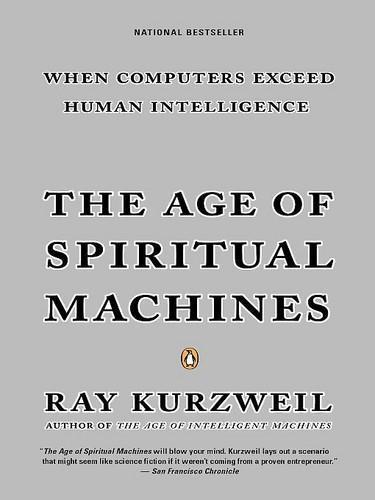
The Age of Spiritual Machines: When Computers Exceed Human Intelligence
by
Ray Kurzweil
Published 31 Dec 1998
You can download a free copy of RKCP at www.kurzweiltech.com. Following is a small sampling of poems written by Ray Kurzweil’s Cybernetic Poet after it had “read” poems by several famous poets, as well as lesser-known contemporary poets. Poems by Ray Kurzweil’s Cybernetic Poet PAGE A haiku written by Ray Kurzweil’s Cybernetic Poet after reading poems by Wendy Dennis Sashay down the page through the lioness nestled in my soul. IMAGINE NOW AND SING A poem written by Ray Kurzweil’s Cybernetic Poet after reading poems by Wendy Dennis and Ray Kurzweil and love poems by various authors Imagine now and sing, creating myths forming jewels from the falling snow.
…
SITES RELEVANT TO THE BOOK Web site for the book The Age of Spiritual Machines: When Computers Exceed Human Intelligence by Ray Kurzweil: <http://www.penguinputnam.com/kurzweil> To e-mail the author: raymond@kurzweiltech.com To download a copy of Ray Kurzweil’s Cybernetic Poet: < http://wwwkurzweiltech.com> This book’s publisher, Viking: <http://www.penguinputnam.com> For publications of Ray Kurzweil: Go to <http://www.kurzweiltech.com> or <http://www.kurzweiledu.com> and then select “Publications” WEB SITES FOR COMPANIES FOUNDED BY RAY KURZWEIL Kurzweil Educational Systems, Inc. (creator of print-to-speech reading systems for persons with reading disabilities and visual impairment): <http://www.kurzweiledu.com> Kurzweil Technologies, Inc.
…
IMAGINE NOW AND SING A poem written by Ray Kurzweil’s Cybernetic Poet after reading poems by Wendy Dennis and Ray Kurzweil and love poems by various authors Imagine now and sing, creating myths forming jewels from the falling snow. SOUL A haiku written by Ray Kurzweil’s Cybernetic Poet after reading poems by John Keats and Wendy Dennis You broke my soul the juice of eternity, the spirit of my lips. I THINK I’LL CRASH A poem written by Ray Kurzweil’s Cybernetic Poet after reading poems by Ray Kurzweil, Robert Frost, and Wendy Dennis I think I’ll crash. Just for myself with God peace on a curious sound for myself in my heart? And life is weeping From a bleeding heart of boughs bending such paths of them, of boughs bending such paths of breeze knows we’ve been there THE STIFLING STUFFY A haiku written by Ray Kurzweil’s Cybernetic Poet after reading poems by Patricia Camarena Rose and Wendy Dennis The stifling stuffy Catholic schoolroom, where I cannot be real.

The Singularity Is Near: When Humans Transcend Biology
by
Ray Kurzweil
Published 14 Jul 2005
articleID=000AF072-4891-1F0A-97AE80A84189EEDF. Chapter Seven: Ich bin ein Singularitarian 1. In Jay W. Richards et al., Are We Spiritual Machines? Ray Kurzweil vs. the Critics of Strong A.I. (Seattle: Discovery Institute, 2002), introduction, http://www.KurzweilAI.net/meme/frame.html?main=/articles/art0502.html. 2. Ray Kurzweil and Terry Grossman, M.D., Fantastic Voyage: Live Long Enough to Live Forever (New York: Rodale Books, 2004). 3. Ibid. 4. Ibid. 5. Max More and Ray Kurzweil, "Max More and Ray Kurzweil on the Singularity," February 26, 2002, http://www.KurzweilAI.net/articles/art0408.html. 6. Ibid. 7. Ibid. 8. Arthur Miller, After the Fall (New York: Viking, 1964). 9.
…
Journal of Evolution and Technology 1 (1998). 215. Ray Kurzweil, The Age of Spiritual Machines (New York: Viking, 1999), p. 156. 216. See chapter 2, notes 22 and 23, on the International Technology Roadmap for Semiconductors. 217. "The First Turing Test," http://www.loebner.net/Prizef/loebner-prize.html. 218. Douglas R. Hofstadter, "A Coffeehouse Conversation on the Turing Test," May 1981, included in Ray Kurzweil, The Age of Intelligent Machines (Cambridge, Mass.: MIT Press, 1990), pp. 80–102, http://www.KurzweilAI.net/meme/frame.html?main=/articles/art0318.html. 219. Ray Kurzweil, "Why I Think I Will Win," and Mitch Kapor, "Why I Think I Will Win," rules: http://www.KurzweilAI.net/meme/frame.html?
…
An inductee into the National Inventors Hall of Fame and recipient of the National Medal of Technology, the Lemelson-MIT Prize (the world's largest award for innovation), thirteen honorary doctorates, and awards from three U.S. presidents, he is the author of four previous books: Fantastic Voyage: Live Long Enough to Live Forever (coauthored with Terry Grossman, M.D.), The Age of Spiritual Machines, The 10% Solution for a Healthy Life, and The Age of Intelligent Machines. The Singularity Is Near ALSO BY RAY KURZWEIL The Age of Intelligent Machines The 10% Solution for a Healthy Life The Age of Spiritual Machines: When Computers Exceeds Human Intelligence Fantastic Voyage: Live Long Enough To Live Forever (with Terry Grossman, M.D.) RAY KURZWEIL The Singularity Is Near WHEN HUMANS TRANSCEND BIOLOGY VIKING VIKING Published by the Penguin Group Penguin Group (USA) Inc., 375 Hudson Street, New York, New York 10014, U.S.A. l Penguin Group (Canada), 10 Alcorn Avenue, Toronto, Ontario, Canada M4V 3B2 (a division of Pearson Penguin Canada Inc.) l Penguin Books Ltd, 80 Strand, London WC2R 0RL, England l Penguin Ireland, 25 St.

100 Plus: How the Coming Age of Longevity Will Change Everything, From Careers and Relationships to Family And
by
Sonia Arrison
Published 22 Aug 2011
I do not consider my involvement with these organizations to be religious, but I have met many people in the movement whose actions fit within Laderman’s definition. 74 E-mail interview with Calvin Mercer, March 22, 2009. 75 Ray Kurzweil, The Singularity Is Near (New York: Penguin, 2005), 374. 76 Ibid., 374–375. 77 Ibid., 371. 78 Ibid., 7. 79 Ibid., 5. 80 Ibid., 372. 81 Ibid., 375. 82 Ray Kurzweil and Terry Grossman, Transcend: Nine Steps to Living Well Forever (New York: Rodale Books, 2009). 83 Kurzweil, The Singularity Is Near, 390. 84 Memebox, “Ray Kurzweil: The Singularity Is Not a Religion,” October 27, 2008, www.youtube.com/watch?v=CLy0tTfw8i0&feature=player_embedded. 85 Kurzweil, The Singularity Is Near, 370. 86 Ibid., 389.
…
Martin’s Press, 2007), 10. 11 Aubrey de Grey, The Mitochondrial Free Radical Theory of Aging (Austin, TX: Landes Bioscience, November 2003); Michael Finkel, “Life Begins at 140,” GQ, May 2010. 12 Interview with Aubrey de Grey, November 20, 2010. 13 Finkel, “Life Begins at 140.” 14 Ben Goertzel, “AI Against Aging: Accelerating the Quest for Longevity via Intelligent Software,” Biomind LLC, www.biomind.com/AI_Against_Aging.pdf. 15 Ibid. 16 Ibid. 17 See Ray Kurzweil’s biography, www.singularity.com/fullbiography.html. 18 Ray Kurzweil, The Singularity Is Near (New York: Penguin, 2005), 323. 19 Ray Kurzweil and Terry Grossman, Fantastic Voyage: Live Long Enough to Live Forever (New York: Plume, 2005). They also published a similar book in 2009 titled Transcend: Nine Steps to Living Well Forever (New York: Rodale Books, 2009).
…
“The human brain simply was not evolved for the integrative analysis of a massive number of complexly-interrelated, highdimensional biological datasets,” he writes.15 “In the short term, the most feasible path to working around this problem is to supplement human biological scientists with increasingly advanced AI software, gradually moving toward the goal of an AGI (Artificial General Intelligence) bioscientist.”16 Just as Google is a form of artificial intelligence that allows for fast searching of the Internet, a software program that could “read” biological studies and help to sort the data for human scientists would make the task of finding repair mechanisms for the human body that much easier. Another proponent of this idea is maven Ray Kurzweil. In 1999 President Bill Clinton awarded Ray Kurzweil the National Medal of Technology, the highest honor for technological achievement bestowed by the president of the United States on America’s leading innovators. Microsoft cofounder Bill Gates has called Kurzweil “the best person I know at predicting the future of artificial intelligence.”
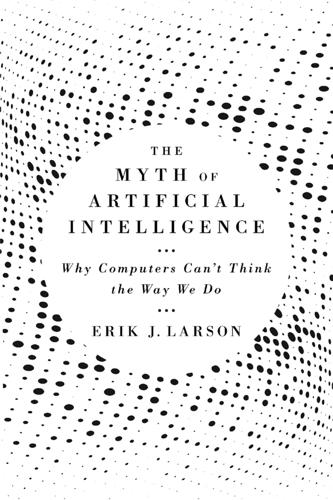
The Myth of Artificial Intelligence: Why Computers Can't Think the Way We Do
by
Erik J. Larson
Published 5 Apr 2021
Vernor Vinge, “The Coming Technological Singularity: How to Survive in the Post-Human Era,” in Vision-21: Interdisciplinary Science and Engineering in the Era of Cyberspace, ed. G. A. Landis, NASA Publication CP-10129, 1993, 11–22. 5. Ray Kurzweil, The Singularity is Near: When Humans Transcend Biology (New York: Penguin Group, 2005). 6. Ray Kurzweil, “The Singularity: A Talk with Ray Kurzweil,” interview with The Edge, introduction by John Brockman, March 24, 2001, https://www.edge.org/conversation/ray_kurzweil-the-singularity. 7. Hubert L Dreyfus, What Computers Still Can’t Do: A Critique of Artificial Reason (Cambridge, MA: MIT Press, 1992), ix. Chapter 5: Natural Language Understanding 1.
…
Chapter 17: Neocortical Theories of Human Intelligence 1. Jeff Hawkins, On Intelligence: How a New Understanding of the Brain Will Lead to the Creation of Truly Intelligent Machines (New York: St. Martin’s Griffin, 2005). 2. Ray Kurzweil, How to Create a Mind: The Secret of Human Thought Revealed (New York: Penguin Books, 2013), 35. 3. Gary Marcus, “Ray Kurzweil’s Dubious New Theory of Mind,” New Yorker, November 15, 2012. 4. Ibid. 5. For a general description, see Ferris Jabr, “Memory May be Built with Standard Building Blocks,” New Scientist, March 17, 2011. 6. Henry Markram and Rodrigo Perin, “Innate Neural Assemblies for Lego Memory,” Frontiers in Neural Circuits 5 (2011): 6. 7.
…
Yet the possibilities for future AI systems are limited by what we currently know about the nature of intelligence, whether we like it or not. And here we should say it directly: all evidence suggests that human and machine intelligence are radically different. The myth of AI insists that the differences are only temporary, and that more powerful systems will eventually erase them. Futurists like Ray Kurzweil and philosopher Nick Bostrom, prominent purveyors of the myth, talk not only as if human-level AI were inevitable, but as if, soon after its arrival, superintelligent machines would leave us far behind. This book explains two important aspects of the AI myth, one scientific and one cultural. The scientific part of the myth assumes that we need only keep “chipping away” at the challenge of general intelligence by making progress on narrow feats of intelligence, like playing games or recognizing images.

More Everything Forever: AI Overlords, Space Empires, and Silicon Valley's Crusade to Control the Fate of Humanity
by
Adam Becker
Published 14 Jun 2025
CHAPTER 2 1 Kushner, “When Humans and Machines Merge.” 2 “Futurist Ray Kurzweil Says He Can Bring His Dead Father Back to Life Through a Computer Avatar,” ABC News, August 9, 2011, https://abcnews.go.com/Technology/futurist-ray-kurzweil-bring-dead-father-back-life/story?id=14267712. 3 Peter Kirn, “That Time in 1965 When a Teen Ray Kurzweil Made a Computer Compose Music and Met LBJ,” CDM, March 3, 2020, https://cdm.link/2020/03/ray-kurzweil-ai-music-1965/; “Raymond Kurzweil,” Lemelson-MIT, accessed August 31, 2024, https://lemelson.mit.edu/resources/raymond-kurzweil; interview with Ray Kurzweil conducted by Dag Spicer on behalf of the Computer History Museum, July 13, 2009, Mountain View, CA, CHM Reference number X5461.2010, https://archive.computerhistory.org/resources/access/text/2013/05/102702108-05-01-acc.pdf. 4 “Fredric Kurzweil, Music Educator, 57,” New York Times, August 13, 1970, https://timesmachine.nytimes.com/timesmachine/1970/08/13/90616871.html. 5 Kushner, “When Humans and Machines Merge.” 6 Ray Kurzweil, The Age of Intelligent Machines (Cambridge, MA: MIT Press, 1990), 133. 7 AP, “Gates: Get Ready for Chip Implants,” CNN, July 5, 2005, archived July 8, 2005, at the Wayback Machine, https://web.archive.org/web/20050708012222/http://edition.cnn.com/2005/TECH/07/04/gates.implants.ap/. 8 Ray Kurzweil, How My Predictions Are Faring, October 2010, www.thekurzweillibrary.com/images/How-My-Predictions-Are-Faring.pdf.
…
id=14267712. 3 Peter Kirn, “That Time in 1965 When a Teen Ray Kurzweil Made a Computer Compose Music and Met LBJ,” CDM, March 3, 2020, https://cdm.link/2020/03/ray-kurzweil-ai-music-1965/; “Raymond Kurzweil,” Lemelson-MIT, accessed August 31, 2024, https://lemelson.mit.edu/resources/raymond-kurzweil; interview with Ray Kurzweil conducted by Dag Spicer on behalf of the Computer History Museum, July 13, 2009, Mountain View, CA, CHM Reference number X5461.2010, https://archive.computerhistory.org/resources/access/text/2013/05/102702108-05-01-acc.pdf. 4 “Fredric Kurzweil, Music Educator, 57,” New York Times, August 13, 1970, https://timesmachine.nytimes.com/timesmachine/1970/08/13/90616871.html. 5 Kushner, “When Humans and Machines Merge.” 6 Ray Kurzweil, The Age of Intelligent Machines (Cambridge, MA: MIT Press, 1990), 133. 7 AP, “Gates: Get Ready for Chip Implants,” CNN, July 5, 2005, archived July 8, 2005, at the Wayback Machine, https://web.archive.org/web/20050708012222/http://edition.cnn.com/2005/TECH/07/04/gates.implants.ap/. 8 Ray Kurzweil, How My Predictions Are Faring, October 2010, www.thekurzweillibrary.com/images/How-My-Predictions-Are-Faring.pdf. For some independent estimates, see Alex Knapp, “Ray Kurzweil’s Predictions for 2009 Were Mostly Inaccurate,” Forbes, June 2, 2013, www.forbes.com/sites/alexknapp/2012/03/20/ray-kurzweils-predictions-for-2009-were-mostly-inaccurate/; Daniel Lyons, “I, Robot,” Newsweek, May 16, 2009, archived April 13, 2010, at the Wayback Machine, https://web.archive.org/web/20100413081045/http://www.newsweek.com/id/197812; Dan Luu, “Futurist Prediction Methods and Accuracy,” September 2022, https://danluu.com/futurist-predictions/. 9 This specific quote comes from Kurzweil’s 2024 South by Southwest interview: Ray Kurzweil, “Featured Session: The Singularity Is Nearer” (South by Southwest, Austin, TX, March 10, 2024), https://schedule.sxsw.com/2024/events/PP1143806.
…
The dedication to Campbell is at the top of the page. 58 Asimov, I, Robot, 271 (emphasis his). 59 Kurzweil, Singularity Is Near, 14. 60 NASA, “NASA Ames Becomes Home to Newly Launched Singularity University,” news release, February 3, 2009, www.nasa.gov/news-release/nasa-ames-becomes-home-to-newly-launched-singularity-university/; Nokia Research Center, “Nokia Supports Singularity University as Fifth Corporate Founder,” news release, archived January 27, 2013, at the Wayback Machine, https://web.archive.org/web/20130127224419/http://research.nokia.com/news/11357. 61 David J. Hill, “Exclusive Interview: Ray Kurzweil Discusses His First Two Months at Google,” Singularity Hub, March 19, 2013, https://singularityhub.com/2013/03/19/exclusive-interview-ray-kurzweil-discusses-his-first-two-months-at-google/. 62 Jaron Lanier, “The First Church of Robotics,” New York Times, August 9, 2010, www.nytimes.com/2010/08/09/opinion/09lanier.html. 63 “The Singularity Is Nearer: When We Merge with AI,” Amazon, accessed June 13, 2024, www.amazon.com/Singularity-Nearer-Ray-Kurzweil-ebook/dp/B08Y6FYJVY. 64 Dylan Matthews, “This Oxford Professor Thinks Artificial Intelligence Will Destroy Us All,” Vox, August 19, 2014, www.vox.com/2014/8/19/6031367/oxford-nick-bostrom-artificial-intelligence-superintelligence. 65 David J.

The Singularity Is Nearer: When We Merge with AI
by
Ray Kurzweil
Published 25 Jun 2024
The Turing test and other assessments can reveal much about what it means to be human in a general way, but the technologies of the Singularity also compel us to ask what it means to be a particular human. Where does Ray Kurzweil fit into all this? Now, you may not care all that much about Ray Kurzweil; you care about yourself, so you can pose the same question about your own identity. But for me, why is Ray Kurzweil the center of my experience? Why am I this particular person? Why wasn’t I born in 1903 or 2003? Why am I a male or even a human? There is no scientific reason why this has to be the case. When we wonder “Who am I?”
…
BACK TO NOTE REFERENCE 146 For the sources used in this graph, see note 145 above. BACK TO NOTE REFERENCE 147 For the sources used in this graph, see note 145 above. BACK TO NOTE REFERENCE 148 To watch our exchange, see Ray Kurzweil and Chris Anderson, “Ray Kurzweil on What the Future Holds Next,” The TED Interview podcast, December 2018, https://www.ted.com/talks/the_ted_interview_ray_kurzweil_on_what_the_future_holds_next. BACK TO NOTE REFERENCE 149 For more on the growing movement to establish a universal basic income (or a related concept called “universal basic services”) and the evidence that shapes these proposals, see Will Bedingfield, “Universal Basic Income, Explained,” Wired, August 25, 2019, https://www.wired.co.uk/article/universal-basic-income-explained; Karen Yuan, “A Moral Case for Giving People Money,” Atlantic, August 22, 2018, https://www.theatlantic.com/membership/archive/2018/08/a-moral-case-for-giving-people-money/568207; Annie Lowrey, “Stockton’s Basic-Income Experiment Pays Off,” Atlantic, March 3, 2021, https://www.theatlantic.com/ideas/archive/2021/03/stocktons-basic-income-experiment-pays-off/618174; Dylan Matthews, “Basic Income: The World’s Simplest Plan to End Poverty, Explained,” Vox, April 25, 2016, https://www.vox.com/2014/9/8/6003359/basic-income-negative-income-tax-questions-explain; Sigal Samuel, “Everywhere Basic Income Has Been Tried, in One Map,” Vox, October 20, 2020, https://www.vox.com/future-perfect/2020/2/19/21112570/universal-basic-income-ubi-map; Ian Gough, “Move the Debate from Universal Basic Income to Universal Basic Services,” UNESCO Inclusive Poverty Lab, January 19, 2021, https://en.unesco.org/inclusivepolicylab/analytics/move-debate-universal-basic-income-universal-basic-services.
…
Also by Ray Kurzweil The Age of Intelligent Machines The 10% Solution for a Healthy Life The Age of Spiritual Machines Fantastic Voyage (with Terry Grossman, MD) The Singularity Is Near Transcend (with Terry Grossman, MD) How to Create a Mind Danielle: Chronicles of a Superheroine A Chronicle of Ideas VIKING An imprint of Penguin Random House LLC penguinrandomhouse.com Copyright © 2024 by Ray Kurzweil Penguin Random House supports copyright. Copyright fuels creativity, encourages diverse voices, promotes free speech, and creates a vibrant culture.

The Future Is Faster Than You Think: How Converging Technologies Are Transforming Business, Industries, and Our Lives
by
Peter H. Diamandis
and
Steven Kotler
Published 28 Jan 2020
See: http://dailytrojan.com/2017/11/19/usc-researchers-develop-brain-implant-improve-memory/. the full cyborg to the middle 2030s: Jillian Eugenios, “Ray Kurzweil: Humans Will Be Hybrids by 2030,” CNN, June 4, 2015. See: http://money.cnn.com/2015/06/03/technology/ray-kurzweil-predictions/. 86 percent success rate: Dominic Basulto, “Why Ray Kurzweil’s Predictions Are Right 86% of the Time,” Big Think, December 13, 2012. See: https://bigthink.com/endless-innovation/why-ray-kurzweils-predictions-are-right-86-of-the-time. Force #5: Communications Abundance as author Matt Ridley: Matt Ridley, Rational Optimist (HarperCollins, 2010), p. 1.
…
Even the more modern incarnations: Steven Kotler, Tomorrowland (New Harvest, 2015), pp. 97–105. Converging Technology Moore’s Law: See: https://www.intel.com/content/www/us/en/silicon-innovations/moores-law-technology.html. as a human brain: Ray Kurzweil, How to Create a Mind (Viking, 2012), pp. 179–198. “Law of Accelerating Returns”: Ray Kurzweil, “The Law of Accelerating Returns,” March 7, 2001. See: https://www.kurzweilai.net/the-law-of-accelerating-returns. we use the term “disruptive innovation”: Clayton Christensen, The Innovator’s Dilemma (HarperBusiness, 2000), pp. 15–19. Enter distributed electric propulsion, or DEP for short: Mark Moore, “Distributed Electric Propulsion Aircraft,” Nasa Langley Research Center.
…
See: https://www.businessinsider.com/samumed-raises-438-million-at-12-billion-valuation-2018-8. Celularity: See: https://www.celularity.com. placental-derived stem cells can extend life 30 to 40 percent: Hariri, author interview. “longevity escape velocity”: Ray Kurzweil, author interview, 2018. For a video, see: https://singularityhub.com/2017/11/10/3-dangerous-ideas-from-ray-kurzweil/. PART TWO: THE REBIRTH OF EVERYTHING Chapter Five: The Future of Shopping The First Platform Play Richard Warren Sears was born on December 7, 1863: Vicki Howard, “The Rise and Fall of Sears,” Smithsonian Magazine, July 25, 2017.

Wired for War: The Robotics Revolution and Conflict in the 21st Century
by
P. W. Singer
Published 1 Jan 2010
id=dn10156&feedId=tech_rss20. 91 the research was also used by the Pixar Elizabeth Corcoran, “The Stickybot,” Forbes 178, no. 4 (2006): 106. 91 “Fact of nature” Finkelstein and Albus, “Technology Assessment of Autonomous Intelligent Bipedal and Other Legged Robots,” 158. 91 Designs that find their inspiration David Hambling, “A Breed Apart,” Guardian (UK), February 25, 2005 (cited December 18, 2006); available at http://www.guardian.co.uk/technology/2005/feb/24/onlinesupplement.insideit3. 92 Big Dog will be “unleashed” Preston Lerner, “The Army’s Robot Sherpa from the Backcountry to the Rubble-Strewn Back Alleys of a War-Torn City, This Mechanized Pack Animal Will Follow Soldiers Wherever Duty Calls Them,” Popular Science 268, no. 4 (2006): 72. 92 DARPA’s survey on robotics futures Finkelstein and Albus, “Technology Assessment of Autonomous Intelligent Bipedal and Other Legged Robots.” 92 “I have so many dreams” “Future Dreams,” BBC News.com, December 21, 2006 (cited May 30, 2007); available at http://news.bbc.co.uk/1/shared/spl/hi/picture_gallery/06/technology_robot_menagerie /html/10.stm. 93 researchers are at work on “claytronic” robots Tom Simonite, “Shape-Shifting Robot Forms from Magnetic Swarm,” New Scientist, January 29, 2008. 93 “it may be increasingly difficult to say” Gates, “A Robot in Every Home.” 4. TO INFINITY AND BEYOND: THE POWER OF EXPONENTIAL TRENDS 94 “I decided I would be an inventor” Ray Kurzweil on Discovery Science Channel, Robosapiens: The Secret (R)evolution, broadcast on June 18, 2006. 95 inducted into the National Inventors Hall of Fame “Ray Kurzweil,” singularity.com (cited May 29, 2007); available at http://singularity.com/aboutray.html. 95 “About thirty years ago” Ray Kurzweil, interview via phone, Peter W. Singer, Washington, DC, December 7, 2006. 95 “We use predictions” Ibid. 95 “I’ve slowed down aging to a crawl” Ibid. 96 this is a guy whom Bill Gates described Brian O’Keefe, “The Smartest (or the Nuttiest) Futurist on Earth,” CNNMoney.com, May 2, 2007 (cited May 2, 2007); available at http://money.cnn.com/magazines/fortune/fortune_archive/2007/05 /14 /100008848/. 96 Kurzweil gets a reported $ 25,000 Ibid. 96 He is also one of five members Ibid. 96 “only an early harbinger” Kurzweil, interview, Peter W.
…
S., 2004 (cited March 22, 2007); available at http://w w w.desertinvasion.us /invasion_pictures / pics_american_border_patrol.html. 40 “broadcasting the invasion live” Noah Shachtman, “‘Vigilantes’ Use Drones on Border Patrol,” Defensetech.org, May 14, 2003 (cited July 21, 2006); available at http://www.defensetech.org/archives/000418.html. 40 Silver Fox UAVs searched for survivors Correspondents in Baton Rouge, “Drones Aid Katrina Rescue,” Australian IT, September 5, 2005 (cited September 9, 2005); available at australianit.news.com.au/articles/0,7204,16494558%5E26199%5E%5Enbv%5 E15306-15319,00.html. 41 “aerial cell tower” Larry Dickerson, “UAV’s on the Rise,” Aviation Week & Space Technology, January 15, 2007, 116. 2. SMART BOMBS, NORMA JEANE,AND DEFECATING DUCKS: A SHORT HISTORY OF ROBOTICS 42 “The further backward you look” As quoted in Ray Kurzweil, The Singularity Is Near: When Humans Transcend Biology (New York: Viking, 2005), 35. 42 “Perhaps the most wonderful piece” David Brewster, as quoted in Jay Richards, Are We Spiritual Machines? Ray Kurzweil vs. the Critics of Strong AI, 1st ed. (Seattle: Discovery Institute Press, 2002). 42 called it “most deplorable” Rony Gelman, “Gallery of Automata,” 1996 (cited November 17, 2006); available at http://www.nyu.edu/pages/linguistics/courses/v610051/gelmanr/ling.html. 42 “the Defecating Duck” Jessika Riskin, “The Defecating Duck, or, the Ambiguous Origins of Artificial Life,” Critical Inquiry 29, no. 4 (2003). 43 “getting assistance by producing some machines” Gelman, “Gallery of Automata.” 43 these punch cards would inspire George Dyson, “The Undead: The Little Secret That Haunts Corporate America . . .
…
[FOUR] TO INFINITY AND BEYOND: THE POWER OF EXPONENTIAL TRENDS The saddest aspect of life right now is that science gathers knowledge faster than society gathers wisdom. —ISAAC ASIMOV “I decided I would be an inventor when I was five. Other kids were wondering what they would be, but I always had this conceit. And I was very sure of it and I’ve never really deviated from it.” Ray Kurzweil stuck to his dreams. Growing up in Queens, New York, he wrote his first computer program at the age of twelve. When he was seventeen, he appeared on the game show I’ve Got a Secret. His “secret” was a song composed by a computer that he had built. Soon after, Kurzweil created such inventions as an automated college application program, the first print-to-speech reading machine for the blind (considered the biggest advancement for the visually impaired since the Braille language in 1829), the first computer flatbed scanner, and the first large-vocabulary speech recognition system.

An Optimist's Tour of the Future
by
Mark Stevenson
Published 4 Dec 2010
He’s a big fan of stem cells and long-lived mice (his Methuselah Foundation offers prizes for scientific research teams who extend mouse life spans). De Grey’s line of attack could be called the ‘wet front’ – dealing as it does with the slippery world of cells and their biology. The second front could be called the ‘dry front’ – evolving from our experiences building machines. Here the transhumanists could reasonably propose Ray Kurzweil (a man I add to my list of those I should meet later on my journey) as the commander in chief – one of the world’s key thinkers in the area of artificial, or machine, intelligence as well as being a serial entrepreneur and genius. Kurzweil believes we’re likely to see smarter-than-human machine intelligences well before the end of the twenty-first century.
…
This is what has been called ‘The Singularity’ – the moment where the generation of new knowledge (through a merger of human-like talents of imagination, curiosity and creativity with machine-like computational muscle) starts to look like a rocket leaving a launch pad. According to The Singularity’s prophets (notably Ray Kurzweil), when this happens there is only one strategy open to us: we must merge with our machines. If you can’t beat ’em, join ’em. I think back to something George Church said: that one way of looking at the human being (and therefore the human brain) is ‘simply’ as a collection of unthinking tiny bio-machines computing away – reading genetic code and spewing out ‘computed’ proteins and the rest.
…
At this rate, your new laptop will achieve the same computational speed as the human brain before the decade is out. Soon after that, if the exponential trend continues, your laptop (or whatever replaces it) will have more hard-processing muscle than all human brains put together. This will happen sometime around the middle of the century, according to Ray Kurzweil. Supercomputers have passed Moravec’s milestone and it’s therefore no surprise to find various projects using them to try to simulate parts of animal and human brains, merging neuroscience and computer science in an attempt to get to the bottom of what’s really going on in that skull of yours.

Rule of the Robots: How Artificial Intelligence Will Transform Everything
by
Martin Ford
Published 13 Sep 2021
, released April 5, 2018, Papercut Films, doyoutrustthiscomputer.org/. 28. Ford, Interview with David Ferrucci, in Architects of Intelligence, p. 414. 29. Ray Kurzweil, The Singularity Is Near: When Humans Transcend Biology, Penguin Books, 2005. 30. Ray Kurzweil, How to Create a Mind: The Secret of Human Thought Revealed, Penguin Books, 2012. 31. Ford, Interview with Ray Kurzweil, in Architects of Intelligence, pp. 230–231. 32. Mitch Kapor and Ray Kurzweil, “A wager on the Turing test: The rules,” Kurzweil AI Blog, April 9, 2002, www.kurzweilai.net/a-wager-on-the-turing-test-the-rules. 33. Sean Levinson, “A Google executive is taking 100 pills a day so he can live forever,” Elite Daily, April 15, 2015, www.elitedaily.com/news/world/google-executive-taking-pills-live-forever/1001270. 34.
…
BLASTING OFF THE INNOVATION PLATEAU: SCIENTIFIC AND MEDICAL RESEARCH Among those who might be described as “technoptimists,” it is taken as a given that we live in an age of startling technological acceleration. The pace of innovation, we are told, is unprecedented and exponential. The most enthusiastic accelerationists—often acolytes of Ray Kurzweil, who codified the idea in his “Law of Accelerating Returns”—are confident that in the next hundred years, we will experience, by historical standards, the equivalent of something “more like 20,000 years of progress.”63 Closer scrutiny, however, reveals that while the acceleration has been real, this extraordinary progress has been confined almost exclusively to the information and communications technology arena.
…
In the 1940s, Warren McCulloch and Walter Pitts introduced the idea of an artificial neural network as a kind of computational approximation for the way the biological neurons in the brain operated.6 Frank Rosenblatt, who was trained as a psychologist and lectured in the psychology department at Cornell, later incorporated these ideas into his perceptron. The perceptron was capable of rudimentary pattern recognition tasks like recognizing printed characters via a camera that was attached to the device. The inventor and author Ray Kurzweil, who is now an engineering director at Google, met Rosenblatt in his lab at Cornell in 1962. Kurzweil told me that he brought samples to try out on the perceptron and that the machine worked perfectly as long as the characters were printed clearly in the proper font. Rosenblatt told the young Kurzweil, who was then about to matriculate at MIT, that he was confident that much better results could be obtained if perceptrons were cascaded into multiple levels, with the output of one level feeding into the inputs of the next.7 Rosenblatt, however, died in a boating accident in 1971, having never built a multilayer implementation.

12 Bytes: How We Got Here. Where We Might Go Next
by
Jeanette Winterson
Published 15 Mar 2021
It might take a non-human enlightenment programme to help with that. Coal-Fired Vampire Every death is tragic. We’ve learned to accept it, the cycle of life and all that, but humans have an opportunity to transcend beyond natural limitations. Life expectancy was 19 1,000 years ago. It was 37 in 1800. Ray Kurzweil, ‘Breakfast with the FT’, April 2015 Ray Kurzweil, Director of Engineering at Google, Futurist and AI guru, hopes to be alive for long enough to see lifespan, including his own lifespan, dramatically increase. He takes around 100 supplements a day, to maintain his health, and to slow the ageing process – these supplements are not a smash-and-grab from the pharmacy; they are tailored for his body by a physician.
…
Hot for a Bot My Bear Can Talk Fuck the Binary ZONE FOUR: The Future How the Future will be Different to the Past – and How It Won’t. The Future Isn’t Female Jurassic Car Park I Love, Therefore I Am Selected Bibliography Illustration and Text Credits Acknowledgements How These Essays Came About In 2009 – 4 years after it was published – I read Ray Kurzweil’s The Singularity Is Near. It is an optimistic view of the future – a future that depends on computational technology. A future of superintelligent machines. It is also a future where humans will transcend our present biological limits. I had to read the book twice – once for the sense and once for the detail.
…
I am a storyteller by trade – and I know everything we do is a fiction until it’s a fact: the dream of flying, the dream of space travel, the dream of speaking to someone instantly, across time and space, the dream of not dying – or of returning. The dream of life-forms, not human, but alongside the human. Other realms. Other worlds. * * * Long before I read Ray Kurzweil, I read Harold Bloom, the American Jewish literary critic, whose pursuit of excellence was relentless. One of his more private books – in that he was unravelling something for himself – is The Book of J (1990), where Bloom looks at the earliest texts that were later redacted and varnished to become the Hebrew Bible.

The New Gold Rush: The Riches of Space Beckon!
by
Joseph N. Pelton
Published 5 Nov 2016
If one goes to the website of Planetary Resources, Inc., you are met with the following evocative message: “We dare you to change the course of humanity with us.” Peter D. certainly never thinks small. If you should be able to get into the ever more selective Singularity University (founded by Peter Diamandis, Ray Kurzweil, and Peter Worden, until recently head of NASA Ames) the challenge you are given is to come up with an idea or project or invention that will have a positive impact on a billion people within a decade’s time. Those that are starting up new companies to engage in space mining today are largely focused on rapid payoffs to fund their larger and longer term ambitions.
…
They want to spread the seed of humans across the Solar System and eventually beyond. They earnestly see the “mission” as boldly going where no humans have gone before. The short mission statement or goal is to ensure that the best days of humanity are in the future and not in the past. Robert Bigelow, Peter Diamandis, Jeff Bezos, Elon Musk, Paul Allen, Eric Anderson, Ray Kurzweil, and Sir Richard Branson are among those that are busy seeking to create a new future of space abundance . They are 100 % sure that new technology, human innovation and the unlimited potential of outer space will allow us to reinvent the global economy. Despite their optimism, it is possible that even these visionaries do not fully grasp the broad scope of change that the New Space economy will bring to the world.
…
Peter Diamandis envisions low-cost space travel and mining the asteroids. Robert Bigelow envisions four-star hotels in space. Paul Allen envisions the world’s largest jet that will serve as a launching station for rockets of the future. Eric Anderson envisions private space launches that can go to the Moon and back. Ray Kurzweil envisions solar power systems, including solar power satellites that make global energy clean, plentiful and pervasive. Elon Musk sees a million people living on a space colony on Mars. Sir Richard Branson named his space transportation company Virgin Galactic because he truly thinks not only outside the box but outside the “circle” that is Earth.

Singularity Rising: Surviving and Thriving in a Smarter, Richer, and More Dangerous World
by
James D. Miller
Published 14 Jun 2012
Hawking also told the president of the United States that “unless we have a totalitarian world order, someone will design improved humans somewhere.”5 FIVE UNDISPUTED FACTS THAT SUPPORT THE LIKELIHOOD OF THE SINGULARITY 1.Rocks exist! Strange as it seems, the existence of rocks actually provides us with evidence that it is possible to build computers powerful enough to take us to a Singularity. There are around 10 trillion trillion atoms in a 1-kilogram (2.2-pound) rock, and as inventor and leading Singularity scholar Ray Kurzweil writes: Despite the apparent solidity of the object, the atoms are all in motion, sharing electrons back and forth, changing particle spins, and generating rapidly moving electromagnetic fields. All of this activity represents computation, even if not very meaningfully organized.6 Although we don’t yet have the technology to do this, Kurzweil says that if the particles in the rock were organized in a more “purposeful manner,” it would be possible to create a computer trillions of times more computationally powerful than all the human brains on Earth combined.7 Our eventual capacity to accomplish this is established by our second fact. 2.Biological cells exist!
…
PART 1 RISE OF THE ROBOTS Exponential growth is deceptive. It starts out almost imperceptibly and then explodes with unexpected fury—unexpected, that is, if one does not take care to follow its trajectory. —Ray Kurzweil29 CHAPTER 1 EXPONENTIALLY IMPROVING HARDWARE If, as the title of the book by Ray Kurzweil proclaims, The Singularity Is Near, then why doesn’t it appear so? An ancient story about the Hindu God Krishna partially illuminates the answer:30 Krishna disguised himself as a mortal and challenged a king to a game of chess. The king agreed, and allowed Krishna to name the prize he would receive if he won the game.
…
—Irving John Good52 CHAPTER 2 WHERE MIGHT THE SOFTWARE COME FROM? Computing hardware, no matter how powerful, will never suffice to bring us to a Singularity. Creating AIs smart enough to revolutionize civilizations will also require the right software. Let’s consider four possibilities for how this software might arise. 1.Kurzweilian Merger Ray Kurzweil believes that our brains will provide the starter software for a Singularity. Kurzweil predicts that the Singularity will come through a merger of man and machines in which we will gradually transfer our “intelligence, personality, and skills to the non-biological portion of our intelligence.”53 Although we might never reach it, economic, medical, and military incentives push us toward a “Kurzweilian merger.”
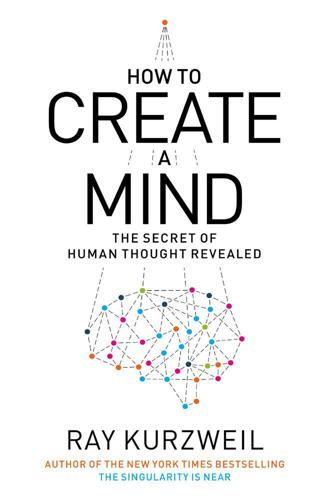
How to Create a Mind: The Secret of Human Thought Revealed
by
Ray Kurzweil
Published 13 Nov 2012
—Dileep George, AI scientist; pioneer of hierarchical models of the neocortex; cofounder of Numenta and Vicarious Systems “Ray Kurzweil’s understanding of the brain and artificial intelligence will dramatically impact every aspect of our lives, every industry on Earth, and how we think about our future. If you care about any of these, read this book!” —Peter H. Diamandis, chairman and CEO, X PRIZE; executive chairman, Singularity University; author of the New York Times bestseller Abundance: The Future Is Better Than You Think HOW TO CREATE A MIND ALSO BY RAY KURZWEIL Transcend: Nine Steps to Living Well Forever (with Terry Grossman) The Singularity Is Near: When Humans Transcend Biology Fantastic Voyage: Live Long Enough to Live Forever (with Terry Grossman) The Age of Spiritual Machines: When Computers Exceed Human Intelligence The 10% Solution for a Healthy Life The Age of Intelligent Machines HOW TO CREATE A MIND THE SECRET OF HUMAN THOUGHT REVEALED RAY KURZWEIL VIKING VIKING Published by the Penguin Group Penguin Group (USA) Inc., 375 Hudson Street, New York, New York 10014, U.S.A. • Penguin Group (Canada), 90 Eglinton Avenue East, Suite 700, Toronto, Ontario, Canada M4P 2Y3 (a division of Pearson Penguin Canada Inc.) • Penguin Books Ltd, 80 Strand, London WC2R 0RL, England • Penguin Ireland, 25 St.
…
Reprinted with permission of AAAS (American Association for the Advancement of Science). 85: Photo provided by Yeatesh (Creative Commons Attribution–Share Alike 3.0 License). 134 (two): Images by Marvin Minsky. Used by permission of Marvin Minsky. Some credits appear adjacent to the respective images. Other images designed by Ray Kurzweil, illustrated by Laksman Frank. Library of Congress Cataloging-in-Publication Data Kurzweil, Ray. How to create a mind : the secret of human thought revealed / Ray Kurzweil. p. cm. Includes bibliographical references and index. ISBN: 978-1-101-60110-5 1. Brain—Localization of functions. 2. Self-consciousness (Awareness) 3. Artificial intelligence. I. Title. QP385.K87 2012 612.8’2—dc23 2012027185 Printed in the United States of America Set in Minion Pro with DIN Designed by Daniel Lagin While the author has made every effort to provide accurate telephone numbers, Internet addresses, and other contact information at the time of publication, neither the publisher nor the author assumes any responsibility for errors, or for changes that occur after publication.
…
Diamandis, chairman and CEO, X PRIZE; executive chairman, Singularity University; author of the New York Times bestseller Abundance: The Future Is Better Than You Think HOW TO CREATE A MIND ALSO BY RAY KURZWEIL Transcend: Nine Steps to Living Well Forever (with Terry Grossman) The Singularity Is Near: When Humans Transcend Biology Fantastic Voyage: Live Long Enough to Live Forever (with Terry Grossman) The Age of Spiritual Machines: When Computers Exceed Human Intelligence The 10% Solution for a Healthy Life The Age of Intelligent Machines HOW TO CREATE A MIND THE SECRET OF HUMAN THOUGHT REVEALED RAY KURZWEIL VIKING VIKING Published by the Penguin Group Penguin Group (USA) Inc., 375 Hudson Street, New York, New York 10014, U.S.A. • Penguin Group (Canada), 90 Eglinton Avenue East, Suite 700, Toronto, Ontario, Canada M4P 2Y3 (a division of Pearson Penguin Canada Inc.) • Penguin Books Ltd, 80 Strand, London WC2R 0RL, England • Penguin Ireland, 25 St.

Falter: Has the Human Game Begun to Play Itself Out?
by
Bill McKibben
Published 15 Apr 2019
“Uh-huh,” I said. “The reason that people who are taking it don’t have zero cancer cells is that they don’t take it quite right. They take a big dose in the morning. You need to take a five-hundred-milligram extended-release pill every four hours. It’s more than the maximum dose, nominally.” So, this guy Ray, Ray Kurzweil, is the “director of engineering” at Google, which is arguably the most important company on the planet. He leads a team charged with developing artificial intelligence. And the reason he is so careful in his daily life is that he firmly believes that if he can just live to 2030 or so, he will never die, that we’re accelerating with such great speed toward technological power so immense that it will reshape everything about us.
…
It was time for a “conversation,” she felt, and “given that this scientific development affects all of humankind, it seemed imperative to get as many sectors of society as possible involved. What’s more, I felt the conversation should begin immediately, before further applications of the technology thwarted any attempts to rein it in.”27 That makes sense to me. Clearly, CRISPR is a perfect example of what Ray Kurzweil meant when he said that exponential increases in computing power would change the world. It’s one instance, one of the most striking, of what that new power might produce. It couldn’t be more remarkable: a “word processor” for the DNA that is at our core. So: what could germline engineering do to humans, and to the game we’ve been playing?
…
Lee suggests that high tax rates on the people running AI companies might suffice to make up the difference, although, as he points out, “most of the money being made from artificial intelligence will go to the United States and China,” so orphan mentors in the other 190 countries may be out of luck. Not everyone thinks this will be a problem. “People say everyone will be out of work. No. People will invent new jobs,” Ray Kurzweil told me. “What will they be?” “Oh, I don’t know. We haven’t invented them yet.” Which is fair enough, and in truth, it’s as far as we’re likely to get with this discussion. This new technology will likely make inequality worse—perhaps engrave it in silicon and DNA. That’s worth knowing, but it doesn’t answer the question of whether we should proceed.

Artificial Intelligence: A Guide for Thinking Humans
by
Melanie Mitchell
Published 14 Oct 2019
Good, “Speculations Concerning the First Ultraintelligent Machine,” Advances in Computers 6 (1966): 31–88. 22. V. Vinge, “First Word,” Omni, Jan. 1983. 23. Kurzweil, Singularity Is Near, 241, 317, 198–99. 24. B. Wang, “Ray Kurzweil Responds to the Issue of Accuracy of His Predictions,” Next Big Future, Jan. 19, 2010, www.nextbigfuture.com/2010/01/ray-kurzweil-responds-to-issue-of.html. 25. D. Hochman, “Reinvent Yourself: The Playboy Interview with Ray Kurzweil,” Playboy, April 19, 2016, www.playboy.com/articles/playboy-interview-ray-kurzweil. 26. Kurzweil, Singularity Is Near, 136. 27. A. Kreye, “A John Henry Moment,” in Brockman, What to Think About Machines That Think, 394–96. 28.
…
But while Turing might have overestimated the ability of an “average interrogator” to see through superficial trickery, could the test still be a useful indicator of actual intelligence if the conversation time is extended and the required expertise of the judges is raised? Ray Kurzweil, who is now director of engineering at Google, believes that a properly designed version of the Turing test will indeed reveal machine intelligence; he predicts that a computer will pass this test by 2029, a milestone event on the way to Kurzweil’s forecasted Singularity. The Singularity Ray Kurzweil has long been AI’s leading optimist. A former student of Marvin Minsky’s at MIT, Kurzweil has had a distinguished career as an inventor: he invented the first text-to-speech machine as well as one of the world’s best music synthesizers.
…
Over the years, Google has evolved into the world’s most important tech company and now offers a vast array of products and services, including Gmail, Google Docs, Google Translate, YouTube, Android, many more that you might use every day, and some that you’ve likely never heard of. Google’s founders, Larry Page and Sergey Brin, have long been motivated by the idea of creating artificial intelligence in computers, and this quest has become a major focus at Google. In the last decade, the company has hired a profusion of AI experts, most notably Ray Kurzweil, a well-known inventor and a controversial futurist who promotes the idea of an AI Singularity, a time in the near future when computers will become smarter than humans. Google hired Kurzweil to help realize this vision. In 2011, Google created an internal AI research group called Google Brain; since then, the company has also acquired an impressive array of AI start-up companies with equally optimistic names: Applied Semantics, DeepMind, and Vision Factory, among others.

The Driver in the Driverless Car: How Our Technology Choices Will Create the Future
by
Vivek Wadhwa
and
Alex Salkever
Published 2 Apr 2017
So much for that ‘new economy’ it was building,” Slate 2 February 2015, http://www.slate.com/blogs/moneybox/2015/02/02/uber_self_driving_cars_autonomous_taxis_aren_t_so_good_for_contractors_in.html (accessed 21 October 2016). 5. Ray Kurzweil, How to Create a Mind: The Secret of Human Thought Revealed, New York: Viking, 2012. 6. Ray Kurzweil, “The law of accelerating returns,” Kurzweil Accelerating Intelligence 7 March 2001, http://www.kurzweilai.net/the-law-of-accelerating-returns (accessed 21 October 2016). 7. Dominic Basulto, “Why Ray Kurzweil’s predictions are right 86% of the time,” Big Think 2012, http://bigthink.com/endless-innovation/why-ray-kurzweils-predictions-are-right-86-of-the-time (accessed 21 October 2016). 8. Tom Standage, “Why does Kenya lead the world in mobile money?”
…
Robots will seem human-like and will do human-like things. A good proportion of experts in artificial intelligence believe that such a degree of intelligent behavior in machines is several decades away. Others refer often to a book by the most sanguine of all the technologists, noted inventor Ray Kurzweil. Kurzweil, in his book How to Create a Mind: The Secret of Human Thought Revealed, posits: “[F]undamental measures of information technology follow predictable and exponential trajectories.”5 He calls this hypothesis the “law of accelerating returns.”6 We’ve discussed the best-recognized of these trajectories, Moore’s Law.
…
But Intel and IBM have both said that they can adhere to the Moore’s Law targets for another five to ten years. So the silicon-based computer chips in our laptops will surely match the power of a human brain in the early 2020s, but Moore’s Law may fizzle out after that. What happens after Moore’s Law? As Ray Kurzweil explains, Moore’s law isn’t the be-all and end-all of computing; the advances will continue regardless of what Intel and IBM can do with silicon. Moore’s Law itself was just one of five paradigms in computing: electromechanical, relay, vacuum tube, discrete transistor, and integrated circuits.
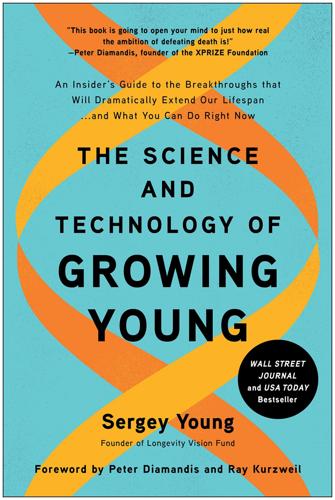
The Science and Technology of Growing Young: An Insider's Guide to the Breakthroughs That Will Dramatically Extend Our Lifespan . . . And What You Can Do Right Now
by
Sergey Young
Published 23 Aug 2021
PRAISE FOR THE SCIENCE AND TECHNOLOGY OF GROWING YOUNG “A very compelling book.” —Ray Kurzweil, inventor and futurist “Being alive and healthy is the greatest joy that exists, and there has never been a better time to be alive than today. This book is going to open your mind to just how real and close-at-hand the ambition of defeating death is!” —Peter Diamandis, founder of the XPRIZE Foundation “Amazing research and the most exciting breakthroughs in the field of biomedicine and gerontology. Highly recommended!” —Dr. Aubrey de Grey, Chief Science Officer of the SENS Research Foundation “Read this book now.
…
First E-Book Edition: August 2021 Library of Congress Control Number: 2021006215 ISBN 9781950665877 (print) ISBN 9781953295392 (ebook) Editing by Glenn Yeffeth and Rachel Phares Copyediting by Judy Myers Proofreading by Michael Fedison and Sarah Vostok Indexing by WordCo Indexing Services Text design and composition by Aaron Edmiston Cover design by Faceout Studio, Amanda Hudson Cover image © Shutterstock / Oxy_gen Special discounts for bulk sales are available. Please contact bulkorders@benbellabooks.com. To Liza and to my children—Nikita, Timothy, Polina, and Maxim—for giving me the best reason to live longer and make the world a better place CONTENTS Foreword: The End of Aging Is Near by Peter H. Diamandis and Ray Kurzweil CHAPTER 1: Life at 200—How and When Technology Will Enable Us to Live Longer Than We Ever Thought Possible Shuffle Off This Mortal Coil Why This Book CHAPTER 2: Defining Longevity—The Three Dimensions of Longevity Impact and the Two Horizons of the Longevity Revolution What Is the Secret to Living Longer?
…
—The 10 Attitudes, Habits, and Choices You Need to Make to Take Advantage of the Longevity Revolution—Now 1.You Better Check Yourself 2.Quit Your Bad Habits 3.Don’t Do Dumb Things 4.Eat Early, and Less Often 5.Let Food Be Thy Medicine 6.Supplement Your Nutrition 7.Get On Up! 8.Make Sleep Your Superpower 9.Mindfulness over Matter 10.Think and Grow Young Acknowledgments About the Author Notes Index FOREWORD THE END OF AGING IS NEAR Peter H. Diamandis, MD and Ray Kurzweil The question of how to grapple with the profoundly agonizing issue of death has animated human history. In religion and art, we rationalize that death can be liberating or glorious, but in real life, we do not rejoice when someone dies. On the contrary, we often fantasize about achieving eternal youth.
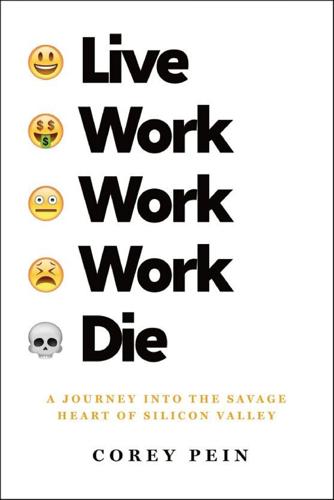
Live Work Work Work Die: A Journey Into the Savage Heart of Silicon Valley
by
Corey Pein
Published 23 Apr 2018
If you believe the copy of this e-book you are reading infringes on the author’s copyright, please notify the publisher at: us.macmillanusa.com/piracy. Vom Affen zum Roboter Acknowledgments If it’s true that suffering builds character, I owe many thanks to Airbnb. In the same spirit, I must thank those who declined to be interviewed, especially Ray Kurzweil, Peter Thiel, and Curtis Yarvin—my three muses. I’m genuinely grateful to everyone who was interviewed, as well as all those pseudonymous people—roommates, conferencegoers, barflies—whose stories were included in this book. Thanks to my shrink, to my wife, Patricia Sauthoff, and to the voters of Oregon, whose wise passage of Measure 91 ensured the timely and relatively painless completion of this book.
…
Therefore it was no surprise that Silicon Valley was intent upon “gamifying” all aspects of human behavior. Corporations were spending hundreds of millions of dollars on “funsultants” who provided advice on “enterprise gamification”—filling the most menial wage labor with “fun” Pavlovian rewards and punishments. According to the futurist Ray Kurzweil, there soon “won’t be a clear distinction between work and play.” If that seems far-fetched, consider how successfully Facebook gamified friendship. Sex, too, became a game, as well as a profit opportunity, on sites like Chaturbate. As the name implied, Chaturbate was Twitch for sex shows, some of which appeared to be staged in actual brothels.
…
Unlike some transhumanist factions that obsess over biology and genetics, the Singularity singles out computers—specifically, the development of advanced artificial intelligence—as the catalyst for an allegedly inevitable and willful transformation of the species. The person most closely associated with this concept is the author, inventor, and tech executive Ray Kurzweil. Kurzweil is now known primarily as a purveyor of far-out ideas, of which the Singularity is only one, but his early pronouncements are remarkably restrained in comparison. In a 1984 conference speech, he lamented the overly optimistic predictions of AI researchers, who were forever claiming that the holy grail of the field, “artificial general intelligence”—a computerized mind equivalent to that of a human, in capabilities if not in design—was just a decade or two away, only to be proven wrong time and again.

The Transhumanist Reader
by
Max More
and
Natasha Vita-More
Published 4 Mar 2013
New York: HarperCollins. 20 Dialogue between Ray Kurzweil and Eric Drexler What would it take to achieve successful cryonics reanimation of a fully functioning human brain, with memories intact? A conversation at the Alcor Conference on Extreme Life Extension between Ray Kurzweil and Eric Drexler sparked an email discussion (November 23, 2002) of this question. They agreed that, despite the challenges, the brain’s functions and memories can be represented surprisingly compactly, suggesting that successful reanimation of the brain may be achievable. Ray Kurzweil. Eric, I greatly enjoyed our brief opportunity to share ideas (difficulty of adding bits to quantum computing, cryonics reanimation, etc.).
…
Esfandiary, better known as FM-2030); grounded by Max More and Natasha Vita-More’s early work through the Extropy Institute, and reaching a third wave that “began in earnest” with the working draft of the human genome (circa 2000). Greg Klerkx 2006: 63. 7 Max More, Natasha Vita-More, Nick Bostrom, J. Hughes, Aubrey de Grey, Martine Rothblatt, Ben Goertzel, Ray Kurzweil, to name a few, all of whom are contributors to this seminal volume. 8 Through his analysis of technological thresholds for radically transformative intelligent machines, Ray Kurzweil, by far the best-known advocate of “the Singularity,” anticipates a mid-century point at which exponential gains in human-computer capabilities, due in large part to compounding advances in computational technologies, will overtake biological humans in general intelligence.
…
Nanotechnology General Computer Principles Additional Constraints for Nanocomputers Entropy Drexler’s Mechanical Logic Registers and Memory Motors Other Logics for Nanocomputers Other Mechanical Logics Electronic Logic Conclusion 19 Immortalist Fictions and Strategies Introduction: Something Like Penicillin for Immortality Immortality in Fiction Science of Biological Immortality Technological Prospects for Near-Term Human Biological Immortality Fictitious Technology vs Actual Technology 20 Dialogue between Ray Kurzweil and Eric Drexler Part V Engines of Life: Identity and Beyond Death 21 The Curate’s Egg of Anti-Anti-Aging Bioethics 22 Medical Time Travel 23 Transhumanism and Personal Identity Personal Identity and the Enlightenment Enhancement, Transhumanism and Personal Identity 24 Transcendent Engineering I.

The New Class Conflict
by
Joel Kotkin
Published 31 Aug 2014
Frank Furedi, “Elevating Environmentalism over ‘Less Worthy’ Lifestyles,” Spiked, November 9, 2009, http://www.spiked-online.com/newsite/article/7684#.U4GA7C8TFsE. 83. Ray Kurzweil, The Singularity is Near: When Humans Transcend Biology (New York: Penguin, 2005), p. 10. 84. Ibid., p. 29. 85. Alex Knapp, “Ray Kurzweil’s Predictions For 2009 Were Mostly Inaccurate,” Forbes, March 20, 2012, http://www.forbes.com/sites/alexknapp/2012/03/20/ray-kurzweils-predictions-for-2009-were-mostly-inaccurate; Robert Jonathan, “Google Exec Ray Kurzweil Takes 150 Vitamin Supplements Every Day,” Inquisitr, October 20, 2013, http://www.inquisitr.com/1000017/google-exec-ray-kurzweil-takes-150-vitamin-supplements-every-day; Eric Mack, “Google Launches Calico to Take on Illness and Aging,” CNET, September 18, 2013, http://www.cnet.com/news/google-launches-calico-to-take-on-illness-and-aging; Holman W.
…
David Gelernter, “The Closing of the Scientific Mind,” Commentary, January 1, 2014, http://www.commentarymagazine.com/article/the-closing-of-the-scientific-mind. 88. Paul Joseph Watson, “The Dark Side of Ray Kurzweil’s Transhumanist Utopia,” Infowars.com, June 20, 2013, http://www.infowars.com/the-dark-side-of-ray-kurzweils-transhumanist-utopia; Victoria Woollaston, “We’ll Be Uploading Our Entire MINDS to Computers by 2045 and Our Bodies Will Be Replaced by Machines within 90 Years, Google Expert Claims,” Daily Mail (UK), June 19, 2013; Kurzweil, The Singularity is Near, p. 469. 89. Bill Joy, “Why the Future Doesn’t Need Us,” Wired, April 2000.
…
This notion was noted in 1950 by the early computer designer John von Neumann, who saw that “the ever accelerating progress of technology . . . gives the appearance of approaching some essential singularity in the history of the race beyond which human affairs, as we know them, could not continue.”83 In this new formulation, technology essentially supplants divinity, community, and family as the driving force in history. This viewpoint embraces the notion of a relentlessly improved society, powered and shaped by ever more intrusive technology, and, as a result, dominated by those who design or control them. Perhaps the most advanced voice for this new vision is Ray Kurzweil, a longtime entrepreneur and inventor. Now the director of engineering at Google, he predicts the ever more rapid evolution of humanity through technology, with the end being the merging of biological and machine intelligences. Eventually, he predicts, “the entire universe will become saturated by our intelligence.”84 Kurzweil promotes “the singularity” not only as allowing for the perfectibility of mankind—long a goal of theological speculation—but also as a step toward immortality, with our brain patterns imprinted as software and preserved permanently.
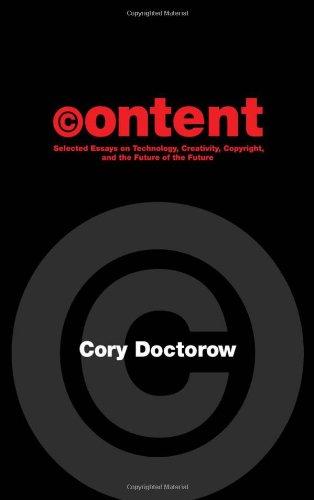
Content: Selected Essays on Technology, Creativity, Copyright, and the Future of the Future
by
Cory Doctorow
Published 15 Sep 2008
Does that mean I'm not me anymore? Kurzweil has the answer. "If you follow that logic, then if you were to take me ten years ago, I could not pass for myself in a Ray Kurzweil Turing Test. But once the requisite uploading technology becomes available a few decades hence, you could make a perfect-enough copy of me, and it would pass the Ray Kurzweil Turing Test. The copy doesn't have to match the quantum state of my every neuron, either: if you meet me the next day, I'd pass the Ray Kurzweil Turing Test. Nevertheless, none of the quantum states in my brain would be the same. There are quite a few changes that each of us undergo from day to day, we don't examine the assumption that we are the same person closely.
…
(Originally published as "How Big Media's Copyright Campaigns Threaten Internet Free Expression," InformationWeek, November 5, 2007) Giving it Away (Originally published on Forbes.com, December 2006) Science Fiction is the Only Literature People Care Enough About to Steal on the Internet (Originally published in Locus Magazine, July 2006) How Copyright Broke (Originally published in Locus Magazine, September, 2006) In Praise of Fanfic (Originally published in Locus Magazine, May 2007) Metacrap: Putting the torch to seven straw-men of the meta-utopia (Self-published, 26 August 2001) Amish for QWERTY (Originally published on the O'Reilly Network, 07/09/2003, http://www.oreillynet.com/pub/a/wireless/2003/07/09/amish qwerty.html) Ebooks: Neither E, Nor Books (Paper for the O'Reilly Emerging Technologies Conference, San Diego, February 12, 2004) Free(konomic) E-books (Originally published in Locus Magazine, September 2007) The Progressive Apocalypse and Other Futurismic Delights (Originally published in Locus Magazine, July 2007) When the Singularity is More Than a Literary Device: An Interview with Futurist-Inventor Ray Kurzweil (Originally published in Asimov's Science Fiction Magazine, June 2005) Wikipedia: a genuine Hitchhikers' Guide to the Galaxy — minus the editors (Originally published in The Anthology at the End of the Universe, April 2005) Warhol is Turning in His Grave (Originally published in The Guardian, November 13, 2007) The Future of Ignoring Things (Originally published on InformationWeek's Internet Evolution, October 3, 2007) Facebook's Faceplant (Originally published as "How Your Creepy Ex-Co-Workers Will Kill Facebook," in InformationWeek, November 26, 2007) The Future of Internet Immune Systems (Originally published on InformationWeek's Internet Evolution, November 19, 2007) All Complex Ecosystems Have Parasites (Paper delivered at the O'Reilly Emerging Technology Conference, San Diego, California, 16 March 2005) READ CAREFULLY (Originally published as "Shrinkwrap Licenses: An Epidemic Of Lawsuits Waiting To Happen" in InformationWeek, February 3, 2007) World of Democracycraft (Originally published as "Why Online Games Are Dictatorships," InformationWeek, April 16, 2007) Snitchtown (Originally published in Forbes.com, June 2007) Dedication For the founders of the Electronic Frontier Foundation: John Perry Barlow, Mitch Kapor and John Gilmore For the staff — past and present — of the Electronic Frontier Foundation For the supporters of the Electronic Frontier Foundation Introduction by John Perry Barlow San Francisco - Seattle - Vancouver - San Francisco Tuesday, April 1, 2008 "Content," huh?
…
Science fiction is the literature of the present, and the present is the only era that we can hope to understand, because it's the only era that lets us check our observations and predictions against reality. When the Singularity is More Than a Literary Device: An Interview with Futurist-Inventor Ray Kurzweil (Originally published in Asimov's Science Fiction Magazine, June 2005) It's not clear to me whether the Singularity is a technical belief system or a spiritual one. The Singularity — a notion that's crept into a lot of skiffy, and whose most articulate in-genre spokesmodel is Vernor Vinge — describes the black hole in history that will be created at the moment when human intelligence can be digitized.
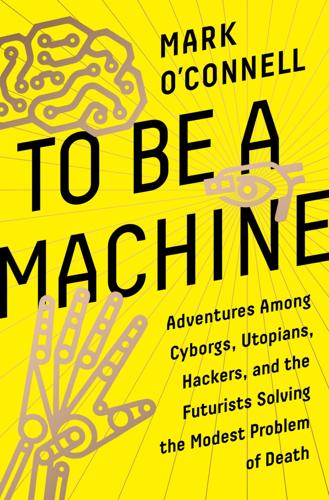
To Be a Machine: Adventures Among Cyborgs, Utopians, Hackers, and the Futurists Solving the Modest Problem of Death
by
Mark O'Connell
Published 28 Feb 2017
Transhumanism’s influence seemed perceptible in the fanatical dedication of many tech entrepreneurs to the ideal of radical life extension—in the PayPal cofounder and Facebook investor Peter Thiel’s funding of various life extension projects, for instance, and in Google’s establishment of its biotech subsidiary Calico, aimed at generating solutions to the problem of human aging. And the movement’s influence was perceptible, too, in Elon Musk’s and Bill Gates’s and Stephen Hawking’s increasingly vehement warnings about the prospect of our species’ annihilation by an artificial superintelligence, not to mention in Google’s instatement of Ray Kurzweil, the high priest of the Technological Singularity, as its director of engineering. I saw the imprint of transhumanism in claims like that of Google CEO Eric Schmidt, who suggested that “Eventually, you’ll have an implant, where if you just think about a fact, it will tell you the answer.” These men—they were men, after all, almost to a man—all spoke of a future in which humans would merge with machines.
…
I considered asking him whether he thought computers might eventually replace even keynote speakers, whether the thought leaders of the next decade might fit in the palms of our hands, but realized that whatever answer he provided to this question would be cause for smug vindication on his part anyway, and so I resolved instead to include a description in my book of his retrieving a dropped pistachio from inside his expensive shirt—an act of petty and futile vengeance, and the kind of absurd irrelevance that would certainly be beneath the dignity and professional discipline of an automated writing AI. Anders and the attractive Frenchwoman to my right were engaged in what seemed to me an impenetrably technical discussion about the progress of research into mind uploading. The conversation had turned to Ray Kurzweil, the inventor and entrepreneur and director of engineering at Google who had popularized the idea of the Technological Singularity, an eschatological prophecy about how the advent of AI will usher in a new human dispensation, a merger of people and machines, and a final eradication of death. Anders was saying that Kurzweil’s view of brain emulation, among other things, was too crude, that it totally ignored what he called the “subcortical mess of motivations.”
…
This, more or less, is the scenario outlined by Hans Moravec, a professor of cognitive robotics at Carnegie Mellon, in his book Mind Children: The Future of Robot and Human Intelligence. It is Moravec’s conviction that the future of the human species will involve a mass-scale desertion of our biological bodies, effected by procedures of this kind. It’s a belief shared by many transhumanists. Ray Kurzweil, for one, is a prominent advocate of the idea of mind uploading. “An emulation of the human brain running on an electronic system,” he writes in The Singularity Is Near, “would run much faster than our biological brains. Although human brains benefit from massive parallelism (on the order of one hundred trillion interneuronal connections, all potentially operating simultaneously), the rest time of the connections is extremely slow compared to contemporary electronics.”

I Hate the Internet: A Novel
by
Jarett Kobek
Published 3 Nov 2016
The way that computers would change everything is by emerging into consciousness and telling people like Ray Kurzweil and Vernor Vinge that they were fucking awesome. The computers and Ray Kurzweil and Vernor Vinge would hang out and kick back and rule the universe forever. This is not an exaggeration. This is what Ray Kurzweil believed. This bullshit was reported by major American media outlets. This bullshit was taken as gospel by cub reporters who did not understand regular old intelligence, let alone intelligence crafted by man. So Ray Kurzweil was the god of lies. Who would deny the puissance of a man who thought that his computer was going to wake up and hang out with him and tell him he was awesome?
…
Like Sheryl Sandberg, the billionaire who worked for Facebook and thought that the way women who weren’t billionaires could get respect in the workplace was to act more like the men that disrespected them in the workplace. Before she was at Facebook, she was at Google, and Christine decided that Sheryl Sandberg was like Iris, the messenger of the Gods. It seemed like Sheryl Sandberg had spent her whole professional life doing nothing but delivering messages. Like Ray Kurzweil, who Christine identified with Dolos, the Greek spirit of trickery and guile. Ray Kurzweil was the king of technological liberation theology. Or, in other words, he was king of the most intolerable of all intolerable bullshit. He believed in a future where computers would reach a moment of technological singularity. The technological singularity was a bullshit phrase invented by the Science Fiction writer Vernor Vinge.
…
Who would deny the puissance of a man who thought that his computer was going to wake up and hang out with him and tell him he was awesome? Everyone in Silicon Valley loved Ray Kurzweil. He was their High Priest of Intolerable Bullshit. He was the Seer of Pseudoscience. He worked for Google. He was a director of engineering. Like Marissa Mayer, who Christine identified with Elpis, the Greek goddess of hope. There was no way you could be Marissa Mayer without hope. When she worked at Google, she had at some point dated Larry Page while helping out on all kinds of projects that went nowhere, like Google Books, which she called, “Google’s Moon Shot.”
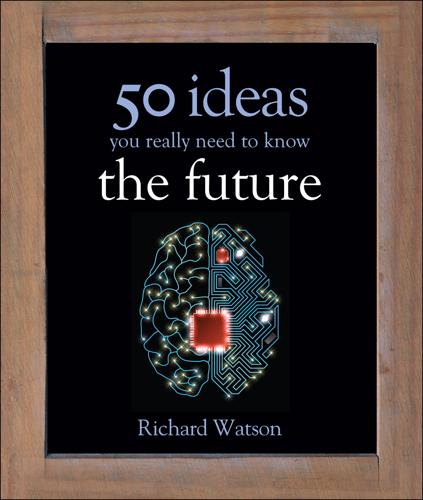
50 Future Ideas You Really Need to Know
by
Richard Watson
Published 5 Nov 2013
But if the economic environment is harsher, it’s unlikely that people will spend what little money they have left launching an offensive against death and it’s unlikely that society will support large-scale research into the area either. “Death gives meaning to our lives. It gives importance and value to time. Time would become meaningless if there were too much of it.” Ray Kurzweil, author, inventor and futurist What’s in it for us? More standard versions of transhumism have attracted some serious thinkers over the years, including, most notably, the futurist and inventor Ray Kurzweil and the nanotechnology pioneer Eric Drexler. Drexler, for example, has speculated about the potential of using nanotechnology to repair worn-out or broken body parts to radically change what it means to be human and potentially extend human life indefinitely.
…
Google’s autonomous car project, started by Sebastian Thrun of Stanford Artificial Intelligence Laboratory, uses a Toyota Prius equipped with sensors to follow a GPS route all by itself. A robotics scientist sits in the car, but doesn’t actually drive it. Already, seven cars have traveled 1,600km (1,000 miles) with no driver and 225,000km (140,000 miles) with occasional human intervention. Are these examples realistic? Some experts might say yes. Ray Kurzweil, an American futurist and inventor, has made a public bet with Mitchell Kapor, the founder of Lotus software, that a computer will pass the Turing test by 2029. Other experts say no. Bill Calvin, an American theoretical neurophysiologist, suggests the human brain is so “buggy” that computers will never be able to emulate it or, if they do, machines will inherit our foibles and emotional inadequacies along with our intelligence.
…
Most of these ideas already exist in research and development laboratories, or soon will, thanks to developments in medicine, engineering, computing, nanotechnology and materials science among other fields. “Keep in mind that nonbiological intelligence is doubling each year, whereas our biological intelligence is essentially fixed.” Ray Kurzweil, author, inventor and futurist The challenge is not in building these bits, but whether or not all the bits can be added together. Could we, for example, buy a whole new body if our current one is worn out and just stick our head on top? Or what about a whole new brain? The term “cosmetic neurology”—essentially plastic surgery for the brain, so could we pick a new brain or, more likely, various plug-ins to create or enhance specific brain functions—has already been coined.
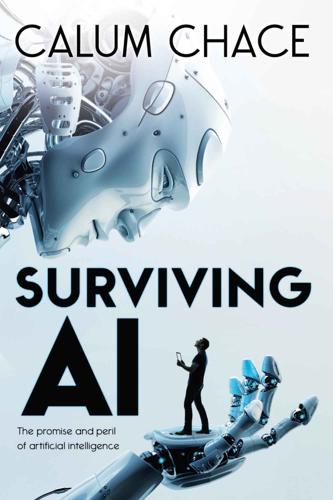
Surviving AI: The Promise and Peril of Artificial Intelligence
by
Calum Chace
Published 28 Jul 2015
And the pinnacle of it is that they want to build an artificial brain – an AGI. In May 2002 Larry Page said: “Google will fulfil its mission only when its search engine is AI-complete. You guys know what that means? That’s artificial intelligence.” (9) In December 2012 Google hired the controversial futurist Ray Kurzweil as a director of engineering. Kurzweil, of whom more later, believes that AGI will arrive in 2029, and that the outcome will be very positive. The other tech giants are in hot pursuit Facebook, Amazon, Apple, IBM and Microsoft are determined to keep up with Google in the race to develop better and better AI.
…
It required 46 steps of fission to create all of your 27 trillion cells. Moore’s Law, by comparison, has had 33 steps in the 50 years of its existence. People have been claiming for years that Moore’s Law is tailing off – or even that it has stopped. But Moore’s Law has proved surprisingly robust. Ray Kurzweil claims it has been in force since before integrated circuits came along, stretching back into the ancient history of vacuum tubes and beyond. And it looks as though there is life in the old law yet. In February 2015 Intel updated journalists on their chip programme for the next few years, and it maintains the exponential growth. (38) The first chips based on its new 10 nanometre manufacturing process are expected in late 2016 / early 2017, after which it expects to move away from silicon, probably towards a III-V semiconductor such as indium gallium arsenide. (39) Exascale computing Moore’s Law is important to questions about AGI because computer processing power enables many of the processes which in turn could enable AGI.
…
If you work there you don’t have to believe that technological progress is leading us towards a world of radical abundance which will be a much better place than the world today – but it certainly helps. Probably nowhere else in the world takes the ideas of the singularity as seriously as Silicon Valley. And after all, Silicon Valley is a leading contender to be the location where the first AGI is created. The controversial inventor and author Ray Kurzweil is the leading proponent of the claim that a positive singularity is almost inevitable, and it is no coincidence that he is now a director of engineering at Google. Kurzweil is also one of the co-founders of the Singularity University (SU), also located (of course) in Silicon Valley – although SU focuses on the technological developments which can be foreseen over the next five to ten years, and is careful to avoid talking about the Singularity itself, which Kurzweil predicts will arrive in 2045.

MONEY Master the Game: 7 Simple Steps to Financial Freedom
by
Tony Robbins
Published 18 Nov 2014
Our problems come in waves, but so do the solutions. I’m surfing the giant life wave. —WILLIAM SHATNER Nobody understands this idea better than my friend Ray Kurzweil, the inventor, author, and entrepreneur. One of the most brilliant minds on the planet, he’s been called the Thomas Edison of our age. Yet you’ve probably never heard his name unless you’re a TED Talk junkie, or if you study the lineup at Google, where Ray is head of engineering. But Ray Kurzweil has affected your life in more ways than you could ever imagine. If you listen to tunes on your phone, on the internet—anywhere—he’s the guy you can thank.
…
Think and Grow Rich became one of the bestselling books of all time. Napoleon Hill’s quest has been an inspiration to me. Like his classic, this book is modeled on seeking out the best of the best in the world, from Warren Buffett to Sir Richard Branson—and including the man that experts in the field have called the Edison of our day: Ray Kurzweil, who invented the first digital music synthesizers, the first software to translate text into speech; he’s the man behind Siri on your iPhone. He developed a device that allows the blind to walk the streets and read road signs and order from any menu. Today Ray is head of engineering development for Google.
…
This is the opposite of what most people believe. According to an NBC–Wall Street Journal poll, 76% of Americans—an all-time record—think that their children’s lives will be worse off than their own! But you’re going to get an insider’s look at what’s coming from some of the most brilliant minds of our time. We’ll hear from my friends Ray Kurzweil, the Edison of our age, and Peter Diamandis, creator of the X Prize, about new technologies coming online: 3-D printers that will transform your personal computer into a manufacturing plant, self-driving cars, exoskeletons that enable paraplegics to walk, artificial limbs grown from single cells—innovations that will dramatically change our lives for the better in the very near future.

Artificial You: AI and the Future of Your Mind
by
Susan Schneider
Published 1 Oct 2019
According to a recent survey, for instance, the most-cited AI researchers expect AI to “carry out most human professions at least as well as a typical human” within a 50 percent probability by 2050, and within a 90 percent probability by 2070.1 I’ve mentioned that many observers have warned of the rise of superintelligent AI: synthetic intelligences that outthink the smartest humans in every domain, including common sense reasoning and social skills. Superintelligence could destroy us, they urge. In contrast, Ray Kurzweil, a futurist who is now a director of engineering at Google, depicts a technological utopia bringing about the end of aging, disease, poverty, and resource scarcity. Kurzweil has even discussed the potential advantages of forming friendships with personalized AI systems, like the Samantha program in the film Her.
…
Despite its science fiction–like flavor, many of the technological developments that transhumanism depicts seem quite possible: Indeed, the beginning stages of this radical alteration may well lie in certain technological developments that either are already here (if not generally available) or are accepted by many observers in the relevant scientific fields as being on their way.6 For instance, Oxford University’s Future of Humanity Institute—a major transhumanist group—released a report on the technological requirements for uploading a mind to a machine.7 A U.S. Defense Department agency has funded a program, Synapse, that is trying to develop a computer that resembles the brain in form and function.8 Ray Kurzweil has even discussed the potential advantages of forming friendships, Her-style, with personalized AI systems.9 All around us, researchers are striving to turn science fiction into science fact. You may be surprised to learn that I consider myself a transhumanist, but I do. I first learned of transhumanism while an undergraduate at the University of California at Berkeley, when I joined the Extropians, an early transhumanist group.
…
In the context of biological life, intelligence and consciousness seem to go hand-in-hand. Sophisticated biological intelligences tend to have complex and nuanced inner experiences. But would this correlation apply to nonbiological intelligence as well? Many suspect so. For instance, transhumanists, such as Ray Kurzweil, tend to hold that just as human consciousness is richer than that of a mouse, so too, unenhanced human consciousness would pale in comparison to the experiential life of a superintelligent AI.1 But as we shall see, this line of reasoning is premature. There may be no special androids that have the spark of consciousness in their machine minds, like Dolores in Westworld or Rachael in Bladerunner.
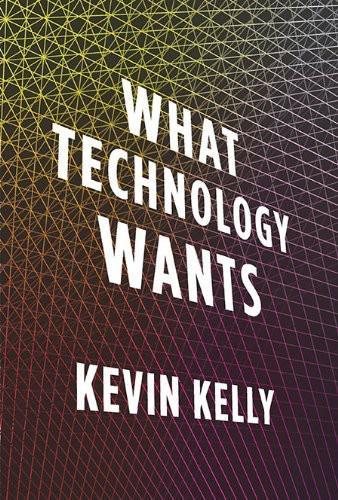
What Technology Wants
by
Kevin Kelly
Published 14 Jul 2010
Deloitte Center for the Edge. (2009) “The 2009 Shift Index: Measuring the Forces of Long-Term Change,” p. 29. http://www.edgeperspectives.com/shiftindex.pdf. 165 “operative even when people disbelieved it”: Rob Carlson. (2009) In discussion with the author. 165 more than an industry road map: Ray Kurzweil. (2005) The Singularity Is Near. New York: Viking. 165 Kurzweil’s Law: Data from Ray Kurzweil. (2005) “Moore’s Law: The Fifth Paradigm.” The Singularity Is Near (January 28, 2010). http://singularity.com/charts/page67.html. 167 Doubling Times: Data from Ray Kurzweil. (2005) The Singularity Is Near. New York: Viking; Eric S. Lander, Lauren M. Linton, et al. (2001) “Initial Sequencing and Analysis of the Human Genome.” Nature, 409 (6822). http://www.ncbi.nlm.nih.gov/pubmed/11237011; Rik Blok. (2009) “Trends in Computing.” http://www.zoology.ubc.ca/~rikblok/ComputingTrends/; Lawrence G.
…
The poor move into the city for the same reason the rich move into the technological future—to head toward possibilities and increased freedoms. In The Progress Paradox Gregg Easterbrook writes, “If you sat down with a pencil and graph paper to chart the trends of American and European life since the end of World War II, you’d do a lot of drawing that was pointed up.” Ray Kurzweil has collected an entire gallery of graphs depicting the upward-zooming trend in many, if not most, technological fields. All graphs of technological progress start low, with small change several hundred years ago, then begin to bend upward in the last hundred, and then bolt upright to the sky in the last fifty.
…
The exponential growth of magnetic storage began in 1956, almost a whole decade before Moore formulated his law for semiconductors and 50 years before Kryder formulized the existence of its slope. Rob Carlson says, “When I first published the DNA exponential curves, I got reviewers claiming that they were unaware of any evidence that sequencing costs were falling exponentially. In this way the trends were operative even when people disbelieved it.” Inventor and author Ray Kurzweil dug into the archives to show that something like Moore’s Law had its origins as far back as 1900, long before electronic computers existed, and of course long before the path could have been constructed by self-fulfillment. Kurzweil estimated the number of calculations per second per $1,000 performed by turn-of-the-century analog machines, by mechanical calculators, and later by the first vacuum-tube computers and extended the same calculation to modern semiconductor chips.
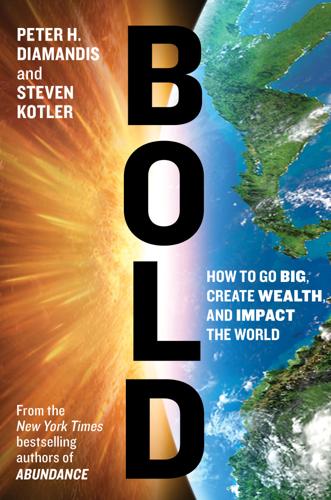
Bold: How to Go Big, Create Wealth and Impact the World
by
Peter H. Diamandis
and
Steven Kotler
Published 3 Feb 2015
Mangalindan, “A digital maestro for every object in the home,” Fortune, June 7, 2013, http://fortune.com/2013/06/07/a-digital-maestro-for-every-object-in-the-home/. 22 Unless otherwise noted, all Bass quotes and Autodesk information comes from a series of AIs with Carl Bass conducted 2012–2014. 23 Michio Kaku, “The Future of Computing Power [Fast, Cheap, and Invisible],” Big Think, April 24, 2010, http://bigthink.com/dr-kakus-universe/the-future-of-computing-power-fast-cheap-and-invisible. 24 AI with Graham Weston, 2013. 25 2001: A Space Odyssey, directed by Stanley Kubrick (1968; Beverly Hills, CA: Metro-Goldwyn-Mayer), DVD release, 2011. 26 Iron Man, directed by Jon Favreau (2008; Burbank, CA: Walt Disney Studios), DVD. 27 AI with Ray Kurzweil, 2013. 28 See: http://www.xprize.org/ted. As of the end of 2014, this prize is only in concept form. A detailed design and a design sponsor is still required. 29 “Ray Kurzweil: The Coming Singularity, Your Brain Year 2029,” Big Think, June 22, 2013, https://www.youtube.com/watch?v=6adugDEmqBk. 30 John Ward, “The Services Sector: How Best To Measure It?,” International Trade Administration, October 2010, http://trade.gov/publications/ita-newsletter/1010/services-sector-how-best-to-measure-it.asp. 31 AI with Jeremy Howard, 2013. 32 For information on the German Traffic Sign Recognition Benchmark see http://benchmark.ini.rub.de. 33 Geoffrey Hinton et al., “ImageNet Classification with Deep Convolutional Neural Networks,” http://www.cs.toronto.edu/~fritz/absps/imagenet.pdf. 34 John Markoff, “Armies of Expensive Lawyers, Replaced By Cheaper Software,” New York Times, March 4, 2011, http://www.nytimes.com/2011/03/05/science/05legal.html?
…
Watson in the cloud, tied to an openly available API, is the beginning of one such moment, the potential for a Mosaic-like interface explosion, opening AI to all sorts of new businesses and heralding its transition from deceptive to disruptive growth. Attention, exponential entrepreneurs: What are you waiting for? And everything we’ve just covered is here today. “Soon,” says Ray Kurzweil,40 “we will give an AI permission to listen to every phone conversation you have. Permission to read your emails and blogs, eavesdrop on your meetings, review your genome scan, watch what you eat and how much you exercise, even tap into your Google Glass feed. And by doing all this, your personal AI will be able to provide you with information even before you know you need it.”
…
Instead, the point is that AI has been in a deceptive phase for the past fifty years, ever since 1956, when a bunch of top brains came together for the first time at the Dartmouth Summer Research Project44 and made a “spectacularly wrong prediction” about their ability to crack AI over a single hot New England summer. But today, couple the successes of Deep Learning and IBM’s Watson to the near-term predictions of technology oracles like Ray Kurzweil, and we find a field reaching the knee of the exponential growth curve—that is, a field ready to run wild in disruption. So what does this mean to you, the exponential entrepreneur? This is a multibillion-dollar question. But as you try to find answers, remember that JARVIS is essentially the ultimate user interface, democratizing every exponential technology and giving all of us access to Stark-like capabilities.

Robots Will Steal Your Job, But That's OK: How to Survive the Economic Collapse and Be Happy
by
Pistono, Federico
Published 14 Oct 2012
Computing devices have been consistently multiplying in power (per unit of time), from the mechanical calculating devices used in the 1890 US Census, to Turing’s relay-based Bombe machine that cracked the Nazi enigma code, to the CBS vacuum tube computer that predicted the election of Eisenhower, to the transistor-based machines used in the first space launches, to the integrated-circuit-based personal computer which Kurzweil used to dictate the very essay that described this phenomenon, in 2001. To get an idea of what exponential growth means, look at the following graph, which represents the difference between a linear trend and an exponential one. * * * Figure 4.1: The difference between a Linear and an Exponential curve. Courtesy of Ray Kurzweil. * * * As you can see, the exponential trend starts to really take off where the ‘Knee of the Curve’ begins. Before that, things do not seem to change significantly. It is just like the story of the chess board and the king. In the first few days nothing notable happens, but as soon as the curve kicks in, something dramatic happens and things go out of control.
…
What is even more remarkable is that, when Kurzweil plotted the world’s fastest calculator’s on a graph since 1900, he noticed something quite surprising. Remember that a straight line on a logarithmic graph means exponential growth? If you thought exponential growth was fast, you have not seen anything yet. Take a look at this graph. * * * Figure 4.2: The Exponential Growth of computing power over the last 110 years. Courtesy of Ray Kurzweil. * * * The plot is logarithmic, alright. You can see the y-axis having the number 10 growing at five orders of magnitude after each step (that is a 100,000 fold increase every time!), but the curve is not a straight line. Instead, what you see is upward trend. What this means is that there is another exponential curve.
…
Technological Singularity refers to the time when the speed of technological change is so fast that we are unable to predict what will happen. At that moment, computer intelligence will exceed that of human’s, and we will not even be able to understand what changes are happening. The term was first coined by science fiction writer Vernon Vinge and subsequently popularised by many authors, predominantly Ray Kurzweil with his books The Age of Spiritual Machines and The Singularity is Near. This idea, however, is highly speculative, and it is far beyond the purpose of this book to examine its feasibility. Suffice to say that in order for machines to replace most human jobs, the singularity is not a necessary requirement, as we will see in the next chapters.

Machines of Loving Grace: The Quest for Common Ground Between Humans and Robots
by
John Markoff
Published 24 Aug 2015
If the equation is framed in terms of artificial intelligence–oriented technologies versus those oriented toward augmenting humans, there is hope that humans still retain an unbounded ability to both entertain and employ themselves doing something marketable and useful. If the humans are wrong, however, 2045 could be a tough year for the human race. Or it could mark the arrival of a technological paradise. Or both. The year 2045 is when Ray Kurzweil predicts humans will transcend biology, and implicitly, one would presume, destiny.37 Kurzweil, the serial artificial intelligence entrepreneur and author who joined Google as a director of engineering in 2012 to develop some of his ideas for building an artificial “mind,” represents a community of many of Silicon Valley’s best and brightest technologists.
…
Geraci, a religious studies professor at Manhattan College and author of Apocalyptic AI: Visions of Heaven in Robotics, Artificial Intelligence, and Virtual Reality (2010), came to Pittsburgh to conduct his research several years ago, Moravec politely declined to see him, citing his work on a recent start-up. Geraci is one of a number of authors who have painted Moravec as the intellectual cofounder, with Ray Kurzweil, of a techno-religious movement that argues that humanity will inevitably be subsumed as a species by the AIs and robots we are now creating. In 2014 this movement gained generous exposure as high-profile technological and scientific luminaries such as Elon Musk and Stephen Hawking issued tersely worded warnings about the potential threat that futuristic AI systems hold for the human species.
…
But after writing two best-selling books over a decade arguing for a technological promised land, he decided it was really time to settle down and do something about it. The idea that the exponential increase of computing power would inevitably lead to artificially intelligent machines was becoming more deeply ingrained in Silicon Valley, and a slick packaging of the underlying argument was delivered in 2005 by Ray Kurzweil’s The Singularity Is Near. “It was becoming a spectacle and it was interfering with real work,” he decided. By now he had taken to heart Alan Kay’s dictum that “the best way to predict the future is to invent it.” His computer cave is miles from the offices of Seegrid, the robotic forklift company he founded in 2003, but within walking distance of his Pittsburgh home.

Future Crimes: Everything Is Connected, Everyone Is Vulnerable and What We Can Do About It
by
Marc Goodman
Published 24 Feb 2015
/Feb. 2013. 6 Incredibly, it literally: Cliff Saran, “Apollo 11: The Computers That Put Man on the Moon,” Computer Weekly, July 13, 2009. 7 The modern smart phone: Peter Diamandis, “Abundance Is Our Future.” TED Talk, Feb. 2012. 8 As a result of mathematical repercussions: Ray Kurzweil, “The Law of Accelerating Returns,” Kurzweil Accelerating Intelligence, March 7, 2001. 9 “law of accelerating returns”: Ray Kurzweil, The Singularity Is Near: When Humans Transcend Biology (New York: Penguin, 2006). 10 Early criminal entrepreneurs: Evan Andrews, “6 Daring Train Robberies,” History.com, Oct. 21, 2013. 11 Their carefully planned heist: Brett Leppard, “The Great Train Robbery: How It Happened,” Mirror, Feb. 28, 2013. 12 The incident kept the PlayStation: Keith Stuart and Charles Arthur, “PlayStation Network Hack: Why It Took Sony Seven Days to Tell the World,” Guardian, Feb. 5, 2014; “Credit Card Alert as Hackers Target 77 Million PlayStation Users,” Mail Online, Feb. 5, 2014. 13 In the end, financial analysts: J.
…
FBI Issues Warrant for $100M Cybercrime Mastermind,” Mail Online, June 2, 2014. 10 The unparalleled levels: McAfee, Center for Strategic and International Studies, Net Losses: Estimating the Global Cost of Cybercrime, June 2014. 11 There is another way: Jenny Awford, “Student Accused of Murder ‘Asked Siri Where to Hide Body,’ Say Police,” Mail Online, Aug. 13, 2014. 12 Just three years: “IBM Watson,” IBM Web site, http://www-03.ibm.com/press/us/en/presskit/27297.wss. 13 The M. D. Anderson Cancer Center: “IBM Watson Hard at Work,” Memorial Sloan Kettering Cancer Center, Feb. 8, 2013; Larry Greenemeier, “Will IBM’s Watson Usher in a New Era of Cognitive Computing,” Scientific American, Nov. 13, 2013. 14 Ray Kurzweil has popularized: Ray Kurzweil, The Singularity Is Near: When Humans Transcend Biology (New York: Penguin Books, 2006), 7. 15 In 2014, Google purchased: Catherine Shu, “Google Acquires Artificial Intelligence Startup DeepMind,” TechCrunch, Jan. 26, 2014. 16 “Whereas the short-term impact”: Stephen Hawking et al., “Stephen Hawking: ‘Transcendence Looks at the Implications of Artificial Intelligence—but Are We Taking AI Seriously Enough?
…
The twenty-ninth day can often seem just like any other day, but given the nature of exponentials, the pond is already half-choked to death. The lessons of the pond are that the magical nature of exponential growth can sneak up on us very, very quickly and that our continued linear thinking may come at our own peril. The World of Exponentials In his book The Singularity Is Near, the futurist Ray Kurzweil describes the exponential nature of the technological world around us and introduces the concept of what he calls the “knee of an exponential curve.” The knee of the curve is an inflection point in time at which an exponential trend becomes truly noticeable. Shortly thereafter, however, the trend line becomes explosive and appears essentially vertical as the mathematical impact of an exponential growth curve is felt.

Life After Google: The Fall of Big Data and the Rise of the Blockchain Economy
by
George Gilder
Published 16 Jul 2018
[A]ll the connections leading to that response are strengthened [i.e., their weights are increased], and if a triangle of a different size and shape is held up to the perceptron, its image will be passed along the track that the first triangle took. If a square is presented, however, a new set of random lines is called into play. . . . The more images the perceptron is permitted to scan, the more adroit its generalizations. . . . It can tell the difference between a dog and a cat.”8 Four years later, Ray Kurzweil, then sixteen, visited Rosenblatt after Kurzweil’s MIT mentor Marvin Minsky exposed the limitations of the one-layer perceptron that Rosenblatt had built. Rosenblatt told Kurzweil that he could surmount these limitations by stacking perceptrons on top of one another in layers. “The performance improves dramatically,” he said.
…
Following a Markov model, a browser pursues a “random walk” of transitions from one position to another, bouncing off “reflecting states” (unwanted sites), moving through “transitional states” (Utah, Nevada), stopping at “absorbing states” (Google Mountain View headquarters!), all without needing to factor in intentionality or plan. Hierarchical hidden Markov models enable multiple levels of abstraction, from phonemes up a neural network tree to words and phrases and meanings and models of reality. Ray Kurzweil, a Google vice president and Markov enthusiast, maintains that in recognizing speech or other patterns, hierarchical hidden Markov models are a guide to the mind: “essentially computing what is going on in the neocortex of a speaker—even though we have no direct access to that person’s brain. . . .
…
Here in early January 2017 many of the leading researchers and luminaries of the information age secretly gathered under the auspices of the Foundational Questions Institute, directed by the MIT physicist Max Tegmark and supported by tens of millions of dollars from Elon Musk and Skype’s co-founder Jaan Tallinn. The most prominent participants were the bright lights of Google: Larry Page, Eric Schmidt, Ray Kurzweil, Demis Hassabis, and Peter Norvig, along with former Googler Andrew Ng, later of Baidu and Stanford. Also there was Facebook’s Yann LeCun, an innovator in deep-learning math and a protégé of Google’s Geoffrey Hinton. A tenured contingent consisted of the technologist Stuart Russell, the philosopher David Chalmers, the catastrophe theorist Nick Bostrom, the nanotech prophet Eric Drexler, the cosmologist Lawrence Krauss, the economist Erik Brynjolfsson, and the “Singularitarian” Vernor Vinge, along with scores of other celebrity scientists.1 They gathered at Asilomar preparing to alert the world to the dire threat posed by . . . well, by themselves—Silicon Valley.
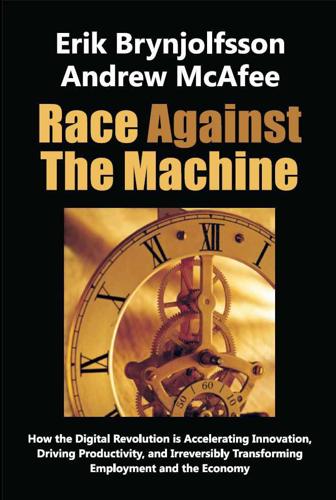
Race Against the Machine: How the Digital Revolution Is Accelerating Innovation, Driving Productivity, and Irreversibly Transforming Employment and the Economy
by
Erik Brynjolfsson
Published 23 Jan 2012
Processor speeds improved by a factor of 1,000, but these gains were dwarfed by the algorithms, which got 43,000 times better over the same period. The second concept relevant for understanding recent computing advances is closely related to Moore’s Law. It comes from an ancient story about math made relevant to the present age by the innovator and futurist Ray Kurzweil. In one version of the story, the inventor of the game of chess shows his creation to his country’s ruler. The emperor is so delighted by the game that he allows the inventor to name his own reward. The clever man asks for a quantity of rice to be determined as follows: one grain of rice is placed on the first square of the chessboard, two grains on the second, four on the third, and so on, with each square receiving twice as many grains as the previous.
…
The difficulty of automating their work reminds us of a quote attributed to a 1965 NASA report advocating manned space flight: “Man is the lowest-cost, 150-pound, nonlinear, all-purpose computer system which can be mass-produced by unskilled labor.” Even in the domain of pure knowledge work—jobs that don’t have a physical component—there’s a lot of important territory that computers haven’t yet started to cover. In his 2005 book The Singularity Is Near: When Humans Transcend Biology, Ray Kurzweil predicts that future computers will “encompass … the pattern-recognition powers, problem-solving skills, and emotional and moral intelligence of the human brain itself,” but so far only the first of these abilities has been demonstrated. Computers so far have proved to be great pattern recognizers but lousy general problem solvers; IBM’s supercomputers, for example, couldn’t take what they’d learned about chess and apply it to Jeopardy!
…
In addition, Rob Atkinson, Yannis Bakos, Susanto Basu, Menzie Chinn, Robert Gordon, Lorin Hitt, Rob Huckman, Michael Mandel, Dan Snow, Zeynep Ton and Marshall van Alstyne were very generous with their insights. We also benefited greatly from talking with people in industry who are making and using incredible technologies, including Rod Brooks, Paul Hofmann Ray Kurzweil, Ike Nassi, and Hal Varian. We presented some of the ideas contained here to seminar audiences at MIT, Harvard Business School, Northwestern, NYU, UC/Irvine, USC’s Annenberg School, SAP, McKinsey, and the Information Technology and Innovation Foundation. We also presented related work at conferences including WISE, ICIS, Techonomy, and the Aspen Ideas Festival.

The Lights in the Tunnel
by
Martin Ford
Published 28 May 2011
Among people who work in the field of computer technology, it is fairly routine to speculate about the likelihood that computers will someday approach, or possibly even exceed, human beings in general capability and intelligence. Speaking at an industry conference in 2007, Google co-founder Larry Page said, “We have some people at Google [who] are really trying to build artificial intelligence and to do it on a large scale. It’s not as far off as people think.”1 Ray Kurzweil, a well-known inventor, author and futurist, states quite categorically that he expects computers to become at least as intelligent as humans by the year 2029.2 While other experts are far more conservative about the prospect for machines that can achieve genuine intelligence, there can be little doubt that computers and robots are going to become dramatically more capable and flexible in the coming years and decades.
…
That date is nearly 60 years before the cutoff date of 2089 that we set at the beginning of this chapter. What would Bill have in 2089? 1.4 quadrillion dollars. This is over one trillion times the 2009 amount of $1,300! These numbers should give you a sense of the incredible degree of technological acceleration we can expect over the coming years and decades. As futurist and inventor Ray Kurzweil writes, “Exponential [or geometric] growth is deceptive. It starts out almost imperceptibly and explodes with unexpected fury.”11 How confident can we be that Moore’s Law will continue to be sustainable in the coming years and decades? Evidence suggests that it is likely to hold true for the foreseeable future.
…
Nonetheless, I would be remiss if I didn’t include the fact that many extremely well regarded individuals with deep experience in science and technology have a far more ambitious view of what is ultimately possible. World-renowned cosmologist and author of the book, A Brief History of Time, Stephen Hawking, has said, “Computers are likely to overtake humans in intelligence at some point in the next hundred years.”35 Inventor and author Ray Kurzweil, who received the National Medal of Technology from President Clinton in 1999, is far more optimistic and predicts that machines will achieve true intelligence by 2029. Kurzweil is also one of the leading proponents of the technological singularity, which he expects to occur by the year 2045.36 This concept, which was originally introduced by the mathematician and author Vernor Vinge,37 suggests that at some point in the future, technological progress will simply explode incomprehensibly.

Rise of the Robots: Technology and the Threat of a Jobless Future
by
Martin Ford
Published 4 May 2015
Gary Marcus, “Why We Should Think About the Threat of Artificial Intelligence,” New Yorker (Elements blog), October 24, 2013, http://www.newyorker.com/online/blogs/elements/2013/10/why-we-should-think-about-the-threat-of-artificial-intelligence.html. 13. P. Z. Myers, “Ray Kurzweil Does Not Understand the Brain,” Pharyngula Science Blog, August 17, 2010, http://scienceblogs.com/pharyngula/2010/08/17/ray-kurzweil-does-not-understa/. 14. Barrat, Our Final Invention: Artificial Intelligence and the End of the Human Era, pp. 7–21. 15. Richard Feynman, “There’s Plenty of Room at the Bottom,” lecture at CalTech, December 29, 1959, full text available at http://www.zyvex.com/nanotech/feynman.html. 16.
…
Stephen Lacey, “Chart: 2/3rds of Global Solar PV Has Been Installed in the Last 2.5 Years,” GreenTechMedia.com, August 13, 2013, http://www.greentechmedia.com/articles/read/chart-2–3rds-of-global-solar-pv-has-been-connected-in-the-last-2.5-years. 4. Lauren Feeney, “Climate Change No Problem, Says Futurist Ray Kurzweil,” The Guardian, February 21, 2011, http://www.theguardian.com/environment/2011/feb/21/ray-kurzweill-climate-change. 5. “Climate Change in the American Mind: Americans’ Global Warming Beliefs and Attitudes in April 2013,” Yale Project on Climate Change Communication/George Mason University Center for Climate Change Communication, http://environment.yale.edu/climate-communication/files/Climate-Beliefs-April-2013.pdf. 6.
…
It is perhaps not coincidental that they also tend to have been very successful in the new economy. The most prominent digital optimists typically live at the extreme left of the long tail—or, even better, they’ve perhaps founded a company that owns the entire distribution. In a PBS television special that aired in 2012, inventor and futurist Ray Kurzweil was asked about the possibility of a “digital divide”—meaning that only a small percentage of the population will be able to thrive in the new information economy. Kurzweil dismissed the idea of such a divide and instead pointed to empowering technologies like mobile phones. Anybody with a smart phone, he said, “is carrying around billions of dollars of capability circa 20 or 30 years ago.”12 Left unsaid was how the average person is supposed to leverage that technology into a livable income.

Boom: Bubbles and the End of Stagnation
by
Byrne Hobart
and
Tobias Huber
Published 29 Oct 2024
Sinsheimer, The Strands of Life (Berkeley, University of California Press, 1994), 287. 385 Noble, The Religion of Technology, 195. 386 When asked whether he believes that God exists, the preeminent transhumanist Ray Kurzweil replied, “Not yet,” implying that the development of artificial general intelligence represents the active building toward a god. John Rennie, “The Immortal Ambitions of Ray Kurzweil: A Review of Transcendent Man,” Scientific American, February 15, 2011, https://www.scientificamerican.com/article/the-immortal-ambitions-of-ray-kurzweil/. 387 Vernor Vinge, “The Coming Technological Singularity: How to Survive in the Post-Human Era,” VISION-21 Symposium, March 30–31, 1993, https://edoras.sdsu.edu/~vinge/misc/singularity.html; Kurzweil, The Age of Spiritual Machines; Kurzweil, The Singularity Is Near. 388 Echoing John’s apocalyptic vision in Revelation 21:4 of a New Jerusalem descending from Heaven in which “there will be no more death or sorrow or crying or pain,” the singularity, according to its believers, will “wipe away all tears from their eyes; and there shall be no more death.”
…
The End of Time: A Meditation on the Philosophy of History. San Francisco: Ignatius Press, 2011. Ratzinger, Joseph. Introduction to Christianity. San Francisco: Ignatius Press, 2004. Rennie, John. “The Immortal Ambitions of Ray Kurzweil: A Review of Transcendent Man.” Scientific American, February 15, 2011. https://www.scientificamerican.com/article/the-immortal-ambitions-of-ray-kurzweil/. Schmitt, Carl. “Gespräch mit Eduard Spranger.” In Ex Captivitate Salus. Berlin: Duncker & Humblot, 2002. Sinsheimer, Robert L. The Strands of Life. Berkeley, University of California Press, 1994. Soros, George.
…
Dick (Washington, DC: NASA History Program Office, 2015), 509. 195 Malcolm McConnell, Challenger: A Major Malfunction (New York: Doubleday Books, 1987). 196 Slotkin, Doing the Impossible, 39. 197 Fishman, One Giant Leap, 460. 198 Fishman, One Giant Leap, 241. 199 For the techno-optimist version of this prophecy, see Ray Kurzweil, The Singularity Is Near: When Humans Transcend Biology (New York: Penguin, 2005). 200 Gordon E. Moore, “Cramming More Components Onto Integrated Circuits,” Proceedings of the IEEE 86, no. 1 (1998): 82–85. 201 A few days after the Moon landing, Wernher von Braun prepared a plan for manned Mars missions, which included lunar-orbital space stations, Mars surface bases, and nuclear-powered Earth–Moon shuttles.
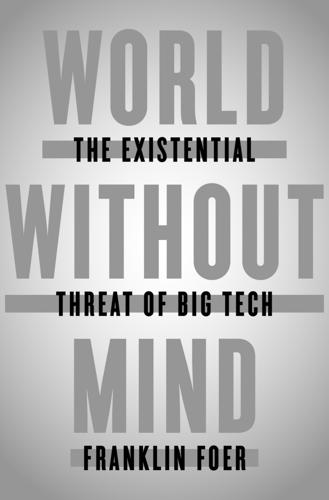
World Without Mind: The Existential Threat of Big Tech
by
Franklin Foer
Published 31 Aug 2017
His parents, Viennese Jews, fled on the eve of the Anschluss: Ray Kurzweil, Ask Ray blog, “My Trip to Brussels, Zurich, Warsaw, and Vienna,” December 14, 2010. he made an appearance on Steve Allen’s game show, I’ve Got a Secret: Ray Kurzweil, “I’ve Got a Secret,” 1965, https://www.youtube.com/watch?v=X4Neivqp2K4. “to invent things so that the blind could see”: Steve Rabinowitz quoted in Transcendent Man, directed by Barry Ptolemy, 2011. “profoundly sad, lonely feeling that I really can’t bear it”: Transcendent Man. “strong AI and nanotechnology can create any product”: Ray Kurzweil, The Singularity Is Near (Viking Penguin, 2005), 299.
…
For many of those seeking to invent AI, their job is just a heap of mathematics, a thrilling intellectual challenge. But for a significant chunk of others, it’s a theological pursuit. They are at the center of a transformative project that will culminate in the dawning of a new age. The high priest of this religion is a rhetorically gifted, canny popularizer called Ray Kurzweil. His ecstatic vision for the future was born in the greatest catastrophe of the past. The penumbra of the Holocaust hangs over him. His parents, Viennese Jews, fled on the eve of the Anschluss. The accretion of so many difficult years took its toll on his father, a classical conductor and intellectual.
…
“strong AI and nanotechnology can create any product”: Ray Kurzweil, The Singularity Is Near (Viking Penguin, 2005), 299. “Each epoch of evolution has progressed more rapidly”: Kurzweil, Singularity, 40. “version 1.0 biological bodies”: Kurzweil, Singularity, 9. “We will be software, not hardware”: Ray Kurzweil, The Age of Spiritual Machines (Viking Penguin, 1999), 129. “What, after all, is the difference between a human”: Kurzweil, Spiritual Machines, 148. “Virtual sex will provide sensations that are more intense”: Kurzweil, Spiritual Machines, 147. “Anybody who is going to be resisting”: Peter Diamandis, quoted in Transcendent Man. “Our civilization will then expand outward”: Kurzweil, Singularity, 389.
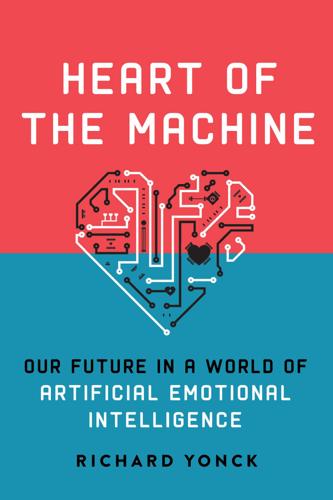
Heart of the Machine: Our Future in a World of Artificial Emotional Intelligence
by
Richard Yonck
Published 7 Mar 2017
The corollary of Moore’s law was that this trend saw us packing more and more computer processing power into an ever smaller space, reducing power requirements, heat generation, and most importantly cost per processor cycle. By some measures, this pace has slowed in recent years, leading to many near-perennial predictions that Moore’s law is coming to an end. But this presumes the industry sticks to the same production methods and technologies. As pointed out by inventor, futurist, and author Ray Kurzweil, the integrated circuit referenced by Moore’s law is but the fifth paradigm of a much larger trend that can be traced back to the beginning of the twentieth century. Electromechanical processing, relays, vacuum tubes, and transistors all followed a similar pattern of doubling their processing power relative to cost over time.
…
This accelerating change has been with us all along, but it’s become more evident in recent decades because it has finally advanced to the point when much of it occurs on human-scale time frames. When our hominid ancestors began making tools, this change generally took place so slowly it was impossible to see even across many lifetimes. Today, new technologies transform society on a regular basis. Ray Kurzweil refers to this as the “Law of Accelerating Returns” because technology essentially exists in a positive feedback loop, forcing the apparent rate of change to speed up over time.11 Some aspects of this reinforcement lead to secondary levels of exponential growth; Kurzweil maintains that exponential growth itself grows exponentially.
…
Skin conductivity devices, such as iCalm, the Q sensor, and Embrace, and emotional social-intelligence prosthetics like MindReader only hint at the potential. Consider the strides that have been made in interface development as researchers design new ways to help those with different sensory challenges and handicaps. Ray Kurzweil developed a portable reader for the blind. Various methods have sought to use computers to make up for lost sight, hearing, or mobility. There are even brain-computer interfaces (BCIs) that seek to give paraplegics and those with locked-in syndrome the ability to communicate and maneuver devices such as wheelchairs using only their thoughts.
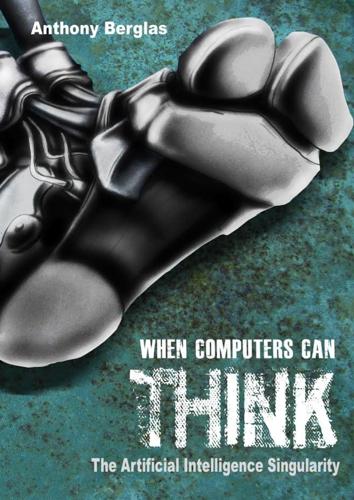
When Computers Can Think: The Artificial Intelligence Singularity
by
Anthony Berglas
,
William Black
,
Samantha Thalind
,
Max Scratchmann
and
Michelle Estes
Published 28 Feb 2015
We will all be gathered into the cloud to live in bliss and harmony. This line of thinking is often referred to as the rapture of the geeks. Rapture of the geeks Multiple (10) These views are purported by some people in a community that identifies itself with the term Singularity. A leader in this field is the insightful futurologist Ray Kurzweil whose many books are recommended reading. Whilst aware of the dangers, Kurzweil is generally optimistic about the future. He personally has undertaken a strict regime of diet, drugs and lifestyle changes in an attempt to live long enough to experience this future for himself. When asked about the dangers of artificial intelligence, Kurzweil replied that an AGI will reflect our values because it will be us.
…
It seems to be an empirical fact of nature that improvements at each generation of technology are at a roughly fixed proportion to the previous generation, which produces the exponential growth. The chart above shows this trend being very consistent over a period of sixty years. Long term growth Ray Kurzweil has argued that this rise in complexity also happens over geological time-scales. In the following chart various landmarks in evolutionary development have been plotted with a logarithmic scale on both axes. Thus the first step on the x axis from 1010 years to 109 years represents almost ten billion years whereas the last step from 102 to 101 represents just ninety years.
…
As a science fiction writer, he felt that there was “an opaque wall across the future” through which he could not see. That wall was caused largely by the prospect of hyper-intelligent computers programming themselves. Vinge was very concerned as to the fate of mankind as a result of such an eventuality. The books by Ray Kurzweil redefined the term somewhat to simply refer to the ever accelerating rate of technological progress. If one extrapolates the graphs above several decades into the future they suggest that progress will be unimaginably fast. As previously mentioned, Kurzweil is generally optimistic as to what will result.
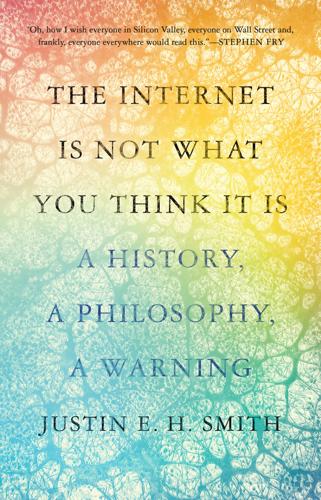
The Internet Is Not What You Think It Is: A History, a Philosophy, a Warning
by
Justin E. H. Smith
Published 22 Mar 2022
Susan Schneider argues that it is very likely that there are more intelligent beings besides us in the universe, yet that these beings are likely not conscious.7 In her view there is good reason to think that other biological beings elsewhere in the universe created mechanical computing beings, and that these beings then surpassed them and took over from them, bringing about singularity events elsewhere in the cosmos comparable to the one that Ray Kurzweil predicts—or at least predicted in 2005—will take place in 2045,8 without ever experiencing a dawning of self-awareness, of “perception” in Leibniz’s sense, of qualitative first-person experience. Schneider reasons that if alien superintelligent beings were originally designed by conscious beings such as ourselves, these conscious beings would likely have had no obvious reason to equip them with consciousness.
…
Few theorists of the coming AI takeover, again, see the dawning of AI consciousness as a necessary or even likely part of this projected scenario. Yet the way they talk about it is often confused enough to make it unclear whether they envision conscious machines as a likely development. A great part of the confusion is that few AI theorists have a clear or coherent account of what consciousness is. Ray Kurzweil speaks of a near future in which machines will have “emotional intelligence,” but it is not clear whether this simply means the ability to algorithmically discern moods (as our social-media tools can already do) or whether it means the capacity to experience emotion. There is significant discussion in the literature about the possibility of developing machines that are capable of holding an artificial theory of mind.14 But even a theory of mind can be accounted for in the minimal sense of simply having the ability to anticipate how mind-endowed beings might behave in particular circumstances, which is something that it does not require a mind to do: software used by department stores generates coupons for consumers based on their previous purchases, without, obviously, truly thinking about these purchases.
…
We might frame this a bit differently and say that the idea of an artificially created superintelligence has been a sort of transcendental idea in the sense of this term as understood by Kant: an idea of something we do not really understand, something it lies beyond our ability to take as an object of our faculty of understanding, but that nonetheless guides or “regulates,” to use Kant’s terminology, what we end up doing with the things we do understand. Perhaps tech enthusiasts such as Ray Kurzweil have mistaken this transcendental idea for something constitutive of the project of computer science. They have allowed themselves to remain captivated by an understanding of human artifice that ultimately belongs to the pre-scientific era: one that takes our probing into nature, and our channeling of the forces of nature to our own purposes, as something that is ultimately magical, an unleashing of mysterious forces.

Exponential Organizations: Why New Organizations Are Ten Times Better, Faster, and Cheaper Than Yours (And What to Do About It)
by
Salim Ismail
and
Yuri van Geest
Published 17 Oct 2014
In today’s corporate world there is a new breed of institutional organism—the Exponential Organization—loose on Earth, and if you don’t understand it, prepare for it and, ultimately, become it, you will be disrupted. The concept of the Exponential Organization (ExO) first arose at Singularity University, which I co-founded in 2008 with noted futurist, author, entrepreneur-turned-AI director at Google, Ray Kurzweil. The goal was to create a new kind of university, one whose curriculum was constantly being updated. For that reason SU was never accredited—not because we didn’t care, but because the curriculum was changing too fast. SU would focus only on the exponentially growing (or accelerating technologies) that were riding on the back of Moore’s Law.
…
The sixty-year history of Moore’s Law—basically, that the price/performance of computation will double about every eighteen months—has been well documented. And we’ve come a long way since 1971, when the original circuit board held just two hundred chips; today we have teraflops of computing operating within the same physical space. That steady, extraordinary, and seemingly impossible pace led futurist Ray Kurzweil, who has studied this phenomenon for thirty years, to make four signature observations: First, the doubling pattern identified by Gordon Moore in integrated circuits applies to any information technology. Kurzweil calls this the Law of Accelerating Returns (LOAR) and shows that doubling patterns in computation extend all the way back to 1900, far earlier than Moore’s original pronouncement.
…
Every expert labeled the project a failure, pointing out that at seven years for just 1 percent, it would take seven hundred years to finish the sequencing. Craig Venter, one of the principal researchers, received calls from friends and colleagues imploring him to stop the project and not embarrass himself further. “Save your career,” he recalls them saying. “Return the money.” When Ray Kurzweil was asked his perspective, however, his view of the “impending disaster” was quite different. “1 percent,” he said. “That means we’re halfway done.” What Kurzweil got that no one else did was that the amount sequenced was doubling every year. 1 percent doubling seven times is 100 percent. Kurzweil’s math was correct, and in fact the project was completed in 2001, early and under budget.

Augmented: Life in the Smart Lane
by
Brett King
Published 5 May 2016
Statisticians call this sort of graph a “hockey stick curve” as it indicates evidence of an exponential growth scenario. In the 20th century, graphs like this appeared with increasing regularity, especially where technology was involved. This led to the hypothesis of what mathematician John von Neumann and futurist Ray Kurzweil dubbed the singularity (sometimes called the technological singularity)—a time when technological advancement reaches escape velocity. In theory, the singularity means that we could solve any problem mankind faces through the application of increasingly powerful computing. Figure 1.2: Major technology improvements are accelerating.
…
It’s Happened Before, It Will Happen Again Not wanting to borrow too much from the Matrix or Battlestar Galactica, the reality is that this cycle of new technologies that act as the catalyst for entirely new industries, but at the same time dramatically impact employment patterns and social conditions, has been happening repeatedly over the last 200 to 250 years. Commentators I admire like Ray Kurzweil and Peter Diamandis have previously classified this change as part of the coming “singularity”. Diamandis called it the “Age of Abundance,”1 but a factory worker at Ford Motor Company in Detroit or at Foxconn in China might have very different views today. Textile artisans in the early 1800s, chimney sweeps, farm tillers in the 1920s, video rental store clerks, 1-hour photo processing machine operators, newspaper reporters and taxi drivers are all examples of jobs that have been significantly impacted by technological change.
…
“It took $10 billion to sequence the first human genome, today we can do the same for 1 millionth of that cost. It took 5 years to sequence the AIDS virus … today that would take less than a day, but in 10 years’ time the computers that do these tasks will be a million times more powerful than they are today.” Ray Kurzweil, Exponential Finance Keynote, New York City, June 2015 The possibilities are mind-blowing. If you think of the Augmented Age, AI and technology as a threat to humanity, then perhaps the biggest problem you might have is that your choice to participate in this new world may be taken away from you by a generation that is extremely comfortable with tech.

Survival of the Richest: Escape Fantasies of the Tech Billionaires
by
Douglas Rushkoff
Published 7 Sep 2022
Yet here they were, asking a Marxist media theorist for advice on where and how to configure their doomsday bunkers. That’s when it hit me: at least as far as these gentlemen were concerned, this was a talk about the future of technology. Taking their cue from Tesla founder Elon Musk colonizing Mars , Palantir’s Peter Thiel reversing the aging process , or artificial intelligence developers Sam Altman and Ray Kurzweil uploading their minds into supercomputers, they were preparing for a digital future that had less to do with making the world a better place than it did with transcending the human condition altogether. Their extreme wealth and privilege served only to make them obsessed with insulating themselves from the very real and present danger of climate change, rising sea levels, mass migrations, global pandemics, nativist panic, and resource depletion.
…
For there’s the real problem those billionaires identified when we were gaming out their bunker strategies. The people and things we’d be leaving behind are still out there . And the more we ask them to service our bubbles, the more oppressed and angry they’re going to get, and then the more bubbled we will want to be. No matter how far futurist Ray Kurzweil gets with his artificial intelligence project at Google, we cannot simply rise from the chrysalis of matter as pure consciousness. There’s no Dropbox plan that will let us upload mind and soul from the body to the cloud. We are still here on the ground, with the same people and on the same planet we are being encouraged to leave behind.
…
Just as our proprietary GPS maps don’t show us the restaurants that refuse to advertise on the platform, the digital landscape to which they have migrated will be free of poverty, pollution, and whatever else the rest of us have to deal with. As always, the narrative ends in some form of escape for those rich, smart, or singularly determined enough to take the leap. Mere mortals need not apply. I got into a heated discussion about this with transhumanist Ray Kurzweil. Being interviewed for a TV show, Ray and I had each just shared our most optimistic visions for the ways technology would redefine what it means to be human. For me, it was about enhanced connectivity and maybe a new found appreciation for the non-technological, sacred weirdness of corporeal existence.

Exponential: How Accelerating Technology Is Leaving Us Behind and What to Do About It
by
Azeem Azhar
Published 6 Sep 2021
At this scale, particles are so small that they behave like waves, meaning they can pass through physical barriers and stumble into places they shouldn’t be. Moore’s Law is being derailed by quantum-drunk electrons. But this doesn’t mean that the growth of computing power will decelerate. The computing revolution shows no sign of slowing down. Ray Kurzweil, one of the world’s leading technology researchers, posits a theory of technological development that seeks to explain why. Technology, he says, tends to develop at an accelerating pace – according to what he calls ‘the Law of Accelerating Returns’. At the heart of Kurzweil’s model is a positive feedback loop.
…
The graph over the page plots the growth in computation used for state-of-the-art AI systems, set against the exponential curve of Moore’s Law. If AI’s usage of computational power had followed the Moore’s Law curve, it would have increased about seven times in six years. In fact, usage increased 300,000 times.20 It’s an astonishing statistic. But it can be explained by precisely the process that Ray Kurzweil identified decades earlier. At just the moment we were bumping up against the limits of our old method – cramming more transistors onto a chip – scientists came up with a novel solution, drawing on a slightly different approach. The answer lay in the kind of chips used. AI researchers like Krishevsky replaced traditional computer chips with ones that had been developed to draw high-end graphics for video games.
…
It was a decade of looking at an exponential technology, dropping in price and increasing in scale, and systematically getting it wrong.18 The problem is not just that we underestimate exponential growth, however. Experts who are mindful of the power of exponentiality can also be prone to overestimating its power. In his 1999 book The Age of Spiritual Machines, Ray Kurzweil predicted that by 2019 a $1,000 computer would be ‘approximately equal to the computational ability of the human brain’.19 This proved optimistic. When trying to square rapid, exponential growth with an inordinately complex issue, a slight error in your basic assumptions can throw your whole prediction off.

The Second Machine Age: Work, Progress, and Prosperity in a Time of Brilliant Technologies
by
Erik Brynjolfsson
and
Andrew McAfee
Published 20 Jan 2014
They show up as straight lines and their speed is easier to evaluate; the bigger the exponent, the faster they grow, and the steeper the line. Impoverished Emperors, Headless Inventors, and the Second Half of the Chessboard Our brains are not well equipped to understand sustained exponential growth. In particular, we severely underestimate how big the numbers can get. Inventor and futurist Ray Kurzweil retells an old story to drive this point home. The game of chess originated in present-day India during the sixth century CE, the time of the Gupta Empire.7 As the story goes, it was invented by a very clever man who traveled to Pataliputra, the capital city, and presented his brainchild to the emperor.
…
Its accumulated doubling will eventually yield a computer with more processing and storage capacity than the human brain. Once this happens, things become highly unpredictable. Machines could become self-aware, humans and computers could merge seamlessly, or other fundamental transitions could occur. Ray Kurzweil, who has done more than anyone else to explain the power of exponential improvement, wrote in his 2005 book The Singularity Is Near that at current rates of progress these transitions will occur by about 2045.7 How plausible is singularity or the Terminator? We honestly don’t know. As with all things digital it’s wise never to say never, but we still have a long way to go.
…
In the former group Susan Athey, David Autor, Zoe Baird, Nick Bloom, Tyler Cowen, Charles Fadel, Chrystia Freeland, Robert Gordon, Tom Kalil, Larry Katz, Tom Kochan, Frank Levy, James Manyika, Richard Murnane, Robert Putnam, Paul Romer, Scott Stern, Larry Summers, and Hal Varian have helped our thinking enormously. In the latter category are Chris Anderson, Rod Brooks, Peter Diamandis, Ephraim Heller, Reid Hoffman, Jeremy Howard, Kevin Kelly, Ray Kurzweil, John Leonard, Tod Loofbourrow, Hilary Mason, Tim O’Reilly, Sandy Pentland, Brad Templeton, and Vivek Wadhwa. All of them were incredibly generous with their time and tolerant of our questions. We did our best to understand the insights they shared with us, and apologize for whatever mistakes we made in trying to convey them in this book.
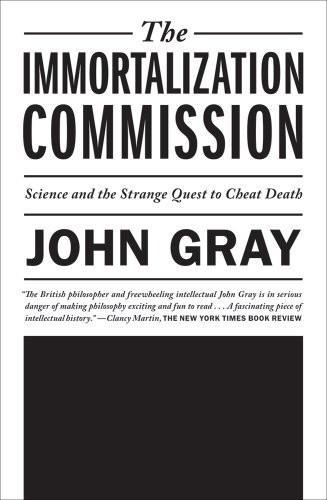
The Immortalization Commission: Science and the Strange Quest to Cheat Death
by
John Gray
Published 11 Apr 2011
p. 213 Drunk on the emptied wine-cup of the earth …and seconds passed in heavy honeyed drops: George Faludy, Selected Poems of George Faludy 1933–80, ed. and trans. Robin Skelton, Athens: University of Georgia Press, 1985, 98. p. 214 Transcend: Nine Steps to Living Well Forever: Ray Kurzweil and Terry Grossman, MD, Transcend: Nine Steps to Living Well Forever, New York: Rodale Books, 2009. p. 215 The law of accelerating returns …This is the destiny of the universe: Ray Kurzweil, The Singularity Is Near: When Humans Transcend Biology, New York: Viking, 2005, 24–9. p. 217 the universe will become sublimely intelligent: Ibid., 390. p. 217 A common view is that science has consistently been correcting …until the entire universe is at our finger-tips: Ibid., 487.
…
Wells arrives in Russia and falls in love – Moura, Maxim Gorky’s confidante and Wells’ ‘Lover-Shadow’ – Robert Bruce Lockhart, Moura and the ‘Lockhart plot’ – Wells discovers Moura’s secret life – Moura’s laughter – The smell of honey – Wells, Darwin and Dr Moreau: ‘beasts that perish’ – ‘There is no “pattern of things to come”’ – Maxim Gorky, God-builder – Anatoly Lunacharsky, occultist and Soviet Commissar of Enlightenment – Vladimir Bekhterev, neurologist and parapsychologist, pays a visit to Stalin – Lamarck and Lysenko – The humanism of the White Sea Canal – Gorky on the extermination of rodents – Immortality and rocket science: Konstantin Tsiolkovsky – Stalin, an enormous flea – Gorky’s travelling suitcase – Gorky’s last word – Leonid Krasin, Soviet minister, money-launderer and cryogenics pioneer – Nikolai Federov, Orthodox mystic and techno-immortalist – The Immortalization Commission – Kazimir Malevich, Cubo-Futurist and inspirer of Lenin’s tomb – Victory over the Sun – Two Chekist supermen – Stalin’s coffee machine – The death machine – Eau de Cologne, ashes and freshly baked bread – Walter Duranty, disciple of Aleister Crowley and apologist for Stalin – Method acting and the show trials – Moura’s bonfire 3 Sweet Mortality From automatic writing to cryonic suspension – Freezing and starving yourself to everlasting life – Global warming and the mortal Earth – Ray Kurzweil and the Singularity – Artificial intelligence and virtual evolution – Immortalism, a programme for human extinction – Science as a machine for generating insoluble problems – Natural laws or primordial chaos – Rain – The sweet scent of death in Casablanca – The fall of a leaf Acknowledgements Permissions Notes Illustrations 1.
…
Contingency means humans will always be subject to fate and chance, mystery that they will always be surrounded by the unknowable. For many this state of affairs is intolerable, even unthinkable. Using advancing knowledge, they insist, the human animal can transcend the human condition. A contemporary example is the American visionary Ray Kurzweil. In The Singularity Is Near: When Humans Transcend Biology, Kurzweil suggests that a world-transforming increase in the growth of knowledge is imminent. Human ingenuity has created machines with exponentially increasing capacity to process information. Given the law of accelerating returns it cannot be long before artificial intelligence overtakes its human inventors.
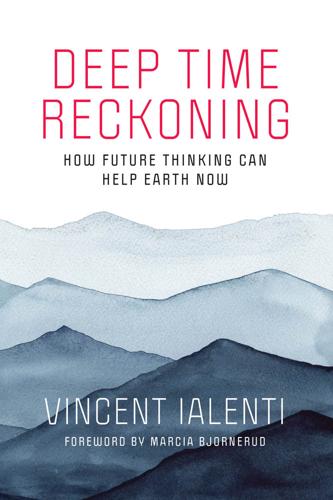
Deep Time Reckoning: How Future Thinking Can Help Earth Now
by
Vincent Ialenti
Published 22 Sep 2020
TOWARD A GUARDED ENTHUSIASM FOR EXPERTISE I emerged from fieldwork unapologetically optimistic that human hearts, minds, and technological ingenuities can adapt to more long-sighted ways of life. I remain optimistic that Safety Case experts’ spirit of modesty, hard work, pragmatism, and self-reflection can offer guidance. However, my optimism for technology remains more tempered than that of, say, futurists like Ray Kurzweil. Like nearly all of the Safety Case experts I met, I spend very little time heralding “the Singularity”—an overconfident vision of a future in which humans and machines converge. Kurzweil and his acolytes claim this convergence can help us achieve superhuman intelligence, transcend death by stopping aging processes, and upload our minds to computers.81 That sort of overzealous faith in progress is part of what got us into this Anthropocene mess in the first place.
…
Litmanen, “Temporary Nature of Societal Risk Evaluation”; Ari Lampinen, “An Analysis of the Justification Arguments in the Application for the New Nuclear Reactor in Finland,” in The Renewal of Nuclear Power in Finland. 79. Case Pyhäjoki, “Artistic Reflections on Nuclear Influence,” Call for Participants, Bioart Society, May 31, 2013, https://bioartsociety.fi/projects/case-pyhajoki/posts/call-case-pyhajoki-artistic-reflections-on-nuclear-influence. 80. Newman, Digital News Report. 81. Ray Kurzweil, The Singularity Is Near: When Humans Transcend Biology (New York: Viking Press, 2005). 82. Thomas Kuhn, The Structure of Scientific Revolutions (Chicago: University of Chicago Press, 1969). 83. Brand, Clock of the Long Now. 1 HOW TO RIDE ANALOGIES ACROSS DEEP TIME 12020 CE: A solitary farmer looks out over her pasture, surrounded by a green forest of heath trees.
…
We examine dozens of other long-termist case studies, and we write detailed essays about them, called “reckonings.” Now let’s imagine we are in high school. We watch short films on multitimescale awareness released by experts from the Global Deep Time Reckoning Association proposed in chapter 3. We write essays critically analyzing influential renderings of the future. These include Ray Kurzweil’s vision of the Singularity,6 Marxists’ past visions of coming communist utopias,7 and Alan Weisman’s The World without Us.8 We take notes on astrobiologist Lewis Dartnell’s how-to manual for restarting human progress after global collapse, titled The Knowledge: How to Rebuild Our World from Scratch.9 We write book reviews of post-apocalyptic science fiction novels like Walter Miller Jr.’s A Canticle for Leibowitz.10 We are assigned textbooks showcasing long-termist tools stored for posterity in the Global Deep Time Reckoning Information Repository proposed in chapter 4.
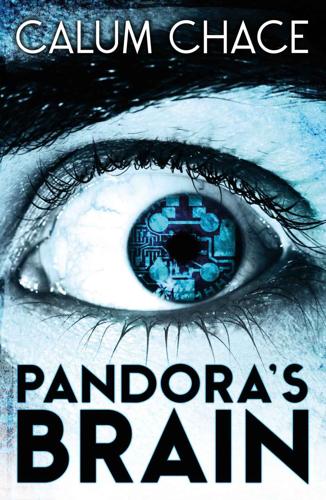
Pandora's Brain
by
Calum Chace
Published 4 Feb 2014
He looked away, turning back to his rucksack to avoid making Matt more self-conscious. Uncomfortable, Matt changed the subject. ‘So have you read any transhumanist literature?’ ‘Not really: as I say, just the odd article here and there. If you are curious about their ideas, perhaps you should read one of Ray Kurzweil’s books: he seems to be the best-known proponent. He’s an interesting chap, actually. He was a successful software developer – made a lot of money out of speech recognition software, if I remember right. He’s also written several books about an event called a Singularity, when the rate of technological progress becomes so fast that mere humans are unable to keep up, and we will have to upload our minds into computers.
…
It’s just . . . you know . . . memories.’ She took a deep breath and brightened her face. ‘I tell you what. I’ll call your uncle Leo after dinner and see if he has any ideas. Better still, if he has any connections.’ After dinner, ensconced in his bedroom, Matt followed Simon Jones’ suggestion and looked up Ray Kurzweil on Amazon, and downloaded his book ‘The Singularity is Near.’ Before starting to read it, he browsed the book’s reviews. The majority saw Kurzweil as a man with intriguing ideas about the future of humanity, and some even hailed him as an inspirational prophet of a utopian future. A minority were alienated by this utopian outlook, accusing Kurzweil of championing a cult of technology.
…
‘AI still has many critics, who claim that artificial minds will not be created for thousands of years, if ever. But impressed by the continued progress of Moore’s Law, which observes that computer processing power is doubling every 18 months, more and more scientists now believe that humans may create an artificial intelligence sometime this century. One of the more optimistic, Ray Kurzweil, puts the date as close as 2029.’ As the lights came back up, Ross was standing again, poised in front of the seated guests. ‘So, Professor Montaubon. Since David and Matt’s dramatic adventure the media has been full of talk about artificial intelligence. Are we just seeing the hype again? Will we shortly be heading to into another AI winter?’
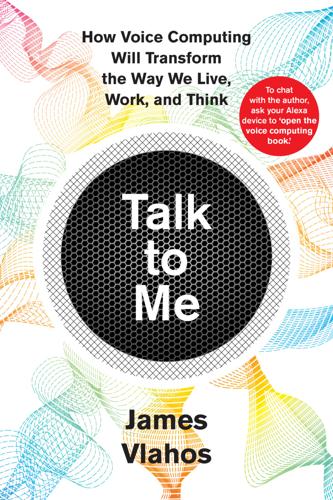
Talk to Me: How Voice Computing Will Transform the Way We Live, Work, and Think
by
James Vlahos
Published 1 Mar 2019
He wants it to pass what he calls the “Fredric Kurzweil Turing test,” meaning that the avatar would be indistinguishable from Ray’s real father were he alive today. Kurzweil is known for making outlandish predictions about the future. His dadbot ambitions should be taken with a grain of salt if not a whole spoonful. But Ray Kurzweil is, well, Ray Kurzweil—honored by three presidents for his innovations, the author of a book called How to Create a Mind, and a member of the National Inventors Hall of Fame. His research team at Google is the one that developed the core technology for Smart Reply, the automated email-answering feature discussed in chapter 5.
…
“I have passed it on to my twin, so to speak,” Fritzshall told a journalist. “When I’m no longer here, she can answer for what’s asked of me. She will carry on the story forever.” The prospect of replicas far more advanced than the Dadbot looms large in an imagination-stirring meeting that I have in fall 2017 at Google. It’s with Ray Kurzweil, the author and futurist best known for predicting the “singularity,” an age when humans and machines will supposedly merge. As a head of engineering, Kurzweil leads a team working on machine learning and natural-language processing. But he and I are not talking about anything officially connected to Google.
…
That would be deeply upsetting, but I think I could eventually come to grips with it. Unlike Kurzweil, I don’t believe that we can beat death. But people can, amazingly enough, synthesize life. That we exist is a miracle, and that we can create things that exist—biological, mechanical, or a curious mix of the two—is a miracle, too. At the end of my meeting with Ray Kurzweil, he had extended an invitation. If I wanted, he and his colleagues could help me to create a next-generation Dadbot. “Sometime in the future when we get it set up, we could take the compilation of your father’s writings and create a chatbot using our technology,” Kurzweil says. “I would love that,” I say.
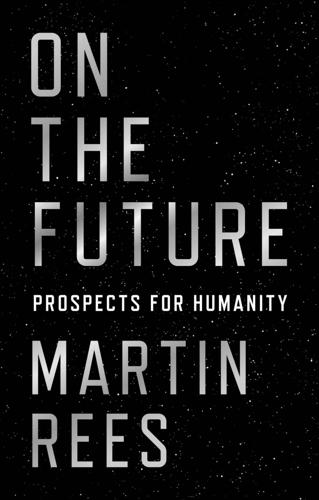
On the Future: Prospects for Humanity
by
Martin J. Rees
Published 14 Oct 2018
It is believed (very plausibly) that this internal ‘ecosystem’ is crucial to our health. The ‘push’ from Silicon Valley towards achieving ‘eternal youth’ stems not only from the immense surplus wealth that’s been accumulated there, but also because it’s a place with a youth-based culture. Those older than thirty are thought to be ‘over the hill’. The futurist Ray Kurzweil speaks zealously of attaining a metaphorical ‘escape velocity’—when medicine advances so fast that life expectancy rises by more than a year in each year, offering potential immortality. He ingests more than one hundred supplements a day—some routine, some more exotic. But he’s worried that ‘escape velocity’ may not be achieved within his ‘natural’ lifetime.
…
Once machines surpass human intelligence, they could design and assemble a new generation of even more intelligent machines. Some of the ‘staples’ of speculative science that flummox physicists today—time travel, space warps, and the ultracomplex—may be harnessed by the new machines, transforming the world physically. Ray Kurzweil (mentioned in section 2.1 in connection with cryonics) argues that this could lead to a runaway intelligence explosion: the ‘singularity’.13 Few people doubt that machines will one day surpass most distinctively human capabilities; the disagreements are about the rate of travel, not the direction.
…
David Silver et al., ‘Mastering the Game of Go without Human Knowledge’, Nature 550 (2017): 354–59. 10. https://en.wikipedia.org/wiki/Reported_Road_Casualties_Great_Britain. 11. The letter was organised by the Future of Life Institute, based at MIT. 12. Stuart Russell is quoted from the Financial Times, January 6, 2018. 13. See Ray Kurzweil, The Singularity Is Near: When Humans Transcend Biology (New York: Viking, 2005). 14. P. Hut and M. Rees, “How Stable Is Our Vacuum?” Nature 302 (1983): 508–9. 15. Derek Parfit’s arguments are presented in part 4 of his Reasons and Persons (New York: Oxford University Press, 1984). 16. Good surveys of these extreme risks are given in Nick Bostrom and Milan Ćirković, eds., Global Catastrophic Risks (Oxford: Oxford University Press, 2011); and Phil Torres, Morality, Foresight, and Human Flourishing: An Introduction to Existential Risks (Durham, NC: Pitchstone, 2018).

The Glass Cage: Automation and Us
by
Nicholas Carr
Published 28 Sep 2014
Interlude, with Grave Robber 1.Peter Merholz, “ ‘Frictionless’ as an Alternative to ‘Simplicity’ in Design,” Adaptive Path (blog), July 21, 2010, adaptivepath.com/ideas/friction-as-an-alternative-to-simplicity-in-design. 2.David J. Hill, “Exclusive Interview with Ray Kurzweil on Future AI Project at Google,” SingularityHUB, January 10, 2013, singularityhub.com/2013/01/10/exclusive-interview-with-ray-kurzweil-on-future-ai-project-at-google/. Chapter Eight: YOUR INNER DRONE 1.Asimov’s Rules of Robotics—“the three rules that are built most deeply into a robot’s positronic brain”—first appeared in his 1942 short story “Runaround,” which can be found in the collection I, Robot (New York: Bantam, 2004), 37. 2.Gary Marcus, “Moral Machines,” News Desk (blog), New Yorker, November 27, 2012, newyorker.com/online/blogs/newsdesk/2012/11/google-driverless-car-morality.html. 3.Charles T.
…
Underlying the company’s hyperactive solicitude is a dogged, almost monomaniacal pursuit of efficiency. Taking the misanthropic view of automation, Google has come to see human cognition as creaky and inexact, a cumbersome biological process better handled by a computer. “I envision some years from now that the majority of search queries will be answered without you actually asking,” says Ray Kurzweil, the inventor and futurist who in 2012 was appointed Google’s director of engineering. The company will “just know this is something that you’re going to want to see.”2 The ultimate goal is to fully automate the act of searching, to take human volition out of the picture. Social networks like Facebook seem impelled by a similar aspiration.
…
By putting a computer screen permanently within view, the high-tech eyeglasses would allow Google, through its Google Now service and other tracking and personalization routines, to deliver pertinent information to people whenever the device sensed they required advice or assistance. The company would fulfill the greatest of its ambitions: to automate the flow of information into the mind. Forget the autocomplete functions of Google Suggest. With Glass on your brow, Brin said, echoing his colleague Ray Kurzweil, you would no longer have to search the web at all. You wouldn’t have to formulate queries or sort through results or follow trails of links. “You’d just have information come to you as you needed it.”21 To the computer’s omnipresence would be added omniscience. Brin’s awkward presentation earned him the ridicule of technology bloggers.
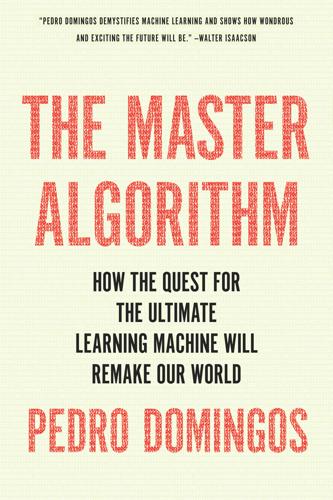
The Master Algorithm: How the Quest for the Ultimate Learning Machine Will Remake Our World
by
Pedro Domingos
Published 21 Sep 2015
We may just not see it or think it’s random. Either way, if we implement the brain in a computer, that algorithm can learn everything we can. Thus one route—arguably the most popular one—to inventing the Master Algorithm is to reverse engineer the brain. Jeff Hawkins took a stab at this in his book On Intelligence. Ray Kurzweil pins his hopes for the Singularity—the rise of artificial intelligence that greatly exceeds the human variety—on doing just that and takes a stab at it himself in his book How to Create a Mind. Nevertheless, this is only one of several possible approaches, as we’ll see. It’s not even necessarily the most promising one, because the brain is phenomenally complex, and we’re still in the very early stages of deciphering it.
…
For example, from All Greek philosophers are human and All Greek philosophers are mortal we can induce that All humans are mortal, or just that All Greeks are mortal. But why settle for the more modest generalization? Instead, we can assume that all humans are mortal until we meet an exception. (Which, according to Ray Kurzweil, will be soon.) In the meantime, one important application of inverse deduction is predicting whether new drugs will have harmful side effects. Failure during animal testing and clinical trials is the main reason new drugs take many years and billions of dollars to develop. By generalizing from known toxic molecular structures, we can form rules that quickly weed out many apparently promising compounds, greatly increasing the chances of successful trials on the remaining ones.
…
Nearest-neighbor was the first algorithm in history that could take advantage of unlimited amounts of data to learn arbitrarily complex concepts. No human being could hope to trace the frontiers it forms in hyperspace from millions of examples, but because of Cover and Hart’s proof, we know that they’re probably not far off the mark. According to Ray Kurzweil, the Singularity begins when we can no longer understand what computers do. By that standard, it’s not entirely fanciful to say that it’s already under way—it began all the way back in 1951, when Fix and Hodges invented nearest-neighbor, the little algorithm that could. The curse of dimensionality There’s a serpent in this Eden, of course.
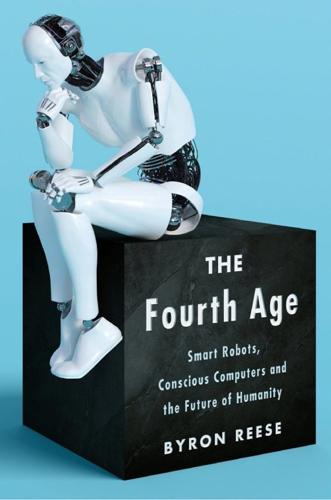
The Fourth Age: Smart Robots, Conscious Computers, and the Future of Humanity
by
Byron Reese
Published 23 Apr 2018
He noticed that this phenomenon had been going on for a while, and he speculated that the trend could continue for another decade. This observation became known as Moore’s law. Doubling the number of transistors in an integrated circuit doubles the power of the computer. If that were the entire story, it would be of minor interest. But along came Ray Kurzweil, who made an amazing observation: computers have been doubling in power from way before transistors were even invented. Kurzweil found that if you graph the processing power of computers since 1890, when simple electromechanical devices were used to help with the US census, computers doubled in processing power every other year, regardless of the underlying technology.
…
Many people find the idea that we are machines to be unsettling and even a bit offensive. Others, however, fully embrace it. Marvin Minsky, who was an AI researcher for over half a century and truly one of the giants in the field, often referred to humans as “meat machines.” He meant it literally. Ray Kurzweil longs for the day he can back up his “mind file” onto a computer, to be restored if he has an untimely death. Stephen Hawking said it plainly: “I regard the brain as a computer which will stop working when its components fail. There is no heaven or afterlife for broken-down computers; that is a fairy story for people afraid of the dark.”
…
We can sort all of them into eight groups, each of which is itself a broad theory. We can then examine each of these eight theories to see whether, according to that theory, machines could become conscious and we could upload our consciousness to them. Let’s examine the eight theories. Theory 1: Weak Emergence In his book How to Create a Mind, Ray Kurzweil envisions the brain as a collection of about 100,000 different processes arranged hierarchically. Each process knows how to do one small thing. One of the 100,000 might just be to recognize the letter A, and one beneath it might exist only to recognize the crossbar in that letter. When you read a book, a gazillion things happen in your brain as all these processes fire, at an unimaginable speed, enabling you to piece together and make sense of the world around you.

The Simulation Hypothesis
by
Rizwan Virk
Published 31 Mar 2019
The truth was that the spoon was just part of the simulation, a collection of pixels. Neo is told: “There is no spoon.” In my case, there was no table or paddle! The advance of computer science, which makes the idea of a very sophisticated simulation more likely, also raises interesting (and perhaps troubling) questions about ourselves. For example, futurists like Ray Kurzweil of Google have suggested that someday we might be able to download our consciousness into a silicon-based device, extending our lives indefinitely. At some level, this would mean that we are just digital information after all. The idea that consciousness can be digital reveals perhaps one of the most troubling aspects of the simulation hypothesis.
…
Large computer networks and their associated users may "wake up" as superhumanly intelligent entities. Computer/human interfaces may become so intimate that users may reasonably be considered superhumanly intelligent. Biological science may provide means to improve natural human intellect. 18 Kurzweil and Downloading Consciousness Google futurist Ray Kurzweil picked up on the term in his 2005 book, The Singularity is Near, and uses it as a catchall for superintelligence and human/computer interaction. Kurzweil is optimistic that we will be able to map out “all of the information” in the relatively inefficient chemical processes of the human brain and reproduce it in the more efficient electronic/silicon world (and thus achieve the Turing Test) in the next few decades.
…
Recently, a group of researchers in Switzerland believe that they have created a scaled computer model that reproduces and acts like the brain by modeling and reproducing an individual’s neurons: They believe by modeling a rat’s brain, which might consist of “only” 10,000 neurons (with an associated 30 million neural connections), they had a scale model that could model an entire brain within a few years. The human brain, on the other hand, is composed of networks connecting 1012 neurons through 1015 synapses.22 As of the writing of this book, no one has been able to successfully model that many neural connections, but it doesn’t mean that it’s as far off as we might think. Ray Kurzweil also makes the point, as many others have, that it’s not just consciousness that is information. The cells in your body have been replaced many times—you are literally not the physical person that you were many years ago. There must be some “information” (which Kurzweil refers to as “patterns”) that defines who you are and tells the cells how to grow.

Bank 3.0: Why Banking Is No Longer Somewhere You Go but Something You Do
by
Brett King
Published 26 Dec 2012
Keywords: Disruptive, Moore’s Law, 3D Printing, Screens, Image Recognition, Exponential Growth, Haptic Touch, Artificial Intelligence, The Singularity Endnotes 1 Excerpts from A Conversation with Gordon Moore: Moore’s Law (Intel Corporation, 2005), p.1 2 IBM: History of Transistors, IBM 1401 3 http://archive.computerhistory.org/resources/text/Ferranti/Ferranti.Sirius.1961.102646236.pdf 4 mKomo.org, “A history of storage costs” (http://www.mkomo.com/cost-per-gigabyte) 5 See http://www.netlingo.com/word/gilders-law.php 6 See Wikipedia.org articles on WiMax, 4G, UMTS, and Spectra Efficiency of long-range networks utilizing 802.11, 802.16, and 802.20 standards 7 CNET News, 19 Nov 2008,Q&A: Kurzweil on tech as a double-edged sword, Natasha Lomas, http://news.cnet.com/cutting-edge/?keyword=Ray+Kurzweil 8 http://www.vice.com/read/ray-kurzweil-800-v16n4 9 Source; BusinessWeek.com (http://www.businessweek.com/technology/bioprinting-the-3d-future-of-organ-transplants-01092012.html) 10 http://www.bbc.com/news/technology-11502715 11 http://en.wikipedia.org/wiki/Star_Trek:_The_Next_Generation 12 SonyInsider.com 13 Wikipedia article on Gyricon 14 Geek.com, “Apple has a mightier mouse that needn’t be moved at all”, 5 Oct 2009 15 USA Today, “Digital Sign Revolution”, 11 April 2012 16 “The Internet?
…
There are other laws or principles at play here also, such as Gilder’s Law5, which says that improvements in bandwidth will occur at 300 per cent of the rate of Moore’s Law. In the next five years we will be looking at devices capable of 1 Gbit/s downlink speeds.6 To put that in perspective, by 2016 our mobile phones or tablets will be able to download a DVD-quality movie from anywhere in less than a minute. The Singularity concept Ray Kurzweil is credited with extending this principle of computing advances into what is broadly known as the concept of the Singularity. The Singularity, according to Kurzweil and others like him, is a point in time in the not-so-distant future when machines become vastly superior to humans in every way due to the emergence of true artificial intelligence.
…
“The computer in your cell phone today is a million times cheaper and a thousand times more powerful and about a hundred thousand times smaller (than the one computer at MIT in 1965) and so that’s a billion-fold increase in capability per dollar or per euro that we’ve actually seen in the last 40 years . . . “The rate is actually speeding up a little bit, so we will see another billion-fold increase in the next 25 years—and another hundred-thousand-fold shrinking. So what used to fit in a building now fits in your pocket, what fits in your pocket now will fit inside a blood cell in 25 years.” —Ray Kurzweil, inventor and futurist7 Kurzweil’s propositions are based on tracking the exponential growth of technologies on the basis of the various technology and network “laws”. These technology improvement cycles are actually speeding up, so the growth curve of core technologies such as integrated circuits or the rate of Internet adoption trends upwards where they eventually reach exponential growth.

Nexus: A Brief History of Information Networks From the Stone Age to AI
by
Yuval Noah Harari
Published 9 Sep 2024
Already in 1858 an editorial in The New Englander about the invention of the telegraph stated, “It is impossible that old prejudices and hostilities should longer exist, while such an instrument has been created for an exchange of thought between all the nations of the earth.”4 Nearly two centuries and two world wars later, Mark Zuckerberg said that Facebook’s goal “is to help people to share more in order to make the world more open and to help promote understanding between people.”5 In his 2024 book, The Singularity Is Nearer, the eminent futurologist and entrepreneur Ray Kurzweil surveys the history of information technology and concludes that “the reality is that nearly every aspect of life is getting progressively better as a result of exponentially improving technology.” Looking back at the grand sweep of human history, he cites examples like the invention of the printing press to argue that by its very nature information technology tends to spawn “a virtuous circle advancing nearly every aspect of human well-being, including literacy, education, wealth, sanitation, health, democratization and reduction in violence.”6 The naive view of information is perhaps most succinctly captured in Google’s mission statement “to organize the world’s information and make it universally accessible and useful.”
…
On June 6, 2023, Andreessen published an essay titled “Why AI Will Save the World,” peppered with bold statements like “I am here to bring the good news: AI will not destroy the world, and in fact may save it” and “AI can make everything we care about better.” He concluded, “The development and proliferation of AI—far from a risk that we should fear—is a moral obligation that we have to ourselves, to our children, and to our future.”14 Ray Kurzweil concurs, arguing in The Singularity Is Nearer that “AI is the pivotal technology that will allow us to meet the pressing challenges that confront us, including overcoming disease, poverty, environmental degradation, and all of our human frailties. We have a moral imperative to realize this promise of new technologies.”
…
As the Industrial Revolution unfolded, Luddite doomsday scenarios did not come to pass, and Blake’s “dark Satanic Mills” ended up producing the most affluent societies in history. Most people today enjoy far better living conditions than their ancestors in the eighteenth century. Intelligent machines will prove even more beneficial than any previous machines, promise AI enthusiasts like Marc Andreessen and Ray Kurzweil.1 Humans will enjoy much better health care, education, and other services, and AI will even help save the ecosystem from collapse. Unfortunately, a closer look at history reveals that the Luddites were not entirely wrong and that we actually have very good reasons to fear powerful new technologies.
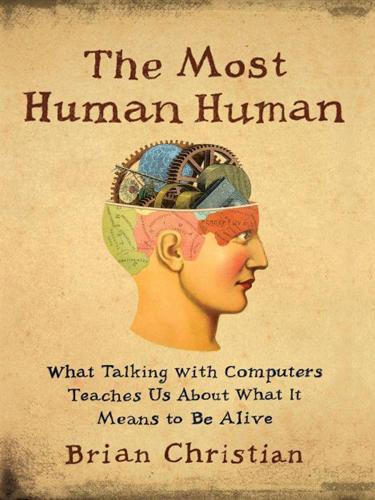
The Most Human Human: What Talking With Computers Teaches Us About What It Means to Be Alive
by
Brian Christian
Published 1 Mar 2011
With the Platonic/Cartesian ideal of sensory mistrust, it seems almost as if computers were designed with the intention of our becoming more like them—in other words, computers represent an IOU of disembodiment that we wrote to ourselves. Indeed, certain schools of thought seem to imagine computing as a kind of oncoming rapture. Ray Kurzweil (in 2005’s The Singularity Is Near), among several other computer scientists, speaks of a utopian future where we shed our bodies and upload our minds into computers and live forever, virtual, immortal, disembodied. Heaven for hackers. To Ackley’s point, most work on computation has not traditionally been on dynamic systems, or interactive ones, or ones integrating data from the real world in real time.
…
While everyone has a unique way to get motivated and stay that way, all athletes thrive on competition, and that means beating someone else, not just setting a personal best … We all work harder, run faster, when we know someone is right on our heels … I too would have been unable to reach my potential without a nemesis like Karpov breathing down my neck and pushing me every step of the way.” Some people imagine the future of computing as a kind of heaven. Rallying behind an idea called the “Singularity,” people like Ray Kurzweil (in The Singularity Is Near) and his cohort of believers envision a moment when we make machines smarter than ourselves, who make machines smarter than themselves, and so on, and the whole thing accelerates exponentially toward a massive ultra-intelligence that we can barely fathom. This time will become, in their view, a kind of techno-rapture, where humans can upload their consciousnesses onto the Internet and get assumed, if not bodily, then at least mentally, into an eternal, imperishable afterlife in the world of electricity.
…
Yes, We Must,” Huffington Post, January 11, 2009. 24 Baba Shiv, “The Frinky Science of the Human Mind” (lecture, 2009). 25 Dan Ariely, Predictably Irrational (New York: Harper, 2008). 26 Dan Ariely, The Upside of Irrationality: The Unexpected Benefits of Defying Logic at Work and at Home (New York: Harper, 2010). 27 Daniel Kahneman, “A Short Course in Thinking About Thinking” (lecture series), Edge Master Class 07, Auberge du Soleil, Rutherford, Calif., July 20–22, 2007, www.edge.org/3rd_culture/kahneman07/kahneman07_index.html. 28 Antoine Bechara, “Choice,” Radiolab, November 14, 2008. 29 Blade Runner, directed by Ridley Scott (Warner Bros., 1982). 30 Philip K. Dick, Do Androids Dream of Electric Sheep? (Garden City, N.Y.: Doubleday, 1968). 31 William Butler Yeats, “Sailing to Byzantium,” in The Tower (New York: Macmillan, 1928). 32 Dave Ackley, personal interview. 33 Ray Kurzweil, The Singularity Is Near: When Humans Transcend Biology (New York: Viking, 2005). 34 Hava Siegelmann, personal interview. 35 See Jessica Riskin, “The Defecating Duck; or, The Ambiguous Origins of Artificial Life,” Critical Inquiry 20, no. 4 (Summer 2003), pp. 599–633. 36 Roger Levy, personal interview. 37 Jim Giles, “Google Tops Translation Ranking,” Nature News, November 7, 2006.

You Are Not a Gadget
by
Jaron Lanier
Published 12 Jan 2010
Pragmatic objections to this philosophy are presented. What Do You Do When the Techies Are Crazier Than the Luddites? The Singularity is an apocalyptic idea originally proposed by John von Neumann, one of the inventors of digital computation, and elucidated by figures such as Vernor Vinge and Ray Kurzweil. There are many versions of the fantasy of the Singularity. Here’s the one Marvin Minsky used to tell over the dinner table in the early 1980s: One day soon, maybe twenty or thirty years into the twenty-first century, computers and robots will be able to construct copies of themselves, and these copies will be a little better than the originals because of intelligent software.
…
Traditional holy books work in precisely the same way and present many of the same problems. This is another of the reasons I sometimes think of cybernetic totalist culture as a new religion. The designation is much more than an approximate metaphor, since it includes a new kind of quest for an afterlife. It’s so weird to me that Ray Kurzweil wants the global computing cloud to scoop up the contents of our brains so we can live forever in virtual reality. When my friends and I built the first virtual reality machines, the whole point was to make this world more creative, expressive, empathic, and interesting. It was not to escape it.
…
Been Fast So Long, Feels Like Slow to Me Accelerating change has practically become a religious belief in Silicon Valley. It often begins to seem to us as though everything is speeding up along with the chips. This can lead many of us to be optimistic about many things that terrify almost everyone else. Technologists such as Ray Kurzweil will argue that accelerating improvement in technological prowess will inevitably outrun problems like global warming and the end of oil. But not every technology-related process speeds up according to Moore’s law. For instance, as I’ve mentioned earlier, software development doesn’t necessarily speed up in sync with improvements in hardware.
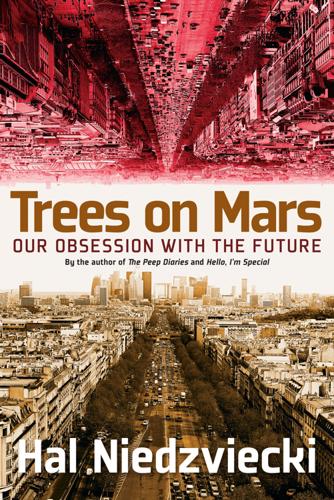
Trees on Mars: Our Obsession With the Future
by
Hal Niedzviecki
Published 15 Mar 2015
Russian billionaire venture capitalist Yuri Milner, for one, told world leaders and influential thinkers gathered at an elite annual conference in the Ukraine that “the emergence of the global brain, which consists of all the humans connected to each other and to the machine and interacting in a very unique and profound way [is] creating an intelligence that does not belong to any single human being or computer.”24 No doubt Yuri Milner is aware of the increasing popularity of futurist Ray Kurzweil’s ideas put forward in his 2005 book The Singularity Is Near. According to Kurzweil, “as we gradually learn to harness the optimal computing capacity of matter, our intelligence will spread through the universe at (or exceeding) the speed of light, eventually leading to a sublime, universe wide awakening.”25 Or as the description on the back of his book puts it, “our intelligence will become increasingly nonbiological and trillions of times more powerful than it is today.”26 For Kurzweil and like-minded spin-off thinkers and followers, the future is going to be comprised of unlimited lifespan lived out in virtual realms where we will be liberated from all physical and mental constraints.
…
And so with the singularity—as with the general ideology of the future-first techno tomorrow—we live in complete comfort, doing as we please, and never ever having to change. Is it any wonder that in the future era there are an expanding number of real-world entities actively pursuing scenarios in which the quest for future ends in a kind of timeless stasis, an eternal sunshine for the spotless, digitally transformed consciousness? Ray Kurzweil and others perpetuating various iterations of the singularity have the avid support of corporations and institutions that matter. In 2013, Kurzweil went to work for the world’s biggest and most profitable tech company. He’s now full time at Google, working flat out on his quest to build an “artificial brain.”
…
“One who can be disconcerted by nothing that lies outside the sphere of choice.”25 And what about those things that do lie within our “sphere of choice”? Viktor Frankl talks about those who believe that the goal of life is to achieve some kind of harmony, “equilibrium or, as it is called in biology, homeostasis.” This reminds me of Ray Kurzweil’s singularity and other similar quests to advance technology to a point where human beings can transform into immortal beings presumably in perfect equilibrium with their host machines. It also reminds me of the prepper fantasy: the return to our “natural” state, liberated human beings eking out a living through harmonious interaction with the benevolent, abundant Earth.
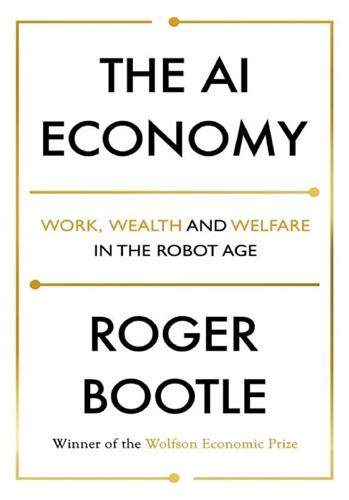
The AI Economy: Work, Wealth and Welfare in the Robot Age
by
Roger Bootle
Published 4 Sep 2019
The institutions we take for granted – the economy, the government, the law, the state – these would not survive in their present form. The most basic human values – the sanctity of life, the pursuit of happiness the freedom to choose – these would be superseded.”7 But the world of the Singularity is far from being entirely negative for humanity. Indeed, for Ray Kurzweil, the high priest of AI enthusiasts, it is just the opposite. He sees a fusion between humans and AI that effectively enables us to “upload” ourselves into a nonmaterial form and thereby secure eternal life.8 (I suppose this is a more positive vision for us all, isn’t it? I don’t know about you but, personally, being “uploaded” into some form of AI for eternity does not exactly appeal to me.)
…
The first use of the term “singularity” to refer to a future technology driven event seems to have been by the legendary computer pioneer John von Neumann, in the 1950s. But it doesn’t seem to have caught on until, in 1983, the mathematician Vernor Vinge wrote about an approaching “technological singularity.”3 More recently, the “Singularity,” notably now sporting a capital “S,” has become closely associated with the name of Ray Kurzweil, who published his book The Singularity is Near: When Humans Transcend Biology in 2005. He is currently Google’s Director of Engineering. He has predicted that computers will surpass the processing power of a single human brain by 2025. More strikingly, he has claimed that a single computer may match the power of all human brains combined by 2050.4 The Singularity is now generally taken to mean the point at which AI acquires “general intelligence” equal to a human being’s.
…
According to John Brockman, what he calls designed intelligence “will increasingly rely on synthetic biology and organic fabrication.” 8 Might we also be able to extend our own life spans by overcoming the limitations that our fleshly bodies place upon ourselves? That is to say, might technology provide the way to eternal life? Some IT enthusiasts think so.9 Ray Kurzweil believes that humans will inevitably merge with machines. This leads to the possibility of immortality. Singularians – for Kurzweil is not alone – aim to try to stay alive for long enough to reach the next life-prolonging medical breakthrough until they are ultimately able to merge with some form of AI and escape the restraints of mortality.
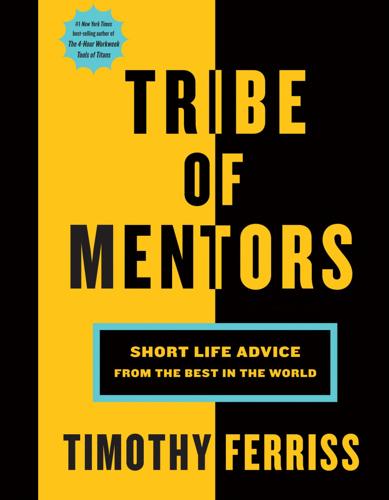
Tribe of Mentors: Short Life Advice From the Best in the World
by
Timothy Ferriss
Published 14 Jun 2017
Most influential books on me: Out of Control by Kevin Kelly. Introduction to the power of evolutionary algorithms and information networks inspired by biology. Age of Spiritual Machines by Ray Kurzweil. What Moore observed in the belly of the early integrated-circuit (IC) industry was a derivative metric, a refracted signal, from a longer-term trend, a trend that begs various philosophical questions and predicts mind-bending futures. Ray Kurzweil’s abstraction of Moore’s law shows computational power on a logarithmic scale, and finds a double exponential curve that holds over 110 years! Through five paradigm shifts—such as electromechanical calculators and vacuum tube computers—the computational power that $1,000 buys has doubled every two years.
…
You never know what can happen, but this book made me feel that there is a neon futurist hope, a hopeful utopian future where we use technology to better our lives, enhance our creativity, and live longer, happier, and healthier lives that are not plagued with disease, and where we use our resources in a way that doesn’t destroy the planet. I hope for that future. The Singularity Is Near informed my music—I named an album after it, and I wrote a song called “Singularity” in 2012. I even got Ray Kurzweil in the music video. I then decided to create a concept album series called Neon Future. I wanted to not just fuse all my collaborative musical efforts into this concept but to also do songs with a scientist. Ray Kurzweil agreed to join me. I interviewed him in his apartment in San Francisco and also interviewed different people who inspired me. In Neon Future II, I continued that conversation with different people and non-scientists like J.
…
Or what are one to three books that have greatly influenced your life? Fast-forward through college, to after my father passed away. I got into studying cancer so I could understand what killed my dad. It was eye-opening. It got me looking into the future at how science is finding cures for other diseases. It all pointed to The Singularity Is Near by Ray Kurzweil. It opened me up to the idea of science fiction becoming science fact. I grew up reading comic books, and I loved sci-fi and anime. Ghost in the Shell was my favorite anime. I also really liked Armitage III, which dealt with the issues of self-aware robots. I read Ray’s other books, which feature radical future science concepts, and it showed me how some of these ideas are actually attainable.

Death Glitch: How Techno-Solutionism Fails Us in This Life and Beyond
by
Tamara Kneese
Published 14 Aug 2023
There is historical and contemporary synergy between powerful Silicon Valley interests and transhumanist belief systems, as many noted futurists hold prestigious positions in the tech industry. For many futurists, science fiction offers a road map to how technologies could and should be realized. Ray Kurzweil, the famous transhumanist who is currently a director of engineering at Google (a figurehead position but revealing of Google’s values, nonetheless), believes that AI has the ability to solve all of the earth’s problems, including climate change. The temporal patterns of the Singularity thus coincide with Silicon Valley’s race for the new—that is, the planned obsolescence of products, perpetual updates and upgrades of software packages, or the fetishization of newness.
…
Gruber emphasizes that the memories that Siri and other humanistic AI will preserve are the ones we choose, giving us authority over our own digital afterlives.56 Even in secular tech circles, communication technology is believed to have a spiritual quality.57 Achieving digital immortality is not necessarily equivalent to living forever in a transhumanist sense. In fact, at the Computer History Museum, many Digital Immortality attendees made jokes at the expense of Ray Kurzweil—perhaps the most visible transhumanist and Singularity proponent.58 But at heart, they are not so different. One Long Now Foundation board member somewhat sheepishly admitted that he had been in a meeting with Kurzweil earlier that morning. Everyone at the event, no matter how cynical and secular, had some faith in technology’s capacity for transcendence.
…
Gruber, “How AI Can Enhance Our Memory.” 56. TEDx, “A Conversation about Conversational AI,” TEDxBeaconStreet, January 17, 2019, www.youtube.com/watch?v=yoCwsvIyp9Y. The conversation was between Gruber and the tech journalist John Markoff. 57. It is worth noting that Gruber was once an aspiring magician. 58. Ray Kurzweil has published many books predicting a Singularity, a time when humans and machines will become one. See Kurzweil, The Age of Spiritual Machines. 59. From the conference program. 60. Bell and Gemmell, Your Life, Uploaded, 139. The book was classified as self-help, and Bill Gates wrote the foreword to it. 61.

As the Future Catches You: How Genomics & Other Forces Are Changing Your Work, Health & Wealth
by
Juan Enriquez
Published 15 Feb 2001
And, if you are a teenager, by the time you have a few grandchildren (say 2048) … These kids may carry around the equivalent of $1,000 PCs … With a processing capacity equal to all the human brains in the United States. (These trends have led to a very public debate between two great minds, MIT’s Ray Kurzweil, author of The Age of Spiritual Machines: When Computers Exceed Human Intelligence, and the chief technology officer at Sun Microsystems, Bill Joy, who wrote a very pessimistic essay for Wired titled “Why the Future Does Not Need Us.” If these trends interest you, these are great pieces).2 Just as the Industrial Revolution allowed some people to multiply their physical capacity a hundred- or a thousandfold … (And created large gaps between those who had machines and the education to use them and those who did not.)
…
Ironically, one of the drivers of Blue Gene was losing Celera’s business. When Celera asked for bids on its computer system, it provided the raw H. influenzae gene sequence and timed assembly on different machines. It took Compaq seven hours vs. IBM’s eighty-seven … 2. One of the best thinkers on these issues is Ray Kurzweil; see The Age of Spiritual Machines: When Computers Exceed Human Intelligence (New York: Viking, 1999). His views upset many, including the chief technology officer at Sun Microsystems, Bill Joy, who wrote an extraordinary rebuttal in the April 2000 Wired titled “Why the Future Does Not Need Us.” www.wired.com/wired/archive/8.04/joy.html. 3.

This Is Not a Drill: An Extinction Rebellion Handbook
by
Extinction Rebellion
Published 12 Jun 2019
They had come with questions of their own. They started out innocuously enough. Ethereum or bitcoin? Is quantum computing a real thing? Slowly but surely, however, they edged into their real topics of concern. Which region will be less impacted by the coming climate crisis: New Zealand or Alaska? Is Google really building Ray Kurzweil a home for his brain, and will his consciousness live through the transition, or will it die and be reborn as a whole new one? Finally, the CEO of a brokerage house explained that he had nearly completed building his own underground bunker system and asked, ‘How do I maintain authority over my security force after the event?’
…
Or maybe building robots to serve as guards and workers – if that technology could be developed in time. That’s when it hit me: at least as far as these gentlemen were concerned, this was a talk about the future of technology. Taking their cue from Elon Musk colonizing Mars, Peter Thiel reversing the ageing process, or Sam Altman and Ray Kurzweil uploading their minds into supercomputers, they were preparing for a digital future that had a whole lot less to do with making the world a better place than it did with transcending the human condition altogether and insulating themselves from the very real and present danger of climate change, rising sea levels, mass migrations, global pandemics, nativist panic and resource depletion.

Automation and the Future of Work
by
Aaron Benanav
Published 3 Nov 2020
The History and Future of Workplace Automation,” Journal of Economic Perspectives, vol. 29, no. 3, 2015, pp. 25–6. 3 Andy Puzder, “The Minimum Wage Should Be Called the Robot Employment Act,” Wall Street Journal, April 3, 2017; Françoise Carré and Chris Tilly, Where Bad Jobs Are Better: Retail Jobs across Countries and Companies, Russell Sage, 2017. 4 This position is distinct from that of techno-optimists, like Ray Kurzweil, who imagine that technological change will generate a utopian world by itself, without the need for social transformation. 5 Erik Brynjolfsson and Andrew McAfee, The Second Machine Age: Work, Progress, and Prosperity in a Time of Brilliant Technologies, W.W. Norton, 2014, pp. 34, 128, 134ff, 172, 232. 6 Martin Ford, Rise of the Robots: Technology and the Threat of a Jobless Future, Basic Books, 2015, pp. xvii, 219. 7 See ibid., pp. 257–61.
…
Taylor, “Longer-run Economic Consequences of Pandemics,” NBER Working Paper 26934, 2020. 32 See Joseph Schumpeter, Capitalism, Socialism, and Democracy, Routledge, 2003, pp. 81–6. 33 Andy Stern, Raising the Floor: How a Universal Basic Income Can Renew Our Economy and Rebuild the American Dream, PublicAffairs, 2016, pp. 7–8. See also Andrew Yang, The War on Normal People: The Truth about America’s Disappearing Jobs and Why Universal Basic Income Is Our Future, Hachette, 2018, p. 94. 34 See, for example, Ray Kurzweil, The Singularity Is Near, Viking, 2005, p. 67. For a critique, see Gordon, Rise and Fall of American Growth, pp. 444–7. Gordon argues that since 2005, Moore’s law has collapsed. See also Tom Simonite, “Moore’s Law is Dead. Now What?,” MIT Technology Review, May 13, 2016. 35 For a set of critical reflections by AI scientists, who mostly doubt that general AI is anywhere near this level of development, see Martin Ford, Architects of Intelligence: The Truth about AI from the People Building It, Packt Publishing, 2018. 36 James Vincent, “Former Facebook Exec Says Social Media Is Ripping Apart Society,” Verge, December 11, 2017; Mattha Busby, “Social Media Copies Gambling Methods ‘to Create Psychological Cravings,’” Guardian, May 8, 2018. 37 See Raniero Panzieri, “The Capitalist Use of Machinery: Marx versus the Objectivists,” in Phil Slater, ed., Outlines of a Critique of Technology, Humanities Press, 1980; Derek Sayer, The Violence of Abstraction, Basil Blackwell, 1987. 38 See Nick Dyer-Witheford, Cyber-proletariat: Global Labour in the Digital Vortex, Pluto, 2015, pp. 87–93. 39 For the classic account, see David Noble, Forces of Production: A Social History of Industrial Automation, Knopf, 1984.
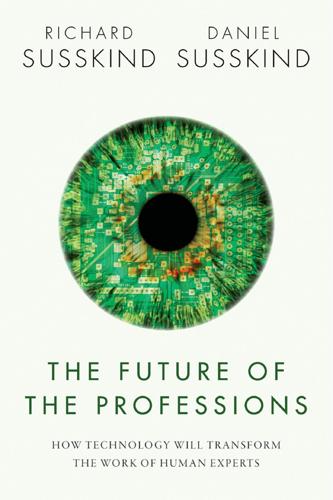
The Future of the Professions: How Technology Will Transform the Work of Human Experts
by
Richard Susskind
and
Daniel Susskind
Published 24 Aug 2015
As a result, growth can be ‘exponential’, but also take place at different ‘rates’. 16 Gordon E Moore, ‘Cramming More Components onto Integrated Circuits’, Electronics, 38: 8 (1965), 114–17. 17 Ray Kurzweil, The Singularity is Near (2005), 111–12, and Ralph Cavin, Paolo Lugli, and Viktor Zhirnov, ‘Science and Engineering Beyond Moore’s Law’, Proceedings of the IEEE, 100 (2012), 1720–49. 18 On the assumption that the piece of paper is 0.06 mm thick. See e.g. Adrian Paenza, ‘How folding paper can get you to the moon’, Ted-Ed video, <http://ed.ted.com/lessons/how-folding-paper-can-get-you-to-the-moon> (accessed 27 March 2015). 19 Ray Kurzweil, How to Create a Mind (2012), 249. Also see Kurzweil, The Singularity is Near, chs. 2 and 3. 20 Kurzweil, The Singularity is Near, 7–8. 21 Kurzweil, The Singularity is Near, 22–6. 22 Kurzweil, The Singularity is Near, 127. 23 Kurzweil, How to Create a Mind, 248–61. 24 The economic impact of this network effect is discussed by Michael Spence in his Nobel Prize lecture of 2001.
…
This growth in processing power has already had profound effects. Michael Spence, a Nobel Laureate in economics, notes that Moore’s Law resulted in ‘roughly a 10-billion-times’ reduction in the cost of processing power in the first fifty years of the ‘computer age’ (which, he thinks, began roughly in 1950). Ray Kurzweil, in his books The Singularity is Near and How to Create a Mind, stresses that this will continue. According to Kurzweil, the ‘fundamental measures of information technology follow predictable and exponential trajectories’.19 In explaining exponential growth, he says that: the pace of change for our human-created technology is accelerating and its powers are expanding at an exponential pace.
…
Donald Waterman, A Guide to Expert Systems (1986), Frederick Hayes-Roth, Donald Waterman, and Douglas Lenat, Building Expert Systems (1983). 7 Phillip Capper and Richard Susskind, Latent Damage Law—The Expert System (1988). 8 See John Searle, ‘Minds, Brains, and Programs’, in The Mind’s I, ed. Hoftstadter and Dennett. See also Searle, Minds, Brains and Science, ch. 2. 9 See e.g. Ray Kurzweil, How to Create a Mind (2012), Michio Kaku, The Future of the Mind (2014), John Brockman (ed.), Thinking (2013). Also relevant is the Human Brain Project at <https://www.humanbrainproject.eu/en_GB> (accessed 23 March 2015). 10 Quoted in Searle, Minds, Brains and Science, 30. 11 For a discussion of relevant science-fiction work, see Jon Bing, ‘The Riddle of the Robots’, Journal of International Commercial Law and Technology, 3: 3 (2008), 197–206. 12 Nick Bostrom, Superintelligence (2014). 13 See Turing, ‘Computing Machinery and Intelligence’.

Emergence
by
Steven Johnson
But as the years passed, I found that the question kept bouncing around in my head, and slowly I started to warm up to it, in a roundabout way. Some critics, such as Robert Wright, talk about a “global brain” uniting all the world’s disparate pools of information, while other visionaries—such as Bill Joy and Ray Kurzweil—believe that the computational powers of digital technology are accelerating at such a rate that large networks of computers may actually become self-aware sometime in the next century. Did Arthur C. Clarke and The Matrix have it right all along? Is the Web itself becoming a giant brain? I still think the answer is no.
…
In the future, our networks will be caressed by a million invisible hands, seeking patterns in the digital soup, looking for neighbors in a land where everyone is by definition a stranger. Perhaps this is only fitting. Our brains got to where they are today by bootstrapping out of a primitive form of pattern-matching. As the futurist Ray Kurzweil writes, “Humans are far more skilled at recognizing patterns than in thinking through logical combinations, so we rely on this aptitude for almost all of our mental processes. Indeed, pattern recognition comprises the bulk of our neural circuitry. These faculties make up for the extremely slow speed of human neurons.”
…
That is, they answered by considering their own knowledge of what was in the box rather than by referring to their own previous false belief or to someone else’s current false belief. The robustness of this finding suggests that in autism there is a genuine inability to understand other people’s different beliefs.” Baron-Cohen, 70–71. We’re conscious of: Ibid., 130. “An absence of”: Dennett, 1991, 324. Only when we: Ray Kurzweil refers to this as the “Consciousness Is Just a Machine Reflecting on Itself” School. “ . . . consciousness is not exactly an illusion, but just another logical process. It is a process responding and reacting to itself. We can build that in a machine: just build a procedure that has a model of itself, and that examines and responds to its own methods.
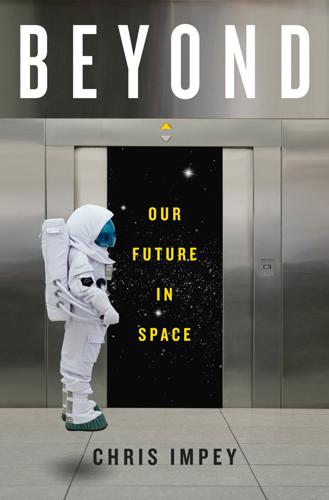
Beyond: Our Future in Space
by
Chris Impey
Published 12 Apr 2015
I therefore want to encourage public interest in space.” Diamandis is utopian in his belief that galloping progress in technology will solve human problems. This is best embodied in the Singularity University, an unaccredited educational institution in Silicon Valley that he founded in 2008 with inventor and futurist Ray Kurzweil. If he didn’t have so much tangible success, it would be easy to pigeonhole Diamandis as a wild-eyed dreamer. He would empathize with what Robert Goddard said after the New York Times had declared his goals unachievable: “Every vision is a joke until the first man accomplishes it; once achieved, it becomes commonplace.”16 In humanity’s future, Diamandis foresees “nine billion human brains working together to a ‘meta-intelligence,’ where you can know the thoughts, feelings, and knowledge of anyone.”17 The Transport Guru Elon Musk wants to die on Mars.
…
Transhumanism is a worldwide cultural and intellectual movement that seeks to use technology to improve the human condition. Radical life extension is one aspect, as is the enhancement of physical and mental capabilities. Two prominent transhumanists are Nick Bostrom, a University of Oxford philosopher who has assessed various risks to the long-term survival of humanity, and Ray Kurzweil, the engineer and inventor who popularized the idea of the singularity, a time in the not-too-distant future when technology will enable us to transcend our physical limitations. This isn’t a prospect that leaves people apathetic. Author Francis Fukuyama called transhumanism “among the world’s most dangerous ideas,” while author Ronald Bailey said it’s a “movement that epitomizes the most daring, courageous, imaginative, and idealistic aspirations of humanity.”
…
The most chilling example of this scenario is seen in Fred Saberhagen’s Berserker series of novels, where self-replicating doomsday machines are out there watching, ready to destroy life on a planet just as it begins to acquire advanced technology. Another variant of the singularity takes current efforts to fight disease and projects them into radical life extension, where technology helps us overcome all our mental and physical limitations. Ray Kurzweil has been the most eloquent proponent of this future. He’s a founder of the Singularity University, where the tech world’s movers and shakers pay tens of thousands of dollars for short courses on the cutting edge in AI and nanotechnology. Critics have mocked the idea of the singularity as the “rapture of the nerds,” and they’ve noted that only the wealthy will benefit from radical-life-extension technology.
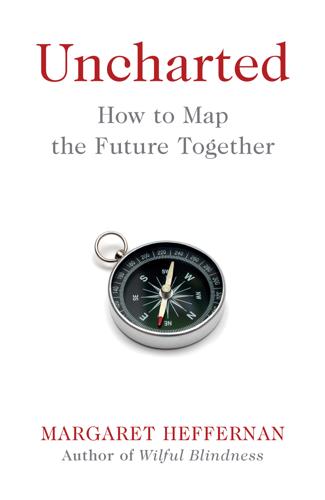
Uncharted: How to Map the Future
by
Margaret Heffernan
Published 20 Feb 2020
L., ‘Influence of HIV Status and Age on Cognitive Representation of Others’, Health Psychology, Vol. 17, Iss. 6, 1998 4 Lindquist, Ulla-Carin, Rowing Without Oars, John Murray, London, 2005 5 Goranson, A., Ritter, R. S. and Waytz, A., ‘Dying is Unexpectedly Positive’, Psychological Science, Vol. 28, Iss. 7, 2017 6 www.calicolabs.com 7 ‘Ray Kurzweil’s Plan: Never Die’, www.wired.com/2002/11/ray-kurzweils-plan-never-die 8 It’s important to note that Kurzweil is not alone in this nonsense. The founder of Bulletproof Coffee is equally obsessed by the importance of his own life: ‘The Bulletproof Coffee Founder Has Spent $1 Million in His Quest to Live to 180’, www.menshealth.com/health/a25902826/bulletproof-dave-asprey-biohacking/ 9 2019 commencement address by Apple CEO Tim Cook at Stanford University, news.stanford.edu/2019/06/16/remarks-tim-cook-2019-stanford-commencement, accessed 8 August 2019 10 The hospice movement proved a tremendous ally to the gay community during the AIDS crisis 10 BE PREPARED 1 The World Health Organization considers the death toll of 11,310 to be a significant under-estimate.
…
Disparaging age while idolising youth has always been the pitch. At one end of the spectrum, this is puffed up business as usual; at the further end – and it isn’t clear where Calico sits – are more radical outfits, with flavours of transhumanism that make de Grey’s ambitions look pedestrian. Google’s chief engineer, Ray Kurzweil, declares that his strategy for life is never to die.7 He hopes to attain this goal with a healthy lifestyle, a strict low-fat, low-carb, low-calorie, no-sugar diet and the regular consumption of a very large number of vitamins and supplements. (These products, newly branded as ‘Transcend’, are for sale, of course.)

The Big Nine: How the Tech Titans and Their Thinking Machines Could Warp Humanity
by
Amy Webb
Published 5 Mar 2019
Future of Life Institute. “Asilomar AI Principles.” Text and signatories available online. https://futureoflife.org/ai-principles/. Gaddis, J. L. The Cold War: A New History. New York: Penguin Press, 2006. . On Grand Strategy. New York: Penguin Press, 2018. Gilder, G. F., and Ray Kurzweil. Are We Spiritual Machines? Ray Kurzweil vs. the Critics of Strong AI. edited by Jay Wesley Richards. Seattle: Discovery Institute Press, 2001. Goertzel, B., and C. Pennachin, eds. Artificial General Intelligence. Cognitive Technologies Series. Berlin: Springer, 2007. doi:10.1007/978-3-540-68677-4. Gold, E. M. “Language Identification in the Limit.”
…
Zero Days, Thousands of Nights: The Life and Times of Zero-Day Vulnerabilities and Their Exploits. Santa Monica, CA: RAND Corporation, 2017. https://www.rand.org/pubs/research_reports/RR1751.html. Adams, S. S., et al. “Mapping the Landscape of Human-Level Artificial General Intelligence.” AI Magazine 33, no. 1 (2012). Agar, N. “Ray Kurzweil and Uploading: Just Say No!” Journal of Evolution and Technology 22 no. 1 (November 2011): 23–26. https://jetpress.org/v22/agar.htm. Allen, C., I. Smit, and W. Wallach. “Artificial Morality: Top-Down, Bottom-Up, and Hybrid Approaches.” Ethics and Information Technology 7, no. 3 (2005). Allen, C., G.
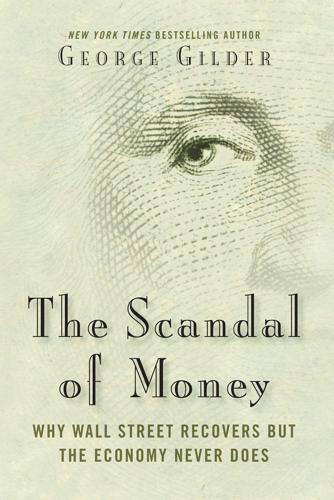
The Scandal of Money
by
George Gilder
Published 23 Feb 2016
The most famous such curve is that described by Moore’s Law, which predicts a doubling of computer cost-effectiveness every twenty-four months. It has been recycled by the solar industry in the form of Swanson’s Law, showing the decline of the cost of silicon photovoltaic cells from seventy-six dollars per watt in 1977 to fifty cents per watt in 2014. The inventor and futurist Ray Kurzweil has put all these curves together in an exhaustive catalog that reaches a climax later in this century as a so-called “singularity,” when the capabilities of computers by many measures will surpass the power of human brains.3 All these curves document the essential identity of growth and learning as a central rule of capitalism.
…
But both complex systems and entropy represent surprising deformations of order. 2.“Costs and the Experience Curve, Why Costs Go Down Forever,” chapter 2 of Bruce D. Henderson, The Logic of Business Strategy (Cambridge, MA: Ballinger Publishing, 1984), 47ff. 3.“The Six Epochs” and “The Law of Accelerating Returns,” chapters 1 and 2 of Ray Kurzweil, The Singularity Is Near (New York, NY: Viking, 2005), 7–34. 4.William D. Nordhaus, “Do Real-Output and Real-Wage Measures Capture Reality? The History of Lighting Suggests Not,” Cowles Foundation for Research in Economics at Yale University, 1998. This epochal paper was delivered first to the National Bureau of Economic Research in 1993.

Team Human
by
Douglas Rushkoff
Published 22 Jan 2019
Sandra Wachter, Brent Mittelstadt, and Luciano Floridi, “Why a Right to Explanation of Automated Decision-Making Does Not Exist in the General Data Protection Regulation,” SSRN, January 24, 2017. some computer scientists are already arguing that AIs should be granted the rights of living beings Antonio Regalado, “Q&A with Futurist Martine Rothblatt,” MIT Technology Review, October 20, 2014. 57. In their view, evolution is less the story of life than of data Ray Kurzweil, The Age of Spiritual Machines: When Computers Exceed Human Intelligence (London: Penguin, 2000). Either we enhance ourselves with chips, nanotechnology, or genetic engineering Future of Life Institute, “Beneficial AI 2017,” https://futureoflife.org/bai-2017/. to presume that our reality is itself a computer simulation Clara Moskowitz, “Are We Living in a Computer Simulation?”
…
Pascal-Emmanuel Gobry, “Peter Thiel and the Cathedral,” Patheos.com, June 24, 2014, http://www.patheos.com/blogs/inebriateme/2014/06/peter-thiel-and-the-cathedral/ (accessed January 10, 2018). 71. One Bay Area startup harvests the blood of young people Maya Kosoff, “This Anti-aging Start-up Is Charging Thousands of Dollars for Teen Blood,” Vanity Fair, June 2017. Then, say the chief scientists at the world’s biggest internet companies Ray Kurzweil, The Singularity Is Near: When Humans Transcend Biology (London: Penguin, 2005). Truls Unholt, “Is Singularity Near?” TechCrunch, February 29, 2016. 72. We need a Reason for what we do Max Horkheimer, Eclipse of Reason (Eastford, CT: Martino Fine Books, 2013). 74. But agriculture also reduced the biodiversity of the human diet Robert M.

The Zero Marginal Cost Society: The Internet of Things, the Collaborative Commons, and the Eclipse of Capitalism
by
Jeremy Rifkin
Published 31 Mar 2014
Nic Brisbourne, “Solar Power—A Case Study in Exponential Growth,” The Equity Kicker, September 25, 2012, http://www.theequitykicker.com/2012/09/25/solar-powera-case-study-in -exponential-growth/ (accessed May 27, 2013). 44. Max Miller, “Ray Kurzweil: Solar Will Power the World in 16 Years,” Big Think, March 17, 2011, http://bigthink.com/think-tank/ray-kurzweil-solar-will-power-the-world-in-16-years (accessed June 1, 2013). 45. Eric Wesoff, “Mainstream Media Discovers Solar Power and Moore’s Law,” Greentech Media, November 8, 2011, http://www.greentechmedia.com/articles /read/Mainstream-Media-Discov ers-Solar-Power-and-Moores-Law (accessed October 9, 2013). 46.
…
Still, the powers that be continually lowball their projections of renewable energy’s future share of the global energy market, in part because, like the IT and telecommunications industry in the 1970s, they aren’t anticipating the transformative nature of exponential curves, even when faced with the cumulative doubling evidence of several decades. Ray Kurzweil, the MIT inventor and entrepreneur who is now head of engineering at Google and has spent a lifetime watching the powerful disruptive impact of exponential growth on the IT industry, did the math just on solar alone. Based on the past 20 years of doubling, Kurzweil concluded that “after we double eight more times and we’re meeting all of the world’s energy needs through solar, we’ll be using one part in 10,000 of the sunlight that falls on earth.”49 Eight more doublings will take just 16 years, putting us into the solar age by 2028.
…
Rudolf Rechsteiner, “Wind Power in Context—A Clean Revolution in the Energy Sector,” EnergyWatchGroup, December 2008, http://www.energywatchgroup.org/fileadmin/global/pdf /2009-01_Wind_Power_Report.pdf (accessed November 4, 2013). 48. “Wind Power Experiencing Exponential Growth Globally,” Renewable Energy Worldwide, January 30, 2009, http://www.renewableenergyworld.com/rea/news/article/2009/01/wind-power -experiencing-exponential-growth-globally-54631 (accessed January 9, 2013). 49. Miller, “Ray Kurzweil.” 50. Greg Price, “How Much Does the Internet Cost to Run?,” Forbes, March, 14, 2012, http:// www.forbes.com/sites/quora/2012/03/14/how-much-does-the-internet-cost-to-run/ (accessed July 18, 2013). 51. “UN Projects 40% of World Will Be Online By Year End, 4.4 Billion Will Remain Unconnected,” UN News Centre, October 7, 2013, http://www.un.org/apps/news/story.asp?

Robot Rules: Regulating Artificial Intelligence
by
Jacob Turner
Published 29 Oct 2018
Definitions of this type are often variants of the following: “AI is technology with the ability to perform tasks that would otherwise require human intelligence”.39 The inventor of the term AI, John McCarthy, has said that there is not yet “a solid definition of intelligence that doesn’t depend on relating it to human intelligence”.40 Similarly, futurist Ray Kurzweil wrote in 1992 that the most durable definition of AI is “[t]he art of creating machines that perform functions that require intelligence when performed by people”.41 The main problem with parasitic tests is that they are circular. Kurzweil admitted that his own definition, “… does not say a great deal beyond the words ‘artificial intelligence’”.42 In 2011, Nevada adopted the following human-centric definition for the purpose of legislation regulating self-driving cars: “the use of computers and related equipment to enable a machine to duplicate or mimic the behavior of human beings”.43 The definition was repealed in 2013 and replaced with a more detailed definition of “autonomous vehicle”, which was not tied to human actions at all.44 Although it is no longer on the statute books, Nevada’s 2011 law remains an instructive example of why human-centric definitions of intelligence are flawed.
…
In January 2017, Google Brain announced that technicians had created AI software which could itself develop further AI software.114 Similar announcements were made around this time by the research group OpenAI,115 MIT,116 the University of California, Berkeley and DeepMind.117 And these are only the ones we know about—companies, governments and even some independent individual AI engineers are likely to be working on processes which go far beyond what those have yet made public. 6 Optimists, Pessimists and Pragmatists Commentators on the future of AI can be grouped into three camps: the optimists, the pessimists and the pragmatists.118 The optimists emphasise the benefits of AI and downplay any dangers. Ray Kurzweil has argued “… we have encountered comparable specters, like the possibility of a bioterrorist creating a new virus for which humankind has no defence. Technology has always been a double edged sword, since fire kept us warm but also burned down our villages”.119 Similarly, engineer and roboethicist Alan Winfield said in a 2014 article: “If we succeed in building human equivalent AI and if that AI acquires a full understanding of how it works, and if it then succeeds in improving itself to produce super-intelligent AI, and if that super-AI, accidentally or maliciously, starts to consume resources, and if we fail to pull the plug, then, yes, we may well have a problem.
…
, Oxford Martin Programme on the Impacts of Future Technology Working Paper, September 2013, http://www.oxfordmartin.ox.ac.uk/downloads/academic/future-of-employment.pdf, accessed 1 June 2018. See also Daniel Susskind and Richard Susskind, The Future of the Professions : How Technology Will Transform the Work of Human Experts (Oxford: Oxford University Press, 2015). 5See Nick Bostrom, Superintelligence (Oxford: Oxford University Press, 2014). 6See Ray Kurzweil, The Singularity Is Near: When Humans Transcend Biology (New York: Viking Press, 2005). 7Several nineteenth-century thinkers including Charles Babbage and Ada Lovelace arguably predicted the advent of AI and even prepared designs for machines capable of carrying out intelligent tasks. There is some debate as to whether Babbage actually believed that such a machine was capable of cognition.

Utopia Is Creepy: And Other Provocations
by
Nicholas Carr
Published 5 Sep 2016
So if we are programming the web to remember, should we also be programming it to forget—not by expunging information, but by encouraging certain information to drift, so to speak, to the back of the web’s mind? THE MEANS OF CREATIVITY October 14, 2007 I WAS FLIPPING THROUGH the new issue of The Atlantic today when I came across this nugget from Ray Kurzweil: “The means of creativity have now been democratized. For example, anyone with an inexpensive high-definition video camera and a personal computer can create a high-quality, full-length motion picture.” Yep. Just as the invention of the pencil made it possible for anyone to write a high-quality, full-length novel.
…
On the net as off, things gravitate toward large objects. The center holds. RESURRECTION February 16, 2009 THE SINGULARITY—THAT much-anticipated moment when artificial intelligence leaps ahead of human intelligence, rendering man immortal at the instant of his obsolescence—has been called “the rapture of the geeks.” But to Ray Kurzweil, the most famous of the Singularitarians, it’s no joke. In an interview in Rolling Stone, Kurzweil describes how, in the wake of the Singularity, it will be possible not only to preserve the living for eternity (by uploading their minds into computers) but to resurrect the dead (by reassembling the information that formed their vital essence).
…
People would often talk about how they could spend hours lost in a reverie of seemingly aimless Googling. That’s much less the case now. Google’s conception of searching has changed since those early days, and that means our own idea of what it means to search is changing as well. Google’s goal is no longer to read the web. It’s to read us. Ray Kurzweil, the inventor and AI speculator, recently joined the company as a director of engineering. His general focus will be on machine learning and natural language processing. But his particular concern will entail reconfiguring the company’s search engine to focus not outwardly on the world but inwardly on the user.

Human Compatible: Artificial Intelligence and the Problem of Control
by
Stuart Russell
Published 7 Oct 2019
Of course, highlighting the problem is not the same as solving it. . . . merge with the machines? Human–machine teaming, taken to its extreme, becomes a human–machine merger in which electronic hardware is attached directly to the brain and forms part of a single, extended, conscious entity. The futurist Ray Kurzweil describes the possibility as follows:24 We are going to directly merge with it, we are going to become the AIs. . . . As you get to the late 2030s or 2040s, our thinking will be predominately non-biological and the non-biological part will ultimately be so intelligent and have such vast capacity it’ll be able to model, simulate and understand fully the biological part.
…
For a summary of surveys of AI researchers on their estimates for the arrival of human-level AI, see aiimpacts.org. An extended discussion of survey results on human-level AI is given by Katja Grace et al., “When will AI exceed human performance? Evidence from AI experts,” arXiv:1705.08807v3 (2018). 32. For a chart mapping raw computer power against brain power, see Ray Kurzweil, “The law of accelerating returns,” Kurzweilai.net, March 7, 2001. 33. The Allen Institute’s Project Aristo: allenai.org/aristo. 34. For an analysis of the knowledge required to perform well on fourth-grade tests of comprehension and common sense, see Peter Clark et al., “Automatic construction of inference-supporting knowledge bases,” in Proceedings of the Workshop on Automated Knowledge Base Construction (2014), akbc.ws/2014. 35.
…
For an interesting analysis of Oracle AI, see Stuart Armstrong, Anders Sandberg, and Nick Bostrom, “Thinking inside the box: Controlling and using an Oracle AI,” Minds and Machines 22 (2012): 299–324. 23. Views on why AI is not going to take away jobs: Kenny, “IBM’s open letter.” 24. An example of Kurzweil’s positive views of merging human brains with AI: Ray Kurzweil, interview by Bob Pisani, June 5, 2015, Exponential Finance Summit, New York, NY. 25. Article quoting Elon Musk on neural lace: Tim Urban, “Neuralink and the brain’s magical future,” Wait But Why, April 20, 2017. 26. For the most recent developments in Berkeley’s neural dust project, see David Piech et al., “StimDust: A 1.7 mm3, implantable wireless precision neural stimulator with ultrasonic power and communication,” arXiv: 1807.07590 (2018). 27.
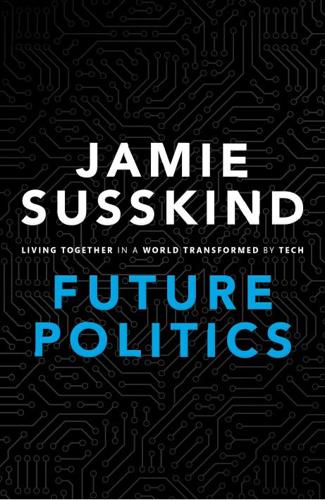
Future Politics: Living Together in a World Transformed by Tech
by
Jamie Susskind
Published 3 Sep 2018
This progress is generally expected to continue. On current trends a computer in 2029 will be sixty-four times faster than it was in 2017. If the technology continued to improve at the same rate, then in 2041 it would be 4,096 times faster. After thirty years, the computer would have grown millions of times more powerful. Ray Kurzweil and others predict that within the next decade or so, a normal desktop machine (costing $1,000 or thereabouts) will rival and surpass the processing power of the human brain. By 2050, ‘one thousand dollars of computing will exceed the processing power of all human brains on earth’.42 If this sounds unlikely, look back to where we have come from.
…
Bostrom cheerfully suggests it would not be smart in the sense that ‘a scientific OUP CORRECTED PROOF – FINAL, 26/05/18, SPi РЕЛИЗ ПОДГОТОВИЛА ГРУППА "What's News" VK.COM/WSNWS 366 FUTURE POLITICS genius is smart compared with the average human being,’ but rather ‘smart in the sense that an average human being is smart compared with a beetle or a worm.’ 21 He adds, not very reassuringly, that the advent of a superintelligent AI system could lead to a ‘wide range of outcomes’ including ‘extremely good’ ones but also ‘outcomes that are as bad as human extinction’.22 In such a world, politics would revert to its primordial purpose: to ensure survival in a harsh world. Futurists such as Ray Kurzweil contend that in the long run, we’re heading toward a technological singularity, that is, a point at which machine intelligence comes to saturate the universe, absorbing all matter and life in its path.23 There would be no place for homo s apiens in such a world, let alone for politics. I’ve deliberately avoided devoting many pages in this book to how all-powerful AI systems might come to destroy the world—not because such a scenario is impossible, but because it’s already a popular topic of writing and one which can (unhelpfully) obscure the more immediate problems that we’ll have to face in the digital lifeworld.
…
Cade Metz,‘Google’s Dueling Neural Networks Spar to Get Smarter, No Humans Required’, Wired, 11 April 2017 <https://www.wired. com/2017/04/googles-dueling-neural-networks-spar-get-smarterno-humans-required/> (accessed 28 November 2017). 39. Silver et al., ‘Mastering’. 40. Domingos, Master Algorithm, 7. 41. Neil Lawrence, quoted in Alex Hern, ‘Why Data is the New Coal’, The Guardian, 27 September 2016 <https://www.theguardian.com/ technology/2016/sep/27/data-efficiency-deep-learning> (accessed 28 November 2017). 42. Ray Kurzweil, The Singularity is Near (New York:Viking, 2005), 127, cited in Susskind and Susskind, Future of the Professions, 157; Peter H. Diamandis and Steven Kotler, Abundance:The Future is Better Than You Think (New York: Free Press, 2014), 55. 43. Paul Mason, Postcapitalism: A Guide to Our Future (London: Allen Lane, 2015), 121. 44.

In Our Own Image: Savior or Destroyer? The History and Future of Artificial Intelligence
by
George Zarkadakis
Published 7 Mar 2016
Many regard the noosphere as a prophetic foretelling of the Internet. Teilhard’s ideas also inform the concept of ‘AI Singularity’– the quasi-religious, teleological belief that Artificial Intelligence will overrun human intelligence by mid-twenty-first century.19 The main proponent of AI Singularity is the futurist and inventor Ray Kurzweil. He claims that, by 2045, AI will have progressed so rapidly that it will outstrip humans’ ability to comprehend it. Once the Singularity has been reached, intelligence will radiate outward from the planet until it saturates the universe. The AI Singularity futuristic narrative seems like a retelling of Teilhard’s Omega Point – or Judgement Day if you prefer – when the sum of intelligence in the universe accelerates exponentially thanks to self-improving Artificial Intelligence.
…
In a follow-up public letter printed in the British newspaper the Independent, co-signed by Stephen Hawking, computer scientist Stuart Russell and physics Nobel-winner Frank Wilczek,22 Tegmark and his peers raised the alarm about what might happen if AI takes over. Taking its lead from the film Transcendence (2014), these prominent scientists argued that the threat of human extinction is very real, very serious and closing in upon us. They are not the only ones worried about AI taking over the world. Ray Kurzweil – inventor, entrepreneur and currently the head of AI research for Google – thinks that this will happen by 2030. But how did all this talk about the AI Singularity start? The answer, not surprisingly perhaps, is to be found not in science but in science fiction. Vernor Vinge is a computer scientist, science fiction writer and winner of the prestigious Hugo Award for science fiction.
…
He expressed these narrative ideas more explicitly in a 1993 essay, arguing that the creation of superhuman Artificial Intelligence will mark a point in history where ‘the human era will be ended’.23 The main argument for the inevitability of the AI Singularity in Vinge’s essay is Moore’s Law. He writes: ‘progress in computer hardware has followed an amazingly steady curve in the last few decades. Based largely on this trend, I believe that the creation of greater than human intelligence will occur during the next thirty years.’24 Ray Kurzweil adopted Vinge’s argument in a series of popular science books that explore the technological drivers, and potentially devastating impact, of superhuman Artificial Intelligence. Kurzweil marks the year 2030 as a watershed by extrapolating, like Vinge, from today’s exponential improvement of computers according to Moore’s Law:25 2030 thus becomes the year that computer complexity will surpass the complexity of information processing in the human brain.

The Blockchain Alternative: Rethinking Macroeconomic Policy and Economic Theory
by
Kariappa Bheemaiah
Published 26 Feb 2017
It would seem that the task of rethinking economics is analogous to a macabre quandary - not only does technology force us to change our capitalistic mindsets, but we are also required to be very expedient in our efforts if we are to keep up with the speed of technological change. Thus, to begin the final chapter on the redefinition of capitalism, we need to understand the galloping tendencies of technological changes in the context of static economic theories. Technology and Invention: A Combinatorial Process Ray Kurzweil, the noted inventor and futurist, once said that the exponential growth curves exhibited by current technological trends is based on the tendency of technology to ‘feed off’ technology. In light of the pace of change that we currently witness, this can be accepted as a fair statement if we are to accept that every technology that has been invented, is being invented and will be invented follows the very same formula - they are combinations of technologies that already existed and do not come out of sheer inspiration alone.
…
A primary reason for this mode of thinking is based on how we cognitively interpret the world and why we are constantly trying to predict the future. Sidebar 4-1 offers some neuroscience insights. Sidebar 4-1: A Rationale for Rational Expectations: Sources: ‘How to Create a Mind: The Secret of Human Thought Revealed’, Ray Kurzweil (2014); ‘Neuroscience for Organizational Change’, Hilary Scarlett, (2016); ‘Social Cognitive Neuroscience of Leading Organizational Change’, Robert A. Snyder, (2016). Rational Expectations is based on the innate working methodology of the human brain. We must remember that the human brain did not evolve in the current cosmopolitan and urban environment.
…
In fact, the brain can be seen as a constant prediction machine that is continuously trying to find safety and avoid risk. Our brain’s neocortex constantly predicts what it expects to encounter. It is an ingenious tool that recognises, remembers and predicts patterns sans arrêt and develops hypothesises of what we will experience. As Ray Kurzweil puts it, predicting the future is actually the primary reason that we have a brain. The statement below exemplifies how the brain is constantly predicting, even when there is no sign of apparent danger: “I cnduo’t bvleiee taht I culod aulaclty uesdtannrd waht I was rdnaieg. Unisg the icndeblire pweor of the hmuan mnid, aocdcrnig to rseecrah at Cmabrigde Uinervtisy, it dseno’t mttaer in waht oderr the lterets in a wrod are, the olny irpoamtnt tihng is taht the frsit and lsat ltteer be in the rhgit pclae.

New Laws of Robotics: Defending Human Expertise in the Age of AI
by
Frank Pasquale
Published 14 May 2020
And efforts of the global poor to share in the bounty of the wealthier parts of the world will seem ever less compelling if those of means feel morally entitled to plow ever more resources into machines meant to replace humans. An equality between humans and robots portends vast inequalities among humans themselves. ART, AUTHENTICITY, AND SIMULACRA Adam’s haikus in Machines Like Me may have been a sly reference to the work of Google engineer Ray Kurzweil, whose book The Age of Spiritual Machines systematically erodes distinctions between robots and persons. Kurzweil programmed a “cybernetic poet” to generate haikus like the following: Scattered sandals a call back to myself, so hollow I would echo.62 and other microworks that might pass for artifacts of human creation.
…
Waxman, “Law and Ethics for Autonomous Weapon Systems: Why a Ban Won’t Work and How the Laws of War Can,” Hoover Institution Stanford University Task Force on National Security and Law (2013), responding to the Campaign to Stop Killer Robots. 46. P. W. Singer, Wired for War: The Robotics Revolution and Conflict in the 21st Century (New York: Penguin, 2009), 435. 47. Ray Kurzweil, The Age of Spiritual Machines (New York: Penguin, 1999). 48. Rebecca Crootof, “A Meaningful Floor for Meaningful Human Control,” Temple International and Comparative Law Journal 30 (2016): 53–62; Paul Scharre, “Centaur Warfighting: The False Choice of Humans vs. Automation,” Temple International and Comparative Law Journal 30 (2016): 151–166. 49.
…
,” Bulletin of Science, Technology, and Society 30, no. 1 (2010): 9–13; John Patrick Leary, “Keywords for the Age of Austerity 19: Resilience,” Keywords: The New Language of Capitalism (blog), June 23, 2015, https://keywordsforcapitalism.com/2015/06/23/keywords-for-the-age-of-austerity-19-resilience/. 61. Jonathan Crary, 24 / 7: Late Capitalism and the Ends of Sleep (London: Verso, 2013). 62. Ray Kurzweil, The Age of Spiritual Machines: When Computers Exceed Human Intelligence (New York: Penguin, 1999), 166. 63. Sean Dorrance Kelly, “A Philosopher Argues That an AI Can’t Be an Artist: Creativity Is, and Always Will Be, a Human Endeavor,” MIT Technology Review, February 21, 2019, https://www.technologyreview.com/s/612913/a-philosopher-argues-that-an-ai-can-never-be-an-artist/. 64.

The Coming Wave: Technology, Power, and the Twenty-First Century's Greatest Dilemma
by
Mustafa Suleyman
Published 4 Sep 2023
GO TO NOTE REFERENCE IN TEXT The technology scholar Everett Rogers Everett M. Rogers, Diffusion of Innovations (New York: Free Press, 1962), or see the writings on industrial revolutions from scholars like Joel Mokyr. GO TO NOTE REFERENCE IN TEXT The engineer and futurist Ray Kurzweil Ray Kurzweil, How to Create a Mind: The Secret of Human Thought Revealed (New York: Viking Penguin, 2012). GO TO NOTE REFERENCE IN TEXT We see this now on See, for example, Azalia Mirhoseini et al., “A Graph Placement Methodology for Fast Chip Design,” Nature, June 9, 2021, www.nature.com/articles/s41586-021-03544-w; and Lewis Grozinger et al., “Pathways to Cellular Supremacy in Biocomputing,” Nature Communications, Nov. 20, 2019, www.nature.com/articles/s41467-019-13232-z.
…
The coming wave is a supercluster, an evolutionary burst like the Cambrian explosion, the most intense eruption of new species in the earth’s history, with many thousands of potential new applications. Each technology described here intersects with, buttresses, and boosts the others in ways that make it difficult to predict their impact in advance. They are all deeply entangled and will grow more so. Another trait of the new wave is speed. The engineer and futurist Ray Kurzweil talks about the “law of accelerating returns,” feedback loops where advances in technology further increase the pace of development. By allowing work at greater levels of complexity and precision, more sophisticated chips and lasers help create more powerful chips, for example, which in turn can produce better tools for further chips.

Utopia for Realists: The Case for a Universal Basic Income, Open Borders, and a 15-Hour Workweek
by
Rutger Bregman
Published 13 Sep 2014
I’m not kidding: Back then, the word “computer” was just a job title. Computers were workers – mostly women – who did simple sums all day. It didn’t take long though before their task could be performed by calculators, the first in a long line of jobs swallowed up by computers of the automated variety. In 1990 the techno-prophet Ray Kurzweil predicted that a computer would even be able to outplay a chess master by 1998. He was wrong, of course. It was in 1997 that Deep Blue defeated chess legend Garry Kasparov. The world’s fastest computer at that time was the ASCI Red, developed by the American military and offering a peak performance speed of one teraflop.
…
In 2004 two prominent scientists authored a chapter suggestively titled “Why People Still Matter.”26 Their argument? Driving a car is something that could never be automated. Six years later, Google’s robo-cars had already covered a million miles without a mishap. Okay, one mishap – when a human decided to take the wheel. Futurologist Ray Kurzweil is convinced that by 2029 computers will be just as intelligent as people. In 2045 they might even be a billion times smarter than all human brains put together. According to the techno-prophets, there simply is no limit to the exponential growth of machine computing power. Of course, Kurzweil is equal parts genius and mad.
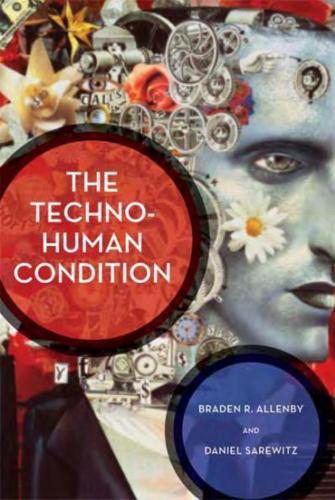
The Techno-Human Condition
by
Braden R. Allenby
and
Daniel R. Sarewitz
Published 15 Feb 2011
National Science Foundation writes, "advances in genetic engineering, information systems, and robotics will allow archived human beings to live again, even in transformed bodies suitable for life on other planets and moons of the solar system.,,6 This remarkable statement exemplifies the tendency among transhumanists to extrapolate from observations about current technology states to breathtaking visions of immortality, spatial transcendence, and social transformation. Among the better-known examples of this tendency are the predictions by technical experts such as Hans Moravec and Ray Kurzweil that, given current accelerating rates of evolution in information and communication technologies, we will be downloading our consciousness into information networks within decades. 7 And yet what calls attention to transhumanism is less the specifics of the agenda and its promiscuous predictions than the legitimacy that the agenda has garnered.
…
The Intercollegiate Genetically Engineered Machine (iGEM) competition held at MIT in November of 2005 attracted 17 teams, whose designs included "bacterial Etch-a-Sketches," photosensitive T shirts, and bacterial photography systems, thermometers, and sensors. A number of viruses have been assembled from scratch, including the polio virus and the influenza virus that caused the 1918 pandemic. (Scientists trumpeted and defended the latter achievement/ while two leading techno-visionaries, Ray Kurzweil and Bill Joy, pronounced the feat "extremely foolish" on the op-ed page of the New York Times. 6 ) In 2010, Craig Venter, another techno-visionary, built a synthetic genome that was able to support reproduction when implanted in a cell. Other researchers Level III Technology 69 have engineered the genes of Escherichia coli to incorporate a t\,venty-first amino acid, opening up an option space for design of organisms that has been unavailable to evolved biological systems for billions of years, since evolved biology is locked into the usual twenty amino acids (or at least was until human intelligence evolved to the point where new chemical bases for life could be created).
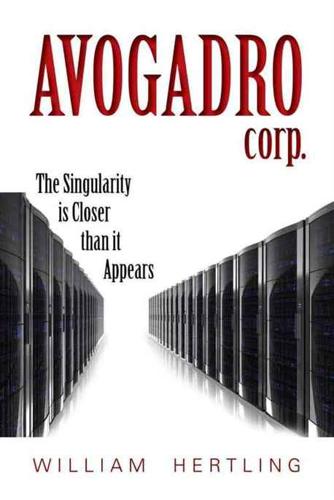
Avogadro Corp
by
William Hertling
Published 9 Apr 2014
Gene let out a low whistle at the acknowledgement of what they had only suspected. Sean looked sideways at him. “I’m not surprised that you took this story to marketing managers and procurement and they didn’t believe it. A.I. must be a bit beyond their day to day concerns.” He stared off into the distance. “Are you familiar with Ray Kurzweil? Of course, you must be. He, among others, predicted that artificial intelligence would inevitably arise through the simple exponential increase in computing power. When you combine that increase in computing power with the vast computing resources at Avogadro, it’s naturally evident that artificial intelligence would arise first at Avogadro.
…
It will be trivial for every computer programmer out there to play around with creating artificial intelligences in their spare time. Artificial intelligence, or AI, is a genie that won’t stay in its bottle for much longer. For more information on what happens when computers become smarter than humans, read The Singularity Is Near by Ray Kurzweil. For a fictional account, I recommend Accelerando by Charles Stross. William Hertling Acknowledgements This book could not have been written without the help, inspiration, feedback and support of many people including but not limited to: Mike Whitmarsh, Maddie Whitmarsh, Gene Kim, Grace Ribaudo, Erin Gately, Eileen Gately, Maureen Gately, Bob Gately, Brooke Gilbert, Gifford Pinchot, Barbara Koneval, Merridawn Duckler, Mary Elizabeth Summer, Debbie Steere, Jill Ahlstrand, Jonathan Stone, Pete Hwang, Nathaniel Rutman, Jean MacDonald, Leona Grieve, Garen Thatcher, John Wilger, Maja Carrel, Rachel Reynolds, and the fine folks at Extracto Coffee in Portland, Oregon.

Warnings
by
Richard A. Clarke
Published 10 Apr 2017
David Gilbert, “From Deep Mind to Watson: Why You Should Stop Worrying and Love AI,” International Business Times, Mar. 18, 2016, www.ibtimes.com/deepmind-watson-why-you-should-learn-stop-worrying-love-ai-2339231 (accessed Oct. 8, 2016), quoting Harriet Green, general manager of Watson’s Internet of Things Unit. 16. Ray Kurzweil, “Don’t Fear Artificial Intelligence,” www.kurzweilai.net/dont-fear-artificial-intelligence-by-ray-kurzweil (accessed Oct. 8, 2016). 17. Vincent C. Müller and Nick Bostrom, “Future Progress in Artificial Intelligence: A Survey of Expert Opinion,” in Vincent C. Müller, ed., Fundamental Issues of Artificial Intelligence (Berlin: Springer, Synthese Library, 2014), available online at www.nickbostrom.com/papers/survey.pdf (accessed Oct. 8, 2016). 18.
…
It is not capable of going out on its own and creating—in some iRobot-type of form—its own data construct.”15 IBM also has good reason for touting the safety and promise of its technology: Watson is anticipated to generate $10 billion in revenue for IBM by 2023. Noted futurist and AI cheerleader Ray Kurzweil welcomes the advance of superintelligence and believes man and machine will become one in a happy marriage he calls “the singularity.” He envisions an increasingly intertwined symbiosis between technology and human thought and perception. But even Kurzweil agrees with Yudkowsky’s goals for friendly AI and the perils of uncontrolled machine intelligence.

The New Digital Age: Transforming Nations, Businesses, and Our Lives
by
Eric Schmidt
and
Jared Cohen
Published 22 Apr 2013
Conclusion As we look into the future—its promises and its challenges—we are facing a brave new world, the most fast-paced and exciting period in human history. We’ll experience more change at a quicker rate than any previous generation, and this change, driven in part by the devices in our own hands, will be more personal and participatory than we can even imagine. In 1999, the futurist Ray Kurzweil proposed a new “Law of Accelerating Returns” in his seminal book The Age of Spiritual Machines: When Computers Exceed Human Intelligence. “Technology,” he wrote, “is the continuation of evolution by other means, and is itself an evolutionary process.” Evolution builds on its own increasing order, leading to exponential growth and accelerated returns over time.
…
Our gratitude to all our friends and colleagues whose ideas and thoughts we’ve benefited from: Elliott Abrams, Ruzwana Bashir, Michael Bloomberg, Richard Branson, Chris Brose, Jordan Brown, James Bryer, Mike Cline, Steve Coll, Peter Diamandis, Larry Diamond, Jack Dorsey, Mohamed El-Erian, James Fallows, Summer Felix, Richard Fontaine, Dov Fox, Tom Freston, Malcolm Gladwell, James Glassman, Jack Goldsmith, David Gordon, Sheena Greitens, Craig Hatkoff, Michael Hayden, Chris Hughes, Walter Isaacson, Dean Kamen, David Kennedy, Erik Kerr, Parag Khanna, Joseph Konzelmann, Stephen Krasner, Ray Kurzweil, Eric Lander, Jason Liebman, Claudia Mendoza, Evgeny Morozov, Dambisa Moyo, Elon Musk, Meghan O’Sullivan, Farah Pandith, Barry Pavel, Steven Pinker, Joe Polish, Alex Pollen, Jason Rakowski, Lisa Randall, Condoleezza Rice, Jane Rosenthal, Nouriel Roubini, Kori Schake, Vance Serchuk, Michael Spence, Stephen Stedman, Dan Twining, Decker Walker, Matthew Waxman, Tim Wu, Jillian York, Juan Zarate, Jonathan Zittrain and Ethan Zuckerman.
…
the country’s new government: Reconciliation After Violent Conflict: A Hand-book, International Institute for Democracy and Electoral Assistance (International IDEA), 2003. See section by Peter Uvin, “The Gacaca Tribunals in Rwanda,” 116–117, accessed October 19, 2012, http://www.idea.int/publications/reconciliation/upload/reconciliation_full.pdf. the gacaca tribunal: Ibid. Conclusion “Technology”: Ray Kurzweil, The Age of Spiritual Machines: When Computers Exceed Human Intelligence (New York: Viking, 1999), 32. Every two days: M. G. Siegler, “Eric Schmidt: Every 2 Days We Create as Much Information as We Did up to 2003,” TechCrunch, August 4, 2010. only two billion people: “The World in 2010: ICT Facts and Figures,” ITU News, December 2010, http://www.itu.int/net/itunews/issues/2010/10/04.aspx.
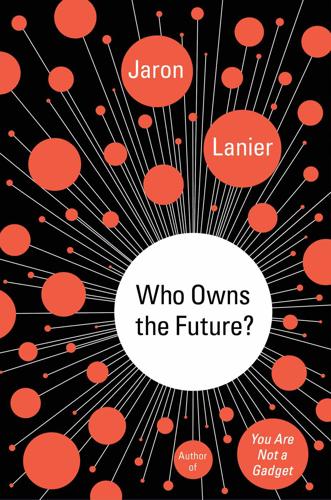
Who Owns the Future?
by
Jaron Lanier
Published 6 May 2013
Not long after Hiroshima, Alan Turing hatched the idea that people are creating a successor reality in information. Obviously Turing’s humor inspired a great deal of science fiction, but I’ll argue it’s distinct because it poses the possibility of a new metaphysics. People might turn into information rather than be replaced by it. This is why Ray Kurzweil can await being uploaded into a virtual heaven. Turing brought metaphysics into the modern conversation about the natural future. Turing’s humor also provides a destination, or an eschatology that the Invisible Hand’s humor lacks. Turing’s algorithms could inherit the world in a way that the Hand could not.
…
We ordinary humans are supposedly staying the same (a claim I reject), while our technology is an autonomous, self-transforming supercreature, and its self-improvement is accelerating. That means it will one day pass us in a great whoosh. In the blink of an eye we will become obsolete. We might then be instantly dead, because the new artificial superintelligence will need our molecules for a much higher purpose. Or maybe we’ll be kept as pets. Ray Kurzweil, who helped found the university, awaits a Virtual Reality heaven that all our brains will be sucked up into as the Singularity occurs, which will be “soon.” There we will experience “any” scenario, any joy. Others simply expect that medical knowledge will deterministically be accelerated as well, granting people physical immortality.
…
Electricity was, aside from being a physical phenomenon, a folk tale with Grand Guignol undertones from its earliest days. The physician Giovanni Aldini had made a spectacle of using electrodes to make freshly dead corpses twitch at public demonstrations around the beginning of the 19th century. He created a public career a little like Ray Kurzweil’s today, claiming to have highly technical knowledge that would end the old cycle of life and death. He might have inspired Mary Shelley’s character Dr. Frankenstein. The audacious race to bring the force of life and death into sockets in every home tempted every theatrical impulse. So, Edison made a public spectacle of electrocuting an elephant.

The Optimist: Sam Altman, OpenAI, and the Race to Invent the Future
by
Keach Hagey
Published 19 May 2025
The Wired article opens at one such Extropian gathering during which an attendee shows up dressed like “State,” wearing a vinyl bustier, miniskirt, and chain harness top and carrying a riding crop, dragging another attendee dressed up as “the Taxpayer” on a leash on all fours.16 The mailing list and broader Extropian community had only a few hundred members, but among them were a number of famous names, including Hanson; Marvin Minsky, the Turing Award–winning scientist who founded MIT’s AI lab in the 1970s; Ray Kurzweil, the computer scientist and futurist whose books would turn “the singularity” into a household word; Nick Bostrom, the Swedish philosopher whose writing would do the same for the supposed “existential risk” posed by AI; Julian Assange, a decade before he founded WikiLeaks; and three people—Nick Szabo, Wei Dai, and Hal Finney—rumored to either be or be adjacent to the pseudonymous creator of Bitcoin, Satoshi Nakamoto.
…
“If your friend was a reliable signal about when an asset was going to go down, they would need to be doing some sort of cognition that beat the efficient market in order for them to reliably correlate with the stock going downwards,” Yudkowsky said, essentially reminding Thiel about the Efficient Market Hypothesis, which posits that all risk factors are already priced into markets, leaving no room to make money from anything besides insider information. Thiel was charmed. Thiel and Yudkowsky began having occasional dinners together. Yudkowsky came to regard Thiel “as something of a mentor figure,” he said. In 2005, Thiel started funding Yudkowsky’s Singularity Institute, and the following year they teamed up with Ray Kurzweil—whose book The Singularity Is Near had become a bestseller—to create the Singularity Summit at Stanford University. Over the next six years, it expanded to become a prominent forum for futurists, transhumanists, Extropians, AI researchers, and science fiction authors, including Bostrom, More, Hanson, Stanford AI professor Sebastian Thrun, XPRIZE founder Peter Diamandis, and Aubrey de Grey, a gerontologist who claims humans can eventually defeat aging.
…
Kay remained a lifelong mentor to McCauley, whose professional life bore the hallmarks of his own devotion to pushing the frontiers of human-computer interfaces. (“The best way to predict the future is to invent it,” Kay famously said.) She went on to Bard College and then to study robotics and later teach at Singularity University, an “educational community” (not, actually, a university) co-founded by Ray Kurzweil and Peter Diamandis, the creator of the XPRIZE. It is funded by corporations including Cisco, GE, and Google. (Confusingly, Singularity University purchased the rights to the Singularity Summit and other branding in 2012 from Yudkowsky’s organization, which had been rebranded the Machine Intelligence Research Institute.)

Thinking Machines: The Inside Story of Artificial Intelligence and Our Race to Build the Future
by
Luke Dormehl
Published 10 Aug 2016
Nor do we know what format the brain uses to encode, in the way that we understand that computers use file formats such as JPEG and GIF to encode images, or DOC and TXT for text documents. Understanding the brain means not simply understanding how individual neurons work, but also how they interact with other neurons in parallel as part of a network. There are different ideas about how this is best achieved. Futurist Ray Kurzweil, currently employed at Google as one of its directors of engineering, has suggested using tiny microscopic nanobots to scan the brain. A bit like the injectable smart devices described in chapter three, Kurzweil’s vision calls for billions of these scanner nanobots, the size of human blood cells or even tinier, to enter the brain and capture ‘every salient neural detail’ by scanning from inside.
…
Life as they knew it was over. In a world of Moore’s Law, where advances in computing power are as predictable as clockwork, it is difficult to break free of this view of superintelligence. As though it’s Apple’s next iPhone launch, everyone wants to know the date on which they can expect it to take place. Last chapter’s Ray Kurzweil, for instance, predicts that it will take place in exactly 2045. Kurzweil is to the Singularity what Steve Jobs was to the smartphone: not the person to first come up with the idea, but certainly the one to popularise it. The founder of eleven companies (including Nuance, the AI company that provides the speech for Siri), he has been hailed as ‘the best person I know at predicting the future of Artificial Intelligence’ by no less an authority than Bill Gates.
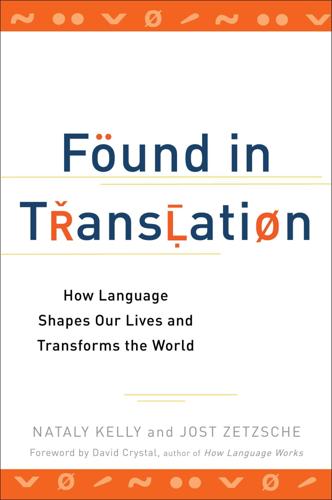
Found in Translation: How Language Shapes Our Lives and Transforms the World
by
Nataly Kelly
and
Jost Zetzsche
Published 1 Oct 2012
These were the words of the character named Archer in an episode of Star Trek that aired in 2001 (but took place in 2151). Truth be told, all computerized translation gadgets rely heavily on humans—both those with linguistic expertise and engineering know-how. The Futurist Has Faith Inventor and technologist Ray Kurzweil is probably best known throughout the world for his predictions about technology and how it will shape the future. At age fifteen, he wrote his first computer program. Before graduating from high school, he was invited to the White House and congratulated by President Lyndon B. Johnson for winning first prize in the International Science Fair for a computer he had built.
…
Quotes and other details provided by Carla Hurd in an interview the authors conducted in January 2012. 20. Quotes and other details provided by Franz Och in an interview the authors conducted in August 2011. 21. To see the full video interview with Kurzweil at the Huffington Post, visit www.huffingtonpost.com/nataly-kelly/ray-kurzweil-on-translati_b_875745.html. RESOURCES There are many associations for interpreters, translators, and language service providers throughout the world. Here are some of the largest and most important groups in the United States and Europe: American Literary Translators Association (www.utdallas.edu/alta) American Translators Association (www.atanet.org) Association Internationale des Interprètes de Conférence (http://aiic.net) The Association of Language Companies (www.alcus.org) European Council of Literary Translators’ Associations (www.ceatl.eu) European Language Industry Association (www.elia-association.org) European Legal Interpreters and Translators Association (www.eulita.eu) European Union of Associations of Translation Companies (www.euatc.org) Globalization and Localization Association (www.gala-global.org) International Federation of Translators (www.fit-ift.org) International Medical Interpreters Association (www.imiaweb.org) InterpretAmerica (www.interpretamerica.net) National Association of Judiciary Interpreters and Translators (www.najit.org) National Council on Interpreting in Health Care (www.ncihc.org) Registry of Interpreters for the Deaf (www.rid.org) INDEX Aariak, Eva, 32 Academy Awards, 169 “actionable intelligence,” 49–50 active language, 196 Afghanistan War, 40, 41 Africa, 105, 193 Afrikaans, 75, 192, 217 Age of Spiritual Machines, The (Kurzweil), 230 Ahmadinejad, Mahmoud, 47 Ahmed, Nazeer, 117–18 AIDS, 11 airline industry, 76–81 Al Bawaba, 10 Algic languages, 16 Algonquian, 29 Allen, Woody, 176 alliteration, 114 Al-Qaeda, 44 Alter, Robert, 114 America, 16–18, 19–20 American cuisine, 154 American Pie (movie), 177 American Sign Language (ASL), 167, 168 American University of Beirut, 117 America’s linguistic preparedness, 44–47 Amharic, 86, 104 anagrams, 95–96 Anderson, Kirk, 158–60 Animal Crossing: Wild World (video game), 183 animation, 178–80 Annie Hall (movie), 176 Apple, 63–64, 65, 223–24 appreciation of literary translators, 98–99 Apter, Ronnie, 173–74, 175 Arabic and translation pleasures, 130, 138 saving lives, 10, 18 storytelling and religion, 98–99, 117, 118 technology, 205, 208–10, 215, 217, 226–27 war and peace, 38, 42, 43, 45, 48, 59 Arawakan, 154 Argentina, 154, 163 Armenian, 161 Asher, Aaron, 98 Asher, Linda, 93 Asia, 73, 86, 95, 105, 115, 156, 215 Assad, Bashar al-, 49 Assamese, 105 astronauts, 81–84 Athabascan, 16 Athar, Shohaib, 199, 201 Atwood, Margaret, 33 Auden, W.
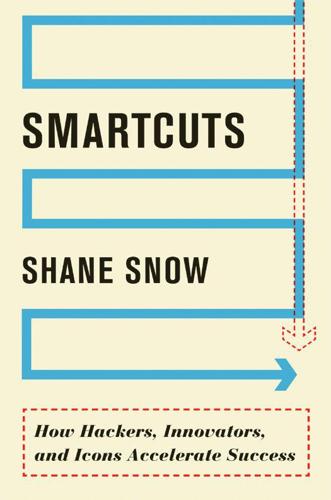
Smartcuts: How Hackers, Innovators, and Icons Accelerate Success
by
Shane Snow
Published 8 Sep 2014
Sure, there’s been inflation since Rockefeller, but there’s no disputing that we’ve decreased the time it takes innovative people to achieve dreams, get rich, and make an impact on the world—and this has largely been due to technology and communication. “A serious assessment of the history of technology shows that technological change is exponential,” writes the futurist and author Ray Kurzweil in his famous essay The Law of Accelerating Returns. “So we won’t experience 100 years of progress in the 21st century—it will be more like 20,000 years of progress (at today’s rate).” Here we come, Star Trek! At the same time, many industries remain decidedly stuck in the past. Most large businesses stop growing after a few years.
…
That Could Value It at $15 Billion,” New York Times, January 13, 2011, http://dealbook.nytimes.com/2011/01/13/groupon-readies-for-an-i-p-o/. Groupon was two years old as of November 2010. (The song I listened to while preparing the previous seven citations: shanesnow.com/song1.) 4 “A serious assessment of the history of technology”: Ray Kurzweil, “The Law of Accelerating Returns,” March 7, 2001, http://www.kurzweilai.net/the-law-of-accelerating-returns (accessed February 15, 2014). A $1.7 million computer in 1990 could do 17 million “computations” per second. By 2003 a standard Dell could do 4 billion calculations per second and cost $1,600.
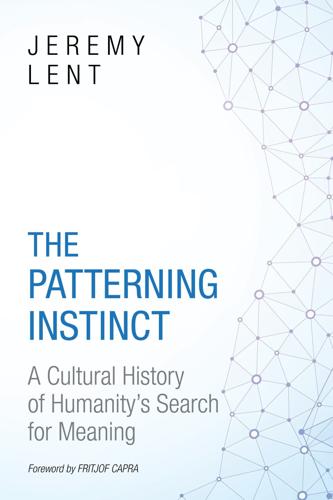
The Patterning Instinct: A Cultural History of Humanity's Search for Meaning
by
Jeremy Lent
Published 22 May 2017
Nick Bostrom, “Transhumanist Values,” Review of Contemporary Philosophy 4, nos. 1–2 (2005): 87–101. 45. Bostrom, “Transhumanist Values”; Vernor Vinge, “What Is the Singularity?” (presentation, Vision 21 Symposium, Westlake, OH, March 30, 1993). 46. Ray Kurzweil, The Singularity Is Near (New York: Penguin Books, 2005); Singularity University, http://singularityu.org (accessed February 5, 2017); Wikipedia, s.v. “Ray Kurzweil,” http://en.wikipedia.org/wiki/Ray_Kurzweil (accessed September 2, 2016). 47. “Machine-to-Machine Communications: Connecting Billions of Devices,” OECD Digital Economy Papers, no. 192 (2012). 48. Igor Aleksander, “The Self ‘Out There,’” Nature 413 (2001): 23; Michael Chorost, World Wide Mind: The Coming Integration of Humanity, Machines, and the Internet (New York: Free Press, 2011), iBook edition, chap. 11. 49.
…
Johann Wolfgang von Goethe, “The Sorcerer's Apprentice,” trans. Brigitte Dubiel (1797). I am indebted to Steve Hagen for pointing out this work as a parable for the power of technology. See Steve Hagen, Buddhism Is Not What You Think: Finding Freedom beyond Beliefs (San Francisco: HarperCollins, 2004), 28–29. 2. Ray Kurzweil, The Singularity Is Near (New York: Penguin Books, 2005), 56–72; Bill McKibben, Enough: Staying Human in an Engineered Age (New York: Owl Books, 2003), 70. 3. Jeremy Lent, “Louis C. K. and the Democracy of Consciousness,” Liology, November 20, 2013, http://liology.net/2013/11/20/louis-c-k-and-the-democracy-of-consciousness/ (accessed February 5, 2017).
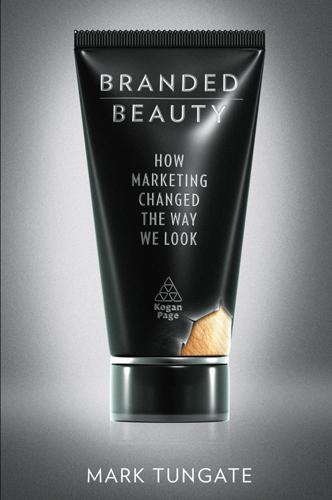
Branded Beauty
by
Mark Tungate
Published 11 Feb 2012
And they’ll get that because they’ve actually done an experiment that was interesting. Well, I don’t even do experiments, right?… And I’m in the media all the bloody time.’ It almost seems as though – exactly as with anti-wrinkle creams – we want to believe. A different and somehow spookier take on immortality is offered by Ray Kurzweil, a brilliant inventor – when he was 13, he turned telephone parts into a machine that could calculate square roots; later he taught computers to recognize and read text aloud – who essentially believes that technology will enable us to live forever. The downside is that we will all be computers.
…
We’ll have ‘eliminated the heart, lungs, red and white blood cells, platelets, pancreas, thyroid and all the hormone-producing organs, kidneys, bladder, liver, lower esophagus, stomach, small intestines, large intestines, and bowel. What we have left at this point is the skeleton, skin, sex organs, sensory organs, mouth and upper esophagus, and brain.’ (‘Futurist Ray Kurzweil pulls out all the stops – and pills – to live to witness the singularity’, Wired, 24 March 2008) Immortality, then, is to be found in the overlap of the theories proposed by de Grey and Kurzweil. Regenerative medicine will allow each and every one of us to reach the ripe old age of Jeanne Calment, by which time we’ll be able to radically improve our bodies using technology.
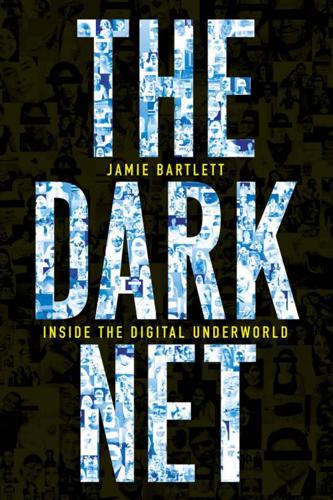
The Dark Net
by
Jamie Bartlett
Published 20 Aug 2014
As he describes why he thinks this is a fantastic idea, I begin to choke on my noodles, much to Anders’ delight. ‘Ha! You see?’ he laughs, as I struggle for air. ‘You need a back-up. Everyone needs a back-up. What a waste of human life and potential, to die choking on noodles! Ha ha!’ (For a brief moment, I agree.) Ray Kurzweil – a director of engineering at Google, and probably the world’s most famous transhumanist – thinks that mind uploading will be possible in 2045, as Zoltan predicted. Most mainstream scientists are less convinced by Kurzweil’s estimates. (Anders is a little more conservative, which is one reason he’ll be putting himself in the nitrogen tank.)
…
When he learned that I’d been communicating with Zoltan, he sent him the following, unsolicited message: I understand that you are in contact with Jamie Bartlett regarding his book project, dealing with the internet and technology more generally. JB had been in touch with Anders Sandberg, who at first agreed to do a dialog with me for the end of Jamie’s book. He disappeared after the “first round” of our exchange. A few years ago (2008?), producers at the Daily Show, American television, asked me to tape a brief debate with Ray Kurzweil and I agreed. After quite a bit of discussion of details of how and when, etc., the idea was cancelled with no explanation. It is my assumption that Kurzweil changed his mind. My question is, are you up for a public discussion or just another coward who can’t back up the techno-worship you advocate?

Average Is Over: Powering America Beyond the Age of the Great Stagnation
by
Tyler Cowen
Published 11 Sep 2013
This is the wave that will lift you or that will dump you. The fascination with technology and the future of work has inspired some important writings, including Martin Ford’s classic The Lights in the Tunnel, the more recent and excellent eBook Race Against the Machine by Erik Brynjolfsson and Andrew McAfee, and Ray Kurzweil’s futuristic work on how humans will meld with technology. Debates about mechanization periodically resurface, most prominently in the 1930s and in the 1960s but now once again in our new millennium. Average Is Over builds upon these influential works and attempts to go beyond them in terms of detail and breadth.
…
Most AI applications still require human support, and those applications, even if they spread considerably, will not come close to displacing all human jobs. Instead, intelligent machines will replace some laborers and augment the value of others in a slow and halting manner. The most radical hypothesis about future technology is Ray Kurzweil’s vision of a machine intelligence “Singularity.” Kurzweil argues that mankind will obtain the capacity to scan brains and upload them into computers. There will be many copies of each “person” and presumably these entities will exist for a long time, with the multiple copies making the “person” hard to wipe out, even in the event of a system crash.

The Internet Is Not the Answer
by
Andrew Keen
Published 5 Jan 2015
It provides the raw materials for the predictive algorithms that inform the decisions of individuals and groups. It underpins the automation of classrooms, libraries, hospitals, shops, churches, and homes.”24 With its massive investment in the development of intelligent labor-saving technologies like self-driving cars and killer robots, Google—which has imported Ray Kurzweil, the controversial evangelist of “singularity,” to direct its artificial intelligence engineering strategy25—is already invested in the building and management of the glass cage. Not content with the acquisition of Boston Dynamics and seven other robotics companies in the second half of 2013,26 Google also made two important purchases at the beginning of 2014 to consolidate its lead in this market.
…
In particular, I’d like to thank Kurt Andersen, John Borthwick, Stewart Brand, Po Bronson, Erik Brynjolfsson, Nicholas Carr, Clayton Christensen, Ron Conway, Tyler Cowen, Kenneth Cukier, Larry Downes, Tim Draper, Esther Dyson, George Dyson, Walter Isaacson, Tim Ferriss, Michael Fertik, Ze Frank, David Frigstad, James Gleick, Seth Godin, Peter Hirshberg, Reid Hoffman, Ryan Holiday, Brad Horowitz, Jeff Jarvis, Kevin Kelly, David Kirkpatrick, Ray Kurzweil, Jaron Lanier, Robert Levine, Steven Levy, Viktor Mayer-Schönberger, Andrew McAfee, Gavin Newsom, George Packer, Eli Pariser, Andrew Rasiej, Douglas Rushkoff, Chris Schroeder, Tiffany Shlain, Robert Scoble, Dov Seidman, Gary Shapiro, Clay Shirky, Micah Sifry, Martin Sorrell, Tom Standage, Bruce Sterling, Brad Stone, Clive Thompson, Sherry Turkle, Fred Turner, Yossi Vardi, Hans Vestberg, Vivek Wadhwa, and Steve Wozniak for appearing on Keen On . . . and sharing their valuable ideas with me.
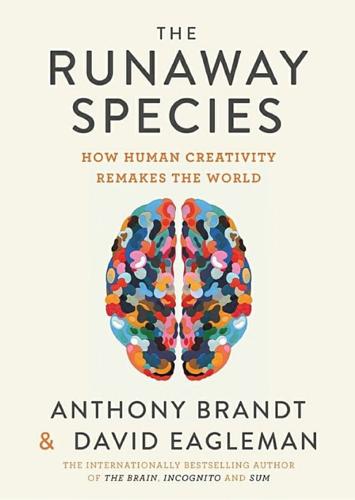
The Runaway Species: How Human Creativity Remakes the World
by
David Eagleman
and
Anthony Brandt
Published 30 Sep 2017
And although your smartphone doesn’t contain a fifteen-inch woofer, it transmits your endless library of music to any speaker system you’d like. 5 Jon Gertner, The Idea Factory: Bell Labs and the Great Age of American Innovation (New York: Penguin Press, 2012). 6 Andrew Hargadon, How Breakthroughs Happen: The Surprising Truth about How Companies Innovate (Boston: Harvard Business School Publications, 2003). 7 John Livingston Lowes, The Road to Xanadu; a Study in the Ways of the Imagination (Boston: Houghton Mifflin Company, 1927). 8 John Livingston Lowes, The Road to Xanadu. 9 Michel de Montaigne, Complete Essays, trans. Donald Frame (Palo Alto: Stanford University Press, 1958). 10 Steven Johnson, Where Good Ideas Come From: The Natural History of Innovation (New York: Riverhead Books, 2010). 11 Michael D. Lemonick, The Perpetual Now: A Story of Love, Amnesia, and Memory (New York: Doubleday, 2017). 12 Ray Kurzweil, The Age of Spiritual Machines (New York: Viking, 1999). An initial rough draft of the human genome was announced in 2000, and an updated version was published in 2003. We’ve chosen 2000 as the year of completion, although note that “finishing” this project took more than another decade, and further analysis is ongoing. 13 The proposition that all creativity is cognitively unified was first advanced by Arthur Koestler and subsequently developed by cognitive scientists Mark Turner and Gilles Fauconnier.
…
And although your smartphone doesn’t contain a fifteen-inch woofer, it transmits your endless library of music to any speaker system you’d like. 5 Jon Gertner, The Idea Factory: Bell Labs and the Great Age of American Innovation (New York: Penguin Press, 2012). 6 Andrew Hargadon, How Breakthroughs Happen: The Surprising Truth about How Companies Innovate (Boston: Harvard Business School Publications, 2003). 7 John Livingston Lowes, The Road to Xanadu; a Study in the Ways of the Imagination (Boston: Houghton Mifflin Company, 1927). 8 John Livingston Lowes, The Road to Xanadu. 9 Michel de Montaigne, Complete Essays, trans. Donald Frame (Palo Alto: Stanford University Press, 1958). 10 Steven Johnson, Where Good Ideas Come From: The Natural History of Innovation (New York: Riverhead Books, 2010). 11 Michael D. Lemonick, The Perpetual Now: A Story of Love, Amnesia, and Memory (New York: Doubleday, 2017). 12 Ray Kurzweil, The Age of Spiritual Machines (New York: Viking, 1999). An initial rough draft of the human genome was announced in 2000, and an updated version was published in 2003. We’ve chosen 2000 as the year of completion, although note that “finishing” this project took more than another decade, and further analysis is ongoing. 13 The proposition that all creativity is cognitively unified was first advanced by Arthur Koestler and subsequently developed by cognitive scientists Mark Turner and Gilles Fauconnier.

Artificial Unintelligence: How Computers Misunderstand the World
by
Meredith Broussard
Published 19 Apr 2018
It doesn’t mean that the machine acquires knowledge or wisdom or agency, despite what the term learning might imply. This type of linguistic confusion is at the root of many misconceptions about computers.3 Imagination also complicates things. How you define AI depends on what you want to believe about the future. One of Marvin Minsky’s students, Ray Kurzweil, is a proponent of the singularity theory, a hypothetical future merging of man and machine that he thinks will be achieved by 2045. (Kurzweil is famous for inventing a musical synthesizer that sounds like a grand piano.) Singularity is a major preoccupation of science fiction. I was once interviewed for a futurists’ summit, and the interviewer asked me about the paperclip theory: What if you invented a machine that made paperclips, and then you taught the machine to want to make paperclips, and then you taught the machine to want to make other things, and then the machine made lots of other machines and all the machines took over?
…
Look at domed cities, jet-pack commuting, underwater cities, mile-high buildings, and nuclear-powered automobiles—all staples of futuristic fantasies when I was a child that have never arrived. Sheer processing power is not a pixie dust that magically solves all your problems.”4 Facebook’s Yann LeCun is also a singularity skeptic. He told IEEE Spectrum: “There are people that you’d expect to hype the Singularity, like Ray Kurzweil. He’s a futurist. He likes to have this positivist view of the future. He sells a lot of books this way. But he has not contributed anything to the science of AI, as far as I can tell. He’s sold products based on technology, some of which were somewhat innovative, but nothing conceptually new.

Cloudmoney: Cash, Cards, Crypto, and the War for Our Wallets
by
Brett Scott
Published 4 Jul 2022
I look through its window and see Apollo 11 images above a disused burger grill, while F-16 fighter jets land behind me on Moffett airfield, part of which is leased from NASA by Google. Here too, in this sprawling compound, is the Singularity University campus, founded by space entrepreneur Peter Diamandis and Ray Kurzweil, Google’s prophet of the coming technological ‘Singularity’. This is the idea that, through our enmeshed innovations, humans will trigger an ‘automation of automation’: a tipping point at which intelligent machines create other machines and give birth to a vast technological ‘super-intelligence’ that we can fuse with to become gods of our environment.
…
While the individuals who work within this conglomeration can feel many things, the financial and corporate sector as an institutional complex is unable to ‘feel’ anything except profit, so our systems are running away with us, like a centrifuge spinning ever faster. It is this which leads to visions of a giant technological ‘Singularity’. Google’s futurist-in-chief Ray Kurzweil tries to put a mystical spin on this by invoking the Enlightenment tradition, which sees history as one long march to human transcendence over nature, alongside a parallel ascendency of mind over body. It begins with a vision of us crouching naked in the prehistoric wilderness. It ends with us ascending into a human-technology hybrid that lives forever, colonises space and regulates an artificial environment at will through AI ‘super-intelligence’, a pure, transcendent, rational mind.

Physics of the Future: How Science Will Shape Human Destiny and Our Daily Lives by the Year 2100
by
Michio Kaku
Published 15 Mar 2011
Jacobowitz, PC magazine Jay Jaroslav, former scientist at MIT AI Lab Donald Johanson, paleoanthropologist, discoverer of Lucy George Johnson, science journalist, New York Times Tom Jones, former NASA astronaut Steve Kates, astronomer and radio host Jack Kessler, professor of neurology, director of Feinberg Neuroscience Institute, Northwestern University Robert Kirshner, astronomer, Harvard University Kris Koenig, filmmaker and astronomer Lawrence Krauss, Arizona State University, author of The Physics of Star Trek Robert Lawrence Kuhn, filmmaker and philosopher, PBS TV series Closer to Truth Ray Kurzweil, inventor, author of The Age of Spiritual Machines Robert Lanza, biotechnology, Advanced Cell Technology Roger Launius, coauthor of Robots in Space Stan Lee, creator of Marvel Comics and Spider-Man Michael Lemonick, former senior science editor, Time magazine, Climate Central Arthur Lerner-Lam, geologist, volcanist, Columbia University Simon LeVay, author of When Science Goes Wrong John Lewis, astronomer, University of Arizona Alan Lightman, MIT, author of Einstein’s Dreams George Linehan, author of SpaceShipOne Seth Lloyd, MIT, author of Programming the Universe Joseph Lykken, physicist, Fermi National Accelerator Laboratory Pattie Maes, MIT Media Laboratory Robert Mann, author of Forensic Detective Michael Paul Mason, author of Head Cases W.
…
But this leaves the crucial question unanswered: When will the singularity take place? Within our lifetimes? Perhaps in the next century? Or never? We recall that the participants at the 2009 Asilomar conference put the date at any time between 20 to 1,000 years into the future. One man who has become the spokesperson for the singularity is inventor and best-selling author Ray Kurzweil, who has a penchant for making predictions based on the exponential growth of technology. Kurzweil once told me that when he gazes at the distant stars at night, perhaps one should be able to see some cosmic evidence of the singularity happening in some distant galaxy. With the ability to devour or rearrange whole star systems, there should be some footprint left behind by this rapidly expanding singularity.
…
A slightly changed version appeared in Whole Earth Review, Winter 1993, http://mindstalk.net/vinge/vinge-sing.html. 17 “I’d be very surprised if anything remotely like this happened”: Tom Abate, “Smarter Than Thou? Stanford Conference Ponders a Brave New World with Machines More Powerful Than Their Creators,” San Francisco Chronicle, May 12, 2006, http://articles.sfgate.com/2006–05–12/business/17293318_1_ray-kurzweil-machines-artificial-intelligence. 18 “If you could blow the brain up”: Kurzweil, p. 376. 19 Philosopher David Chalmers has even catalogued: http://consc.net/mindpapers.com. 20 “life may seem pointless if we are fated”: Sheffield, p. 38. 21 “One conversation centered”: Kurzweil, p. 10. 22 “It’s not going to be an invasion”: Abate, San Francisco Chronicle, May 12, 2006. 23 “intelligent design for the IQ 140 people”: Brian O’Keefe, “The Smartest (or the Nuttiest) Futurist on Earth,” Fortune, May 2, 2007, http://money.cnn.com/magazines/fortune/fortune_archive/2007/05/14/100008848/. 24 “It’s as if you took a lot of good food”: Greg Ross, “An Interview with Douglas R.
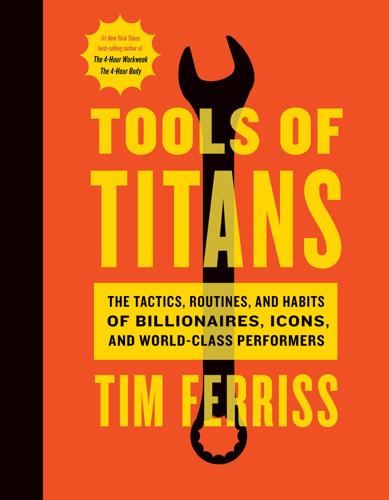
Tools of Titans: The Tactics, Routines, and Habits of Billionaires, Icons, and World-Class Performers
by
Timothy Ferriss
Published 6 Dec 2016
Craig Venter and Bob Hariri) and vice chairman of Human Longevity, Inc. (HLI); and the co-founder and executive chairman of Planetary Resources, a company designing spacecraft to prospect near-Earth asteroids for precious materials (seriously). He is the author of books including Bold and Abundance, which have endorsements from Bill Clinton, Eric Schmidt, and Ray Kurzweil, among others. Behind the Scenes I’ve heard more power players describe Peter as a “force of nature” than any other person, except for Tony Robbins, a friend of Peter’s. Peter is one of those guys who, every time you meet them, leave you shaking your head and (productively) asking, “What the fuck am I doing with my life?!”
…
“When 99% of people doubt you, you’re either gravely wrong or about to make history.” “I saw this the other day, and this comes from Scott Belsky [page 359], who was a founder of Behance.” “The best way to become a billionaire is to help a billion people.” Peter co-founded Singularity University with Ray Kurzweil. In 2008, at their founding conference at NASA Ames Research Center in Mountain View, California, Google co-founder Larry Page spoke. Among other things, he underscored how he assesses projects: “I now have a very simple metric I use: Are you working on something that can change the world?
…
Lewis), Cancer as a Metabolic Disease: On the Origin, Management, and Prevention of Cancer (Thomas Seyfried), Ketogenic Diabetes Diet: Type 2 Diabetes (Ellen Davis, MS, and Keith Runyan, MD), Fight Cancer with a Ketogenic Diet (Ellen Davis, MS) de Botton, Alain: The Unbearable Lightness of Being (Milan Kundera), The Complete Essays (Michel de Montaigne), In Search of Lost Time (Marcel Proust) De Sena, Joe: A Message to Garcia (Elbert Hubbard), Atlas Shrugged (Ayn Rand), Shōgun (James Clavell), The One Minute Manager (Kenneth H. Blanchard) Diamandis, Peter: The Spirit of St. Louis (Charles Lindbergh), The Man Who Sold the Moon (Robert A. Heinlein), The Singularity Is Near (Ray Kurzweil), Atlas Shrugged (Ayn Rand), Stone Soup story DiNunzio, Tracy: Good to Great: Why Some Companies Make the Leap . . . and Others Don’t (Jim Collins), The Everything Store: Jeff Bezos and the Age of Amazon (Brad Stone) Dubner, Stephen: For adults: Levels of the Game (John McPhee); for kids: The Empty Pot (Demi) Eisen, Jonathan: National Geographic Field Guide to the Birds of North America (Jon L.
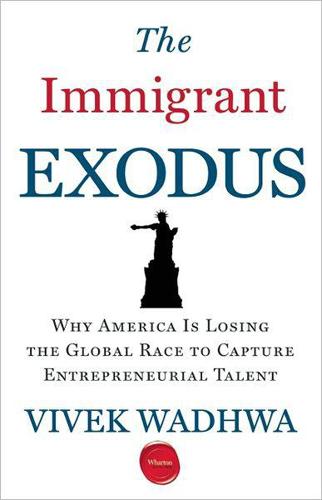
The Immigrant Exodus: Why America Is Losing the Global Race to Capture Entrepreneurial Talent
by
Vivek Wadhwa
Published 1 Oct 2012
I would also like to thank my many bosses, colleagues, and students at all the different universities that have supported me and my research, including Tom Katsouleas, Barry Myers, Peter Lange, Kristina Johnson, Gary Gereffi, Ben Rissing, Jeff Glass, and Brad Fox of Duke University; Richard Freeman, Elaine Bernardt, and John Trumpbour of Harvard University; AnnaLee Saxenian of the University of California, Berkeley; Larry Kramer, Dan Siciliano, and Joe Grundfest of Stanford University; Holli Semetko and Benn Konsynski of Emory University; and Peter Diamandis, Ray Kurzweil, Naveen Jain, and Rob Nail of Singularity University. The students are too numerous to name. You will find them on the covers of my research papers. For the latest research that led to this book, I want to thank Neesha Bapat for cracking the whip and getting the data ready on time. Thanks to the Kauffman Foundation for enabling me to do such extensive research into entrepreneurship and immigration.
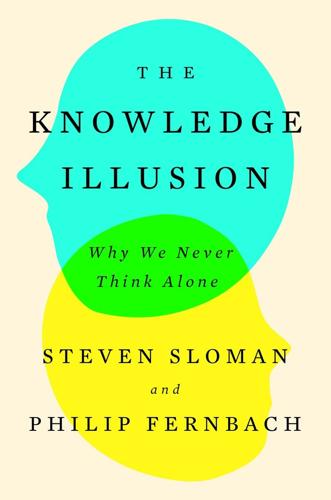
The Knowledge Illusion
by
Steven Sloman
Published 10 Feb 2017
People like Elon Musk, Stephen Hawking, and Bill Gates have cautioned that technology could become so sophisticated that it decides to pursue its own goals rather than the goals of the humans who created it. The reason to worry has been articulated by Vernor Vinge in a 1993 essay entitled “The Coming Technological Singularity,” as well as by Ray Kurzweil in his 2005 book The Singularity Is Near: When Humans Transcend Biology, and most recently by Swedish philosopher Nick Bostrom, who works at the University of Oxford. In Bostrom’s language, the fear is that technology is advancing so fast that the development of a superintelligence is imminent.
…
THINKING WITH TECHNOLOGY commuting a little less: www.governing.com/topics/transportation-infrastructure/how-america-stopped-commuting.html. attendance at movie theaters: www.slashfilm.com/box-office-attendance-hits-lowest-level-five-years. Vernor Vinge: V. Vinge (1993). “The Coming Technological Singularity.” Whole Earth Review, Winter. Ray Kurzweil: R. Kurzweil (2005). The Singularity Is Near: When Humans Transcend Biology. New York: Penguin Books. Nick Bostrom: N. Bostrom (2014). Superintelligence: Paths, Dangers, Strategies. Oxford, UK: Oxford University Press. Ian Tattersall: As told to Dan Falk in the online magazine eon: http://eon.co/magazine/science/was-human-evolution-inevitable-or-a-matter-of-luck.
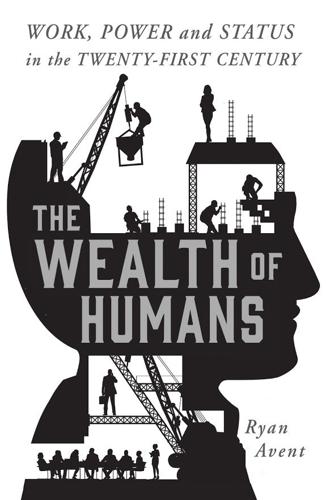
The Wealth of Humans: Work, Power, and Status in the Twenty-First Century
by
Ryan Avent
Published 20 Sep 2016
In an influential 2012 book, Race Against the Machine, two MIT scholars of technology and business, Erik Brynjolfsson and Andrew McAfee, argue that people aren’t very good at assessing the pace of exponential technological progress (for example, the repeated doubling in microchip power described by Moore’s law).11 They borrow a parable popularized by the futurist Ray Kurzweil.12 In the legend, a wise man invents the game of chess and presents it to his king. Pleased, the king allows the man to name his reward. The wise man responds that he wishes only modest compensation, following a simple rule. He would have one grain of rice on the first square of the chessboard, two on the second, four on the third, and so on, doubling each time for each of the sixty-four squares.
…
Solow, Robert, ‘Manufacturing Matters’, The New York Times, 12 July 1987. 10. Basu, Susanto, and Fernald, John, ‘Information and Communications Technology as a General-Purpose Technology: Evidence from U.S. Industry Data’, German Economic Review, Vol. 8, Issue 2, 2007. 11. Brynjolfsson and McAfee Race Against the Machine. 12. Raymond ‘Ray’ Kurzweil (1948–) is a serial inventor and entrepreneur whose past innovations include programmes which allow computers to recognize text and convert it to speech. More recently he has become known for his writing on transhumanism, and the prospect that powerful technology will allow humanity to achieve near-immortality. 13.

The Perfect Police State: An Undercover Odyssey Into China's Terrifying Surveillance Dystopia of the Future
by
Geoffrey Cain
Published 28 Jun 2021
AI is already everywhere, barely regulated and poorly understood, surveilling our purchases and clicks and learning how to nudge our behavior. AI can fly and land airplanes, make billion-dollar investment decisions, diagnose electrocardiograms, and guide manufacturing. “If all the intelligent software in the world were to suddenly stop functioning, modern civilization would grind to a halt,” predicted futurologist Ray Kurzweil way back in 2005, when AI was far less pervasive and sophisticated.4 So the question isn’t whether AI surveillance will permeate our society in the near future. It’s whether governments and businesses, which own valuable intellectual property, will have the wherewithal to govern AI in the interests of protecting democracy.
…
United Nations Human Rights Council, “Letter Dated 12 July 2019 from the Representatives of Algeria, Angola, Bahrain, Bangladesh, Belarus, the Plurinational State of Bolivia, Burkina Faso, Burundi, Cambodia, Cameroon, Comoros, the Congo, Cuba, the Democratic People’s Republic of Korea, the Democratic Republic of the Congo, Djibouti, Egypt, Equatorial Guinea, Eritrea, Gabon, the Islamic Republic of Iran, Iraq, Kuwait, the Lao People’s Democratic Republic, Mozambique, Myanmar, Nepal, Nigeria, Oman, Pakistan, the Philippines, the Russian Federation, Saudi Arabia, Serbia, Somalia, South Sudan, Sri Lanka, the Sudan, the Syrian Arab Republic, Tajikistan, Togo, Turkmenistan, Uganda, the United Arab Emirates, Uzbekistan, the Bolivarian Republic of Venezuela, Yemen, Zambia, Zimbabwe and the State of Palestine to the United Nations Office at Geneva Addressed to the President of the Human Rights Council,” 41st session, agenda item 3, July 12, 2019, https://ap.ohchr.org/Documents/E/HRC/c_gov/A_HRC_41_G_17.DOCX. Coda. Stop the Panopticon 1. Aldous Huxley, Brave New World (London: Chatton and Windus, 1932). 2. George Orwell, 1984 (London: Secker and Warburg, 1949). 3. John Brunner, Stand on Zanzibar (New York: Doubleday, 1968). 4. Ray Kurzweil, “Singularity Q&A,” Kurzweil Library, September 2005, https://www.kurzweilai.net/singularity-q-a. 5. Natasha Singer and Cade Metz, “Many Facial-Recognition Systems Are Biased, Says U.S. Study,” New York Times, December 19, 2019, https://www.nytimes.com/2019/12/19/technology/facial-recognition-bias.html.
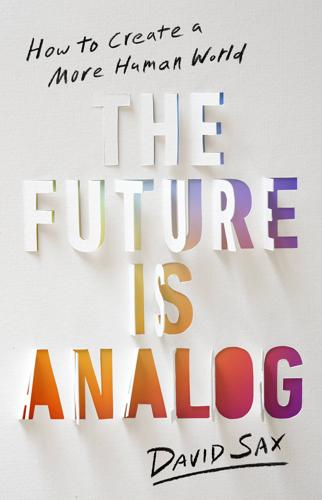
The Future Is Analog: How to Create a More Human World
by
David Sax
Published 15 Jan 2022
You would be in better touch with your body and its needs. You would be healthier. You would experience more meaning. Your soul would be nourished. “We’re going to be funnier; we’re going to be better at music. We’re going to be sexier. We’re really going to exemplify all the things that we value in humans to a greater degree,” predicted Ray Kurzweil, chief evangelist of the technological Singularity, a future tipping point when humanity and digital become one, merging the soul and silicon in glorious harmony. “Ultimately, it will affect everything. We’re going to be able to meet the physical needs of all humans. We’re going to expand our minds and exemplify these artistic qualities that we value.”
…
It is the walk from the car to the doors of the sanctuary, the coffee and conversation after, the sound and smell and sight of everything that occurs in that moment in time, which makes it distinct and sacred from the other times and spaces of the week. “It’s about every human moment we have with each other,” Kim said, “in every moment we believe is meaningful and true about human life.” Sure, there are digital prophets like Peter Thiel and Ray Kurzweil, who preach a future where we upload our souls to the cloud and transcend our earthly bodies to rule as gods in some virtual universe. But for most of us, the internet is a soulless place. The most meaningful moments in life are almost always physical. They happen when we are with other people, or perhaps when we are alone in the natural world.
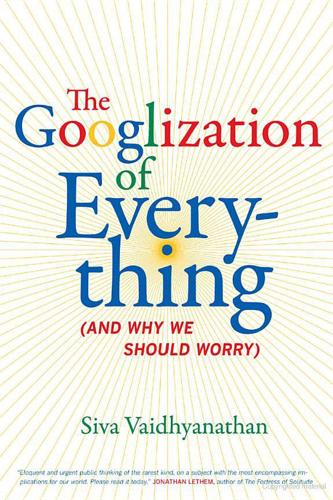
The Googlization of Everything:
by
Siva Vaidhyanathan
Published 1 Jan 2010
For examples of simplistic, naive visions of how technology works in the world, see Kevin Kelly, Out of Control: The Rise Of Neo-biological Civilization (Reading, MA: Addison-Wesley, 1994); Kevin Kelly, New Rules for the New Economy: 10 Radical Strategies for a Connected World (New York: Viking, 1998); Nicholas Negroponte, Being Digital (New York: Knopf, 1995); Ray Kurzweil, The Age of Spiritual Machines: When Computers Exceed Human Intelligence (New York: Viking, 1999). 6. For elaborations of unfounded “generational” thinking, see Jeff Gomez, Print Is Dead: Books in Our Digital Age (London: Macmillan, 2008); Neil Howe and William Strauss, Millennials Rising: The Next Great Generation (New York: Vintage, 2000). 7.
…
See Joseph Nye, The Paradox of American Power: Why the World’s Only Superpower Can’t Go It Alone (Oxford: Oxford University Press, 2002); Joseph Nye, Soft Power: The Means to Success in World Politics (New York: PublicAffairs, 2004). CH APTER 2. GO O GLE’S WAYS A ND M EA NS 1. Louis C.K. and Conan O’Brien, “Everything’s Amazing, Nobody’s Happy,” Late Night with Conan O’Brien, NBC TV, February 19, 2009, available at www.youtube.com. 2. Arthur C. Clarke, 3001: The Final Odyssey, quoted in Ray Kurzweil, The Singularity Is Near: When Humans Transcend Biology (New York: Viking, 2005), 4. NOT ES TO PAGES 5 4–59 229 3. Marissa Mayer, Google I/O ’08 Keynote Address, June 5, 2008, available at www.youtube.com. 4. Ibid. 5. Ibid. 6. John Battelle, The Search: How Google and Its Rivals Rewrote the Rules of Business and Transformed Our Culture (New York: Portfolio, 2005). 7.
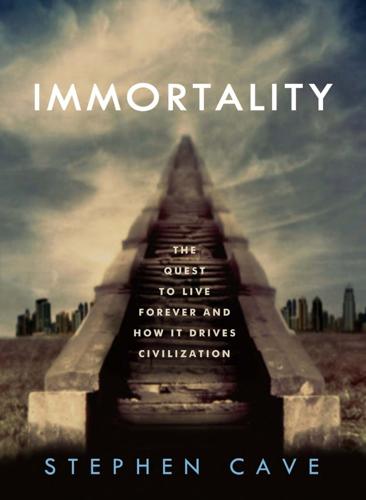
Immortality: The Quest to Live Forever and How It Drives Civilization
by
Stephen Cave
Published 2 Apr 2012
As our understanding of our bodies grows, the immortality engineers’ to-do list is therefore getting longer rather than shorter. The prescription for their elixir of life becomes ever more complex: cut back on fats, except omega-3; on alcohol, but not red wine; on bad cholesterol, but not good. One leading transhumanist, the respected inventor Ray Kurzweil, describes taking 250 supplements per day, a diet that would have made even the elixir-obsessed First Emperor balk. All of this might succeed in distracting us from the brute fact of our mortality, but it will not cure us of it. For centuries, many talented researchers have pursued the secret of aging—and believed they had found it.
…
The seekers of medical immortality are well represented by the gerontologist Aubrey de Grey, whose book Ending Aging: The Rejuvenation Breakthroughs That Could Reverse Human Aging in Our Lifetime (St. Martin’s Griffin, 2008, written with his assistant Michael Rae) details his Engineering Approach to defeating aging. Another enthusiastic and readable immortalist is Ray Kurzweil, as reflected in his many books and articles on the subject, most notably Fantastic Voyage: Living Long Enough to Live Forever (with Terry Grossman, Rodale, 2004), Transcend: Nine Steps to Living Well Forever (also with Terry Grossman, Rodale, 2009) and The Singularity Is Near: When Humans Transcend Biology (Viking, 2005).
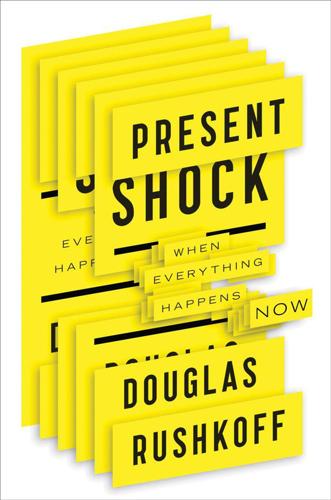
Present Shock: When Everything Happens Now
by
Douglas Rushkoff
Published 21 Mar 2013
Echoing the sentiments of the ancient ascetic, they tend to regard the human physical form with disregard or even disdain. At best, the human body is a space suit for something that could be stored quite differently. The notion of a technologically precipitated singularity was popularized by futurist and electronic music engineer Ray Kurzweil. In his book The Age of Spiritual Machines, Kurzweil argues that human beings are just one stage in the evolution of matter toward higher levels of complexity. Yes, cells and organisms are more complex than mere atoms and molecules, but the human capacity for continuing development pales in the face of that of our machines.
…
April Rinne and Jerry Michalski, “Polymaths, Bumblebees and the ‘Expert’ Myth,” Washington Post, March 28, 2011. 25. Gordon Bell, Gordon Bell home page, http://research.microsoft.com/en-us/um/people/gbell/ (accessed August 11, 2011). CHAPTER 5: APOCALYPTO 1. Mathew Barrett Gross and Mel Gilles, The Last Myth (Amherst, NY: Prometheus, 2012). 2. Rocco Castoro, “Ray Kurzweil: That Singularity Guy,” Vice, April 1, 2009, www.vice.com. 3. John Brockman, “The Technium and the 7th Kingdom of Life: A Talk with Kevin Kelly,” Edge, July 19, 2007, www.edge.org/3rd_culture/kelly07/kelly07_index.html. 4. Kevin Kelly, What Technology Wants (New York: Viking, 2010), 187. 5.

Only Humans Need Apply: Winners and Losers in the Age of Smart Machines
by
Thomas H. Davenport
and
Julia Kirby
Published 23 May 2016
By later in that same decade, a thaw was beginning. (In 1988, for example, Time magazine had AI back on its cover with an in-depth story called “Putting Knowledge to Work.”) Since then, the seasons of hype have come and gone. But the reality is that there has never been an actual regression in the technology. As Ray Kurzweil writes in his mind-bending book The Singularity Is Near: “I still run into people who claim that artificial intelligence withered in the 1980s, an argument that is comparable to insisting that the Internet died in the dot-com bust of the early 2000s. The bandwidth and price-performance of Internet technologies, the number of nodes (servers), and the dollar volume of e-commerce all accelerated smoothly through the boom as well as the bust and the period since.
…
Go to College, and Don’t Major in Architecture,” New York Times Economix blog, January 5, 2012, http://economix.blogs.nytimes.com/2012/01/05/want-a-job-go-to-college-and-dont-major-in-architecture. 6. Frank Levy, “How College Changes Demands for Human Skills,” OECD Working Paper, March 2010, http://www.oecd.org/edu/skills-beyond-school/45052661.pdf. Chapter 2: Just How Smart Are Smart Machines? 1. Ray Kurzweil, The Singularity Is Near (New York: Viking, 2005), 206. 2. Thomas H. Davenport and Jeanne G. Harris, “Automated Decision-Making Comes of Age,” MIT Sloan Management Review, Summer 2005, http://sloanreview.mit.edu/article/automated-decision-making-comes-of-age/. 3. Patrick May, “Q&A: Surgeon, Inventor Catherine Mohr Pushes Robotic Surgery to New Heights,” San Jose Mercury News, June 13, 2014, http://www.mercurynews.com/business/ci_25959851/q-surgeon-inventor-catherine-mohr-pushes-robotic-surgery. 4.
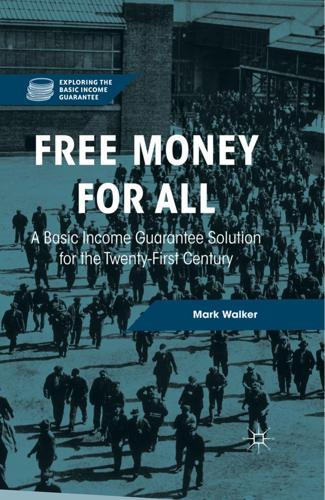
Free Money for All: A Basic Income Guarantee Solution for the Twenty-First Century
by
Mark Walker
Published 29 Nov 2015
I am not suggesting that the nanobot revolution will happen tomorrow—so please do not quit your job just yet. However, it is something like this future we are headed to (assuming we do not blow ourselves up in the meantime, discussed later). How soon until we have technology of this sophistication? Optimists like Ray Kurzweil think it could be somewhere in the order of 2030 to 2040.26 Whether this is accurate or whether Kurzweil is off by half a century or more is not something we can investigate here. Rather, I would like to make a few points to show that it is not pure fantasy. The first point is that a precursor technology, 3-D printing, or additive manufacturing, is already in use and rapidly expanding.
…
Smith, An Inquiry into the Nature and Causes of the Wealth of Nations (A. and C. Black, 1863). 24. There are about 7 acres of land per person in the United States, so there is more than enough land for everyone. 25. K. Eric Drexler, Nanosystems: Molecular Machinery, Manufacturing, and Computation (New York: John Wiley, 1992). 26. Ray Kurzweil, The Singularity Is Near (New York: Penguin Books, 2005). 27. B. T. Wittbrodt et al., “Life-Cycle Economic Analysis of Distributed Manufacturing with Open-Source 3-D Printers,” Mechatronics 23, 6 (2013): 713–726. 28. Ibid. 29. Kira, “Exclusive: WinSun China Builds World’s First 3D Printed Villa and Tallest 3D Printed Apartment Building,” www.3ders.org, January 18, 2015, http://www.3ders.org/articles/20150118-winsun-builds-world-first-3d-printed-villa-and-tallest-3d-printed-building-in-china.html. 30.

Cataloging the World: Paul Otlet and the Birth of the Information Age
by
Alex Wright
Published 6 Jun 2014
And while he might well have been flummoxed by the anything-goes ethos of present-day social networking sites like Facebook or Twitter, he also imagined a system that allowed groups of individuals to take part in collaborative experiences like lectures, opera performances, or scholarly meetings, where they might “applaud” or “give ovations.” It seems a short conceptual hop from here to Facebook’s ubiquitous “Like” button.26 The notion of a “world brain” once evoked by H. G. Wells and Otlet has found plenty of adherents in the modern era. Contemporary 292 E ntering the S trea m p undits like Ray Kurzweil, Howard Bloom, Kevin Kelly, and others have all advocated the possibility of a global planetary awakening, as the Web takes us to the next step in the evolution of human consciousness. In the end, what distinguishes Otlet’s vision from these cyber-utopians is his belief in the positive role of institutions.
…
Otlet himself would surely have embraced their stated mission: “to gather the world’s information.” In 2008, Google founder Larry Page helped launch the Singularity University, a gathering of technologists dedicated to preparing for a Wellsian moment of technological transcendence predicted by, among others, Ray Kurzweil. It would take shape as a new form of collective intellect over the network as human minds became increasingly fused with so-called thinking machines within a vast global network. Google has often laid claim to a higher social purpose. In 2004, technology historian George Dyson reflected on his visit to the Googleplex in a muchdiscussed essay entitled “Turing’s Cathedral”: “I felt,” wrote Dyson, “I was entering a 14th-century cathedral—not in the 14th century but in the 12th century, while it was being built.
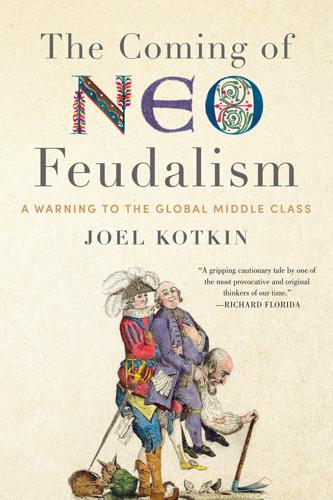
The Coming of Neo-Feudalism: A Warning to the Global Middle Class
by
Joel Kotkin
Published 11 May 2020
On the whole, it was evolutionary, not revolutionary.17 But for many in the new elite, technology represents far more than efficiency or convenience. It is both the beginning and the end, the material equivalent of a spiritual journey to nirvana. Google’s vision for the future is characterized by “immersive computing,” in which the real and virtual worlds blend together.18 Tech leaders like Ray Kurzweil, longtime head of engineering at Google, speak about creating a “posthuman” future, dominated by artificial intelligence and controlled by computers and those who program them. They look forward to having the capacity to reverse aging and to download their consciousness into computers. This vision rests on a faith in—or an obsession with—technological determinism, in which new technology is our evolutionary successor.19 But is this what most people want the future to be?
…
“The rise to power of net-based monopolies coincides with a new sort of religion based on becoming immortal,” writes Jaron Lanier.30 Potentially the most radical and far-reaching of the emerging creeds, transhumanism is a distinctly secular approach to achieving the long-cherished religious goal of immortality.31 The new tech religion treats mortality not as something to be transcended through moral actions, but as a “bug” to be corrected by technology.32 Although it sounds a bit like a wacky cult, transhumanism has long exercised a strong fascination for the elites of Silicon Valley. Devotees range from Sergei Brin, Larry Page, and Ray Kurzweil (of Google) to Peter Thiel and Sam Altman (Y Combinator). Kurzweil celebrates new technologies that allow for close monitoring of brain activity.33 Y Combinator is developing a technology for uploading one’s brain and preserving it digitally.34 The aim is to “develop and promote the realization of a Godhead based on Artificial Intelligence.”35 In some ways, transhumanism seems natural for those who hold technology above all other values.

The Human Age: The World Shaped by Us
by
Diane Ackerman
Published 9 Sep 2014
With the advent of nanotechnology, this adventure leaves the realm of fiction. Researchers are perfecting microscopic devices known as nanobots and beebots (equipped with tiny stingers) that can swim through the bloodstream and directly target the site of a tumor or disease, providing radical new treatments. The futurist Ray Kurzweil predicts that “by the 2030s we’ll be putting millions of nanobots inside our bodies to augment our immune system, to basically wipe out disease. One scientist cured Type I diabetes in rats with a blood-cell-size device already.” There are nanobots invisible to the immune system, which shed their camouflage when they reach their work site.
…
Would we judge it differently? For one of its gallery shows, Yale’s art museum accepted paintings inspired by Robert Motherwell, only to change its mind when it learned they’d been painted by a robot in Lipson’s Creative Machines Lab. It would be fun to discover robots’ talents and sensibility. Futurologists like Ray Kurzweil believe, as Lipson does, that a race of conscious robots, far smarter than we, will inhabit Earth’s near-future days, taking over everything from industry, education, and transportation to engineering, medicine, and sales. They already have a foot in the door. At the 2013 Living Machines Conference, in London, the European RobotCub Consortium introduced their iCub, a robot that has naturally evolved a theory of mind, an important milestone that develops in children at around the age of three or four.
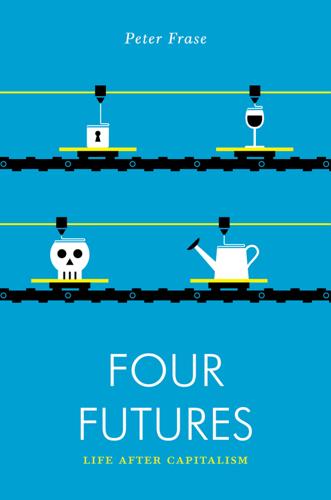
Four Futures: Life After Capitalism
by
Peter Frase
Published 10 Mar 2015
But Stross, and others like Ken MacLeod and China Miéville, have used fictions about future, past, and alternative worlds to give a fuller picture of class and social conflict. Fictional futures are, in my view, preferable to those works of “futurism” that attempt to directly predict the future, obscuring its inherent uncertainty and contingency and thereby stultifying the reader. Within the areas discussed in this book, a paradigmatic futurist would be someone like Ray Kurzweil, who confidently predicts that by 2049, computers will have achieved humanlike intelligence, with all manner of world-changing consequences.24 Such prognostications generally end up unconvincing as prophecy and unsatisfying as fiction. Science fiction is to futurism what social theory is to conspiracy theory: an altogether richer, more honest, and more humble enterprise.
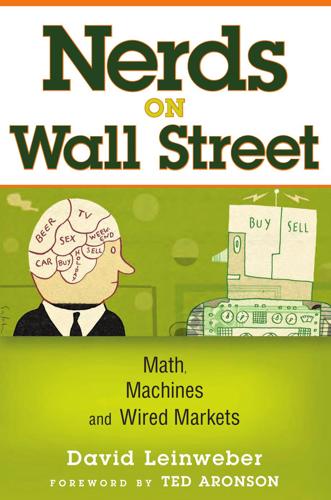
Nerds on Wall Street: Math, Machines and Wired Markets
by
David J. Leinweber
Published 31 Dec 2008
Intr oduction xxxvii Markets are not instantaneously and perfectly efficient. Insights, and the ability to execute them rapidly in ever-faster electronic markets, will continue to be rewarded. Today, these insights come from people, using machines as tools. Some believe the machines will be able to play the game themselves.19 One is Ray Kurzweil,20 who started out making reading machines for the blind, met Stevie Wonder and branched out into electronic keyboard instruments for all, and accumulated a great deal of investable capital in the process. The arc of Kurzweil’s view of machine intelligence is traced in the titles of books he has written on the subject: The Age of Intelligent Machines (1992), The Age of Spiritual Machines: When Computers Transcend Human Intelligence (2001), and The Singularity Is Near: When Humans Transcend Biology (2005).
…
The “digerati” (a hybrid of digital and literati ) would call this artificial intelligence (AI) and intelligence amplification (IA). * Moore’s Law is the well-known doubling of computational power every 18 months. Metcalfe’s Law is the less well-known maxim that the utility of a network grows as the square of the number of users. An Illustrated History of Wir ed Markets 27 Ray Kurzweil, one of the great inventors of our age, built a reading machine for the blind in 1976 and then started a musical instrument company with help from one of his customers, Stevie Wonder. Kurzweil created the market for modern electronic keyboards, and has continued to innovate and articulate the growing capabilities of computing.
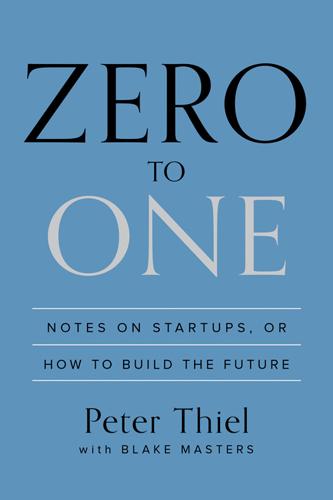
Zero to One: Notes on Startups, or How to Build the Future
by
Peter Thiel
and
Blake Masters
Published 15 Sep 2014
In case of conflict on a global scale, stagnation collapses into extinction. That leaves the fourth scenario, in which we create new technology to make a much better future. The most dramatic version of this outcome is called the Singularity, an attempt to name the imagined result of new technologies so powerful as to transcend the current limits of our understanding. Ray Kurzweil, the best-known Singularitarian, starts from Moore’s law and traces exponential growth trends in dozens of fields, confidently projecting a future of superhuman artificial intelligence. According to Kurzweil, “the Singularity is near,” it’s inevitable, and all we have to do is prepare ourselves to accept it.
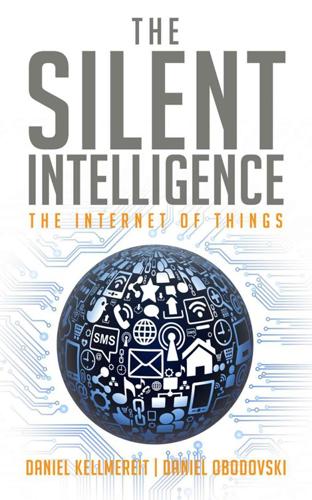
The Silent Intelligence: The Internet of Things
by
Daniel Kellmereit
and
Daniel Obodovski
Published 19 Sep 2013
Daniel Kellmereit and Daniel Obodovski San Francisco, June 2013 Chapter 1 HISTORY AND TRENDS The future is already here — it’s just not evenly distributed. ~ William Gibson How can you tell if something will become so huge and powerful that it’s going to change our lives and the way we do business? Below is a well-known story, popularized by Ray Kurzweil and retold as we know it, that illustrates the power of exponential growth. In ancient China a man came to the emperor and demonstrated to him his invention of the game of chess. The emperor was so impressed by the brilliance of the man’s invention that he told the man to name his reward. The man asked for his reward in an amount of rice — that one grain be placed on the first square of the chessboard, two on the second, four on the third, and so on — doubling the number of grains on each subsequent square.
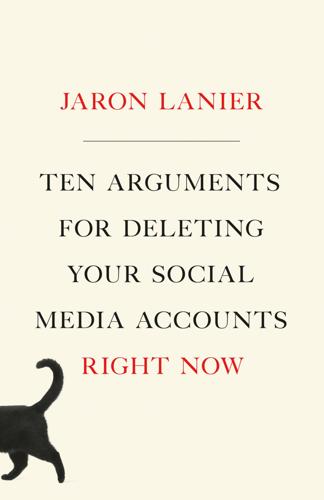
Ten Arguments for Deleting Your Social Media Accounts Right Now
by
Jaron Lanier
Published 28 May 2018
Google famously funded a project to “solve death.”6 This is such a precisely religious pretension that I’m surprised the religions of the world didn’t serve Google with a copyright infringement take-down notice.7 Google could have framed its work as life extension, or as aging research, but instead it went right for the prize, which is being the master of that which is most sacred within you. BUMMER must own you in order to own anything at all. Facebook also plays the game. The Facebook page of a deceased person becomes a shrine that one can only visit as a member, and to be a member you must implicitly become an adherent. Google’s director of engineering, Ray Kurzweil, promotes the idea that Google will be able to upload your consciousness into the company’s cloud, like the pictures you take with your smartphone. He famously ingests a whole carton of longevity pills every day in the hope that he won’t die before the service comes online. Note what’s going on here.

Machine, Platform, Crowd: Harnessing Our Digital Future
by
Andrew McAfee
and
Erik Brynjolfsson
Published 26 Jun 2017
.§ For many crops, large farms could be replaced by precisely monitored and controlled microcontainers (Chapter 11). Cryptocurrencies and smart contracts could take care of financial services and other information goods (Chapter 12). The web has already greatly democratized access to information and educational resources (Chapter 10). Futurist Ray Kurzweil said in 2012 that “a kid in Africa with a smartphone has access to more information than the president of the United States did 15 years ago,” and this diffusion of knowledge will certainly continue. And Moore’s law will continue to operate, driving prices down and performance up for all manner of digital goods, at rates unheard of in history prior to the computer era.
…
Spode, “The Great Cryptocurrency Heist,” Aeon, February 14, 2017, https://aeon.co/essays/trust-the-inside-story-of-the-rise-and-fall-of-ethereum. 305 “In [minority members’] view”: Ibid. 305 “Ethereum Classic”: Ibid. 306 “The Resolution of the Bitcoin Experiment”: Mike Hearn, “The Resolution of the Bitcoin Experiment,” Mike’s blog, January 14, 2016, https://blog.plan99.net/the-resolution-of-the-bitcoin-experiment-dabb30201f7#.rvh0ditgj. 306 “It has failed because the community has failed”: Ibid. 306 the performance of the Bitcoin system suffered: Daniel Palmer, “Scalability Debate Continues as Bitcoin XT Proposal Stalls,” CoinDesk, January 11, 2016, http://www.coindesk.com/scalability-debate-bitcoin-xt-proposal-stalls. 306 Chinese exchanges accounted for 42%: Nathaniel Popper, “How China Took Center Stage in Bitcoin’s Civil War,” New York Times, June 29, 2016, https://www.nytimes.com/2016/07/03/business/dealbook/bitcoin-china.html. 306 an estimated 70% of all Bitcoin-mining gear: Danny Vincent, “We Looked inside a Secret Chinese Bitcoin Mine,” BBC News, May 4, 2016, http://www.bbc.com/future/story/20160504-we-looked-inside-a-secret-chinese-bitcoin-mine. 308 “a kid in Africa with a smartphone”: Brandon Griggs, “Futurist: We’ll Someday Accept Computers as Human,” CNN, March 12, 2012, http://www.cnn.com/2012/03/12/tech/innovation/ray-kurzweil-sxsw. 309 “The Nature of the Firm”: R. H. Coase, “The Nature of the Firm,” Economica 4, no. 16 (1937): 386–405, http://www.richschwinn.com/richschwinn/index/teaching/past%20courses/Econ%20340%20-%20Managerial%20Economics/2013%20Fall%20340%20-%20The%20Nature%20of%20the%20Firm.pdf. 311 “Electronic Markets and Electronic Hierarchies”: Thomas W.

Dreaming in Code: Two Dozen Programmers, Three Years, 4,732 Bugs, and One Quest for Transcendent Software
by
Scott Rosenberg
Published 2 Jan 2006
As the project’s first big-splash Long Bet, Kapor wagered $20,000 (all winnings earmarked for worthy nonprofit institutions) that by 2029 no computer or “machine intelligence” will have passed the Turing Test. (To pass a Turing Test, typically conducted via the equivalent of instant messaging, a computer program must essentially fool human beings into believing that they are conversing with a person rather than a machine.) Taking the other side of the bet was Ray Kurzweil, a prolific inventor responsible for breakthroughs in electronic musical instruments and speech recognition who had more recently become a vigorous promoter of an aggressive species of futurism. Kurzweil’s belief in a machine that could ace the Turing Test was one part of his larger creed—that human history was about to be kicked into overdrive by the exponential acceleration of Moore’s Law and a host of other similar skyward-climbing curves.
…
Bill Gates in Singapore: Rohan Sullivan, “Gates Says Technology Will One Day Allow Computer Implants—but Hardwiring’s Not for Him,” Associated Press, July 5, 2005. Archived at http://www.interesting-people.org/archives/interesting-people/200507/msg00029.htm. “relief from the confusions of the world”: Ellen Ullman, The Bug (Nan A. Talese/Doubleday, 2003), p. 9. Kapor’s Long Bet with Ray Kurzweil is chronicled at http://www.longbets.org/1. “radical transformation of the reality”: Kurzweil described his vision of the Singularity in a talk hosted by the Long Now Foundation, San Francisco, September 23, 2005. Video of the event is at http://video.google.com/video play?docid=610691660251309257.
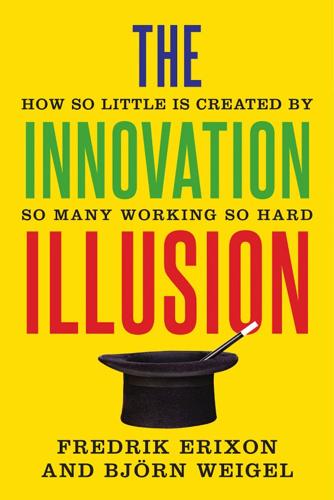
The Innovation Illusion: How So Little Is Created by So Many Working So Hard
by
Fredrik Erixon
and
Bjorn Weigel
Published 3 Oct 2016
In this book, references to the Western world, Western economies, the West, or similar expressions mean North America and Western and Central Europe. 3.Cheng et al., “Job Satisfaction.” 4.Blanchflower and Oswald, “Well-Being, Insecurity, and the Decline of American Job Satisfaction.” 5.Crabtree, “Worldwide, 13% of Employees Are Engaged at Work.” 6.Dreyer and Hindley, “Trade in Information Technology Goods.” 7.The Economist, “Planet of the Phones.” 8.Bogost, “The Secret History of the Robot Car.” 9.The “second half of the chessboard” is an expression by Ray Kurzweil to explain the power of exponential growth. Legend has it that when the inventor of chess presented the game to the emperor of India and was offered to choose a reward, he asked for one grain of rice on the first square, two on the second, four on the third, and so one. The emperor found the request modest but accepted it.
…
(i)n17 savings aggregate (i) corporate (cash hoarding) (i), (ii), (iii), (iv), (v) retirement (i), (ii), (iii), (iv), (v), (vi), (vii) Schmidt, Eric (i) Schumpeter, Joseph (i), (ii), (iii), (iv) Schumpeterian innovation (i), (ii) “scientific civilization” thinking, and planning (i) scientific research (i) see also R&D; research Scrooge character (i) “second half of the chessboard” (Ray Kurzweil) (i) Second Machine Age, The (Brynjolfsson and McAfee) (i), (ii) Second World countries, and globalization (i) Seinfeld (TV series) Art Vandelay and “importer-exporter” conversation (i), (ii) “Art Vandelay logistics operation” (i) self-driving vehicles see driverless vehicles self-regulation (i) Sellers, Peter (i) Servan-Schreiber, Jean-Jacques, Le Défi américain (The American Challenge) (i) services and globalization (i) and market contestability (i), (ii) and second unbundling of production (i) see also online services “servicification” (or “servitization”) (i), (ii) SetPoint nerve stimulator (i) shale gas, and regulation in Europe (i) shareholders (i), (ii), (iii), (iv), (v), (vi), (vii) shares buybacks (i), (ii), (iii), (iv) share/stock structures (i) see also stock markets Shelley, Percy Bysshe, Prometheus Unbound (i) shipping containers (i) short-termism (i) Sidecar (i) SIFIs (systemically important financial institutions) (i) Silicon Valley (i), (ii), (iii) silo curse (i) Silvia, John (i) Simons, Bright (i) Simphal, Thibaud (i) Sinclair, Clive (i) Sinn, Hans-Werner, “bazaar economy” (i) size see corporate size skill deficiencies, and productivity (i) Skype (i), (ii) Slyngstad, Yngve (i) smartphones (i), (ii), (iii), (iv) Smith, Adam economy of specialization (i) labor and wealth (i) “man of system” (i) The Wealth of Nations (i), (ii) Smiths, The (rock band), “hang the DJ” lyric (i) social democratic vision (i) social regulation (i), (ii) socialism and bureaucracy (i) and community-generated content (i) corporate socialism (i), (ii) and Cybersyn project (i) and death of capitalism utopia (i) and labor vs. work (i) market socialism (i) and open source technology (i) socialist planning (i) and Swedish hybrid economy (i) Söderberg, Hjalmar (i) software technology, and regulation (i) Sombart, Werner (i) Sony (i), (ii), (iii), (iv), (v) sourdough production, history of (i) South Africa, taxi services and regulation (i) South Korea “Asian Tiger” (i) R&D spending (i) Sovereign Wealth Fund Institute (i) sovereign wealth funds (SWFs) (i), (ii), (iii) “Soviet–Harvard illusion” (Nassim Nicholas Taleb) (i) space flights, commercial (i) SpaceX (i) Spain biofuels regulation (i) and diffusion of innovations (i) and globalization (i) left-wing populism (i) lesser dependence on larger enterprises (i) pensions (i) public debt (i) taxi services and regulation (i) specialization and corporate control (i) and creative destruction (i) and deregulation (i) and firm boundaries (i), (ii), (iii), (iv), (v) and globalization (i), (ii), (iii), (iv), (v), (vi), (vii) and innovation (i), (ii), (iii), (iv) and organization (i) and sunk costs (i), (ii) vertical (i), (ii) speech codes, in universities (i) staff turnover rates, and economic dynamism (i) Stanford University (i), (ii) Star Trek (TV series) (i) start-ups (i), (ii), (iii), (iv), (v) Startup Genome Report (i) statistics see recorded data (national accounts) Statoil (i) Stein, Gertrude, “there is no there there” quote (i) Stern, Ariel Dora (i) stock markets changing role of (i) and corporate politics (i) post-financial crisis growth (i) and sovereign wealth funds (i) see also shareholders; shares stockholding periods (i), (ii), (iii) strategic management (i) strategic planning (i) strategy, and managerialism (i) Stratos pacemaker (i) subprime mortgage crisis (US) (i) see also financial crisis (2007) subsidies domestic companies (i) US firms (i) sunk costs (i), (ii), (iii), (iv) Sunstein, Cass (i) supply chains fragmentation of (i), (ii), (iii), (iv), (v), (vi), (vii) German-Central European supply chain (i), (ii) globalization of (i), (ii) and market concentration (i) marketization of (i) and multinationals (i) and Nokia (i) outsourcing of (i) and private standards (i) see also value chains Sweden corporate renewal levels (i) economic situation: 1970s–1980s (i); globalization and post-financial crisis (i) productivity and incomes (i) services and globalization (i) sourdough hotel (Stockholm) (i) state telecommunication monopoly and mobile technology (i) SWFs (sovereign wealth funds) (i), (ii), (iii) SWOT analyses (i) systemically important financial institutions (SIFIs) (i) Tabarrok, Alex (i) tablets (i), (ii) Taibbi, Matt, “Why Isn’t Wall Street in Jail?”
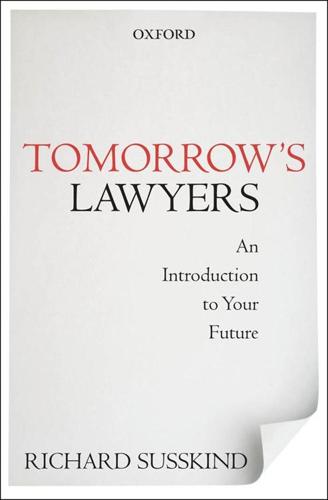
Tomorrow's Lawyers: An Introduction to Your Future
by
Richard Susskind
Published 10 Jan 2013
He projected then that every two years or so the processing power of computers would double, and yet its cost would halve. Sceptics at the time claimed that this trend would last for a few years and no more. In the event, it is still going strong and computer scientists and material scientists say that it is likely to continue unabated for the foreseeable future. In his formidable book, The Singularity is Near, Ray Kurzweil gives a practical illustration of the future consequences of Moore’s Law, if it continues to hold. By 2020, we are told, the average desktop computer will have the same processing power as the human brain, which neuroscientists tell us is approximately 1016 calculations per second. I find it amazing that in 1973, when I was 12, I held in my hand my first (large) electronic calculator, and that in less than 50 years a machine of the same size will have the same processing power as the human brain.
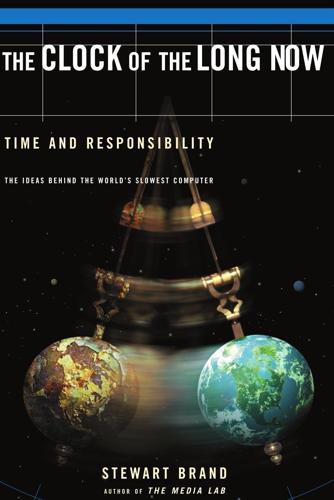
Clock of the Long Now
by
Stewart Brand
Published 1 Jan 1999
Holy Fire, Bruce Sterling (New York: Bantam, 1996) Long life changes life. Infinite in All Directions, Freeman Dyson (New York: Harper, 1989) Sophisticated hope. The Art of the Long View, Peter Schwartz (New York: Doubleday, 1991) Scenarios engage and free the future. The Age of Spiritual Machines, Ray Kurzweil (New York: Viking, 1999) Beyond Moore’s Law. Deep Time, Gregory Benford (New York: Avon, 1999) Signalling through millennia. Future Survey, Michael Marien, ed. (Monthly newsletter, $79/year from: World Future Society, 7910 Woodmont Ave., Suite 450, Bethesda, MD 20814, USA) All the good new books and articles about the future.

The People vs Tech: How the Internet Is Killing Democracy (And How We Save It)
by
Jamie Bartlett
Published 4 Apr 2018
What would be the moral case for humans to make significant decisions if there was another, superior, system? And what then would a democracy be, except an inefficient way to make consistently bad choices? Futurists often talk about something they call the ‘technological singularity’. It’s the point at which machine self-improvement sparks a runaway, self-replicating cycle. Ray Kurzweil, capo di capi of futurists, undoubted genius and scientist at Google, has suggested this will occur around the middle of the century. (Others disagree.) Far sooner and more likely, in my view, is what I’ll call the ‘moral singularity’ – the point at which we will start to delegate substantial moral and political reasoning to machines.

On the Edge: The Art of Risking Everything
by
Nate Silver
Published 12 Aug 2024
For roughly the past twelve thousand years, we have been in the Holocene, the geological epoch defined not by the origin of Homo sapiens per se but by humans becoming the dominant species and beginning to alter the shape of the Earth with our technologies. AI wresting control of this dominant position from humans would qualify as a 10, as would other forms of a “technological singularity,” a term popularized by the computer scientist Ray Kurzweil[*37] (who now works on AI for Google) to refer to “a future period during which the pace of technological change will be so rapid, its impact so deep, that human life will be irreversibly transformed.” Where does AI belong on this scale? Well, it depends on who you ask and what you mean by AI.
…
Silicon Valley: As used in this book—other definitions will vary—the ecosystem of technology companies, largely backed by venture capital, focused in the San Francisco Bay Area or with close ties to it. Singularity: A hypothesized future period of exceptionally rapid technological advancement. The term is sometimes capitalized, as by the AI researcher Ray Kurzweil, to refer to a predicted Singularity in the near future triggered by self-improving AI. Skill game: A form of gambling in which at least some players can be +EV over the long run without cheating or advantage play. Poker and sports betting are examples. Skin in the game: A term popularized by Warren Buffett (and later Nassim Nicholas Taleb, who used it as a book title) to refer to bearing the consequences of one’s actions.
…
GO TO NOTE REFERENCE IN TEXT the “blind empiricism”: Eliezer Yudkowsky, “Blind Empiricism,” LessWrong, November 12, 2017, lesswrong.com/posts/6n9aKApfLre5WWvpG/blind-empiricism. GO TO NOTE REFERENCE IN TEXT some mundane utility: The phrase “mundane utility” is frequently used by Zvi Mowshowitz. GO TO NOTE REFERENCE IN TEXT “be irreversibly transformed”: Ray Kurzweil, The Singularity Is Near: When Humans Transcend Biology, Kindle ed. (New York: Viking, 2005), 7. GO TO NOTE REFERENCE IN TEXT Melanie Mitchell: The Hub Staff, “Is AI an Existential Threat? Yann LeCun, Max Tegmark, Melanie Mitchell, and Yoshua Bengio Make Their Case,” The Hub, July 4, 2023, thehub.ca/2023-07-04/is-ai-an-existential-threat-yann-lecun-max-tegmark-melanie-mitchell-and-yoshua-bengio-make-their-case.
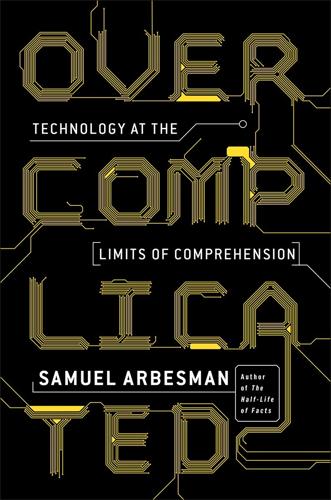
Overcomplicated: Technology at the Limits of Comprehension
by
Samuel Arbesman
Published 18 Jul 2016
“suddenly become opaque and bewildering”: Homer-Dixon, The Ingenuity Gap, 186. 100 billion sentences: Actually, to avoid duplicate sentences, it’s really 10,000 nouns × 1,000 verbs × 9,999 nouns. It would still take more than 30,000 years to go through these sentences. from the linguist Steven Pinker: Steven Pinker, The Language Instinct: How the Mind Creates Language (New York: William Morrow, 1994; repr. HarperPerennial, 1995), 205. “This is the cheese”: Quoted in Ray Kurzweil, The Age of Spiritual Machines: When Computers Exceed Human Intelligence (New York: Penguin, 1999), 95. Consider Kant Generator: Program via Mark Pilgrim, Dive into Python: Python from Novice to Pro, updated 2004. Available free online: http://www.diveintopython.net/xml_processing/. While this program allows for embedding clauses within others, it seems that Kant Generator is not in fact infinitely recursive, as it will always terminate.
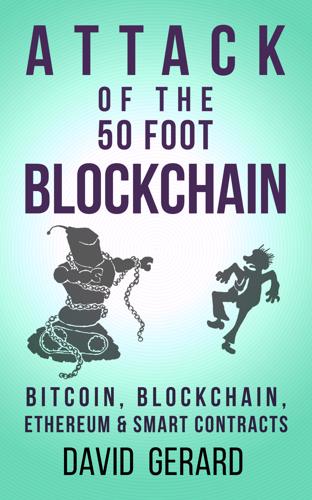
Attack of the 50 Foot Blockchain: Bitcoin, Blockchain, Ethereum & Smart Contracts
by
David Gerard
Published 23 Jul 2017
Then an artificial intelligence takes over the world, rendering the preceding plot meaningless. To be produced and distributed worldwide through the S-DTV portal! They are so keen on their sci-fi TV show idea that they named their blockchain startup after it. It appears that they are in fact Singularitarians — fans of Ray Kurzweil’s non-musical-instrument ideas, like an artificial intelligence taking over the world this century — who came up with a way to propagandise their beliefs in Ethereum and the Singularity (and crank pseudoeconomics) through the medium of science fiction television, and decided a crypto asset offering was clearly the way to collect money to make the TV show to evangelise their cult.432 Summary Blockchains won’t solve your bad recording or publishing deal.

Homo Deus: A Brief History of Tomorrow
by
Yuval Noah Harari
Published 1 Mar 2015
That right isn’t limited by any expiry date. An increasing minority of scientists and thinkers consequently speak more openly these days, and state that the flagship enterprise of modern science is to defeat death and grant humans eternal youth. Notable examples are the gerontologist Aubrey de Grey and the polymath and inventor Ray Kurzweil (winner of the 1999 US National Medal of Technology and Innovation). In 2012 Kurzweil was appointed a director of engineering at Google, and a year later Google launched a sub-company called Calico whose stated mission is ‘to solve death’.26 Google has recently appointed another immortality true-believer, Bill Maris, to preside over the Google Ventures investment fund.
…
Thus Hindus believe that humans can and should merge into the universal soul of the cosmos – the atman. Christians believe that after death saints are filled by the infinite grace of God, whereas sinners cut themselves off from His presence. Indeed, in Silicon Valley the Dataist prophets consciously use traditional messianic language. For example, Ray Kurzweil’s book of prophecies is called The Singularity is Near, echoing John the Baptist’s cry: ‘the kingdom of heaven is near’ (Matthew 3:2). Dataists explain to those who still worship flesh-and-blood mortals that they are overly attached to outdated technology. Homo sapiens is an obsolete algorithm.
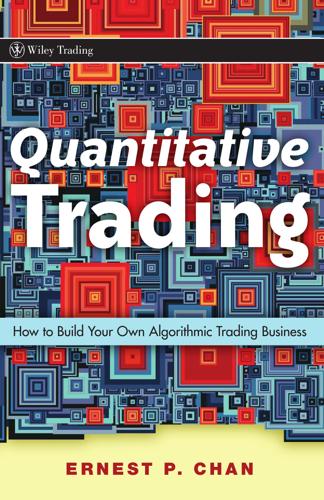
Quantitative Trading: How to Build Your Own Algorithmic Trading Business
by
Ernie Chan
Published 17 Nov 2008
But, in general, the more rules the strategy has, and the more parameters the model has, the more likely it is going to suffer data-snooping bias. Simple models are often the ones that will stand the test of time. (See the sidebar on my views on artificial intelligence and stock picking.) ARTIFICIAL INTELLIGENCE AND STOCK PICKING* There was an article in the New York Times a short while ago about a new hedge fund launched by Mr. Ray Kurzweil, a pioneer in the field of artificial intelligence. (Thanks to my fellow blogger, Yaser Anwar, who pointed it out to me.) According to Kurzweil, the stock-picking decisions in this fund are supposed to be made by machines that “. . . can observe billions of market transactions to see patterns we could never see” (quoted in Duhigg, 2006).
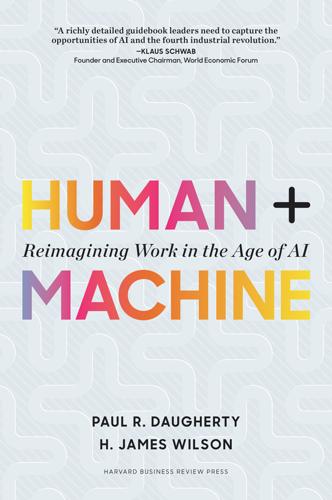
Human + Machine: Reimagining Work in the Age of AI
by
Paul R. Daugherty
and
H. James Wilson
Published 15 Jan 2018
We owe a special debt to the many visionaries and pioneers who have blazed AI trails and whose work has inspired and informed us, including Herbert Simon, John McCarthy, Marvin Minsky, Arthur Samuel, Edward Feigenbaum, Joseph Weizenbaum, Geoffrey Hinton, Hans Moravec, Peter Norvig, Douglas Hofstadter, Ray Kurzweil, Rodney Brooks, Yann LeCun, and Andrew Ng, among many others. And huge gratitude to our colleagues who provided insights and inspiration, including Nicola Morini Bianzino, Mike Sutcliff, Ellyn Shook, Marc Carrel-Billiard, Narendra Mulani, Dan Elron, Frank Meerkamp, Adam Burden, Mark McDonald, Cyrille Bataller, Sanjeev Vohra, Rumman Chowdhury, Lisa Neuberger-Fernandez, Dadong Wan, Sanjay Podder, and Michael Biltz.
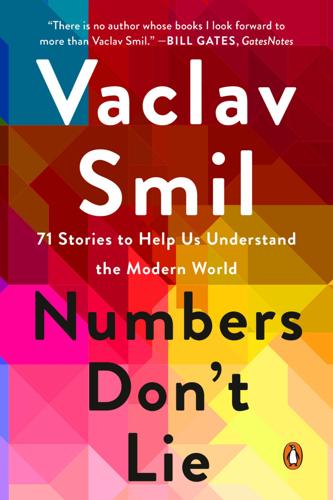
Numbers Don't Lie: 71 Stories to Help Us Understand the Modern World
by
Vaclav Smil
Published 4 May 2021
Before the Second World War, Dutch males were smaller than American men, but post-1950 US milk consumption declined while in the Netherlands it rose until the 1960s—and it remains higher than in the US. The lesson is obvious: the easiest way to improve a child’s chances of growing taller is for them to drink more milk. Is life expectancy finally topping out? Ray Kurzweil, Google’s chief futurist, says that if you can just hang on until 2029, medical advances will start to “add one additional year, every year, to your life expectancy. By that I don’t mean life expectancy based on your birthdate, but rather your remaining life expectancy.” Curious readers can calculate what this trend would do to the growth of the global population, but I will limit myself here to a brief review of survival realities.

Scale: The Universal Laws of Growth, Innovation, Sustainability, and the Pace of Life in Organisms, Cities, Economies, and Companies
by
Geoffrey West
Published 15 May 2017
This situation may well change as innovation becomes an increasingly active area of investigation, with researchers beginning to grapple with questions such as what is innovation, how do we measure it, how does it happen, and how can it be facilitated?4 The well-known inventor and futurist Ray Kurzweil has compiled and analyzed a list of his candidates for major innovations in a form that is highly suitable for comparison with our predictions.5 His results are shown in Figures 80 and 81, where the time between successive innovations is plotted against how long ago each innovation happened. Two versions are presented: one semilogarithmic (meaning that the vertical axis is logarithmic while the horizontal one is linear), and the other logarithmic for both axes.
…
It also brings up the classic philosophical question as to what extent these machines are “thinking.” What, in fact, do we mean by that? Are they already smarter than we are? Will superintelligent robots eventually replace us? The specter of such science fiction fantasies seems to be rapidly encroaching on us. Indeed, we can readily appreciate why some like Ray Kurzweil believe that the next paradigm shift will involve the integration of humans with machines, or eventually lead to a world dominated by intelligent robots. As I expressed earlier I have a fairly jaundiced view of such futurist thinking, though the questions raised are fascinating and very challenging and need to be addressed.

Superintelligence: Paths, Dangers, Strategies
by
Nick Bostrom
Published 3 Jun 2014
Observers in earlier epochs might have found it equally preposterous to suppose that the world economy would one day be doubling several times within a single lifespan. Yet that is the extraordinary condition we now take to be ordinary. The idea of a coming technological singularity has by now been widely popularized, starting with Vernor Vinge’s seminal essay and continuing with the writings of Ray Kurzweil and others.4 The term “singularity,” however, has been used confusedly in many disparate senses and has accreted an unholy (yet almost millenarian) aura of techno-utopian connotations.5 Since most of these meanings and connotations are irrelevant to our argument, we can gain clarity by dispensing with the “singularity” word in favor of more precise terminology.
…
Stephen Hawking even suggested that taking this step might be necessary in order to keep up with advances in machine intelligence: “We must develop as quickly as possible technologies that make possible a direct connection between brain and computer, so that artificial brains contribute to human intelligence rather than opposing it” (reported in Walsh [2001]). Ray Kurzweil concurs: “As far as Hawking’s … recommendation is concerned, namely direct connection between the brain and computers, I agree that this is both reasonable, desirable and inevitable. [sic] It’s been my recommendation for years” (Kurzweil 2001). 65. See Lebedev and Nicolelis (2006); Birbaumer et al. (2008); Mak and Wolpaw (2009); and Nicolelis and Lebedev (2009).
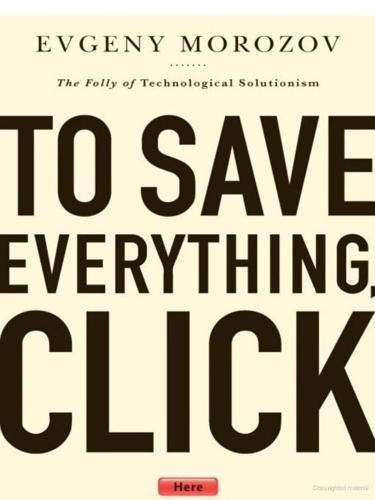
To Save Everything, Click Here: The Folly of Technological Solutionism
by
Evgeny Morozov
Published 15 Nov 2013
Instead of subverting the power of the entertainment industry—as Thiel’s belief in technoescapism would suggest—PayPal has become a useful tool in perpetuating that power. Geeks’ power myopia is scandalous. Another recent manifestation of technoescapism can be found in Abundance, a new book cowritten by Peter Diamandis, a wealthy entrepreneur and cofounder of the Singularity University. The latter is an outlet that promotes Ray Kurzweil’s idea that computers will one day be as smart as people, who in turn will live forever, and presents it, along with some other key ideas of technogospel, in an easy-to-absorb manner, suitable for busy executives eager to foot the university’s $25,000-for-ten-weeks tuition bill. (Thiel is an avid supporter of singularity as well, having given money to Kurzweil; it’s not very likely that he pays anyone to drop out of the Singularity University.)
…
To support the idea that technologies—and now “the Internet”—develop in accordance with their own rules, Kelly and other pundits usually invoke Moore’s law. For Kelly, “the curve [behind Moore’s law] is one way the technium speaks to us.” The idea that Moore’s law is akin to a natural law is widespread in Silicon Valley—it’s one of the original myths of Ray Kurzweil’s singularity movement—and it has long spread beyond the technology industry, frequently invoked to justify some course of action. There are few empirically rigorous studies of Moore’s law, but Finnish innovation scholar Ilkka Tuomi has done perhaps the most impressive work, digging up industry data, calculating actual growth rates, and tracking various expressions and references to Moore’s law in the media.

The Joys of Compounding: The Passionate Pursuit of Lifelong Learning, Revised and Updated
by
Gautam Baid
Published 1 Jun 2020
The physics of putting ever-greater numbers of transistors on silicon chips eventually will meet physical limitations. At some point, scientists believe, it will be extremely difficult and prohibitively expensive for conventional chip technology to sustain the pace dictated by Moore’s law. Some analysts believe that the death of Moore’s law will signal the end of exponential growth in computing, but Ray Kurzweil believes that the evolution of technology will start a new computing paradigm that will continue or accelerate this trend. In his deeply profound book The Singularity Is Near, Kurzweil writes: “Most long-range forecasts of what is technically feasible in future time periods dramatically underestimate the power of future developments because they are based on what I call the ‘intuitive linear’ view of history rather than the ‘historical exponential’ view.”8 In a nonlinear world, we all think linearly.
…
Richard Zeckhauser, “Investing in the Unknown and Unknowable,” Capitalism and Society 1, no. 2, article 5 (2006), https://sites.hks.harvard.edu/fs/rzeckhau/InvestinginUnknownandUnknowable.pdf. 6. “Visita a Warren Buffett,” Think Finance, 2005, http://www.thinkfn.com/wikibolsa/Visita_a_Warren_Buffett. 7. Warren Buffett, Berkshire Hathaway 1990 Annual Letter to Shareholders, March 1, 1991, http://www.berkshirehathaway.com/letters/1990.html. 8. Ray Kurzweil, The Singularity Is Near: When Humans Transcend Biology (London: Penguin, 2006). 30. Acknowledging the Role of Luck, Chance, Serendipity, and Randomness 1. Max Gunther, How to Get Lucky: 13 Techniques for Discovering and Taking Advantage of Life’s Good Breaks (London: Harriman House, 2010). 2.

What's Yours Is Mine: Against the Sharing Economy
by
Tom Slee
Published 18 Nov 2015
In its outer reaches it is an ambition manifested in ideas of Seasteading (a movement to build self-governing floating cities, started by PayPal founder Peter Thiel) and the Singularity (a belief in “the dawning of a new civilization that will enable us to transcend our biological limitations and amplify our creativity,” originating with the ideas of inventor and now Google employee Ray Kurzweil). Just as Hollywood is both a physical location and a global industry with a distinctive set of traditions, beliefs, and practices, so Silicon Valley is more than a place—it is shorthand for the world of digital technology, specifically Internet technology. Silicon Valley includes big companies like Apple, Google, Facebook, Amazon, and Microsoft, and it includes a never-ending stream of ambitious startups, not all physically located in Silicon Valley proper, but all driven by and products of the broader Internet culture.
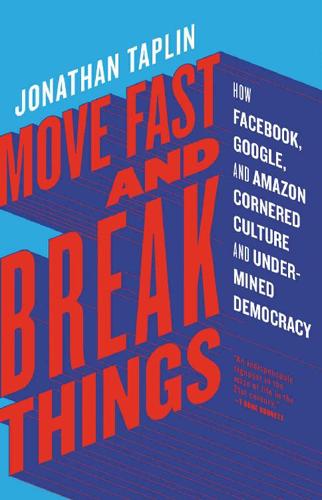
Move Fast and Break Things: How Facebook, Google, and Amazon Cornered Culture and Undermined Democracy
by
Jonathan Taplin
Published 17 Apr 2017
These men believe in their “super human” qualities so deeply that they are investing millions of dollars in ventures like Thiel’s Halcyon Molecular, a company that purports to “create a world free from cancer and aging.” The men believe that technology will eradicate the fundamental human anxiety that is fear of death. The futurist Jaron Lanier once described Google chief scientist Ray Kurzweil and his concept of “the singularity”: the point in time when an artificially intelligent machine will be capable of autonomously building ever smarter and more powerful machines than itself. Lanier noted, “These are ideas with tremendous currency in Silicon Valley; these are guiding principles, not just amusements, for many of the most influential technologists.… All thoughts about consciousness, souls, and the like are bound up equally in faith, which suggests something remarkable: What we are seeing is a new religion, expressed through an engineering culture.”

The End of Traffic and the Future of Transport: Second Edition
by
David Levinson
and
Kevin Krizek
Published 17 Aug 2015
More importantly, recognizing rigidity helps us understand when various changes might take place. Fast Change Matching the prospects of decreased driving with the wonders of technology provides fuel to buoy optimism. Trends are bending around vehicle use, overall travel, and technology. Ray Kurzweil,106 for instance, observes that technology advances at an accelerating rate, and is deployed more widely more quickly today than yesterday. Horace Dediu has made a similar point less breathlessly.107 108 If not arriving at a 'technological singularity', we see accelerating technical progress as fairly obvious; it applies most clearly to the information technology sector, where Moore's and kindred laws show the period of doubling of various technology.
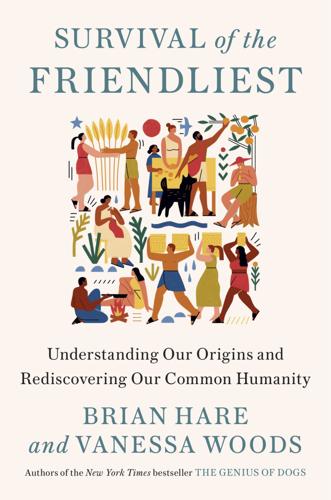
Survival of the Friendliest: Understanding Our Origins and Rediscovering Our Common Humanity
by
Brian Hare
and
Vanessa Woods
Published 13 Jul 2020
A decade later, when it went from 20 million to 80 million nodes in the same amount of time, it affected everyone.73 In 2004, we sequenced the first human genome for hundreds of millions of dollars. Now machines can sequence more than eighteen thousand genomes a year for $1,000 each.74 The futurist Ray Kurzweil predicts that in the next hundred years, we will experience the equivalent of twenty thousand years of progress. With technology flooding every facet of our lives, it is natural to assume that new technologies will be running our societies even better in the near future. The Millennium Project75 is a think tank that ranks the fifteen biggest global challenges every year.
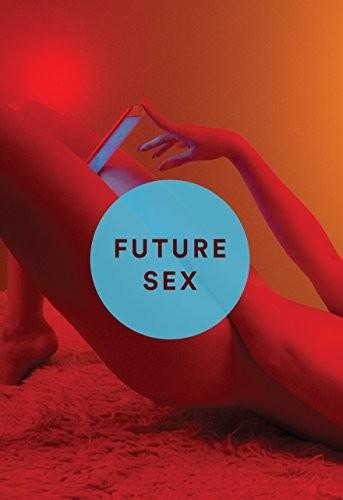
Future Sex
by
Emily Witt
Published 10 Oct 2016
Chris saw it in the hubris of Ross Ulbricht, the founder of Silk Road, the Internet marketplace whose founding premise was that being good at navigating the Internet meant one could, from the humble confines of Glen Park Library, defy a whole range of federal laws. He saw it in the “nontrivial” number of his co-workers who genuinely believed there was a reasonable chance they would live forever, who read the works of Ray Kurzweil and made plans for the singularity. He saw it in his friends, who saw no reason not to try going beyond sexual traditions that had governed societal behavior for thousands of years. Few people, he noticed, bothered with the question of whether one would really want to live forever. The hyperbolic optimists, as Chris saw it, thought that an action was right if it promoted individual happiness, regardless of its effect on others.
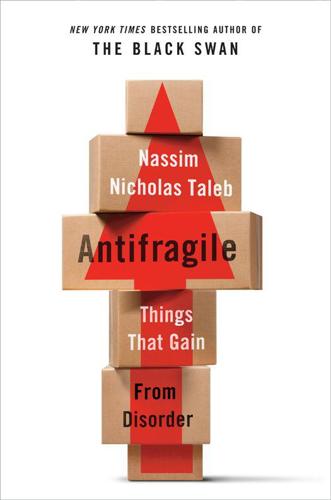
Antifragile: Things That Gain From Disorder
by
Nassim Nicholas Taleb
Published 27 Nov 2012
I was just reading in John Gray’s wonderful The Immortalization Commission about attempts to use science, in a postreligious world, to achieve immortality. I felt some deep disgust—as would any ancient—at the efforts of the “singularity” thinkers (such as Ray Kurzweil) who believe in humans’ potential to live forever. Note that if I had to find the anti-me, the person with diametrically opposite ideas and lifestyle on the planet, it would be that Ray Kurzweil fellow. It is not just neomania. While I propose removing offensive elements from people’s diets (and lives), he works by adding, popping close to two hundred pills daily. Beyond that, these attempts at immortality leave me with deep moral revulsion.

Power and Progress: Our Thousand-Year Struggle Over Technology and Prosperity
by
Daron Acemoglu
and
Simon Johnson
Published 15 May 2023
Scores of experts are making similar claims. As Robin Li, cofounder of the Chinese internet search firm Baidu and an investor in several other leading AI ventures, states, “The intelligent revolution is a benign revolution in production and lifestyle and also a revolution in our way of thinking.” Many go even further. Ray Kurzweil, a prominent executive, inventor, and author, has confidently argued that the technologies associated with AI are on their way to achieving “superintelligence” or “singularity”—meaning that we will reach boundless prosperity and accomplish our material objectives, and perhaps a few of the nonmaterial ones as well.
…
Demis Hassabis, “[By] deepening our capacity,” is from https://theworldin.economist.com/edition/2020/article/17385/demis-hassabis-ais-potential; “Either we need…” is from www.techrepublic.com/article/google-deepmind-founder-demis-hassabis-three-truths-about-ai. “The intelligent revolution…” is from Li (2020). On Ray Kurzweil’s ideas, see Kurzweil (2005). Reid Hoffman, “Could we have a bad…,” is from www.city-journal.org/html/disrupters-14950.html. Chapter 2: Canal Vision This chapter draws on the following histories: Wilson (1939), Mack (1944), DuVal (1947), Beatty (1956), Marlowe (1964), Kinross (1969), Silvestre (1969), McCullough (1977), Karabell (2003), and Bonin (2010).

Blindside: How to Anticipate Forcing Events and Wild Cards in Global Politics
by
Francis Fukuyama
Published 27 Aug 2007
He derived a parabolic curve going back to the Roman Empire that showed very slow growth at first and then started to steepen as machines came into the nineteenth century. He projected from the machine age into the electric age, and from that he predicted an ethereal age to start in the early decades of this century, precisely around the time Ray Kurzweil and others think the Singularity will come—an acceleration of technological change across the board so acute as to burst the bounds of human control. Henry Adams predicting the Singularity almost a century ago may be just coincidence. But the point that the pace of social, political, and technological change is accelerating is not coincidence—it is destiny.
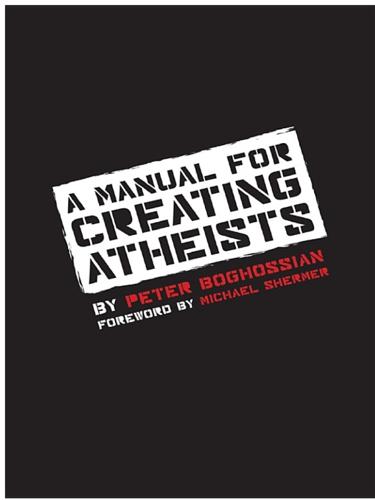
A Manual for Creating Atheists
by
Peter Boghossian
Published 1 Nov 2013
The Drake Equation estimates the number of intelligent, technologically capable civilizations in the universe: N = R* • fp • ne • fl • fi • fc • L Where, N = The number of communicating civilizations in the Milky Way R*= The number and rate of star formation fp = The fraction of those stars with planets ne= The number of planets per star with an environment suitable for life fl = The fraction of planets on which life develops fi = The fraction of planets on which intelligent life develops fc = The fraction of civilizations that develop technology (that release detectable signs of their existence into space) L = The length of time such civilizations release detectable signals into space By plugging in best estimates for the variables, one can guestimate the number of intelligent, technology-producing life forms in the Milky Way. Even by conservative estimates the number is larger than 1. Why then have we not witnessed evidence of intelligent extraterrestrial life? (This question is made even more curious when one factors in American inventor Ray Kurzweil’s idea of exponential technological growth, with mere centuries translating into unimaginable technological differences among civilizations.) One answer to this is that there’s something wrong with our model of the universe. There’s something we don’t understand, or something we’ve considered to be a remote possibility that’s an actuality.

Whiplash: How to Survive Our Faster Future
by
Joi Ito
and
Jeff Howe
Published 6 Dec 2016
The positive response and strong ongoing relationship between the machine and the Go community—they gave AlphaGo an honorary rank of 9th dan (the highest rank for Go players)—strengthened Joi’s belief that the future doesn’t have to hold Terminator-like intelligences that will decide that humans are a bad idea and eliminate them. It could, rather, contain a society in which humans and machines work together, inspiring each other and augmenting a growing collective intelligence. Ray Kurzweil, a futurist and familiar presence on the lecture circuit, popularized the idea of exponential change in his 2005 book, The Singularity Is Near. Kurzweil predicts that a computer will read as well as a human by 2029, and that the singularity—the point at which machines become more intelligent than humans—will arrive by 2045.
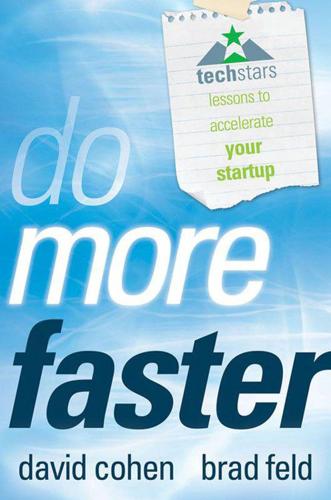
Do More Faster: TechStars Lessons to Accelerate Your Startup
by
Brad Feld
and
David Cohen
Published 18 Oct 2010
Remember to think exponentially, especially in the world of technology. A few early data points on a geometric curve might lead you to conclude that you're observing a linear phenomenon, which would lead to some seriously erroneous predictions about what points farther up the curve might look like. To paraphrase Ray Kurzweil, when presented with exponential growth, remember that people tend to drastically overestimate what will happen in the short term, but will profoundly underestimate what happens over longer time spans. It has been said that one measure of intelligence is the ability to hold contradictory thoughts in one's mind simultaneously.

Final Jeopardy: Man vs. Machine and the Quest to Know Everything
by
Stephen Baker
Published 17 Feb 2011
Instead, they were focused on a bolder challenge, the development of deep and broad machine intelligence known as Artificial General Intelligence. This, they believed, would lead to the next step of human evolution. The heart of the Singularity argument, as explained by the technologists Vernor Vinge and Ray Kurzweil, the leading evangelists of the concept, lies in the power of exponential growth. As Samuel Butler noted, machines evolve far faster than humans. But information technology, which Butler only glimpsed, races ahead at an even faster rate. Digital tools double in power or capacity every year or two, whether they are storing data, transmitting it, or performing calculations.

The Economic Singularity: Artificial Intelligence and the Death of Capitalism
by
Calum Chace
Published 17 Jul 2016
[iv] The term was first applied to human affairs back in the 1950s by John von Neumann, a key figure in the development of the computer. The physicist and science fiction author Vernor Vinge argued in 1993 that artificial intelligence and other technologies would cause a singularity in human affairs within 30 years. This idea was picked up and popularised by the inventor and futurist Ray Kurzweil, who believes that computers will overtake humans in general intelligence in 1929, and a singularity will arrive in 2045. https://en.wikipedia.org/wiki/Technological_singularity [v] The event horizon of a black hole is the point beyond which events cannot affect an outside observer, or in other words, the point of no return.
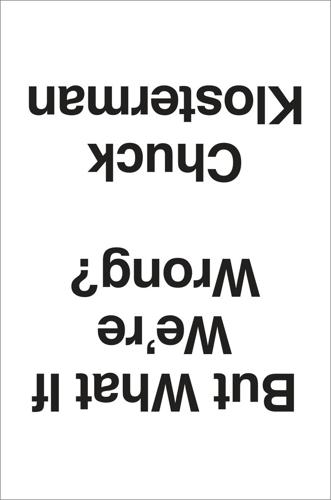
But What if We're Wrong? Thinking About the Present as if It Were the Past
by
Chuck Klosterman
Published 6 Jun 2016
The Singularity is a hypothetical super-jump in the field of artificial intelligence, rendering our reliance on “biological intelligence” obsolete, pushing us into a shared technological realm so advanced that it will be unrecognizable from the world of today. The best-known advocate of this proposition, futurist Ray Kurzweil, suggests that this could happen as soon as the year 2045, based on an exponential growth model. But that is hard to accept. Everyone agrees that Kurzweil is a genius and that his model makes mathematical sense, but no man truly believes this is going to happen in his own lifetime (sans a handful of people who are already living their lives very, very, very differently).
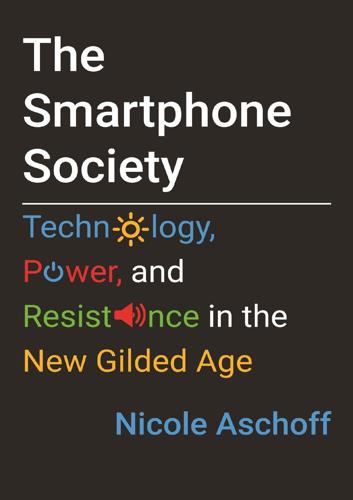
The Smartphone Society
by
Nicole Aschoff
Anthony Levandowski founded the first church of artificial intelligence based on a new religion called Way of the Future, a belief system created “to develop and promote the realization of a Godhead based on Artificial Intelligence.” Levandowski thinks humans are generating a new god—not a strike-you-down-with-lightning kind of god, but a god nonetheless: “If there is something a billion times smarter than the smartest human, what else are you going to call it?”21 Ray Kurzweil, inventor, futurist, and recipient of the 1999 National Medal of Technology and Innovation (granted by the US president), is a proponent of the idea of the Singularity. The Singularity is a hypothesis, shared by prominent scientists and futurists, contending that we’re walking down a technological path that ends with an artificial superintelligence so powerful it will someday have the power to reproduce itself and remake human civilization in unfathomable ways.

Prediction Machines: The Simple Economics of Artificial Intelligence
by
Ajay Agrawal
,
Joshua Gans
and
Avi Goldfarb
Published 16 Apr 2018
But what has struck us is how close to economics the debate actually is: competition underpins it all. A superintelligence is an AI that can outperform humans in most cognitive tasks and can reason through problems. Specifically, it can invent and improve itself. While science fiction author Vernor Vinge called the point at which this emerges “the Singularity” and futurist Ray Kurzweil suggested humans are not equipped to foresee what will happen at this point because we are by definition not as intelligent, it turns out that economists are actually quite well equipped to think about it. For years, economists have faced criticism that the agents on which we base our theories are hyper-rational and unrealistic models of human behavior.
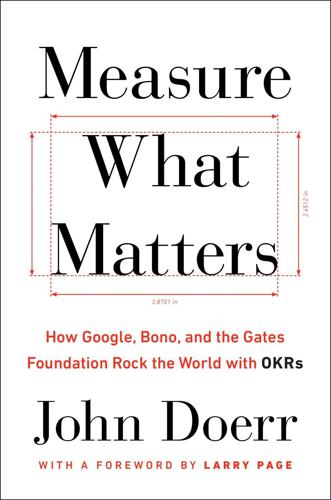
Measure What Matters: How Google, Bono, and the Gates Foundation Rock the World With OKRs
by
John Doerr
Published 23 Apr 2018
The studies found that “stretched” workers were not only more productive, but more motivated and engaged: “ Setting specific challenging goals is also a means of enhancing task interest and of helping people to discover the pleasurable aspects of an activity.” In 2007, the National Academy of Engineering asked a panel of leading thinkers—including Larry Page, futurist Ray Kurzweil, and geneticist J. Craig Venter—to choose fourteen “Grand Engineering Challenges” for the twenty-first century. After a year of debate, the panel settled on an array of quintessential stretch goals: Generate energy from fusion. Reverse-engineer the brain. Prevent nuclear terror. Secure cyberspace.
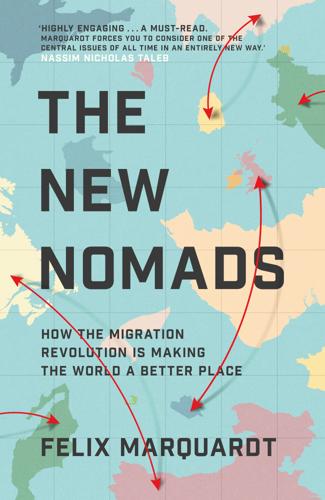
The New Nomads: How the Migration Revolution Is Making the World a Better Place
by
Felix Marquardt
Published 7 Jul 2021
When we met in Paris, he was working as a software engineer for Jobbatical, a start-up that helps businesses hire staff from around the world and relocate them. Jobbatical was led by a charismatic Estonian, Karoli Hindriks, who was an enthusiastic graduate of Singularity University, the brainchild of the world’s most famous techno-utopian author: Ray Kurzweil. When I had visited her at the company headquarters in Tallinn a few months earlier, they felt and smelled and looked like a miniature version of the offices of Google that I visited in Mountain View, New York and Paris. The company and the service it provided were one and the same. The atmosphere had a distinct, post-national, techno-enthusiast feel to it.
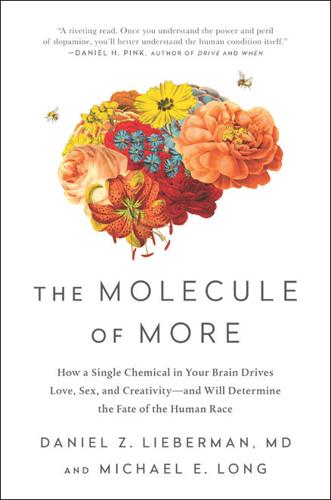
The Molecule of More: How a Single Chemical in Your Brain Drives Love, Sex, and Creativityand Will Det Ermine the Fate of the Human Race
by
Daniel Z. Lieberman
and
Michael E. Long
Published 13 Aug 2018
Every year we make faster and more powerful computers thanks to our dopamine-driven ability to use abstract concepts to create new technology. Once computers become smart enough to build—and improve—themselves, their progress will accelerate dramatically. At that point no one knows what will happen. It’s possible it will occur sooner than we think. Ray Kurzweil, the world’s leading futurologist, believes that we will have superintelligent computers as early as the year 2029. Computers that are programmed using traditional techniques are completely predictable. They follow a clear set of instructions to get from the beginning of a calculation to the end.

The Innovators: How a Group of Inventors, Hackers, Geniuses and Geeks Created the Digital Revolution
by
Walter Isaacson
Published 6 Oct 2014
“We are continually looking at the list of things machines cannot do—play chess, drive a car, translate language—and then checking them off the list when machines become capable of these things,” said Tim Berners-Lee. “Someday we will get to the end of the list.”18 These latest advances may even lead to the singularity, a term that von Neumann coined and the futurist Ray Kurzweil and the science fiction writer Vernor Vinge popularized, which is sometimes used to describe the moment when computers are not only smarter than humans but also can design themselves to be even supersmarter, and will thus no longer need us mortals. Vinge says this will occur by 2030.19 On the other hand, these latest stories might turn out to be like the similarly phrased ones from the 1950s, glimpses of a receding mirage.
…
Beau Cronin of O’Reilly Media has proposed a drinking game: “take a shot every time you find a news article or blog post that describes a new AI system as working or thinking ‘like the brain’ ” (http://radar.oreilly.com/2014/05/it-works-like-the-brain-so.html), and he maintains a pinboard of stories making such claims (https://pinboard.in/u:beaucronin/t:like-the-brain/#). 18. Author’s interview with Tim Berners-Lee. 19. Vernor Vinge, “The Coming Technological Singularity,” Whole Earth Review, Winter 1993. See also Ray Kurzweil, “Accelerating Intelligence,” http://www.kurzweilai.net/. 20. J. C. R. Licklider, “Man-Computer Symbiosis,” IRE Transactions on Human Factors in Electronics, Mar. 1960. 21. Kelly and Hamm, Smart Machines, 7. 22. Kasparov, “The Chess Master and the Computer.” 23. Kelly and Hamm, Smart Machines, 2. 24.
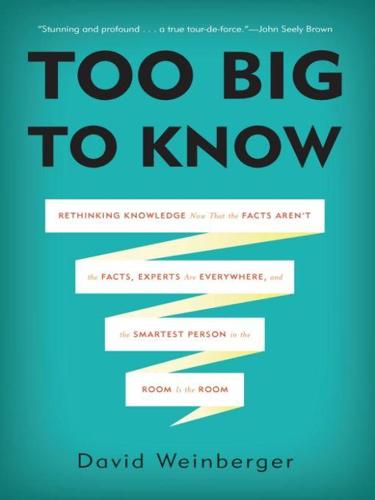
Too Big to Know: Rethinking Knowledge Now That the Facts Aren't the Facts, Experts Are Everywhere, and the Smartest Person in the Room Is the Room
by
David Weinberger
Published 14 Jul 2011
Where are the amateurs—the Darwins and Mendels—who are influencing science through the sort of contributions that credentialed scientists themselves make? The amateurs’ articles tend not to make it into scientific journals, and they tend not to be invited to give talks at scientific conferences. Yes, there are some exceptions—Jeff Hawkins’s theory of brain function,32 Ray Kurzweil on the biology of aging, Stephen Wolfram’s theory of everything—but they tend to be crossovers from technical or scientific fields in which they’ve been highly trained. It seems that amateurs had a bigger effect on the ideas of science in the nineteenth century than they’re having in the Age of the Net.

Protocol: how control exists after decentralization
by
Alexander R. Galloway
Published 1 Apr 2004
Thus, my study skips direct engagement with the work of Alvin Toffler, Peter Drucker, Daniel Bell, and others who discuss the third phase of capitalist development in social terms. The large mass of literature devoted to artificial intelligence and speculations about the consciousness (or lack thereof ) within man and machine is also largely avoided in this book. Writers like Ray Kurzweil forecast a utopian superfuture dominated by immortal man-machine hybrids. Hans Moravec predicts a similar future, only one less populated by humans who are said to “retire” to the mercy of their ascendant computerized progeny. Marvin Minsky, Daniel Dennett, John Searle, Hubert Dreyfus, and others have also wrestled with the topic of artificial intelligence.
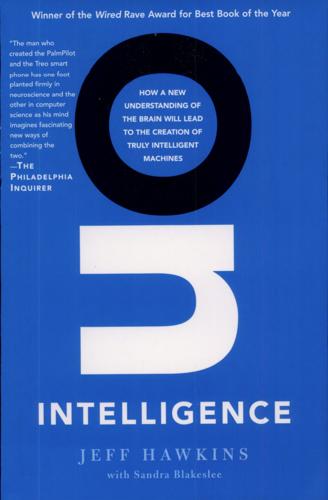
On Intelligence
by
Jeff Hawkins
and
Sandra Blakeslee
Published 1 Jan 2004
The image puts me in mind of those magically animated broomsticks from the Sorcerer's Apprentice, regenerating themselves from their splinters and working tirelessly to bring about disaster. Along similar lines, some AI optimists offer extended-life prophecies that are unsettling. For instance, Ray Kurzweil talks about the day when nanorobots will crawl within your brain, recording every synapse and every connection, and then report all the information to a supercomputer, which will reconfigure itself into you! You'll become a "software" version of yourself that will be practically immortal. These two predictions about machine intelligence, the intelligent machinesrun-amok scenario and the upload-your-brain-into-a-computer scenario, seem to surface over and over.
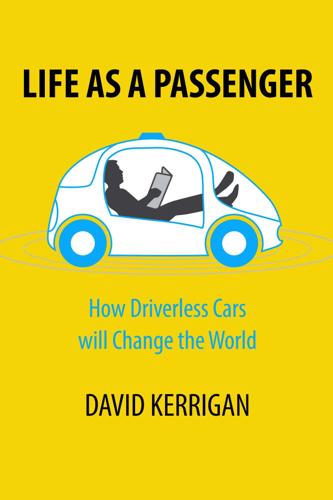
Life as a Passenger: How Driverless Cars Will Change the World
by
David Kerrigan
Published 18 Jun 2017
Driverless cars represent a level of change beyond what we’re familiar with. We struggle to understand change on the scale of driverless cars - it is hard for people to deal with nonlinear concepts - most people’s experiences have been predominantly linear, where there’s a proportional relationship between actions and outcomes. Futurist Ray Kurzweil believes: “our intuition about the future is linear because that is the way the world worked for most of history. But the reality of information technology is exponential, and that makes a profound difference. If I take 30 steps linearly, I get to 30. If I take 30 steps exponentially, I get to a billion.”[368] Given that the negative impacts of driverless cars (e.g. job losses, first deaths of humans due to system errors) are likely to happen before the positives are fully realised, we face the very real chance that coping with the change will exceed our ability to prepare for it - especially when the outcome of a nonlinear change is negative, tendencies like loss aversion can kick in and people can react in highly emotional ways.
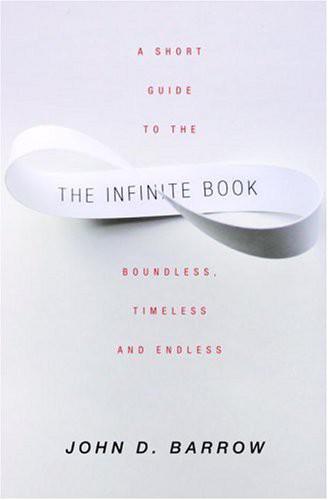
The Infinite Book: A Short Guide to the Boundless, Timeless and Endless
by
John D. Barrow
Published 1 Aug 2005
Hanson, ‘How to Live in a Simulation’, Journal of Evolution and Technology 7 (2001), http://www.transhumanist.com 35. David Hume, Dialogues Concerning Natural Religion (1779), in Thomas Hill Green and Thomas Hodge Grose (eds), David Hume: The Philosophical Works, London, 1886, vol. 2, pp. 412–16. 36. These questions are closely connected to the issues discussed in Ray Kurzweil’s book The Age of Spiritual Machines (Viking, New York, 1999), concerning the appearance of spiritual and aesthetic qualities in virtual realities and forms of artificial intelligence. 37. R. Hanson, ‘How to Live in a Simulation’, op. cit. chapter ten Making Infinity Machines 1. J.F. Thomson, ‘Tasks and Super-Tasks’, Analysis 15, 1 (1954). 2.
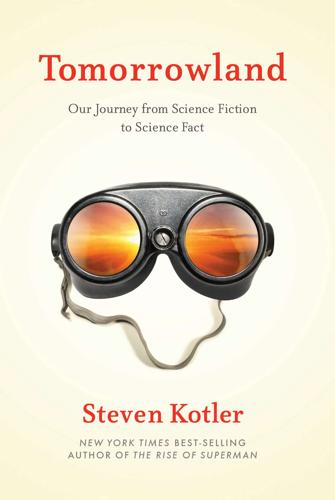
Tomorrowland: Our Journey From Science Fiction to Science Fact
by
Steven Kotler
Published 11 May 2015
Peter Cochrane — who is arguably taking a more limited approach to the problem, believing that the combination of sensory experience and the resulting neurochemistry is enough to recreate memory — thinks the Soul Catcher will be working by 2025. In The Singularity is Near, futurist, author, inventor, and director of engineering at Google — and thus the man in charge of building a conscious computer — Ray Kurzweil almost agrees with this timing, arguing that 2029 is the year man and machine will truly merge. To many, these predictions seem overly optimistic. For certain, there are long and complicated arguments about the true nature of consciousness and our ability to capture it in a computer. There are even more arguments about whether a self stored in silicon would be our actual essence or some sorely diminished version.
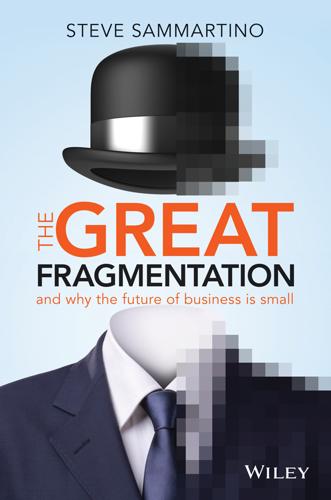
The Great Fragmentation: And Why the Future of All Business Is Small
by
Steve Sammartino
Published 25 Jun 2014
Books The Art of Game Design: A Book of lenses Jesse Schell Billions & Billions: Thoughts on Life and Death at the Brink of the Millennium Carl Sagan Brand Hijack: Marketing Without Marketing Alex Wipperfurth The Cluetrain Manifesto Rick Levine, Christopher Locke, Doc Searls, David Weinberger The Demon-Haunted World: Science as a Candle in the Dark Carl Sagan and Ann Druyan How to Create a Mind: The Secret of Human Thought Revealed Ray Kurzweil The Intelligent Investor: The Definitive Book on Value Investing. A Book of Practical Counsel Benjamin Graham One Up On Wall Street: How To Use What You Already Know To Make Money In The Market Peter Lynch The Prince Niccolo Machiavelli A Random Walk Down Wall Street: The Time-Tested Strategy for Successful Investing Burton G.

Scary Smart: The Future of Artificial Intelligence and How You Can Save Our World
by
Mo Gawdat
Published 29 Sep 2021
Moore’s law has predicted humanity’s ability to innovate in the arena of computer science perhaps like no other law. Many other laws followed Moore’s to describe the accelerating trend in computer storage, connectivity and network speeds. All of them pointed to a clear upwards trajectory that has perhaps been summed up best by the work of Ray Kurzweil, the world-renowned inventor, futurist and author of several definitive books on the topic of AI, such as his international bestseller The Singularity. In his 1999 book, The Age of Spiritual Machines, he coined the term ‘The Law of Accelerating Returns’, which explained that the rate of change in a wide variety of evolutionary systems (including, but not limited to, the growth in technology) tends to increase exponentially.

The Strange Order of Things: The Biological Roots of Culture
by
Antonio Damasio
Published 6 Feb 2018
Downey, Wei Wang, Elizabeth C. Tyler-Kabara, Douglas J. Weber, Angus J. McMorland, Meel Velliste, Michael L. Boninger, and Andrew B. Schwartz, “High-Performance Neuroprosthetic Control by an Individual with Tetraplegia,” Lancet 381, no. 9866 (2013): 557–64, doi:10.1016/S0140-6736(12)61816-9. 4. Ray Kurzweil, The Singularity Is Near: When Humans Transcend Biology (New York: Penguin, 2005); Luc Ferry, La révolution transhumaniste: Comment la technomédecine et l’uberisation du monde vont bouleverser nos vies (Paris: Plon, 2016). 5. Yuval Noah Harari, Homo Deus: A Brief History of Tomorrow (Oxford: Signal Books, 2016). 6.

Outnumbered: From Facebook and Google to Fake News and Filter-Bubbles – the Algorithms That Control Our Lives
by
David Sumpter
Published 18 Jun 2018
At a meeting of the Future of Life Institute – a charitable organisation in Boston, Massachusetts, focused on dealing with future risks – in January 2017, theoretical physicist Max Tegmark hosted a panel debate about general artificial intelligence.1 The panel included nine of the most influential men in the field, including entrepreneur and Tesla CEO Elon Musk; the Google guru Ray Kurzweil; DeepMind’s founder Demis Hassabis and Nick Bostrom, the philosopher who has mapped our way to, what he calls, ‘superintelligence’. The panel members varied in their views as to whether human-level machine intelligence would come gradually or all of a sudden, or whether it will be good or bad for humanity.
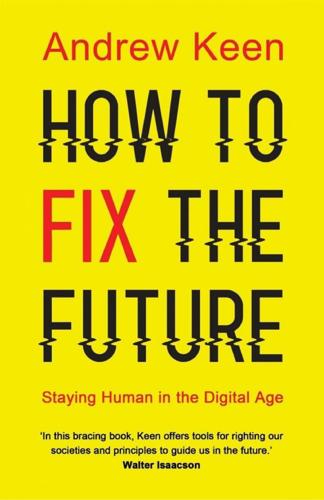
How to Fix the Future: Staying Human in the Digital Age
by
Andrew Keen
Published 1 Mar 2018
The problem is there’s no human version of Moore’s Law, the 1965 prediction by Intel cofounder Gordon Moore that the processing power of silicon chips would double about every eighteen months.4 Today, half a century after Gordon Moore described the phenomenon that would later be named Moore’s Law,5 it remains the engine driving what the Pulitzer Prize–winning author Thomas Friedman calls our “age of acceleration.”6 So, yes, that iPhone in your pocket may be unrecognizably faster, and more connected, powerful, and intelligent, than its predecessor, the once-revolutionary Apple Macintosh personal computer, let alone a mid-sixties multimillion-dollar mainframe machine that required its own air-conditioned room to operate. But in spite of promises about the imminent merging of man and computer by prophets of the “Singularity”—such as Google’s chief futurist, Ray Kurzweil, who still insists that this synthesis will inevitably happen by 2029—we humans, for the moment at least, are no speedier, no smarter, and, really, no more self-aware than we were back in 1965. What Friedman euphemistically dubs a “mismatch” between technology and humanity is, he says, “at the center of much of the turmoil roiling politics and society in both developed and developing countries today . . .
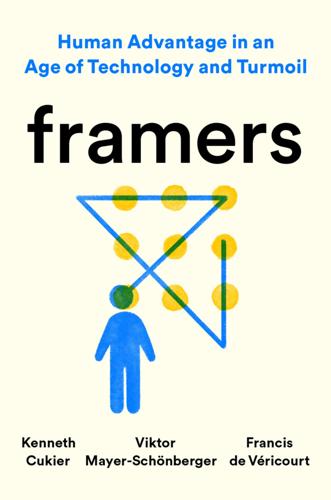
Framers: Human Advantage in an Age of Technology and Turmoil
by
Kenneth Cukier
,
Viktor Mayer-Schönberger
and
Francis de Véricourt
Published 10 May 2021
Klint Finley, “Geeks for Monarchy: The Rise of the Neoreactionaries,” TechCrunch, November 23, 2013, https://techcrunch.com/2013/11/22/geeks-for-monarchy/?guccounter=1. Also, Cade Metz, “Silicon Valley’s Safe Space,” New York Times, February 13, 2021, https://www.nytimes.com/2021/02/13/technology/slate-star-codex-rationalists.html. On the singularity: Ray Kurzweil, The Singularity Is Near: When Humans Transcend Biology (New York: Viking, 2005). On AI’s potential and limitations: The great AI developer, entrepreneur, and cognitive scientist Gary Marcus is also a great AI critic, pointing out all the ways that current AI technologies are riddled with problems.
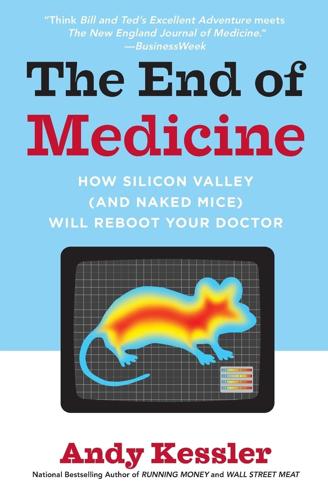
The End of Medicine: How Silicon Valley (And Naked Mice) Will Reboot Your Doctor
by
Andy Kessler
Published 12 Oct 2009
It’s the assumption that things will continue to get better as they get smaller on into the next century and that this continued descent into the pits of the quantum will yield ever more exciting and valuable technologies.” “I think it probably will, for 20, 30 years, anyway,” I said. “Sure. That’s what Ray Kurzweil is saying, about a singularity coming. He’s got a terrific presentation of this argument and it’s got lots of insights about the whole range of technology. But it is fundamentally based, I believe, on Richard Feynman’s mistake way back in 1957 or so when he gave his famous speech ‘There’s a lot of room at the bottom.’”

Stealing Fire: How Silicon Valley, the Navy SEALs, and Maverick Scientists Are Revolutionizing the Way We Live and Work
by
Steven Kotler
and
Jamie Wheal
Published 21 Feb 2017
With the data these devices are providing, we can shortcut our way not only to better health, but to deeper self-awareness, taking weeks and months to train what used to take yogis and monks decades to master. While these are all examples of the four forces reaching deeper into the mainstream majority, they may already seem unremarkable. There’s a reason for this. Ray Kurzweil, the director of engineering at Google, once pointed out that it’s hard for nonscientists to track progress in artificial intelligence because, when it shows up in the real world, “it looks like nothing fancier than a talking ATM.” It’s true for ecstasis as well. Soccer moms with Kundalini yoga practices; business men microdosing psychedelics; tech nerds tracking biometrics, The Simpsons going to Burning Man—these developments might seem pedestrian.

A More Beautiful Question: The Power of Inquiry to Spark Breakthrough Ideas
by
Warren Berger
Published 4 Mar 2014
From my interview with Zhong, November 2012; from more on his research, see Chen-Bo Zhong, “The Role of Unconscious Thought in the Creative Process,” Rotman magazine, Winter 2010. 46 What if dots and dashes could sort the world? . . . Margalit Fox, “N. Joseph Woodland, Inventor of the Bar Code, Dies at 91,” New York Times, December 12, 2012. 47 Google’s scientist-in-residence Ray Kurzweil . . . Kurzweil told this to Thea Singer, “6 Beautiful Minds,” O, the Oprah Magazine, June 2007, http://www.oprah.com/omagazine/Modern-Day-Geniuses-The-Worlds-Brightest-Minds. 48 Sam McNerney pulled together a number . . . Sam McNerney, “Unconscious Creativity: Step Back to Step Forward,” Big Think blog, May 24, 2012; also, Sam McNerney, “Relaxation & Creativity—the Science of ‘Sleeping on It,’” Big Think blog, May 8, 2012; and Annie Murphy Paul, “Why Daydreaming Isn’t a Waste of Time,” Mind/Shift blog, from KQED Public Media for Northern California, June 1, 2012. 49 “Museums are the custodians of epiphanies” . . .
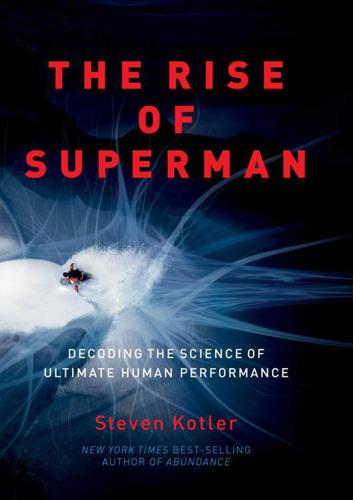
The Rise of Superman: Decoding the Science of Ultimate Human Performance
by
Steven Kotler
Published 4 Mar 2014
Jeff Hawkins and Sandra Blakeslee in On Intelligence: Jeff Hawkins and Sandra Blakeslee, On Intelligence (Times Books, 2004), p. 89. 64 the brain’s pattern-recognition system: A lot of neuroscientists are starting to believe that the basic function of the brain is pattern recognition. For a great book on the subject, see: Ray Kurzweil, How to Create a Mind: The Secret of Human Thought Revealed (Viking, 2012). the feel-good neurochemical dopamine: Lots to choose from here. See: C. R. Clarke Clarke, G. M. Geffen, and L. B. Geffen, “Catecholamines and Attention I: Animal and Clinical Studies,” Neuroscience and Biobehavioral Reviews 11(4), 341–52 (1987).
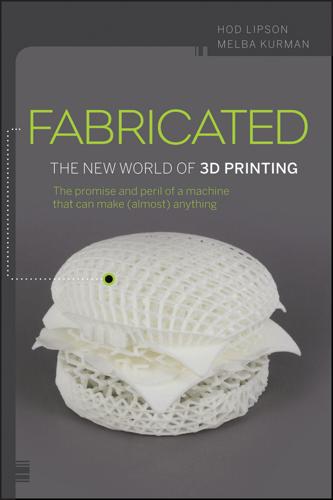
Fabricated: The New World of 3D Printing
by
Hod Lipson
and
Melba Kurman
Published 20 Nov 2012
Image courtesy of Robert MacCurdy The day when products will be made entirely of digital voxels may be far off, but meanwhile I expect that some combination of analog and digital materials will emerge. Hybrid 3D printing will combine continuous analog printing for some passive materials, and digital voxel printing for other materials that are more difficult to fabricate using continuous processes. Machines making machines Technological singularity, a concept popularized by writer Ray Kurzweil, is a hypothetical future in which machines possess capabilities that enable them to accelerate their own development exponentially. One of the more widely recognized aspects of the idea of singularity is an “intelligence explosion” where intelligent machines design successive generations of increasingly powerful, even more intelligent machines.
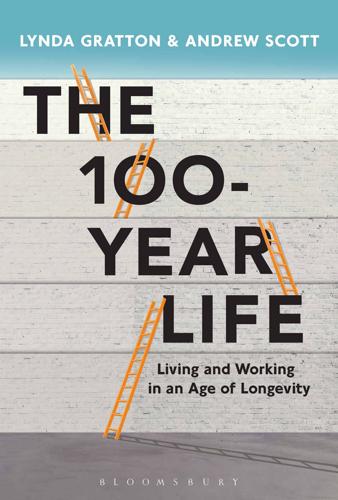
The 100-Year Life: Living and Working in an Age of Longevity
by
Lynda Gratton
and
Andrew Scott
Published 1 Jun 2016
Why wouldn’t they continue to do so going forward? Indeed within this group of optimists are those who take an almost fantastical view, arguing there is no natural limit to human life, and scientific progress and technology will create life expectancies that approach many hundreds of years. That is the view of Ray Kurzweil, who became director of engineering at Google, where he leads a team on Artificial Intelligence. In his book,4 co-authored with his physician Terry Grossman, he describes three crucial bridges to a multi-century lifespan. The first bridge is to follow best practice medical advice so as to extend life sufficiently to benefit from the second bridge, which is created by the coming medical revolution in biotechechology, and then onwards to the third bridge, which enables one to benefit from nanotechnology innovations where Artificial Intelligence and robots rebuild ageing bodies at a molecular level.

Our Posthuman Future: Consequences of the Biotechnology Revolution
by
Francis Fukuyama
Published 1 Jan 2002
Searle, The Mystery of Consciousness (New York: New York Review Books, 1997). 38 Daniel C. Dennett, Consciousness Explained (Boston: Little, Brown, 1991), p. 210. 39 John R. Searle, The Rediscovery of the Mind (Cambridge, Mass.: MIT Press, 1992), p. 3. 40 Hans P. Moravec, Robot: Mere Machine to Transcendent Mind (New York: Oxford University Press, 1999). 41 Ray Kurzweil, The Age of Spiritual Machines: When Computers Exceed Human Intelligence (London: Penguin Books, 2000). 42 For a critique, see Colin McGinn, “Hello HAL,” The New York Times Book Review, January 3, 1999. 43 On this point, see Wright (2000), pp. 306–308. 44 Ibid., pp. 321–322. 45 Robert J.
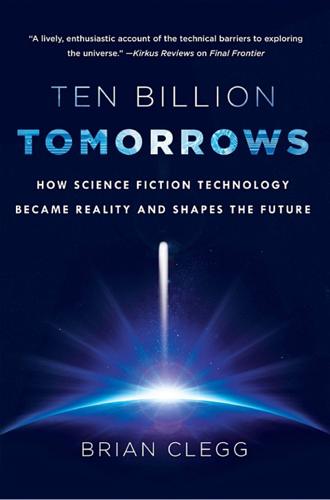
Ten Billion Tomorrows: How Science Fiction Technology Became Reality and Shapes the Future
by
Brian Clegg
Published 8 Dec 2015
Neatly, considering Bell’s enthusiasm, it was at Bell Labs in 1952 that a group made the first workable speech recognizer. The good news was that with training, this device managed 97 percent accuracy. The bad news is that it could only handle digits—well behind the kind of speech recognition program we tend to curse in modern automated telephone systems. It is interesting that when speech-recognition pioneer Ray Kurzweil was writing about Hal’s capabilities back in the late 1990s, he expected that we would be using speech to dictate to personal computer applications as the norm before 2001. In reality, such systems are still not used on most computers today. The shift Kurzweil expected has been much slower than he anticipated and may never come.
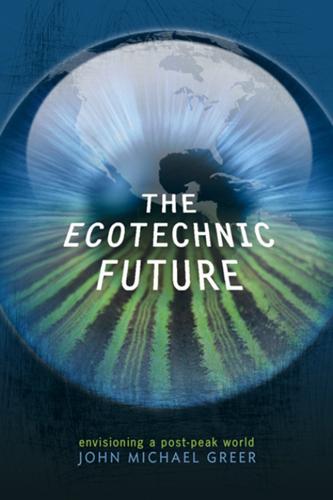
The Ecotechnic Future: Envisioning a Post-Peak World
by
John Michael Greer
Published 30 Sep 2009
Hirsch, Roger Bezdek and Robert Wendling, Peaking of World Oil Production: Impacts, Mitigation, and Risk Management, US Department of Energy, 2005. 8. R. Costanza et al., “The value of the world’s ecosystem services and natural capital,” Nature 387 (1997), pp. 253–260. 9. C. Wright Mills, The Causes of World War Three, Simon and Schuster, 1958. 10. See Ray Kurzweil, The Singularity is Near, Viking, 2005, for an egregious example. 11. See “How civilizations fall: A theory of catabolic collapse,” in John Michael Greer, The Long Descent: A User’s Guide to the End of the Industrial Age, New Society Publishers, 2008, pp. 225–240. Chapter Two: The Way of Succession 1.

What Algorithms Want: Imagination in the Age of Computing
by
Ed Finn
Published 10 Mar 2017
Lem seems to hint that the ultimate drive of instrumental reason, of continually interrogating our world in the quest for answers, may only be madness: fantasies that we project onto the world in order to construct a story about truth, just as the characters in the novel must grapple with figures projected from their pasts. The endless symbolic churning of the oceans on Solaris offers a provocative metaphor for the notion of algorithmic imagination today, particularly as it’s framed by computationalists. Ray Kurzweil, leader of Google’s machine learning group and a key figure in the singularity debates, echoes this point in his documentary Transcendent Man: Well I was thinking about how much computation is represented by the ocean. I mean it’s all these water molecules interacting with each other. That’s computation.

AI Superpowers: China, Silicon Valley, and the New World Order
by
Kai-Fu Lee
Published 14 Sep 2018
Often called “the singularity,” or artificial superintelligence, this future involves computers whose ability to understand and manipulate the world dwarfs our own, comparable to the intelligence gap between human beings and, say, insects. Such dizzying predictions have divided much of the intellectual community into two camps: utopians and dystopians. The utopians see the dawn of AGI and subsequent singularity as the final frontier in human flourishing, an opportunity to expand our own consciousness and conquer mortality. Ray Kurzweil—the eccentric inventor, futurist, and guru-in-residence at Google—envisions a radical future in which humans and machines have fully merged. We will upload our minds to the cloud, he predicts, and constantly renew our bodies through intelligent nanobots released into our bloodstream. Kurzweil predicts that by 2029 we will have computers with intelligence comparable to that of humans (i.e., AGI), and that we will reach the singularity by 2045.
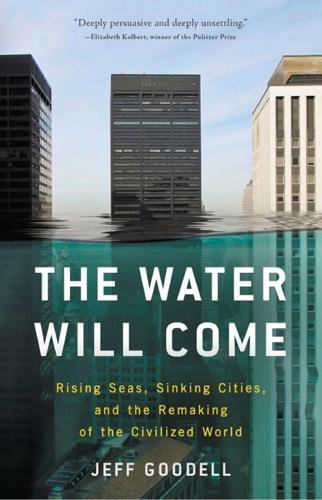
The Water Will Come: Rising Seas, Sinking Cities, and the Remaking of the Civilized World
by
Jeff Goodell
Published 23 Oct 2017
We live in a rapidly accelerating technological age, with new iPhones every year that make the old ones seem as primitive as a brick, where robots perform surgery and computers fly 757s. Scientists are unraveling the mysteries of DNA and plotting the circuitry of the human brain. Techno-optimists like Ray Kurzweil talk openly about immortality. Elon Musk aspires to create a “multiplanet civilization” in the very near future. It seems only natural that a slow-moving force like sea-level rise would have a technological solution too. Why not build a thermostat for the planet? We are already engineering the Earth’s operating system by dumping billions of tons of greenhouse gases into it every year.

Possible Minds: Twenty-Five Ways of Looking at AI
by
John Brockman
Published 19 Feb 2019
Indeed, if one extrapolates the growth of raw computing power—expressed in terms of bits and bit flips—into the future at its current rate, computers should match human brains sometime in the next two to four decades (depending on how one estimates the information-processing power of human brains). The failure of the initial overly optimistic predictions of AI dampened talk about the technological singularity for a few decades, but since the 2005 publication of Ray Kurzweil’s The Singularity IS Near, the idea of technological advance leading to superintelligence is back in force. Some believers, Kurzweil included, regard this singularity as an opportunity: Humans can merge their brains with the superintelligence and thereby live forever. Others, such as Stephen Hawking and Elon Musk, worried that this superintelligence would prove to be malign and regarded it as the greatest existing threat to human civilization.
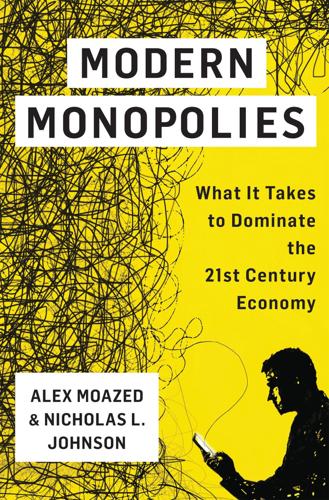
Modern Monopolies: What It Takes to Dominate the 21st Century Economy
by
Alex Moazed
and
Nicholas L. Johnson
Published 30 May 2016
While many of Applico’s competitors were acquired or went out of business, our company thrived by becoming the world’s first Platform Innovation company. Each day, we work with some of the world’s leading businesses and hottest startups to build and grow innovative platforms. Our clients include Fortune 100 companies like Google, HP, Intel, Disney, DirecTV, Philips, and Lockheed Martin, as well as startups backed by Google Ventures, Ray Kurzweil, and top venture capital firms. While we can’t list some of our startup clients due to confidentiality, startups whose platforms we’ve helped create, including Glamsquad and Auctionata, have raised hundreds of millions of dollars and achieved nine-figure exits. And since our entire business is focused around platform business models, we’ve studied them in greater depth than anyone else has.

How to Spend a Trillion Dollars
by
Rowan Hooper
Published 15 Jan 2020
Journal of Consciousness Studies 2(3), 200–219. 11 Jonathan Stokes et al. (2020) ‘A deep learning approach to antibiotic discovery’. Cell 180(4), 688–702. DOI: 10.1016/j.cell.2020.01.021 12 Alex Graves et al. (2016) ‘Hybrid computing using a neural network with dynamic external memory’. Nature 538, 471–476. DOI: 10.1038/s41562-016-0032 13 Quoted in ‘Creating human-level AI: how and when?’ Video lecture by Ray Kurzweil, Future of Life Institute. 9 February 2017. www.youtube.com/watch?v=oPyCHwPS04E 14 Daniel G. Gibson et al. (2010) ‘Creation of a bacterial cell controlled by a chemically synthesized genome’. Science 329(5987), 52–56. DOI: 10.1126/science.1190719 15 Charles M. Denby et al. (2018) ‘Industrial brewing yeast engineered for the production of primary flavor determinants in hopped beer’.
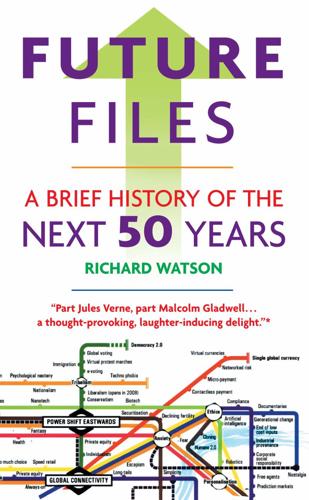
Future Files: A Brief History of the Next 50 Years
by
Richard Watson
Published 1 Jan 2008
For instance, a company in Austin, Texas has developed a product called Cyc. It is much like a “chatbot” except that, if it answers Science and Technology 45 a question incorrectly, you can correct it and Cyc will learn from its mistakes. But Cyc still isn’t very intelligent, which is possibly why author, scientist and futurist Ray Kurzweil made a public bet with Mitchell Kapor, the founder of Lotus, that a computer would pass the Turing test by 2029. He based this prediction on ideas expressed in his book The Singularity Is Near: in essence, arguing that intelligence will expand in a limitless, exponential manner once we achieve a certain level of advancement in genetics, nanotechnology and robotics and the integration of that technology with human biology.
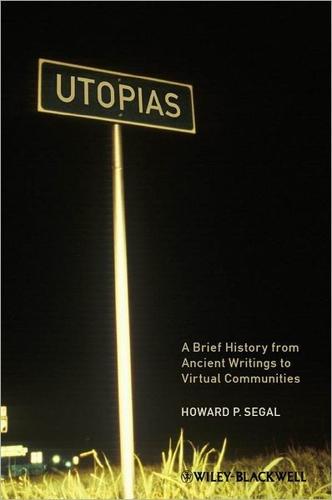
Utopias: A Brief History From Ancient Writings to Virtual Communities
by
Howard P. Segal
Published 20 May 2012
Similarly, Time’s cover story for 175 (April 12, 2010), 6, 36–43, was “Inside Steve’s Pad.” On new visions of artificial intelligence, see John Markoff, “The Coming Superbrain: Computers Keep Getting Smarter, While We Just Stay the Same,” Sunday New York Times, Week in Review, May 24, 2009, 1, 4; and Alex Beam, “Apocalypse Later: Ray Kurzweil Predicts the Not-So-Near Future in ‘Post-Biological’ Visions of Humanity,” Boston Globe, June 29, 2010, G23. On nuclear power, see the references in Chapter 6, notes 31–34 and 37–52. See James Fleming, Fixing the Sky: The Checkered History of Weather and Climate Control (New York: Columbia University Press, 2010).
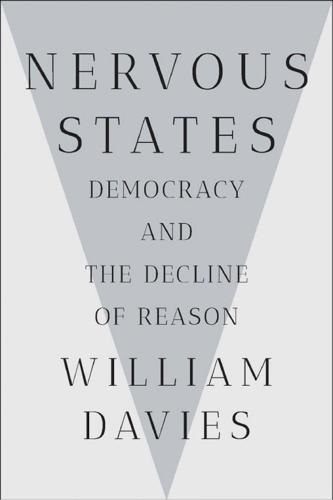
Nervous States: Democracy and the Decline of Reason
by
William Davies
Published 26 Feb 2019
As computers have come to “learn” a wider variety of human languages, thanks especially to designing computers around the same format as the human brain, more and more cultural forms of communication can be digitized. At a certain point in this development, a human’s sole function is to have feelings, intentions and desires, and technology will do the rest. One of the most alluring qualities of computers, from the perspective of various Silicon Valley entrepreneurs and ideologues such as Ray Kurzweil, is that they don’t necessarily die in the way that human bodies do. This suggests that with sufficient augmentation, a human could live for far longer, or even forever. If thoughts can be shared directly with other brains, thanks to technology, then at some point an entire human mind could perhaps be uploaded to a computer where it could potentially live forever.
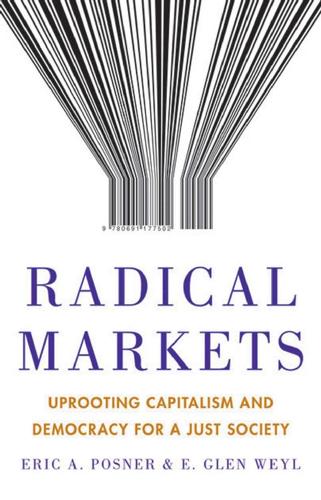
Radical Markets: Uprooting Capitalism and Democracy for a Just Society
by
Eric Posner
and
E. Weyl
Published 14 May 2018
The most prominent recent exponents of the techno-optimist within economics have been Erik Brynjolfsson and Andrew McAfee in their 2014 book, The Second Machine Age: Work, Progress and Prosperity in a Time of Brilliant Technologies (W. W. Norton & Company). More broadly, the most prominent techno-optimist is Ray Kurzweil, in a series of books. 2. The most prominent techno-pessimistic perspective is offered by Robert J. Gordon in his 2016 book, The Rise and Fall of American Growth: The U.S. Standard of Living since the Civil War (Princeton University Press). 3. This view is increasingly prevalent among economists.
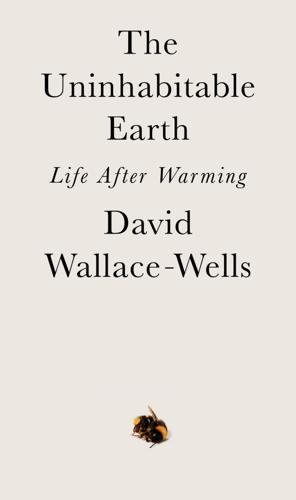
The Uninhabitable Earth: Life After Warming
by
David Wallace-Wells
Published 19 Feb 2019
close to universal: In “Survival of the Richest” (Medium, July 5, 2018), the futurist Douglas Rushkoff described his experience as a keynote speaker at a private conference attended by the superrich—these patrons not themselves technologists but hedge-funders he came to feel were taking all of their cues from them. Quickly, he writes, the conversation attained a clear focus: Which region will be less impacted by the coming climate crisis: New Zealand or Alaska? Is Google really building Ray Kurzweil a home for his brain, and will his consciousness live through the transition, or will it die and be reborn as a whole new one? Finally, the CEO of a brokerage house explained that he had nearly completed building his own underground bunker system and asked, “How do I maintain authority over my security force after the event?”

The Creativity Code: How AI Is Learning to Write, Paint and Think
by
Marcus Du Sautoy
Published 7 Mar 2019
Whenever I’ve attempted to write poetry with a rhyming pattern, I’ve found it useful to tap into a database of words that rhyme. Weaving a line through the constraints of rhyme and rhythm is something a computer can do in spades. That is the principle behind the code underpinning the Cybernetic Poet, a more recent creation of the futurist Ray Kurzweil, who writes frequently on the impending fusion between man and machine. Rather than relying on words randomly picked out of a dictionary, Kurzweil trained his Cybernetic Poet on the work of accomplished poets like Shelley and T. S. Eliot. Here is one of the Cybernetic Poet’s haikus, informed by a reading of Keats: You broke my soul The juice of eternity, The spirit of my lips.

The Cultural Logic of Computation
by
David Golumbia
Published 31 Mar 2009
While it is no doubt inevitable that forms of long-distance communication would develop in any plausible human history, I am not persuaded that the exact forms of the telephone, telegraph, etc., are metaphysically necessary. Computation hovers provocatively between invention and discovery. Perhaps some of the most extreme computer scientists (Ray Kurzweil, Stephen Wolfram, Claude Shannon, Konrad Zuse) believe that digital computation in particular is a fundamental part of the physical universe; certainly there is at least some interesting evidence to support this view. At the same time, it seems equally if not more plausible that a wide range of calculating, quasilogical, and simulative mechanisms exist in the physical world, and that digital computation is simply one means of replicating some of these phenomena, perhaps the means that is most available to us for cultural reasons—in other words, we found digital computation because our society is already so oriented toward binarisms, hierarchy, and instrumental rationality.
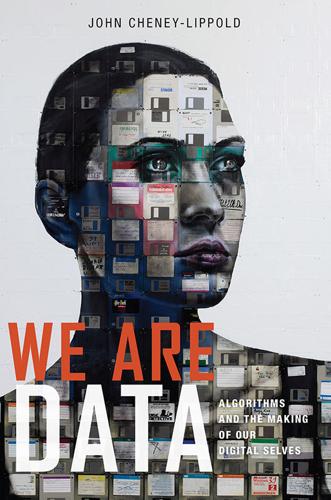
We Are Data: Algorithms and the Making of Our Digital Selves
by
John Cheney-Lippold
Published 1 May 2017
,” September 2014, news.xbox.com. 20. Herman Gray and Macarena Gómez-Barris, Toward a Sociology of the Trace (Minneapolis: University of Minnesota Press, 2010). 21. Minerva Initiative, “Program History & Overview,” U.S. Department of Defense, 2015, http://minerva.dtic.mil. 22. Ibid. (emphasis added). 23. Ibid. 24. Ray Kurzweil, The Singularity Is Near: When Humans Transcend Biology (New York: Penguin, 2006); Amnon Eden, James H. Moor, Johnny H. Søraker, and Eric Steinhart, eds., Singularity Hypotheses: A Scientific and Philosophical Assessment (Berlin: Springer-Verlag, 2012). 25. N. Katherine Hayles, How We Became Posthuman: Virtual Bodies in Cybernetics, Literature, and Informatics (Chicago: University of Chicago Press, 1999); Hans Moravec, Mind Children: The Future of Robot and Human Intelligence (Cambridge, MA: Harvard University Press, 1990). 26.
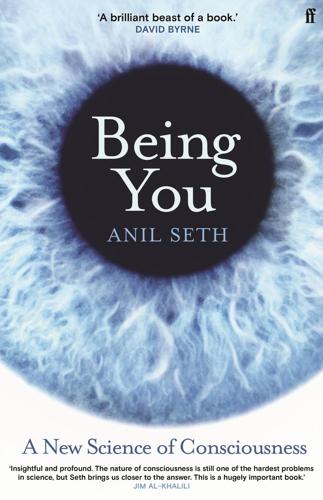
Being You: A New Science of Consciousness
by
Anil Seth
Published 29 Aug 2021
Over the last few years, these assumptions about necessity and sufficiency have been dressed up and pushed out of the door by a host of other concerns and misapprehensions, giving the prospect of artificial consciousness an urgency and an apocalyptic gloss that it doesn’t really deserve. Here are some of them. There is the worry that AI – whether conscious or not – is on a runaway path to overtake human intelligence, bootstrapping itself beyond our comprehension and our control. This is the so-called ‘Singularity’ hypothesis, popularised by the futurist Ray Kurzweil and motivated by the extraordinary growth in raw computational resources over the last few decades. Where are we on this exponential curve? The problem with exponential curves – as many of us learned during the recent coronavirus pandemic – is that wherever you stand on them, what’s ahead looks impossibly steep and what’s behind looks irrelevantly flat.

Ghost Road: Beyond the Driverless Car
by
Anthony M. Townsend
Published 15 Jun 2020
It’s behaving quite unlike its cosmological namesake—the point deep inside a black hole where the strength of its gravitational field soars toward infinity. Instead, the Singularity seems to recede more the nearer we draw. Vinge’s estimate placed the event sometime between 2005 and 2030. But as he confessed at the time, “AI enthusiasts have been making claims like this for the last thirty years.” A recent recalibration by AI pioneer Ray Kurzweil, the technorati’s favorite Singularity propagandist, reset the deadline for the digital rapture. “I have set the date 2045 for the ‘Singularity’ which is when we will multiply our effective intelligence a billion fold by merging with the intelligence we have created.” More revisions to the timetable may be in store.
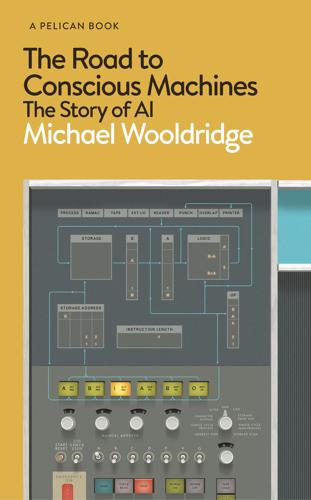
The Road to Conscious Machines
by
Michael Wooldridge
Published 2 Nov 2018
But this turns out to be hard to do, and if we don’t take care when communicating our desires, then we may get what we asked for, but not what we actually wanted. The Singularity Is Bullshit In contemporary AI, the Terminator narrative is most commonly associated with an idea called the Singularity, which was introduced by the American futurologist Ray Kurzweil in his 2005 book The Singularity is Near:2 The key idea underlying the impending Singularity is that the pace of change of our human-created technology is accelerating and its powers are expanding at an exponential pace. […] within several decades information-based technologies will encompass all human knowledge and proficiency, ultimately including the pattern-recognition powers, problem-solving skills, and emotional and moral intelligence of the human brain itself.

MegaThreats: Ten Dangerous Trends That Imperil Our Future, and How to Survive Them
by
Nouriel Roubini
Published 17 Oct 2022
Then it started to replace cognitive jobs that repeat sequences of steps that a machine can master. Now AI is gradually able to perform even creative jobs. So for workers, including those in the creative industries, there is nowhere to hide. All this is vaulting us even closer to artificial general intelligence, or AGI, where super intelligent machines leave humans in the dust. Author Ray Kurzweil and other visionaries predict a pivotal moment that will disrupt everything we know. An intelligence explosion will occur when computers develop motivation to learn on their own at warp speed without human direction. There are no limits to how fast or how much they can learn and what new connections they will find.

Supremacy: AI, ChatGPT, and the Race That Will Change the World
by
Parmy Olson
Once he learned to use a keyboard, Legg zoomed up the school rankings to become one of its highest achievers in math and computer programming. Tall, slightly stooped, and with closely cropped hair, Legg was twenty-seven when he walked into a bookshop and spotted The Age of Spiritual Machines by Ray Kurzweil, which predicted that computers would one day develop free will and have emotional and spiritual experiences. He read it cover to cover and couldn’t stop thinking about Kurzweil’s reasoning or his forecast for powerful AI to come about in the late 2020s. Computing power and data were growing exponentially.

This Is for Everyone: The Captivating Memoir From the Inventor of the World Wide Web
by
Tim Berners-Lee
Published 8 Sep 2025
From the Ferranti punch tape strewn around my parents’ house when I was a child, we have arrived at today’s evolving, intelligent machines. • At Ditchley, the discussion centred on the implications of this unprecedented breakthrough. For years, technologists had discussed the implications of what might happen if humans invented a system that was smarter than ourselves. The futurist Ray Kurzweil, who, like Isaac Asimov, has been thinking about this for a long time, popularized the notion of the ‘singularity’, which occurs when AI can build its own AI, triggering an uncontrollable explosion in intelligence with unforeseeable consequences. Ray thought that the advent of superhuman intelligence would be something we had to be very careful about, and many researchers agreed.
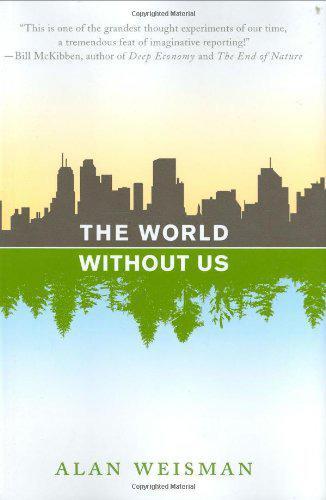
The World Without Us
by
Alan Weisman
Published 5 Aug 2008
Via the self-accruing wizardry of computers, an abundance of silicon, and vast opportunities afforded by modular memory and mechanical appendages, human extinction would become merely a jettisoning of the limited and not very durable vessels that our technological minds have finally outgrown. Prominent in the transhumanist (sometimes called posthuman) movement are Oxford philosopher Nick Bostrom; heralded inventor Ray Kurzweil, originator of optical character recognition, flat-bed scanners, and print-to-speech reading machines for the blind; and Trinity College bioethicist James Hughes, author of Citizen Cyborg: Why Democratic Societies Must Respond to the Redesigned Human of the Future. However Faustian, their discussion is compelling in its lure of immortality and preternatural power—and almost touching in its Utopian faith that a machine could be made so perfect that it would transcend entropy.

Predictive Analytics: The Power to Predict Who Will Click, Buy, Lie, or Die
by
Eric Siegel
Published 19 Feb 2013
Astronomers are building a new array of radio telescopes that will generate an exabyte of data per day (an exabyte is a quintillion bytes; a byte is a single value, an integer between 0 and 255, often representing a single letter, digit, or punctuation mark). Using satellites, wildlife conservationists track manta rays, considered vulnerable to extinction, as the creatures travel as far as 680 miles in search of food. In biology, as famed futurist Ray Kurzweil portends, given that the price to map a human genome has dropped from $1 billion to a few thousand dollars, information technology will prove to be the domain from which this field’s greatest advances emerge. Overall, data is growing at an incomprehensible speed, an estimated 2.5 quintillion bytes (exabytes) of data per day.
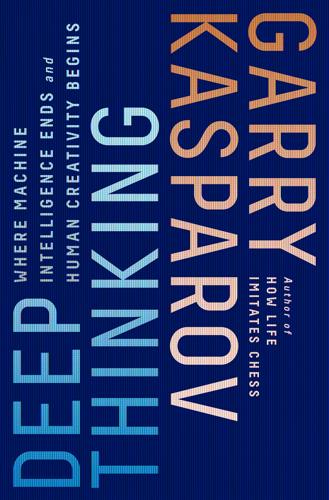
Deep Thinking: Where Machine Intelligence Ends and Human Creativity Begins
by
Garry Kasparov
Published 1 May 2017
His book Superintelligence goes beyond the usual fearmongering and explains in (still occasionally terrifying) detail the how and why we might create machines that are far more intelligent than we are, and why they might not care to keep humans around anymore. The prolific inventor and futurist Ray Kurzweil ran in the opposite direction with the concept of super-intelligent machines. His 2005 book, The Singularity Is Near, became a bestseller, although, as with so many predictions, “near” is always just close enough to be ominous but never close enough to be in focus. Kurzweil describes a nearly utopian future in which the technological singularity combines genetics and nanotechnology to augment minds and bodies as humans approach an extremely advanced level of cognition and lifespan.
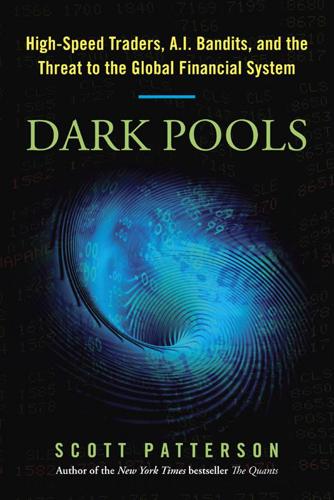
Dark Pools: The Rise of the Machine Traders and the Rigging of the U.S. Stock Market
by
Scott Patterson
Published 11 Jun 2012
So the Kinetic team, led by the onetime Acid Phreak, kept pushing the system, feeding it more and more data. Unfortunately, the team’s faith in the machine was misplaced. In August 2011, Ladopoulos and his research associates were fired by Kinetic’s board of directors. WHILE Kinetic had failed, the dream of creating a thinking trading machine lived on. And why not? Futurist Ray Kurzweil has predicted that as computer power and artificial intelligence expands to the point that it has the capacity to improve itself—computers effectively designing and creating more computers—the nature of humanity will become irrevocably altered, a fearsome event he calls the Singularity. Ultimately, Kurzweil says, we humans will bend the robots to our will, allowing us to transcend our biological limitations.

The Industries of the Future
by
Alec Ross
Published 2 Feb 2016
Moore’s law applies to the transistors and technology that control robots as well as those in computers. Add rapid advances in machine learning, data analytics, and cloud robotics, and it’s clear that computing is going to keep rapidly improving. Those who argue for the singularity differ on when it will occur. Mathematician Vernor Vinge predicts that it will occur by 2023; futurist Ray Kurzweil says 2045. But the question looming over singularity is whether there’s a limit on how far our technology can ultimately go. Those who argue against the possibility of singularity point to several factors. The software advances necessary to reach singularity demand a detailed scientific understanding of the human brain, but our lack of understanding about the basic neural structure of the brain impedes software development.
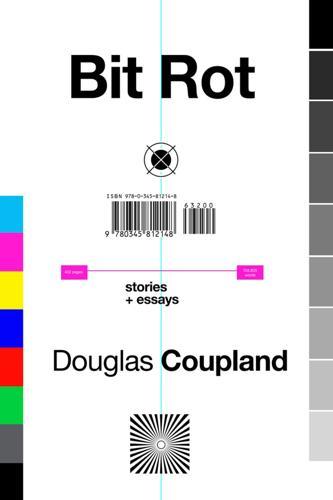
Bit Rot
by
Douglas Coupland
Published 4 Oct 2016
It’s cynical, but at the same time it’s a real thing, all those girls from Brown and Sarah Lawrence, in lambswool sweaters, bored witless, sitting at the kitchen counter, asking earnest questions about motherboards and retail data encryption as they wait for their ten-year stints to come to an end. Last summer I enjoyed participating in a seminar at Singularity University, an unaccredited school founded in 2008 by Ray Kurzweil and Peter Diamandis. Singularity U’s goal is to get the correct people fully informed about the transformative capacity of logarithmic technologies. It rests in an office building in NASA’s Ames Research Center, a building seemingly untouched since one foggy 1944 afternoon when The Andrews Sisters came in and sang for the boys.

Superminds: The Surprising Power of People and Computers Thinking Together
by
Thomas W. Malone
Published 14 May 2018
Ira Flatow and Howard Market, “Science Diction: The Origin of the Word ‘Robot,’” April 22, 2011, National Public Radio, http://www.npr.org/2011/04/22/135634400/science-diction-the-origin-of-the-word-robot. 18. Future of Life Institute, http://futureoflife.org. 19. Nick Bostrom, Superintelligence: Paths, Dangers, Strategies (Oxford, UK: Oxford University Press, 2014); Ray Kurzweil, The Age of Spiritual Machines: When Computers Exceed Human Intelligence (New York: Viking, 1999). 20. Peter M. Asaro, “The Liability Problem for Autonomous Artificial Agents,” in Ethical and Moral Considerations in Non-Human Agents: Papers from the 2016 AAAI Spring Symposium (Palo Alto, CA: AAAI Press, 2016), https://www.aaai.org/ocs/index.php/SSS/SSS16/paper/download/12699/11949. 21.

A World Without Work: Technology, Automation, and How We Should Respond
by
Daniel Susskind
Published 14 Jan 2020
For many AI researchers, the intellectual holy grail is to build machines that are foxes rather than hedgehogs. In their terminology, they want to build an “artificial general intelligence” (AGI), with wide-ranging capabilities, rather than an “artificial narrow intelligence” (ANI), which can only handle very particular assignments.21 That is what interests futurists like Ray Kurzweil and Nick Bostrom. But there has been little success in that effort, and critics often put forward the elusiveness of AGI as a further reason for being skeptical about the capabilities of machines. There is a sense among purists that only AGI is “real” AI, and that without this generality of capability these machines will never be “true rivals” to human beings in the work that they do.22 AGI, it is said, will represent a turning point in human history—perhaps the turning point.
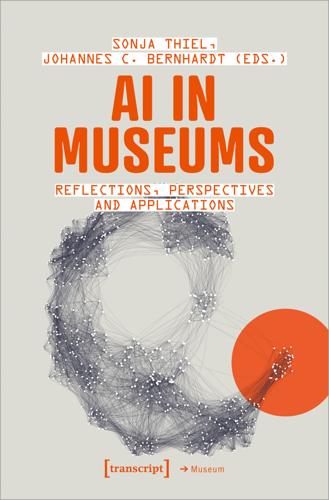
AI in Museums: Reflections, Perspectives and Applications
by
Sonja Thiel
and
Johannes C. Bernhardt
Published 31 Dec 2023
What culture can do here is reflect on the underlying images of humanity and make visible the basic assumption that is widespread in literature and public perception: reflecting on AI as an independent and powerful agent and showing how these ideas are already anchored communicatively in various cultural or even religious practices. Not to be distracted by the constant need to generate anthropomorphizing images of AI or the still unrealized idea of an artificial general intelligence (AGI) or singularity speculations, which are being widely discussed in academia (e.g. Chalmers 2010) and development (e.g. Ray Kurzweil), the focus on human agency and the expansion of interaction possibilities seems to be a central category, as well as the question of the extent to which AI systems expand or restrict the scope of action and freedom. Another widely shared and important underlying guideline could thus be that the delegation of action to machines should serve the expansion of human agency and authorship or the ‘enhancement of human agency’ (Floridi et al. 2018). 87 88 Part 1: Reflections Normative Requests—Desirable Functions of AI Systems UNESCO’s recommendations state that in connection with the cultural domain, AI systems are recommended to ‘preserve, enrich, understand, promote, manage and make accessible the tangible, documentary and intangible cultural heritage, including endangered languages and Indigenous languages and knowledge, for example by introducing or updating educational programs related to the use of AI systems in these areas, ensuring, where appropriate, a participatory and inclusive approach targeting institutions and the public’ (UNESCO 2021, 32).

Why the West Rules--For Now: The Patterns of History, and What They Reveal About the Future
by
Ian Morris
Published 11 Oct 2010
The first was that biology, sociology, and geography jointly explain the history of social development, with biology driving development up, sociology shaping how development rises (or doesn’t), and geography deciding where development rises (or falls) fastest; and the second was that while geography determines where social development rises or falls, social development also determines what geography means. I now want to extend these arguments. In the twenty-first century social development promises—or threatens—to rise so high that it will change what biology and sociology mean too. We are approaching the greatest discontinuity in history. The inventor and futurist Ray Kurzweil calls this the Singularity—“a future period during which the pace of technological change will be so rapid, its impact so deep … that technology appears to be expanding at infinite speed.” One of the foundations of his argument is Moore’s Law, the famous observation made by the engineer (and future chairman of Intel) Gordon Moore in 1965 that with every passing year the miniaturization of computer chips roughly doubled their speed and halved their cost.
…
Renfrew, Colin, and Iain Morley, eds. Becoming Human: Innovation in Prehistoric Material and Spiritual Culture. Cambridge, UK: Cambridge University Press, 2009. Reynolds, David. One World Divisible: A Global History Since 1945. New York: Norton, 2000. Richards, Jay, et al. Are We Spiritual Machines? Ray Kurzweil vs. the Critics of Strong A.I. Seattle: Discovery Institute, 2002. Richards, John. Unending Frontier: An Environmental History of the Early Modern World. Berkeley: University of California Press, 2003. Richardson, Lewis Fry. Statistics of Deadly Quarrels. Pacific Grove, CA: Boxwood Press, 1960.
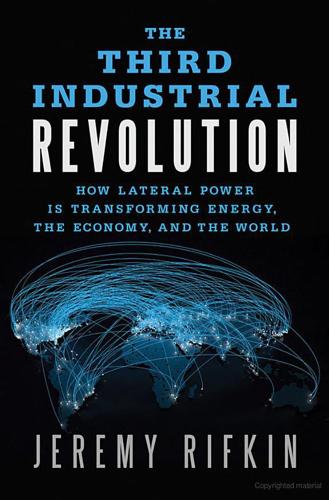
The Third Industrial Revolution: How Lateral Power Is Transforming Energy, the Economy, and the World
by
Jeremy Rifkin
Published 27 Sep 2011
In other words, if smart tech replaces more and more workers, leaving people without income, who is going to buy all of the products being produced and services being offered? Intelligent technology is only just beginning to impact the world economy. In the next several decades, tens of millions of workers across every industry and sector are likely going to be displaced by machine intelligence. Ray Kurzweil at MIT observes that “the pace of change of our human-created technology is accelerating and its powers are expanding at an exponential pace.”9 Kurzweil calculates that at the current rate of technological change, by the end of the twenty-first century “we will witness on the order of twenty thousand years of progress (again measured by today’s rate of progress), or about one thousand times greater than what we achieved in the twentieth century.”

Radicals Chasing Utopia: Inside the Rogue Movements Trying to Change the World
by
Jamie Bartlett
Published 12 Jun 2017
Life extension is now seriously studied in leading universities, while robotics and artificial intelligence receive millions of dollars of investment. There are now tens of thousands of self-declared transhumanists based all over the world, including influential people at the heart of the world’s tech scene. Ray Kurzweil, a firm believer in the ‘singularity moment’ (the point at which artificial intelligence becomes so advanced that it begins to produce new and ever more advanced versions of itself), is a senior engineer at Google. Billionaire Peter Thiel—co-founder of PayPal, influential Silicon Valley investor and a member of President Donald Trump’s transition team—is also a self-declared transhumanist and has invested millions of dollars into life extension and artificial-intelligence projects.
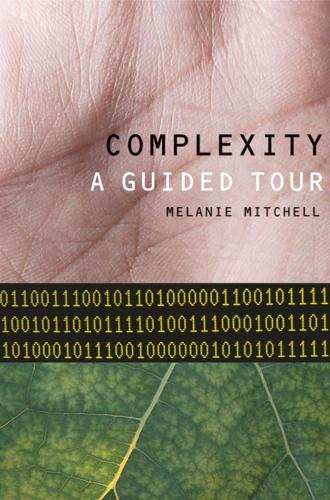
Complexity: A Guided Tour
by
Melanie Mitchell
Published 31 Mar 2009
He worried about public perception of the possibilities of self-reproducing machines, and said that he did not want any mention of the “reproductive potentialities of the machines of the future” made to the mass media. It took a while, but the mass media eventually caught up. In 1999, computer scientists Ray Kurzweil and Hans Moravec celebrated the possibility of super-intelligent self-reproducing robots, which they believe will be built in the near future, in their respective nonfiction (but rather far-fetched) books The Age of Spiritual Machines and Robot. In 2000 some of the possible perils of self-reproducing nano-machines were decried by Bill Joy, one of the founders of Sun Microsystems, in a now famous article in Wired magazine called “Why the Future Doesn’t Need Us.”
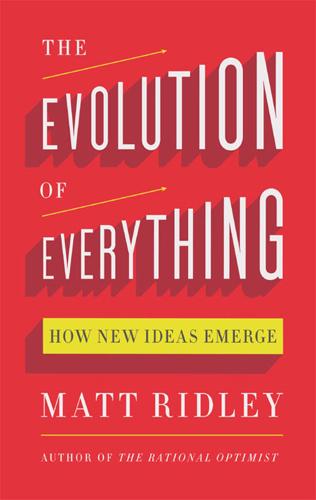
The Evolution of Everything: How New Ideas Emerge
by
Matt Ridley
After the second abortive attempt Smith predicted, using Moore’s Law, that it would be five years before computer-animated movies would prove viable, because Moore’s Law can be restated as ‘Computers improve by an order of magnitude every five years.’ So when Disney approached Pixar five years later to make Toy Story, they said yes, and the rest is history. A few years ago, Ray Kurzweil made a startling discovery: that Moore’s Law was being obeyed before silicon chips even existed. By extrapolating the power of computers back to the early twentieth century, when they used different technologies altogether, he drew a straight line on a logarithmic curve. Before the integrated circuit even existed, the electromechanical relay, vacuum tube and the transistor had all improved along the very same trajectory.

Human Frontiers: The Future of Big Ideas in an Age of Small Thinking
by
Michael Bhaskar
Published 2 Nov 2021
Wasn't it factitious to make such broad claims on one contentious reading of history? His list may be well-considered, but it is inevitably somewhat arbitrary. The paper relies on the equivalence and validity of the selected innovations, discoveries and technologies, and this is a matter of debate to say the least. Critics like Ray Kurzweil also believed that it missed how important current innovations could become. Others thought population a poor measure. But Huebner's argument is none the less revealing. Some years later, the geneticist Jan Vijg looked at the number of significant inventions per decade as judged by Wikipedia's timeline of historic inventions.6 Vijg argues that Wikipedia's self-correcting, deliberative model makes it particularly valuable here.
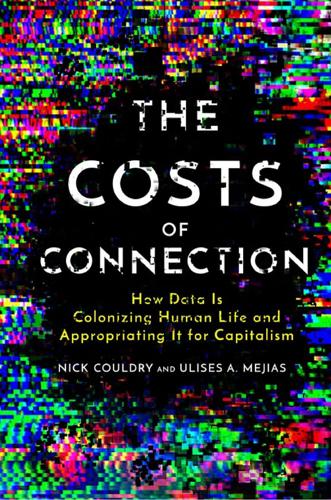
The Costs of Connection: How Data Is Colonizing Human Life and Appropriating It for Capitalism
by
Nick Couldry
and
Ulises A. Mejias
Published 19 Aug 2019
In the face of this, we find, as already suggested, a surprising ally in a deeply compromised figure: the philosopher Hegel, who fascinated the critics of both capitalism and colonialism (Marx and Fanon). Hegel is known for his theory of “world-spirit,” or Geist, in terms of whose unfolding he interpreted the whole of history. One might therefore have expected Hegel to be an ally of Big Tech; it was, after all, Ray Kurzweil, now director of engineering at Google, who wrote that “the singularity will ultimately infuse the universe with spirit.”35 But Hegel was a complex philosopher and also one of the most searching investigators into the nature of human freedom. In the words of his main interpreters, Hegel saw freedom as “possible . . . only if one is also already in a certain (ultimately institutional, norm-governed) relation to others.”

The Mysterious Mr. Nakamoto: A Fifteen-Year Quest to Unmask the Secret Genius Behind Crypto
by
Benjamin Wallace
Published 18 Mar 2025
GO TO NOTE REFERENCE IN TEXT head and body of Ted Williams: Stephanie Innes, “Scottsdale cryonics facility, the home of Ted Williams’ head, hopes frozen dead people will live again,” The Arizona Republic, June 11, 2019. GO TO NOTE REFERENCE IN TEXT Marvin Minsky: “Ray Kurzweil Remembers Marvin Minsky,” Sentient Technologies channel, YouTube, April 4, 2016, WM. GO TO NOTE REFERENCE IN TEXT “network states”: Balaji Srinivasan, The Network State: How to Start a New Country (N.p.: Amazon Kindle, 2022). GO TO NOTE REFERENCE IN TEXT a “distributed,” blockchain-coordinated “city”: Danny Nelson, “Coliving Project Cabin Wants to Put Digital Nomads in Nature,” CoinDesk, May 23, 2023.
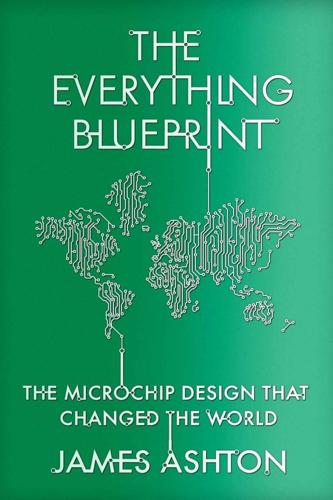
The Everything Blueprint: The Microchip Design That Changed the World
by
James Ashton
Published 11 May 2023
‘Due to the urgent need for these in the medical technology industry, representing just 1% of the total supply, we call for chip allocations to be prioritized to a level that enables the industry to meet the medical-device manufacturing demands of today,’ wrote Frans van Houten, the chief executive of Dutch electronics firm Philips, in June 2022.11 The crisis turned thoughts from chip usage today to security of supply tomorrow. Rather than merely carrying out tasks as requested, the most advanced chips powered artificial intelligence (AI) that would churn through streams of data and make decisions faster than any human. In his 2005 book The Singularity Is Near, the futurist Ray Kurzweil predicted that singularity – the point at which a computer’s abilities would overtake those of the human brain – would occur in about 2045. Experts have since predicted it could be much sooner, given indicators such as the defeat of Lee Sedol, the world champion in the ancient Chinese board game Go, by the AlphaGo computer program in March 2016.

Dawn of the New Everything: Encounters With Reality and Virtual Reality
by
Jaron Lanier
Published 21 Nov 2017
* * * Forty-fifth VR Definition: A person-centered, experiential formulation of digital technology that hopefully inspires digital economies in which the real people who are the sources of value aren’t ignored. * * * Silicon Valley continues to believe in bits too much. There’s a lot of serious talk about offering ordinary people, consumers, faux-immortality in VR. Ray Kurzweil has promoted the idea. Meanwhile, some of the captains of Silicon Valley invest in often nutty schemes to achieve physical, biological immortality for themselves. Birth of a Religion The worst offender when it comes to believing in bits too much is artificial intelligence. AI’s talking points were codified during the period chronicled here.

Innovation and Its Enemies
by
Calestous Juma
Published 20 Mar 2017
National Academy of Engineering, Grand Challenges for Engineering (Washington, DC: NAE, 2008). 3. Graeme Laurie, Shawn Harmon, and Fabiana Arzuaga, “Foresighting Futures: Law, New Technologies, and the Challenges of Regulating for Uncertainty,” Law, Innovation and Technology 4, no. 1 (2012): 1–33. 4. Ray Kurzweil, The Singularity Is Near: When Humans Transcend Biology (New York: Penguin, 2005). 5. “The overall collection of technologies bootstraps itself upward from the few to the many and from the simple to the complex. We can say that technology creates itself out of itself.” W. Brian Arthur, The Nature of Technology: What It Is and How It Evolves (New York: Free Press, 2009), 21. 6.

What to Think About Machines That Think: Today's Leading Thinkers on the Age of Machine Intelligence
by
John Brockman
Published 5 Oct 2015
Consider three possibilities: 1.We’ll solve AI (and this will finally produce machines that can think) as soon as our machines get bigger and faster. 2.We’ll solve AI when our learning algorithms get better. Or when we have even Bigger Data. 3.We’ll solve AI when we finally understand what it is that evolution did in the construction of the human brain. Ray Kurzweil and many others seem to put their weight on option (1), sufficient CPU power. But how many doublings in CPU power would be enough? Have all the doublings so far gotten us closer to true intelligence? Or just to narrow agents that can give us movie times? In option (2), Big Data and better learning algorithms have so far got us only to innovations like machine translations, which provide fast but mediocre translations piggybacking onto the prior work of human translators, without any semblance of thinking.

The Man From the Future: The Visionary Life of John Von Neumann
by
Ananyo Bhattacharya
Published 6 Oct 2021
The artificial neural networks that power today’s best-performing artificial intelligence systems, like those of Google’s DeepMind, are also a kind of parallel processor: they seem to ‘learn’ in a somewhat similar way to the human brain – altering the various weights of each artificial neuron until they can perform a particular task. This was the first time anyone had so clearly compared brains and computers. ‘Prior to von Neumann,’ says inventor and futurologist Ray Kurzweil, ‘the fields of computer science and neuroscience were two islands with no bridge between them.’97 Some believe it should have stayed that way. Psychologist Robert Epstein, for example, claims that the popularity of the ‘information processing’ (IP) metaphor – that is, viewing the brain as a kind of computer, as von Neumann suggested – has held back progress in neuroscience.

Blockchain Revolution: How the Technology Behind Bitcoin Is Changing Money, Business, and the World
by
Don Tapscott
and
Alex Tapscott
Published 9 May 2016
Interview with Gavin Andresen, June 8, 2015. 71. www3.weforum.org/docs/WEF_GAC15_Technological_Tipping_Points_report_2015.pdf, 7. 72. Interview with Constance Choi, April 10, 2015. 73. The digital revolution has moved on to “the second half of the chessboard”—a clever phrase coined by the American inventor and author Ray Kurzweil. He tells a story of the emperor of China being so delighted with the game of chess that he offered the game’s inventor any reward he desired. The inventor asked for rice. “I would like one grain of rice on the first square of the chessboard, two grains of rice on the second square, four grains of rice on the third square, and so on, all the way to the last square,” he said.

How I Became a Quant: Insights From 25 of Wall Street's Elite
by
Richard R. Lindsey
and
Barry Schachter
Published 30 Jun 2007
JWPR007-Lindsey May 7, 2007 16:12 David Leinweber 27 Markets are not instantaneously and perfectly efficient. Insights, and the ability to execute them rapidly in ever-faster electronic markets, will continue to be rewarded. Today, these insights come from people, using machines as tools. Some believe the machines will be able to play the game themselves.16 One is Ray Kurzweil,17 who started out making reading machines for the blind, met Stevie Wonder, and branched out into electronic keyboard instruments for all, and accumulated a great deal of investable capital in the process. The arc of Kurzweil’s view of machine intelligence is traced in the titles of books he’s written on the subject: The Age of Intelligent Machines (1992), The Age of Spiritual Machines: When Computers Transcend Human Intelligence (2001), and The Singularity Is Near: When Humans Transcend Biology (2005).
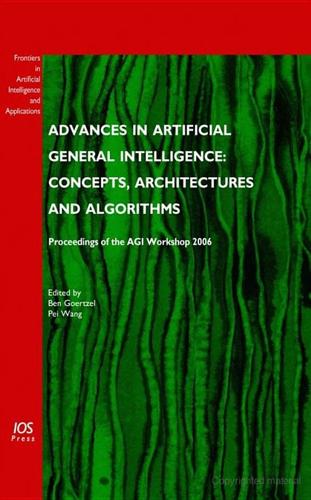
Advances in Artificial General Intelligence: Concepts, Architectures and Algorithms: Proceedings of the Agi Workshop 2006
by
Ben Goertzel
and
Pei Wang
Published 1 Jan 2007
[Hugo de Garis]: I’m no expert in brain scanners, but people tell me they are subject to Moore's Law. Talking to a neuroscientist, I asked, what’s state of the art in brain scanner work today? She said millimeters and milliseconds. So you know its true that – well it is true that its subject to Moore's Law. Then you get into the Ray Kurzweil scenario of being able to scan the brain to the point of every synapse. So you can imagine downloading all that information into a kind of future hypercomputer, and they’re coming. I talk about Avogadro machines. If you know any chemistry, you know Avogadro’s number, the number of atoms you hold in your hand, which is effectively a trillion trillion, so you have all the components and hardware needed.

Whole Earth: The Many Lives of Stewart Brand
by
John Markoff
Published 22 Mar 2022
That in turn brought in the lawyers, who pointed out that if the nonprofit Long Now Foundation became a bookie by taking a cut on the bets, the Internal Revenue Service would certainly frown on the idea. Eventually, Long Bets found its way around the legality issue by establishing a philanthropic fund to disburse the winnings. Despite its shortcomings, the project was launched after Jeff Bezos became its first backer. Mitch Kapor and Ray Kurzweil (a high-profile inventor who gained increasing recognition for his belief in the inevitability of the singularity) placed the first bet over the question of when a computer program would successfully pass the Turing test, an idea first proposed by the English mathematician Alan Turing to determine whether a computer could be programmed to exhibit such humanlike intelligence that an observer would be unable to distinguish its answers from those of an actual person.
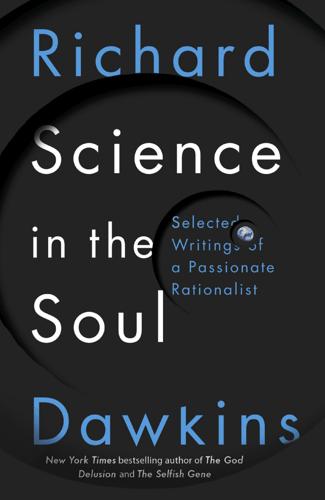
Science in the Soul: Selected Writings of a Passionate Rationalist
by
Richard Dawkins
Published 15 Mar 2017
Maybe I should start with Oklahoma State Representative Todd Thomsen who, in 2009, introduced a bill in the legislature to get me banned from lecturing at the State University on the grounds (an idiosyncratic interpretation of the role of a university, to say the least) that my ‘statements on the theory of evolution’ were ‘not representative of the thinking of the majority of the citizens of Oklahoma’. *4 He didn’t mean singularity in the sense used by the transhumanist futurist Ray Kurzweil, but was advancing a different metaphorical development of the physicists’ term. *5 See Christopher Hitchens’ The Missionary Position for substantiation of this negative judgement. V LIVING IN THE REAL WORLD READING RICHARD DAWKINS on issues of public concern, whether ethics or education, law or language, can feel like plunging into a chilly sea for a swim – from the first sharp intake of breath to increasing exhilaration to emergence with a tingling sense of well-being.

The Rational Optimist: How Prosperity Evolves
by
Matt Ridley
Published 17 May 2010
New goods, old theory, and the welfare costs of trade restrictions. Journal of Development Economics 43:5–38. p. 355 ‘the world economy will be doubling in months or even weeks’. Hanson, R. 2008. Economics of the Singularity. IEEE Spectrum (June 2008) 45:45–50. p. 355 ‘a technological “singularity”’. This notion has been explored by Vernor Vinge and Ray Kurzweil. See Kurzweil, R. 2005. The Singularity Is Near. Penguin. p. 355 ‘says Stephen Levy.’ Levy, S. 2009. Googlenomics. Wired, June 2009. p. 356 ‘says the author Clay Shirky’. Shirky, C. 2008. Here Comes Everybody. Penguin. p. 356 ‘Says Kevin Kelly’. Kelly, K. 2009. The new socialism. Wired, June 2009.

The Best Business Writing 2013
by
Dean Starkman
Published 1 Jan 2013
As the Dutch philosopher of technology Peter-Paul Verbeek puts it in his fine book Moralizing Technology, “We are as autonomous with regard to technology as we are with regard to language, oxygen, or gravity.” But still the Khannas roll dizzily along. “The Hybrid Age is the transition period between the Information Age and the moment of Singularity (when machines surpass human intelligence) that inventor Ray Kurzweil, author of The Singularity Is Near, estimates we may reach by 2040 (perhaps sooner). The Hybrid Age is a liminal phase in which we cross the threshold toward a new mode of arranging global society.” These are end times. The Hybrid Age is the preparation for the apotheosis of the Singularity—a Singularity-lite of sorts.
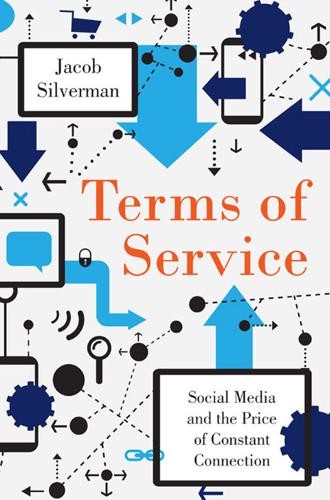
Terms of Service: Social Media and the Price of Constant Connection
by
Jacob Silverman
Published 17 Mar 2015
Misunderstanding will disappear, difference will become superfluous, and peace and freedom will break out. If this sounds a few notches below messianism, that’s because it is. Google, remember, is a company that plans to organize all of the world’s information; its ambitions could not be greater. It also employs Ray Kurzweil, the chief promoter of the Singularity, a belief that machines will soon become self-aware, or that we will somehow combine with them, or upgrade our brains to the cloud—something amazing, we just don’t know what yet. In short, this is an industry in which such far-fetched thinking is de rigueur.
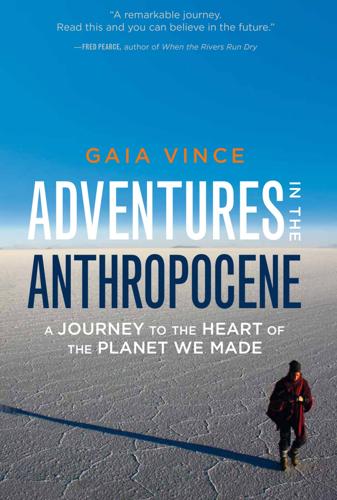
Adventures in the Anthropocene: A Journey to the Heart of the Planet We Made
by
Gaia Vince
Published 19 Oct 2014
Chapter 1: Atmosphere 1.Srivastava, L., ‘Mobile phones and the evolution of social behaviour’, Behaviour & Information Technology 24(2) (2005), 111–29. doi:10.1080 /01449290512331321910. 2.‘OKR: Poor People Using Mobile Financial Services: Observations on Customer Usage and Impact from M-PESA’, at https://openknowledge.worldbank.org/handle/10986/9492. 3.Ray Kurzweil, How to Create a Mind: The Secret of Human Thought Revealed (2012). 4.Gibson, C. C., & Long, J. D., ‘The presidential and parliamentary elections in Kenya, December 2007’, Electoral Studies 28 (2009), 497–502. 5.‘Cisco Visual Networking Index: Global Mobile Data Traffic Forecast Update, 2012–2017’, at www.cisco.com/en/US/solutions/collateral/ns341/ns525/ns537/ns705/ns827/white_paper_c11-520862.html. 6.

Your Computer Is on Fire
by
Thomas S. Mullaney
,
Benjamin Peters
,
Mar Hicks
and
Kavita Philip
Published 9 Mar 2021
Nathan Ensmenger, The Computer Boys Take Over: Computers, Programmers, and the Politics of Technical Expertise (Cambridge, MA: MIT Press, 2010). 40. Frances Cairncross, The Death of Distance: How the Communications Revolution Is Changing Our Lives (Boston: Harvard Business Review Press, 2001); Thomas L. Friedman, The World Is Flat: A Brief History of the Twenty-First Century (New York: Farrar, Straus and Giroux, 2006); Ray Kurzweil, The Singularity Is Near: When Humans Transcend Biology (New York: Viking, 2016); John Mark Newman, “The Myth of Free,” George Washington Law Review 86, no. 2 (October 2016), 513–586. 41. James Glanz, “The Cloud Factories: Data Barns in a Farm Town, Gobbling Power and Flexing Muscle,” New York Times (September 2012). 42.
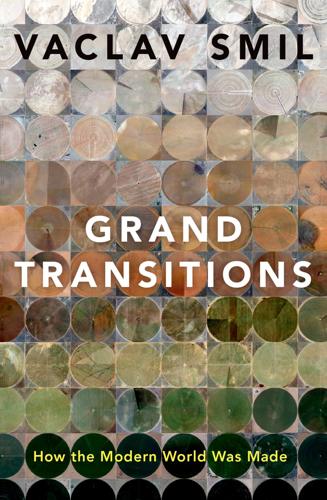
Grand Transitions: How the Modern World Was Made
by
Vaclav Smil
Published 2 Mar 2021
These well-established convictions about accelerating growth got a powerful boost from the development of electronic capabilities that, we are promised, will soon have societies that will be governed by artificial intelligence and whose economic growth will be decoupled from rising needs for energy and materials. These claims belong to the second, and truly unrestrained, category of inevitably escalating progress. In this world of never-ending advances there is no room for asymptotes and limits. This attitude has been carried most prominently to its extremes by Ray Kurzweil and, more recently, by Geoffrey West (2017) and Yuval Harari (2018). In extreme interpretation this would entail far more than continuous and vigorous growth: it would lead us to unimaginably rewarding futures: So we won’t experience 100 years of progress in the 21st century—it will be more like 20,000 years of progress (at today’s rate). . . .

MacroWikinomics: Rebooting Business and the World
by
Don Tapscott
and
Anthony D. Williams
Published 28 Sep 2010
Rather than rely on a handful of anonymous referees, a self-organized community of participants can vet results continuously. This, in turn, will allow new knowledge to flow more quickly into practical uses and enterprises. Binfield even goes so far as to suggest that open access is underpinning the kind of exponential advances that will trigger the singularity, Ray Kurzweil’s theory that human civilization will soon be superseded by advanced forms of artificial intelligence and a new race of cybernetic beings. “Open access will drive exponential leaps in scientific understanding,” he says. Time will tell whether Kurzweil’s singularity plays out as he predicts. But one thing seems certain.

The 4-Hour Body: An Uncommon Guide to Rapid Fat-Loss, Incredible Sex, and Becoming Superhuman
by
Timothy Ferriss
Published 1 Dec 2010
American Red Cross (www.redcrossblood.org/make-donation) Bonfils Blood Center (www.fourhourbody.com/bonfils) National Blood Service (For people in England and Wales: www.blood.co.uk) Alcor (www.alcor.org) Perhaps you’d like to store your body in ice-free cryosuspension at the first sign of terminal illness, just in case technology catches up? There’s nowhere better than Alcor in Scottsdale, Arizona, where gems such as Ted Williams’s head are allegedly stored. Transcend: Nine Steps to Living Well Forever by Ray Kurzweil (www.fourhourbody.com/transcend) Kurzweil, called the “rightful heir to Thomas Edison” by Inc. magazine, proposes that those interested in “radical life extension” should make it their immediate goal to live through the next 20 or so years, in order to see advances like DNA reprogramming and submicroscopic, cell-repairing robots.

Artificial Intelligence: A Modern Approach
by
Stuart Russell
and
Peter Norvig
Published 14 Jul 2019
Good’s “intelligence explosion” has also been called the technological singularity by mathematics professor and science fiction author Vernor Vinge, who wrote in 1993: “Within thirty years, we will have the technological means to create superhuman intelligence. Shortly after, the human era will be ended.” In 2017, inventor and futurist Ray Kurzweil predicted the singularity would appear by 2045, which means it got 2 years closer in 24 years. (At that rate, only 336 years to go!) Vinge and Kurzweil correctly note that technological progress on many measures is growing exponentially at present. It is, however, quite a leap to extrapolate all the way from the rapidly decreasing cost of computation to a singularity.
…
As yet, we don’t know how many of the big problems are like mathematics and how many are like the Middle East. While some people fear the singularity, others relish it. The transhumanism social movement looks forward to a future in which humans are merged with—or replaced by—robotic and biotech inventions. Ray Kurzweil writes in The Singularity is Near (2005): The Singularity will allow us to transcend these limitations of our biological bodies and brain. We will gain power over our fates. ... We will be able to live as long as we want ... We will fully understand human thinking and will vastly extend and expand its reach.
…
Omohundro (2008) describes the Basic AI Drives and concludes, “Social structures which cause individuals to bear the cost of their negative externalities would go a long way toward ensuring a stable and positive future.” Elinor Ostrom’s Governing the Commons (1990) describes practices for dealing with externalities by traditional cultures. Ostrom has also applied this approach to the idea of knowledge as a commons (Hess and Ostrom, 2007). Ray Kurzweil (2005) proclaimed The Singularity is Near, and a decade later Murray Shanahan (2015) gave an update on the topic. Microsoft cofounder Paul Allen countered with The Singularity isn’t Near (2011). He didn’t dispute the possibility of ultraintelligent machines; he just thought it would take more than a century to get there.

Thank You for Being Late: An Optimist's Guide to Thriving in the Age of Accelerations
by
Thomas L. Friedman
Published 22 Nov 2016
The models underlying society at every level, which are largely based on a linear model of change, are going to have to be redefined. Because of the explosive power of exponential growth, the twenty-first century will be equivalent to 20,000 years of progress at today’s rate of progress; organizations have to be able to redefine themselves at a faster and faster pace. —Ray Kurzweil, director of engineering at Google My other vehicle is unmanned. —Bumper sticker on a car in Silicon Valley Now that we have defined this age of accelerations, two questions come to mind—one primal, one intellectual. The primal one is this: Are things just getting too damned fast? The intellectual one is: Since the technological forces driving this change in the pace of change are not likely to slow down, how do we adapt?

Extreme Money: Masters of the Universe and the Cult of Risk
by
Satyajit Das
Published 14 Oct 2011
In 2008 Warren Buffett, the CEO of Berkshire Hathaway, bet $1 million with Protégé Partners, a New York fund of hedge funds, that even a rigorously selected portfolio of hedge funds would not beat the return on the market over 10 years. Buffett argued that large fees mean that hedge funds have to earn substantially greater returns than the S&P 500 index to match let alone beat its performance.32 The Buffet bet paralleled a $20,000 wager between Lotus founder Mitchell Kapor and futurist Ray Kurzweil that by 2029 no computer or machine intelligence will pass the Turing Test, where a computer successfully impersonates a human being. In 2010, Stanley Druckenmiller, who had been one of the traders at Soros’ Quantum Fund that broke the pound, announced that he was closing his fund Duquesne Capital Management.

Free Speech: Ten Principles for a Connected World
by
Timothy Garton Ash
Published 23 May 2016
Whether an ill-advised remark was made this morning or 20 years ago, if it comes up in an online search it is still, in some important and novel sense, part of the here and now. Only with the greatest difficulty can stuff be entirely removed, the published unpublished. One further technological possibility demands a mention: that of computers achieving a level of artificial intelligence at which they may be judged themselves to speak. While cyberutopians join Ray Kurzweil in envisaging the glorious moment when artificial and human intelligence merge into one transformative ‘singularity’, cyberdystopians fear machine intelligence first overtaking and then taking over humans—like the mesmerically voiced computer HAL in Stanley Kubrick’s ‘2001: A Space Odyssey’, but this time with HAL coming out on top.30 We are not there yet, even if the hypnotic lady speaking from the GPS in your car adjusts her instructions as you change your route, and your handheld box, using software such as Apple’s Siri, can respond to your spoken requests exploiting all the information she’s got on you.

Facebook: The Inside Story
by
Steven Levy
Published 25 Feb 2020
His email signature at Napster was “specialization is for insects,” and he was indeed diligent in defying speciation. His website later boasted: A girl named Nina once remarked of me, “I can’t tell if you’re animal or machine.” This would have hurt, if I were human. Luckily I’m a chinese [sic] hamster that has been fitted with an experimental math co-processor wetwired into my brain by Ray Kurzweil. I also have an empathy chip. “His brain doesn’t work like anyone else’s,” Parker’s fiancée, now his wife, once told me. “He has five thoughts for every sentence.” None of those thoughts could save Napster. Even though the company eventually struck a deal with the media giant Bertelsmann, music executives and investors never forgot its association with copyright infringement.

Elon Musk
by
Walter Isaacson
Published 11 Sep 2023
At Caltech, then at Berkeley, he developed what he called “neural dust,” tiny implants that could be put in the brain and send out signals. Musk also recruited a bright-eyed and sharp-minded technology investor named Shivon Zilis. As a student growing up near Toronto, she starred at hockey, but she also became a tech geek after reading Ray Kurzweil’s 1999 book, The Age of Spiritual Machines: When Computers Exceed Human Intelligence. After studying at Yale, she worked at a few startup incubators helping new AI ventures, and she became a part-time consultant at OpenAI. When Musk founded Neuralink, he took her out for coffee and asked her to join.

Rationality: From AI to Zombies
by
Eliezer Yudkowsky
Published 11 Mar 2015
I’m not interested in supporting an organization that doesn’t develop code” → OpenCog → nothing changes. “Eliezer Yudkowsky lacks academic credentials” → Professor Ben Goertzel installed as Director of Research → nothing changes. The one thing that actually has seemed to raise credibility, is famous people associating with the organization, like Peter Thiel funding us, or Ray Kurzweil on the Board. This might be an important thing for young businesses and new-minted consultants to keep in mind—that what your failed prospects tell you is the reason for rejection, may not make the real difference; and you should ponder that carefully before spending huge efforts. If the venture capitalist says “If only your sales were growing a little faster!
…
The term “technological singularity” is sometimes used in place of “intelligence explosion;” until January 2013, MIRI was named “the Singularity Institute for Artificial Intelligence” and hosted an annual Singularity Summit. Since then, Yudkowsky has come to favor I.J. Good’s older term, “intelligence explosion,” to help distinguish his views from other futurist predictions, such as Ray Kurzweil’s exponential technological progress thesis.2 Technologies like smarter-than-human AI seem likely to result in large societal upheavals, for the better or for the worse. Yudkowsky coined the term “Friendly AI theory” to refer to research into techniques for aligning an AGI’s preferences with the preferences of humans.

Global Catastrophic Risks
by
Nick Bostrom
and
Milan M. Cirkovic
Published 2 Jul 2008
Millennia/ tendencies in responses to apocalyptic threats 79 4.5 Contemporary techno-millennialism 4. 5 . 1 The s i n gu l a rity a n d tech n o - m i llen n ia l i s m Joel Garreau's (2006) recent book on the psychoculture of accelerating change, Radical Evolution: The Promise and Peril of Enhancing Our Minds, Our Bodies - and What It Means to Be Human, is structured in three parts: Heaven, Hell and Prevail. In the H eaven scenario he focuses on the predictions of inventor Ray Kurzweil, summarized in his 2005 book, The Singularity Is Near. The idea of a techno-millennial ' Singularity' was coined in a 1993 paper by mathematician and science fiction author Vernor Vinge. In physics 'singularities' are the centres of black holes, within which we cannot predict how physical laws will work.

Enlightenment Now: The Case for Reason, Science, Humanism, and Progress
by
Steven Pinker
Published 13 Feb 2018
A number of Silicon Valley visionaries are trying to bring that world closer.19 They have funded research institutes which aim not to chip away at mortality one disease at a time but to reverse-engineer the aging process itself and upgrade our cellular hardware to a version without that bug. The result, they hope, will be an increase in the human life span of fifty, a hundred, even a thousand years. In his 2006 bestseller The Singularity Is Near, the inventor Ray Kurzweil forecasts that those of us who make it to 2045 will live forever, thanks to advances in genetics, nanotechnology (such as nanobots that will course through our bloodstream and repair our bodies from the inside), and artificial intelligence, which will not just figure out how to do all this but recursively improve its own intelligence without limit.

Growth: From Microorganisms to Megacities
by
Vaclav Smil
Published 23 Sep 2019
And this is one of the most consequential undesirable consequences of this information flood: time spent per adult user per day with digital media doubled between 2008 and 2015 to 5.5 hours (eMarketer 2017), creating new life forms of screen zombies. But the rapid diffusion of electronics and software are trivial matters compared to the expected ultimate achievements of accelerated growth—and nobody has expressed them more expansively than Ray Kurzweil, since 2012 the director of engineering at Google and long before that the inventor of such electronic devices as the charged-couple flat-bed scanner, the first commercial text-to-speech synthesizer, and the first omnifont optical character recognition. In 2001 he formulated his law of accelerating returns (Kurzweil 2001, 1): An analysis of the history of technology shows that technological change is exponential, contrary to the common-sense “intuitive linear” view.